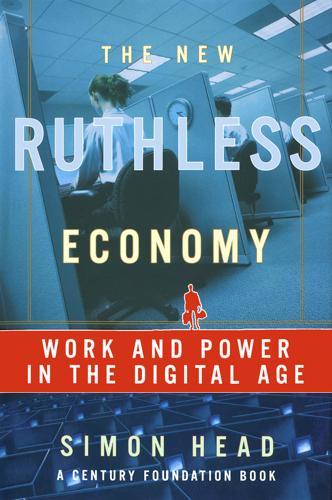
The New Ruthless Economy: Work & Power in the Digital Age
by
Simon Head
Published 14 Aug 2003
At the Bethlehem Steel Company, where a fairly full-blooded version of the Taylor system was put into effect between 1899 and 1902, even Taylor's close collaborator Henry Gantt described its operation as overly "elaborate and autocratic."19 From 1910 onward resistance to scientific management increasingly took the form of strikes. David Montgomery has written of a "Great Fear" of scientific management that seized the metal crafts from 1910 onward, comparable to the mass anxiety of the French peasants at the outbreak of the French Revolution in 1789.20 While the resistance of the metal crafts to scientific management grew from 1910, the ensuing years, paradoxically, were also the years of scientific management's greatest success. In these years craft workers were not so much defeated by scientific management as bypassed by it. In the century's second decade the practice of scientific management n 28 THE NEW RUTHLESS ECONOMY broke out of the confines of Taylor's machining world so that by the early 1920s, in Alfred Chandler's words, "the practice of systematic and scientific management had become standard for the management of the processes of mass production in industries using increasingly complex technologies."21 The operative words here are "mass production," because it was the application of scientific management to these fast-expanding industries that freed them from Taylor's obsession with the craft machinist, also making obsolete the over-elaborate structures of control that Taylor had developed specifically to ensnare the machinist.
…
Taylor and the Rise of Scientific Management (Madison, Wise., 1980), p. 174. 12. Frederick Winslow Taylor, Principles of Scientific Management (New York, 1911; paperback ed. 1967), pp. 48-19. 13. Frederick Winslow Taylor, "The Art of Cutting Metals," in Scientific Management, A Collection of the More Significant Articles Describing the Taylor System of Management (Cambridge, Mass., 1914), p. 245. 14. Ibid., p. 252. 15. Ibid., p. 262. 16. Ibid., p. 263. 17. Taylor, Shop Management, p. 113. 18. Ibid., p. 102. 19. Nelson, Frederick W. Taylor and the Rise of Scientific Management^ p. 85. 20. David Montgomery, Fall of the House of Labor (New York, 1987), p. 247. 21.
…
We will therefore begin by looking at the rise of mass production and scientific management during their formative century, a period that began as long ago as the 1820s and ended in the 1920s, with the early use of "flexible mass production" by General Motors. This is overwhelmingly a history of U.S. manufacturing, since the origins of mass production and scientific management are to be found in the machine shops and along the assembly lines of American manufacturing. We will then move forward and trace the influence of mass production and scientific management in our own times. Since both practices have their origins in manufacturing, one of the best ways to trace their contemporary influence is to look at a leading manufacturing industry whose history has been entwined with the histories of scientific management and mass production.

Arriving Today: From Factory to Front Door -- Why Everything Has Changed About How and What We Buy
by
Christopher Mims
Published 13 Sep 2021
Mass production and interchangeable parts made these devices widely available and also eventually drove universal adoption of the system of scientific management. In later years, scientific management would come to be so closely identified with the stopwatch that men in suits skulking about factory floors, stopwatches and notebooks in hand, were treated with open hostility by some workers. In his Principles of Scientific Management, Taylor sought to turn his ideas into stories that were accessible if not strictly true, in a sort of proto–Malcolm Gladwellian effort to market his ideas. In what he made the founding myth of scientific management, he told a probably apocryphal tale of a laborer named Schmidt, whose job it was to load pig iron into a cart, and whom he supposedly convinced to work three times as hard for about 40 percent more pay.
…
No less a personage than future supreme court justice Louis Brandeis made Taylor’s ideas famous in 1910 by employing them in a pivotal case argued before the Interstate Commerce Commission. In 1914, Lenin wrote that scientific management was how capitalism extracted the most from its beleaguered subjects; in 1918, he reversed himself and said scientific management would be essential to building a functional Soviet state. Scholars of Taylor have argued that the French, who adopted his ideas even faster than industrialists in his home country, could not have held the Kaiser at bay in World War I without him. Even one of his harshest critics, management theorist Peter Drucker, credited Taylor and scientific management with winning the Second World War. His ideas were debated in the halls of Congress in 1912 and then banned from use in U.S. government armories.
…
“This method is un-American”: Drury, Scientific Management. Daniel Nelson wrote: Daniel Nelson, Frederick W. Taylor and the Rise of Scientific Management (Madison: University of Wisconsin Press, 1980). “multiple discovery”: William F. Ogburn and Dorothy Thomas, “Are Inventions Inevitable? A Note on Social Evolution,” Political Science Quarterly 37, no. 1 (1922): 83–98. facilities in Chicago: Boris Emmet and John E. Jeuck, Catalogues and Counters: A History of Sears, Roebuck & Company (Chicago: University of Chicago Press, 1965). “French military officers had recognized the potential of scientific management”: Nelson, Frederick W.

Behemoth: A History of the Factory and the Making of the Modern World
by
Joshua B. Freeman
Published 27 Feb 2018
His wages thus went up by roughly 60 percent, while output nearly quadrupled, a good deal for the company though also a gain, if much more modest, for the worker. At least in theory, scientific management, or Taylorism as it was sometimes called, made the struggle between workers and owners over wages no longer a zero-sum game. For this reason, in the eyes of many Progressive Era reformers, scientific management held the promise of eliminating or at least ameliorating the class conflict that had come with industrialization and the giant factory, without fundamentally restructuring society.52 The Road to 1919 In practice, at least in the short run, scientific management failed to have much effect on the growing class tensions in the steel industry and the nation.
…
In addition, at least a few Russian socialists, most importantly Lenin, knew about scientific management and thought about its implications. In his first comments about scientific management, while in exile in 1913, Lenin echoed critiques common among American and European unionists and leftists, seeing its “purpose . . . to squeeze out of the worker” more labor in the same amount of time. “Advances in the sphere of technology and science in capitalist society are but advances in the extortion of sweat.” Three years later, he plunged deeper into scientific management in preparation for writing Imperialism: The Highest Stage of Capitalism, reading a German translation of Taylor’s book Shop Management, a book on the application of the Taylor system, and an article by Frank Gilbreth on how motion studies could increase national wealth.
…
Labor compulsion, necessary during the transition to socialism, he contended, had different significance when used in the service of a workers’ state than for a capitalist enterprise (an argument that made little headway with many Soviet trade unionists).10 The dispute over scientific management was largely resolved at the Second All-Union Conference on Scientific Management, held in March 1924. The participation by top communist leaders in the extensive public debate that preceded it was a measure of the importance of the question of the use of capitalist management methods in the Soviet Union. By and large, the conference came out in support of Gastev and the wide application of scientific management, reflecting the demographic and economic circumstances of the period. The prerevolutionary and revolutionary-era skilled working class, the natural center for opposition to Taylorism, had been all but decimated by war, revolution, and civil war, with many of its survivors co-opted into leadership positions in the government and the party.

On the Move: Mobility in the Modern Western World
by
Timothy Cresswell
Published 21 May 2006
Frederick Winslow Taylor, The Principles of Scientific Management (New York: Norton, 1967), 19. Ibid., 21. Ibid., 43. Ibid., 45–46 Ibid., 59. Frederick Taylor Archives, Special Collections, Stevens College, Hoboken, New Jersey, Box 106B, Legislation, Scientific Management, Henry Knolle. Frederick Taylor Archives, Box 106B, Legislation, Scientific Management, Henry Knolle. Letter to Mr. Cooke, December 6, 1913, Frederick Taylor Archives, Box 106B, Legislation, Scientific Management, Henry Knolle. Letter to Mr. A. B. Wadleigh, December 22nd, 1913, Frederick Taylor Archives, Box 106B, Legislation, Scientific Management, Henry Knolle.
…
Braverman, Labor and Monopoly Capital, 125. 20. Mark Bahnisch, “Embodied Work, Divided Labour: Subjectivity and the Scientific Management of the Body in Frederick W. Taylor’s 1907 ‘Lecture on Management,’” Body and Society 6, no. 1 (2000): 51–68, 62. 21. Taylor, The Principles of Scientific Management, 77. 22. Ibid., 79. 23. Ibid., 117–18. 24. Marta Braun, Picturing Time: The Work of Etienne-Jules Marey (1830–1904) (Chicago, IL: University of Chicago Press, 1992), 321. 25. Bahnisch, “Embodied Work, Divided Labour: Subjectivity and the Scientific Management of the Body in Frederick W. Taylor’s 1907 ‘Lecture on Management,’” 54. 26. Ibid., 63. 27.
…
In a letter of January 5, Taylor thanks Wadleigh for his work but remarks, “There is only one sentence which I would modify, if I were you, in your report, namely: at the end of page 2 you state, ‘most men of his class are old men at his age.’ I am very sure that the Socialists and the Member RT52565_C004.indd 90 4/13/06 7:33:37 AM The Production of Mobility in the Workplace and the Home • 91 of Congress and the Trade Unionists would use this sentence to the detriment of Scientific Management. They would distort it to mean that Scientific Management made men old at 44.” Taylor suggests that he omit this sentence and obligingly has the report rewritten and sent back to Wadleigh for his signature along with fi ft y dollars for his troubles. Clearly the mobility (or immobility) of Knolle’s body had quite an impact on the history of mobilities in the workplace.
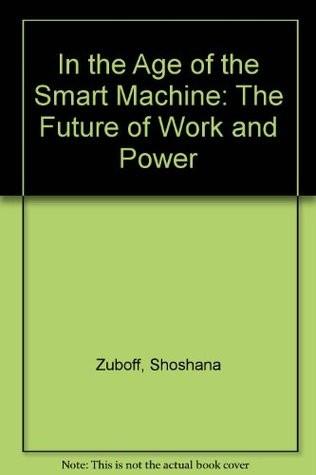
In the Age of the Smart Machine
by
Shoshana Zuboff
Published 14 Apr 1988
Forrest Cardullo, "Industrial Administration and Scientific Management," in Thompson, Scientific Management, 62. 66. Henry P. Kendall, "Unsystematized, Systematized, and Scientific Manage- ment," in Thompson, Scientific Management, 121. 67. Nelson, Managers and Workers, 74; Nelson, Frederick W. Taylor, ] 47. 68. Siegfried Giedion, Mechanization Takes Command (New York: Norton, 1969), 101. 69. One of the best examples of this dynamic is the case of the Watertown Arsenal, where a strike was ignited by the imposition of Taylorism. See: Hugh Aitken, Taylorism at the Watertown Arsenal: Scientific Management in Action, 1908- 1915 (Cambridge: Harvard University Press, 1960); see also the discussion in Daniel Rodgers, Work Ethic in Industrial America, 167; Montgomery, Workers' Con- trol in America, 115. 70.
…
Though much has been written on Taylor and the philosophy and methods of scientific management, it is worth highlighting a few central themes for three reasons. 60 First, Taylorism explicitly treats the worker's body in its two dimensions- 42 KNOWLEDGE AND COMPUTER-MEDIATED WORK as a source of effort and as a source of skill. Second, workers' responses to Taylorism reveal the ambivalence that this dual role of the body can create, as it did among the bleach plant operators or the nineteenth- century glassmakers. Third, the logic that motivated the early purvey- ors and adapters of scientific management has continued to dominate the course of automation in the twentieth-century workplace.
…
The growth of the management hierarchy depended in part upon this transfer of knowledge from the private sentience of the worker's active body to the systematic lists, flowcharts, and measurements of the planner's office. 63 In 1 91 2 a prominent naval engineer writing in the Journal of the American Society of Naval En8ineers listed the seven laws of scientific management. His first law, from which all the others followed, stated that "it is necessary in any activity to have a complete knowledge of 44 KNOWLEDGE AND COMPUTER-MEDIATED WORK what is to be done and to prepare instructions as to what is to be done before the work is started. . . the laborer has only to follow direction. He need not stop to think what his past experience in similar cases has been. ,,64 Another contemporary interpreter of scientific management took pains to outline the quality of knowledge upon which this approach was based: Instead of depending upon judgment, scientific management depends upon knowledge in its task of administration.

Fighting Traffic: The Dawn of the Motor Age in the American City
by
Peter D. Norton
Published 15 Jan 2008
Chandler, The Visible Hand: The Managerial Revolution in American Business (Belknap, 1977), 377–500; Stephen Skowronek, Building a New American State: The Expansion of National Administrative Capacities (Cambridge University Press, 1982); Morton Keller, Regulating a New Economy: Public Policy and Economic Change in America, 1900–1933 (Harvard University Press, 1990). 43. For the basic early postulations of scientific management see especially Frederick Winslow Taylor, The Principles of Scientific Management (Harper and Row, 1947) and Frank B. Gilbreth, Motion Study (D. Van Nostrand, 1911). Of the very extensive historical work on scientific management in American industry, see especially Samuel Haber, Efficiency and Uplift: Scientific Management in the Progressive Era (University of Chicago Press, 1964), Daniel Nelson, Frederick Winslow Taylor and the Rise of Scientific Management (1980), and Robert Kanigel, The One Best Way: Frederick Winslow Taylor and the Enigma of Efficiency (Viking, 1997). 44.
…
Engineers, for the most part, determined the regulations and franchise agreements that would deliver efficiency.41 Scientific Management: A Model of Social Organization In scientific management, engineers attempted to solve human problems through social organization. Frederick Taylor’s methods, and gleanings from them, found wide application in business, where they promised Streets as Public Utilities 113 industrial peace through a restoration of the union of interests between capital and labor. Engineers found the technique useful elsewhere too. Scientific management was a technosocial technique serving technosocial ends. Its practitioners called for the substitution of “system” for “ruleof-thumb methods.”42 Business led the way in the systematization of social processes, and it was business that Taylor particularly addressed.
…
Many reformers, however, used the business model of government to overcome the obstacles to efficiency they saw in a decentralized state founded upon natural rights liberalism. 48. Straetz, “Scientific Management as a Guide in Traffic Planning,” American City 32 (May 1925), 579. 49. Two of the most prominent partisans of scientific management made light of their own measurement-fixated domestic lives in an enormously popular book; see Frank and Lillian Gilbreth, Cheaper by the Dozen (Crowell, 1948). 310 Notes to Chapter 4 50. See chapter 3. 51. John Fairfield and Clay McShane have both argued for a closer connection between the management of city streets and scientific management than is accepted here. Fairfield has related Taylorism to urban transportation and street design in “The Scientific Management of Urban Space,” Journal of Urban History 20 (Feb. 1994), 179–204; see also his Mysteries of the Great City: The Politics of Urban Design, 1877– 1937 (Ohio State University Press, 1993), chapter 4 (119–157).

Make Your Own Job: How the Entrepreneurial Work Ethic Exhausted America
by
Erik Baker
Published 13 Jan 2025
As Alexander Field argues, the corporation achieved higher returns on capital by allowing managers to match supply more closely to demand, reducing excess inventory stockpiles, while also smoothing out cyclical fluctuations in output to boost overall utilization rates.22 The second key capital-stretching innovation was “scientific management,” popularized by the Philadelphia-based engineer Frederick Winslow Taylor. “Taylorism” gained traction in the steel industry in the 1890s and spread to other industrial sectors in the 1910s, with managers often implementing Taylor’s schemes in a modified or partial form. The objective of scientific management was to eliminate wasted time and effort in production processes, introducing new shop layouts, processes, and tools to streamline individual work tasks, so that more could be accomplished in a day.
…
After quietly revolutionizing production in pockets of the steel industry over three decades of relative anonymity, he had become better known in 1910, when future Supreme Court Justice Louis Brandeis argued to the Interstate Commerce Commission that the railroads could save themselves roughly a million dollars a day by implementing scientific management, and should do so rather than asking for a rate hike. The following year Taylor had published his manifesto, The Principles of Scientific Management, and employers nationwide had begun incorporating aspects of Taylor’s system into their management. Unions were apoplectic. After workers at a federal arsenal in Watertown, Massachusetts, responded by walking off the job for a week in August 1911, the House Committee on Labor summoned Taylor to Washington for hearings.1 Taylor gave a prepared statement that summarized the content of his book, and then Wilson began what turned into several days of withering questioning.
…
Taylor repeated one of his favorite talking points, that the adherents of his approach were determined that workers must get their share of the gains and, indeed, that “the introduction of scientific management has always netted the workman an increase of 30 per cent to 100 per cent in wages.”2 Wilson began to get frustrated. He protested that, even in Taylor’s own account of these success stories, “the satisfactory handling of scientific management depends on the ideal condition of mind whereby the employer is willing to concede to the workmen that which each workman is entitled to.” Did Taylor seriously expect him to believe that every employer could be cajoled into such an enlightened attitude?
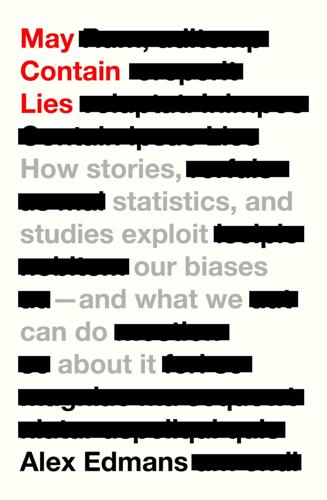
May Contain Lies: How Stories, Statistics, and Studies Exploit Our Biases—And What We Can Do About It
by
Alex Edmans
Published 13 May 2024
And employees enjoyed the fruits of their productivity – Bethlehem Steel raised Schmidt’s wages by 61% from $1.15 to $1.85 a day, allowing him to build a house. It was a win–win. Taylor entitled his next book, published in 1911, The Principles of Scientific Management.2 It explained how to use engineering techniques to break down a production process into individual tasks and scientifically analyse the one best way to carry out each task. Taylor claimed these principles were a universal route to riches that work in any setting – and so his book became a huge hit. The Principles of Scientific Management was the bestselling business book in the first half of the twentieth century, and the Academy of Management voted it the most influential management book of the entire 1900s.
…
The boundaries of science It wasn’t just manufacturing that suffered from productivity concerns in the early-twentieth-century United States; there were similar issues in education. Seeing the success that scientific management was having in factories, some thought it could also be used to transform schools.3 Its biggest proponent was John Franklin Bobbitt, a University of Chicago education professor who pioneered the idea of a school curriculum. The title of his article, ‘The elimination of waste in education’, conveys what he hoped scientific management would achieve.4 For Bobbitt, teachers were like factory labourers, and pupils were metals waiting to be cut into standard shapes and sizes.
…
These differences are so stark that they should have been obvious. But the supporters of scientific management in education failed to realize that evidence is not proof, because it may not be universal. A proof is absolute. When Archimedes showed that the area of a circle is pi times the square of its radius, he proved this not just for circles in ancient Greece in the third century BCE but also for circles across the world today. Evidence, in contrast, might only apply to the context in which it was gathered. Finding that scientific management works in pig-iron hauling, shovelling and metal cutting doesn’t mean it succeeds in schools.* The usefulness of evidence depends on its validity.

Masters of Management: How the Business Gurus and Their Ideas Have Changed the World—for Better and for Worse
by
Adrian Wooldridge
Published 29 Nov 2011
Henry Ford’s great rival, Alfred Sloan, applied them to General Motors (rather more successfully than Ford, it turned out: Sloan was a professional manager, detached from the hurly-burly of the shop floor, whereas Ford was an inveterate meddler). Many of Taylor’s disciples found their way into state and local government and tried to apply scientific management to places like the schoolroom and the operating theater.4 Congress held hearings on the subject as early as 1912, giving publicity to the new idea. Herbert Hoover, an engineer by training, tried to use scientific management to make government more efficient. Still, the apostles of scientific management did not have it all their own way. A rival group of theorists, who became known as the human-relations school, wanted to see workers involved in managerial decisions.
…
“All the companies we interviewed,” the authors note, “from Boeing to McDonald’s, were quite simply rich tapestries of anecdote, myth, and fairy tale.”17 Peters and Waterman were hardly the first people (and certainly not the last) to draw attention to the limitations of the rationalist model of management. There is a long tradition of bashing scientific management stretching back to the human-relations school of management; indeed, it is reasonable to argue that the critique of scientific management is as old as scientific management itself. In The Human Side of Enterprise, published in 1960, Douglas McGregor argued that management theory paid too much attention to “theory X,” which holds that workers are lazy and need to be driven by financial incentives, and not enough to “theory Y,” which holds that, on the contrary, workers are creative and need to be given responsibility.
…
William Richard Morris, the father of Britain’s automobile industry, was so dismayed by the difficulties of introducing the new system that he christened it “mess production.”6 C. S. Myers, a psychologist, criticized scientific management for taking a simplistic view of human motives. Elliott Jaques, another psychologist, focused on the social dynamics of group behavior and, after the Second World War, turned Tavistock Institute in London into the headquarters of humanistic management. A fair number of Europe’s leading intellectuals were caught up in the struggle between scientific and humanistic management. In Germany, avant-garde thinkers were mesmerized by the cult of scientific management. Bauhaus architects like Walter Gropius and Ludwig Hilberseimer tried to marry design with scientific management.
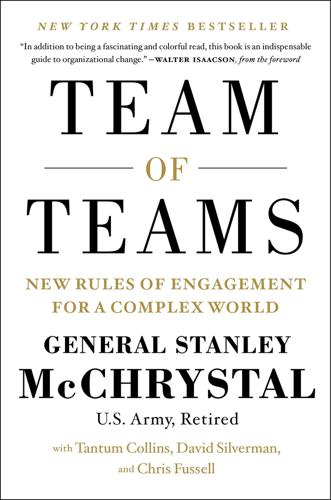
Team of Teams: New Rules of Engagement for a Complex World
by
General Stanley McChrystal
,
Tantum Collins
,
David Silverman
and
Chris Fussell
Published 11 May 2015
In 1910, when a group of powerful railroads petitioned the government for a rate hike, the Supreme Court determined that they did not need it: if the railroads just adopted Taylor’s scientific management, they could save up to one million dollars a day—more than they would have gained with the rate hike. The lawyer who represented “the consumer” in the case, Louis Brandeis (who would later be appointed to the Supreme Court), wrote, “Of all the social and economic movements with which I have been connected, none seems to me to be equal to [scientific management] in its importance and hopefulness.” Historian Glenn Porter explains, “Scientific management took on some of the trappings of a kind of secular religion; Taylor was the messiah, and his followers, who spread the word, were (and still are) commonly referred to as ‘disciples.’”
…
A Taylor disciple writing in the 1940s acknowledged that despite all the effort they poured into their crusade, he and his peers never would have “dreamed that in less than a quarter of a century the principles of scientific management would be so woven into the fabric of our industrial life that they would be accepted as a commonplace, that plants would be operating under the principles of scientific management without knowing it, plants perhaps that had never heard of Taylor.” Peter Drucker argued that Taylor, more than Karl Marx, deserves a place in the pantheon of modern intellectual thought alongside Darwin and Freud.
…
The stakes for military organizations are particularly visible and dramatic—wars are won or lost, people live or die—but civilian organizations also wrestle with the basic questions of individuality, standardization, and predictability of outcome. Individual companies and entire economies depend on business leaders’ knowing how best to manage for success. While fighting forces have been developing such protocols since Sparta, the notion of top-down, rigidly predetermined, “scientific” management of behavior in the civilian sector is largely the legacy of the nineteenth-century Quaker Frederick Winslow Taylor. His influence on the way we think about doing things—from running corporations to positioning kitchen appliances—is profound and pervasive. For our Task Force and for other twenty-first-century organizational endeavors, the legacy of Taylor’s ideas is both part of the solution and part of the problem.
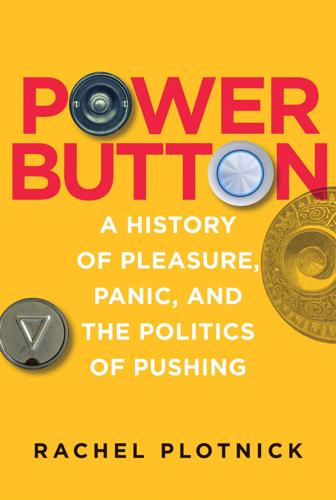
Power Button: A History of Pleasure, Panic, and the Politics of Pushing
by
Rachel Plotnick
Published 24 Sep 2018
Laborers who spent their days doing physical activity expressed disdain for button pushers because they defined “work” as physical exertion, where those who sat idly by at their desks dispensing orders—exercising nothing but their fingers—did not qualify as legitimate workers in the eyes of others.12 Rhetoric of this kind reflected the agenda of the scientific management movement, in which workers were taught to calibrate their hands with buttons that would enable them to perform “efficiently” with machines. To this end, scientists and efficiency experts rigorously documented the movements of bodies in factories and cataloged workers’ efforts in experimental laboratories to achieve optimal button pushing. Managers, too, enthusiastically invested in scientific management principles and applied electrical solutions to minimize handwork and effort, pushing buttons to enforce discipline, control, and rationalized movement of bodies.
…
Only in this way may the most be got out of life.”21 These individuals believed that honing reaction time—and making one’s interactions with communication and control mechanisms effortless—would aid the human body by enabling it to achieve its full potential.22 Well-known researchers such as Frank and Lillian Gilbreth and Frederick Winslow Taylor, the latter an advocate for a brand of scientific management known as “Taylorism,” desired this optimization to make laboring bodies, especially in factories, more efficient. In his classic book, The Principles of Scientific Management (1911), Taylor noted that university physiological departments routinely carried out experiments with electric buttons to “determine the ‘personal coefficient’ of the man tested.”23 He enthused that some individuals were “born with unusually quick powers of perception accompanied by quick responsive action.”24 To know each worker’s “personal coefficient” and assign him to his most effective post could help a manager to maximize production from his workers’ bodies and therefore improve his business.
…
See Samuel Osherson and Lorna AmaraSingham, “The Machine Metaphor in Medicine,” in Social Contexts of Health, Illness, and Patient Care, ed. Elliot G. Mishler (Cambridge: Cambridge University Press, 1981), 228–229. 23. Frederick Winslow Taylor, The Principles of Scientific Management (New York: Harper & Brothers, 1913). 24. Taylor, The Principles of Scientific Management. 25. Angelo Mosso, Fatigue, trans. M. Drummond and W. B. Drummond (New York: G. P. Putnam’s Sons, 1904); Frances Gulick Jewett, Control of Body and Mind (Boston: Ginn & Company, 1908). In the latter study, an experiment involved a boy and an electric button.

Clean Agile: Back to Basics
by
Robert C. Martin
Published 13 Oct 2019
Indeed, there was a competing methodology that had enjoyed considerable success in manufacturing and industry at large: Scientific Management. 2. Ward’s wiki, c2.com, is the original wiki—the first ever to have appeared in the internet. Long may it be served. 3. Larman, C. 2004. Agile & Iterative Development: A Manager’s Guide. Boston, MA: Addison-Wesley. Scientific Management is a top-down, command-and-control approach. Managers use scientific techniques to ascertain the best procedures for accomplishing a goal and then direct all subordinates to follow their plan to the letter. In other words, there is big up-front planning followed by careful detailed implementation. Scientific Management is probably as old as the pyramids, Stonehenge, or any of the other great works of ancient times, because it is impossible to believe that such works could have been created without it.
…
Pre-Agile (Agile before it was called “Agile”) took short reactive steps that were measured and refined in order to stagger, in a directed random walk, toward a good outcome. Scientific Management deferred action until a thorough analysis and a resulting detailed plan had been created. Pre-Agile worked well for projects that enjoyed a low cost of change and solved partially defined problems with informally specified goals. Scientific Management worked best for projects that suffered a high cost of change and solved very well-defined problems with extremely specific goals. The question was, what kinds of projects were software projects?
…
Scientific Management is probably as old as the pyramids, Stonehenge, or any of the other great works of ancient times, because it is impossible to believe that such works could have been created without it. Again, the idea of repeating a successful process is just too intuitive, and human, to be considered some kind of a revolution. Scientific Management got its name from the works of Frederick Winslow Taylor in the 1880s. Taylor formalized and commercialized the approach and made his fortune as a management consultant. The technique was wildly successful and led to massive increases in efficiency and productivity during the decades that followed.

Late Bloomers: The Power of Patience in a World Obsessed With Early Achievement
by
Rich Karlgaard
Published 15 Apr 2019
Just as Taylor had predicted, Ford paid his most productive workers twice the going rate for factory work. He said he wanted his employees to be able to afford a Ford. Taylor had let the scientific management genie out of the bottle. Taylorism spawned many new timing, bookkeeping, and accounting methods, as well as workflow charts, machine-speed slide calculators, motion studies, and assembly pacing metrics. He gave managers permission to observe, measure, analyze, and control every minute of a worker’s time on the clock. That was the core of Taylor’s scientific management, and it was hard to argue against its value. Today’s technology—including cloud computation, the Internet of Things, big data analytics, artificial intelligence, workflow apps, and robots—may seem centuries removed from Taylor and his stopwatch, but many of his ideas still dominate the business world.
…
Today’s technology—including cloud computation, the Internet of Things, big data analytics, artificial intelligence, workflow apps, and robots—may seem centuries removed from Taylor and his stopwatch, but many of his ideas still dominate the business world. Oddly enough, Taylor’s system of scientific management has also become firmly entrenched in education. A century ago American educators adopted it as the best way to deal with the large influx of immigrant children. In 1912 the publication of The Elimination of Waste in Education, by John Franklin Bobbitt, set the stage for the adoption and implementation of scientific management in schools. Bobbitt argued that schools, like businesses, should be efficient, eliminate waste, and focus on outcomes. Curricula should mold students into effective workers.
…
they’ve continued to survive—and even flourish: Annie Murphy Paul, The Cult of Personality Testing: How Personality Tests Are Leading Us to Miseducate Our Children, Mismanage Our Companies, and Misunderstand Ourselves (New York: Simon & Schuster, 2010). “In the past, man was first”: Frederick Winslow Taylor, The Principles of Scientific Management (New York: Harper, 1914). firmly entrenched in education: Maduakolam Ireh, “Scientific Management Still Endures in Education,” ERIC, June 2016, https://eric.ed.gov/?id=ED566616. See also Shawn Gude, “The Industrial Classroom,” Jacobin, April 21, 2013, http://bit.ly/2NQSOqT. “Our schools still follow”: Todd Rose, The End of Average: How We Succeed in a World That Values Sameness (New York: HarperCollins, 2015).

On the Clock: What Low-Wage Work Did to Me and How It Drives America Insane
by
Emily Guendelsberger
Published 15 Jul 2019
It started back in my hometown of Philadelphia with Frederick Taylor—father of scientific management and the most important forgotten man in US history. Frederick Winslow Taylor was born into a wealthy Philadelphia family in 1856. Expected to go to Harvard, he instead chose to go into industry by taking a job as a lowly machinist’s apprentice at Midvale Steelworks. As young Fred worked his way up to head engineer, he observed widespread soldiering among his coworkers. “The natural laziness of men is serious,” Taylor would later write in his 1911 magnum opus, The Principles of Scientific Management, “but by far the greatest evil from which both workmen and employers are suffering is the systematic soldiering which is almost universal.”
…
“The natural laziness of men is serious,” Taylor would later write in his 1911 magnum opus, The Principles of Scientific Management, “but by far the greatest evil from which both workmen and employers are suffering is the systematic soldiering which is almost universal.” He really meant “evil,” too. Taylor was an early true believer in the idea of efficiency and productivity as savior. Increases in labor productivity at factories employing his “scientific management,” he believed, would raise the wages of the workers, which he saw as the only realistic way of ending poverty and class conflict. Scientific management, or Taylorism, was a new system of eliminating all mystery from factory work, whether it was how fast workers were really capable of going or the “sorcery and black magic” methods of skilled workers. To do this, Taylor used a relatively new technology—the affordable, accurate stopwatch—to measure and analyze previously subjective tasks.
…
Dugan Closing: The Life and Death of an American Factory, Cathy N. Davidson McDonald’s: Behind the Arches, John F. Love On the history of work and management The Principles of Scientific Management, Frederick Winslow Taylor The One Best Way: Frederick Winslow Taylor and the Enigma of Efficiency, Robert Kanigel My Life and Work, Henry Ford I Invented the Modern Age: The Rise of Henry Ford, Richard Snow Taylorism Transformed: Scientific Management Theory Since 1945, Stephen P. Waring Contested Terrain: The Transformation of the Workplace in the Twentieth Century, Richard Edwards The Machine That Changed the World: The Story of Lean Production, James P.

The Happiness Industry: How the Government and Big Business Sold Us Well-Being
by
William Davies
Published 11 May 2015
As the world’s now pre-eminent scientist of management, Taylor was invited to lecture on the course and in 1911 published a synthesis of his various theories, The Principles of Scientific Management. Among businessmen, time and motion studies became all the rage, arriving in European factories in the years immediately prior to World War One. While the immediate clients for Taylor’s services were interested in maximizing their business revenue, the political appeal of scientific management was extremely broad. American progressives believed that with greater scientific insight, corporations could be harnessed for the common good.
…
American progressives believed that with greater scientific insight, corporations could be harnessed for the common good. Socialists, including Lenin, saw in Taylorism a model for how society itself could be run in an efficient manner, without reliance on markets. Taylor himself also attached a loftier social purpose to his new science, believing that scientific management would spell the end of industrial conflict, substituting ‘hearty brotherly co-operation for contention and strife’. One of his professed advantages, when he entered firms as an outsider, was that he could avoid being dragged into industrial conflicts between management and labour and maintain a politically neutral position. In workplaces that had become conflict-riven, the consultant could have a tempering effect – though of course it was never labour that had invited the consultant to intervene in the first place.
…
As Ian Curtis, the lead singer of Joy Division who hanged himself aged twenty-three, once said, ‘I used to work in a factory and I was really happy because I could daydream all day’. Labourers in a Taylorist factory brought their physical capabilities into work, to be exploited for sure, but were never expected to give anything more personal or intangible. And this is exactly why managers soon turned their backs on Taylor’s version of scientific management. Psychology gets to work In 1928, a researcher from Harvard Business School sat down with a young woman working in a telephone production plant in Cicero, Illinois, and asked her an unusual question: ‘If given three wishes, what would they be?’ The woman paused to reflect before listing her answers.
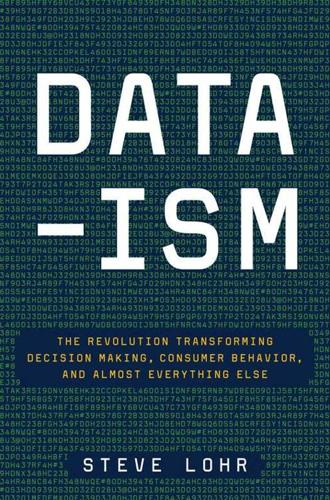
Data-Ism: The Revolution Transforming Decision Making, Consumer Behavior, and Almost Everything Else
by
Steve Lohr
Published 10 Mar 2015
Since then, the practice of managing people, corporate structure, and strategy has continuously adapted to advancing technology and changing intellectual fashions. The management of people has been a blend of elements of scientific management, which relies on incentives, control and monitoring, and humanistic management, which assumes that workers are creative and self-motivating. Managers trained in economics tend to be the scientific management camp, while industrial psychologists and organizational behavior experts tend to be in the humanistic management camp. In structure and strategy, trends embraced over the years have included conglomerates, virtual corporations, globalization, reengineering, and strategy based on technology “platforms” rather than products.
…
Nor would most of us want to. 11 THE FUTURE: DATA CAPITALISM As towering historical figures go, Frederick Winslow Taylor was deceptively slight. He stood five feet nine and weighed about 145 pounds. But the trim mechanical engineer was an influential pioneer of data-driven decision making, an early management consultant whose concept of “scientific management” was widely embraced a century ago on factory floors and well beyond. Taylor applied statistical rigor and engineering discipline to redesign work for maximum efficiency; each task was closely observed, measured, and timed. Taylor’s instruments of measurement and recording were the stopwatch, clipboard, and his own eyes.
…
The time-and-motion studies conducted by Taylor and his acolytes were the bedrock data of Taylorism. Viewed from the present, Taylorism is easy to dismiss as a dogmatic penchant for efficiency run amok. Such excesses would become satirical grist for Charlie Chaplin’s Modern Times. But in its day, scientific management was seen as a modernizing movement, a way to rationalize work to liberate the worker from the dictates of authoritarian bosses and free the economy from price-fixing corporate trusts. Taylorism was embraced by some of the leading intellectuals of the Progressive Era. In 1910, Louis Brandeis, “the People’s Lawyer” and future Supreme Court justice, wrote, “Of all the social and economic movements with which I have been connected, none seems to me to be equal to this in its importance and hopefulness.”
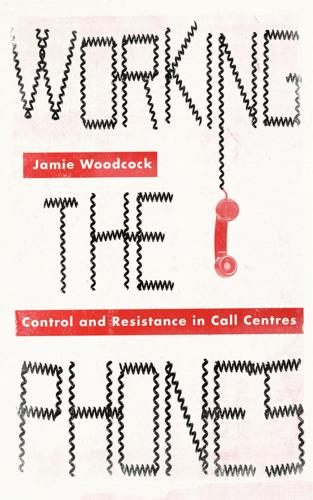
Working the Phones: Control and Resistance in Call Centres
by
Jamie Woodcock
Published 20 Nov 2016
Cleaver, Reading Capital Politically (1979), p. 66. 105. Steve Wright, Storming Heaven: Class Composition and Struggle in Italian Autonomist Marxism (London: Pluto Press, 2002), p. 35. 106. Ibid. 107. Wright, Storming Heaven (2002), p. 23. 108. Ibid., p. 54. 109. Frederick Taylor, The Principles of Scientific Management (New York: W.W. Norton, 1967), p. 36. 110. Harry Braverman, Labor and Monopoly Capital: The Degradation of Work in the Twentieth Century (London: Monthly Review Press, 1999), p. 60. 111. Quoted in Wright, Storming Heaven (2002), p. 38. 112. Quoted in Gigi Roggero, ‘Romano Alquati — Militant Researcher, Operaist, Autonomist Marxist — Has Passed Away, Age 75’, Fuckyeahmilitantresearch (2010), http://fuckyeahmilitantresearch. tumblr.com/post/502186794/romano-alquati-militant-researcheroperaist 113.
…
The analysis of the class nature of Russia was an important point of distinction between the Communist Parties and Trotskyist groupings. The theory of State Capitalism was the source of the break from the Fourth International which later spurred attempts at workers’ inquiries. 5. Braverman, Labor and Monopoly Capital (1999), p. 60. 6. Ibid., p. 82. 7. Taylor, The Principles of Scientific Management (1967), p. 39. 8. Braverman, Labor and Monopoly Capital (1999), pp. 79, 81. 9. Taylor and Bain, ‘“An Assembly Line in the Head”’ (1999), p. 102. 10. Ibid., p. 115 11. Ibid., p. 110. 12. Ibid., p. 108. 13. Ibid., p. 116. 14. Ibid., p. 109. 15. Ibid., p. 103. 16. Arlie Russell Hochschild, The Managed Heart: Commercialization of Human Feeling (Berkeley: University of California Press, 2012), p. 7. 17.
…
Hugh Dehn, ‘UK: Back to the Floor’, Management Today, 1998, www.managementtoday.co.uk/news/411264/UK-Back-floor 6. Quoted in ibid. 7. Undercover Boss (2010). 8. Toby Miller, ‘Foucault, Marx, Neoliberalism: Unveiling Undercover Boss’, in Foucault Now, edited by J. D. Faubion (Cambridge: Polity Press, 2014), p. 200. 9. Braverman, Labor and Monopoly Capital (1999), p. 63. 10. Taylor, The Principles of Scientific Management (1967), p. 36. 11. Quoted in Braverman, Labor and Monopoly Capital (1999), p. 70. 172 Notes 12. Michael is a pseudonym. His identity is kept anonymous as there is a risk of damaging his future employment prospects. 13. Michael Burawoy, The Politics of Production (London: Verso, 1985), p. 47. 14.
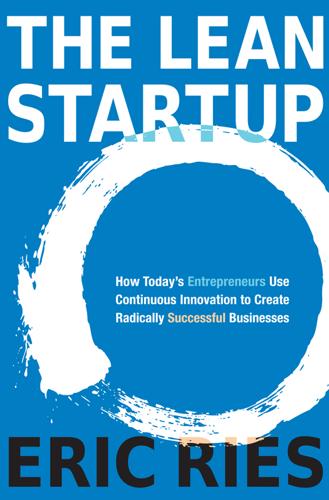
The Lean Startup: How Today’s Entrepreneurs Use Continuous Innovation to Create Radically Successful Businesses
by
Eric Ries
Published 13 Sep 2011
There is a thriving community of Lean Startup meetups around the world as well as online, and suggestions for how you can take advantage of these resources listed in the last chapter of this book, “Join the Movement.” 13 EPILOGUE: WASTE NOT This year marks the one hundredth anniversary of Frederick Winslow Taylor’s The Principles of Scientific Management, first published in 1911. The movement for scientific management changed the course of the twentieth century by making possible the tremendous prosperity that we take for granted today. Taylor effectively invented what we now consider simply management: improving the efficiency of individual workers, management by exception (focusing only on unexpectedly good or bad results), standardizing work into tasks, the task-plus-bonus system of compensation, and—above all—the idea that work can be studied and improved through conscious effort.
…
On the contrary, the first object of any good system must be that of developing first-class men; and under systematic management the best man rises to the top more certainly and more rapidly than ever before.3 Unfortunately, Taylor’s insistence that scientific management does not stand in opposition to finding and promoting the best individuals was quickly forgotten. In fact, the productivity gains to be had through the early scientific management tactics, such as time and motion study, task-plus-bonus, and especially functional foremanship (the forerunner of today’s functional departments), were so significant that subsequent generations of managers lost sight of the importance of the people who were implementing them.
…
However, Taylorism should act as a cautionary tale, and it is important to learn the lessons of history as we bring these new ideas to a more mainstream audience. Taylor is remembered for his focus on systematic practice rather than individual brilliance. Here is the full quote from The Principles of Scientific Management that includes the famous line about putting the system first: In the future it will be appreciated that our leaders must be trained right as well as born right, and that no great man can (with the old system of personal management) hope to compete with a number of ordinary men who have been properly organized so as efficiently to cooperate.

Cataloging the World: Paul Otlet and the Birth of the Information Age
by
Alex Wright
Published 6 Jun 2014
The Enlightenment ideals of scientific progress and social liberalization helped propel a widespread belief in the possibility of human advancement and moral uplift through technological innovation. Taylorist scientific management principles pointed not just toward greater economic output and organizational efficiency, but toward a new era of human potential in which wealth would be created and shared, old class lines would give way to a meritocracy of achievement, and eventually a utopian society might finally emerge. Scientific management techniques would eventually reshape not just the production of goods and services, but also the contours of human knowledge itself. As companies, governments, universities, and other institutions expanded throughout the nineteenth century, the people who ran those organizations also began producing more and more paper—not just books and journals.
…
Le Corbusier made his reputation by promoting a new, industrialized architectural style rooted in the scientific management theories of Taylor and Ford. Like Andersen, Le Corbusier had long harbored an interest in designing whole cities, having laid out an ambitious design for a 3-million-person metropolis in 1922—the Ville Contemporaine, or “Contemporary City.” At one point he even went so far as to propose demolishing most of central Paris and replacing it with a vast grid of sixty-story towers. Sympathetic to the industrialism and scientific management principles of Taylor and 179 C ATA L O G I N G T H E WO R L D Ford, Le Corbusier envisioned an entirely new kind of city, one better adapted to the exigencies of modern life.
…
The invention of electricity and the internal combustion engine accelerated the production and transportation of goods, while new communications technologies like the telegraph and the radio started to lay the foundations for a nascent global communications network. 34 T he L ibraries o f B abel These developments in turn created the conditions for new patterns of knowledge production to emerge. As industrialization took hold across England and eventually the rest of Europe, so too did a new organizational ethos. The principles of scientific management, as it was called, most famously articulated by the American mechanical engineer Frederick Winslow Taylor, began to shape the work practices of many growing industrial companies. Giving eloquent voice to the new industrial ethos, Taylor described how professional managers must learn to take a wholesystems view of their organizations, instituting tightly controlled processes to maximize productivity.
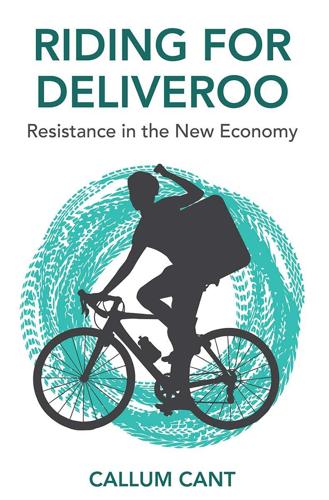
Riding for Deliveroo: Resistance in the New Economy
by
Callum Cant
Published 11 Nov 2019
Second, it needs to discipline workers to make sure their indeterminate labour-power is being applied to this labour process as intensively as possible. Management is primarily the science of that system of control. It is interested in breaking workers’ resistance in order to produce the most value possible from a given sum of labour-power. Right from its origins, in Fredrick Taylor’s writing on ‘scientific management’ in the early twentieth century, management theory reflects the obsession of capitalist managers with the question of how to force workers to work harder for longer in order to produce more. For Taylor, the main problem facing bosses was ‘soldering’ – otherwise known as workers going slow.
…
In order to do so, managers needed to understand the labour process at least as well as the workers who currently dominated it. Taylor’s thesis was that, by making management more scientific, its effectiveness could be improved.2 Harry Braverman, a Marxist intellectual, identified Taylor’s system of scientific management as having two processes at its core: ‘work intensification’ and ‘deskilling’3 – that is to say, making workers work harder, and reducing workers’ control over their own work. These two processes remain the fundamental strategies of capitalist management today. So, when we are discussing a job, we’re also discussing a specific conflict.
…
Machine learning processes could make decisions based on all this information, and those decisions could change how much money we earned. But we never knew if, when or how those decisions were being made. The human watching the app in Deliveroo HQ also presumably played some kind of role, but we had no idea about the specifics. When Taylor first laid out the goal of scientific management in 1911, he aimed to give managers the information required to minutely control the labour process and combat workers’ time-wasting and resistance.24 But, at Deliveroo, we didn’t even have this knowledge in the first place: we started from a position of ignorance, whilst the app collected data in huge quantities.

Reinventing Capitalism in the Age of Big Data
by
Viktor Mayer-Schönberger
and
Thomas Ramge
Published 27 Feb 2018
He argued that comprehensive information flows and processing were essential to a new brand of organizational leadership he called “scientific management,” based on reporting, accounting, and, most of all, calculating comparisons. This regimented system, Taylor insisted, could and should be taught to every budding manager. In the throes of mass production, he found an audience eager to codify paths of control leading to efficiency. His ideas were used as the basis of the curriculum for the first master’s degree in business administration offered by the Harvard Business School. New technologies eased the collection and communication of the vast amount of data required by Taylor’s scientific management. A generation of executives eagerly enlisted the help of the punch-card tabulator invented by Herman Hollerith, whose company later became IBM.
…
White, “Amazon’s Use of ‘Stack’ Ranking for Workers May Backfire, Experts Say,” NBC News, August 17, 2015, http://www.nbcnews.com/business/business-news/amazons-use-stack-ranking-workers-may-backfire-experts-say-n411306. after the scientific management principles: “Digital Taylorism,” Economist, September 12, 2015, http://www.economist.com/news/business/21664190-modern-version-scientific-management-threatens-dehumanise-workplace-digital. The firm can be many things: See, e.g., John Micklethwait and Adrian Wooldridge, The Company: A Short History of a Revolutionary Idea (New York: Modern Library, 2003). widespread adoption of Arabic numerals: Alfred W.
…
When the Times exposé appeared, it struck a nerve, garnering 5,858 comments online, the most in the website’s history up to that point. As the Economist noted, many of the commenters “claimed that their employers had adopted similar policies. Far from being an outlier, it would seem that Amazon is the embodiment of a new trend”—what the magazine branded “digital Taylorism,” after the scientific management principles of Frederick Winslow Taylor. It seemed that new technologies were ushering in a supercharged version of command-and-control, fueled by data about employees, processes, products, services, and customers. But why would a celebrated marketplace innovator like Jeff Bezos embrace the centralized structures, rules, and behaviors of the firm to manage the vast majority of his business empire rather than developing technology to capture the decentralized magic of the market?

The Radical Fund: How a Band of Visionaries and a Million Dollars Upended America
by
John Fabian Witt
Published 14 Oct 2025
Congress’s Commission of Industrial Relations heard from workers that they objected to “being reduced to a scientific formula.”39 The new unionists adopted a different posture. In scientific management, they saw a tool labor might use to exercise power in the modern economy. Rationalization would smash the arbitrary autocracy of the foreman at the traditional industrial firm. Even more, rational planning might become the foundation of a dramatically more democratic form of economic life—one in which labor’s expertise would have a role to play.40 Crucially, here was a path to industrial democracy that might satisfy unions’ fractious constituencies, too. As the social scientist, Hillman ally, and Fund insider Stuart Chase observed, scientifically managed mass production held out the prospect of increased productivity and increased worker pay to match.
…
The security of being represented would assure workers that sharing labor-saving knowledge would not cost them their jobs.42 Organizers at Hillman’s ACW similarly proposed that scientific management could bring “increased wages” and “shorter hours” while giving workers a “voice and vote in the shop.” The American Fund’s Clinton Golden endorsed the same idea and suggested that identifying waste in capitalism’s allocation of industrial resources would help gather support for proposals to nationalize industry.43 * * * Hillman’s new unionism presented what historian David Montgomery would later call the “paradoxical marriage of progressive unionism and scientific management.” Skeptics have long charged that the managerial revolution of a Taylor or a Beyer was a poisoned chalice for labor—that it displaced workers from control over the conditions of their work.
…
“sabots” & “only effective method”: Walker C. Smith, Sabotage: Its History, Philosophy, and Function (IWW, 1913), in Direct Action & Sabotage: Three Classic IWW Pamphlets from the 1910s, ed. Salvatore Salerno (Charles H. Kerr, 2014), at 57, 60, 64. resistance to scientific management: Mike Davis, “The Stop Watch and the Wooden Shoe: Scientific Management and the Industrial Workers of the World,” in Workers’ Struggles, Past and Present: A “Radical America” Reader, ed. James Green (Temple University Press, 1983), 83–100. 62. “justify sabotage”… machine belt: EGF, Sabotage: The Conscious Withdrawal of the Workers’ Industrial Efficiency (I.W.W.
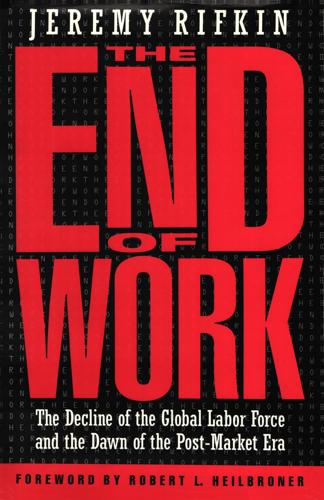
The End of Work
by
Jeremy Rifkin
Published 28 Dec 1994
"Efficiency" came to mean the maximum yield that could be produced in the shortest time, expending the least amount of energy, labor, and capital in the process. The man most responsible for popularizing the notion of efficiency 50 THE TWO F ACE S 0 F TEe H N 0 LOG Y in the economic process was Frederick W Taylor. His principles of "scientific management," published in 1895, became the standard reference for organizing the workplace-and were soon used to organize much of the rest of society. Economic historian Daniel Bell says of him, "If any social upheaval can ever be attributed to one man, the logic of efficiency as a mode of life is due to Taylor."17 Using a stopwatch, Taylor divided each worker's task into the smallest visibly identifiable operational components, then measured each to ascertain the best time attainable under optimal performance conditions.
…
His studies calibrated worker performance to fractions of a second. By calculating the mean times and best times achieved in each component of the worker's job, Taylor could make recommendations on how to change the most minute aspects of performance in order to save precious seconds and even milliseconds. Scientific management, says Harry Braverman, "is the organized study of work, the analysis of work into its simplest elements and the systematic improvement of the worker's performance of each of these elements."18 Efficiency came to dominate the workplace and the life of modern society, in large part, because of its adaptability to both the machine and human culture.
…
It was thought by many that by becoming more efficient, they could shorten the amount of personal labor required to perform a job and thereby gain more wealth and free time. Efficiency societies were established in offices, factories, schools, and civic institutions across the country. Reformers urged a more rational approach to the workings of the market, predicated on the principles of scientific management Economists of the day began to think of the corporate mission as much in terms of advancing technolOgical progress and the goals of efficiency as in making profits for the stockholders. Years later, John Kenneth Visions of Techno-Paradise 51 Galbraith would crystallize the new bent toward technological proficiency and productive efficiency in his book The New Industrial State.
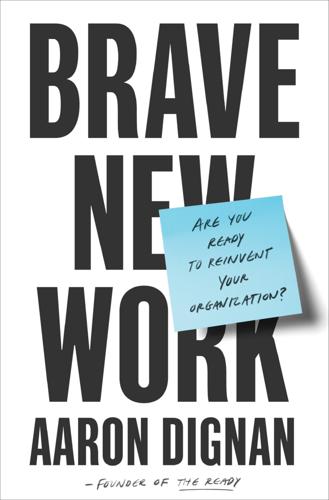
Brave New Work: Are You Ready to Reinvent Your Organization?
by
Aaron Dignan
Published 1 Feb 2019
During a very public legal battle between the railroads and the Interstate Commerce Commission, future Supreme Court justice Louis D. Brandeis argued vigorously that the railroads could save more money by implementing the remarkable methods of “Scientific Management” (a term he coined to describe Taylor’s work) than by winning their case. Suddenly, efficiency was on everyone’s mind. On the heels of this newfound celebrity, Taylor published Principles of Scientific Management, which would become one of the bestselling business books of the decade. In it he offered four principles that would become the duties of a new class of managers: First. They develop a science for each element of a man’s work, which replaces the old rule-of-thumb method.
…
Then you need to get a work order, and a purchase order must be processed by the Procurement Engineering Group, who will then contact the vendor to ensure no changes have been made and the products meet regulatory requirements. And 180 days later, if you’re lucky, you’ll get your toilet paper. We have a name for this phenomenon: bureaucracy. For most people, the term evokes a feeling of soul-crushing inefficiency and boredom. In contrast to Scientific Management’s “one best way,” it would seem that the aim of bureaucracy is to find the one worst way—that which wastes the most time and involves the most people and steps. The origin of the word itself is the unlikely pairing of bureau (French for desk) and -kratia (Greek for power or rule). So, in a very real sense, it means management by desk, which sounds about right.
…
The status quo bias adds to the illusion that the current way is the only way. We strive for improvements—better bosses! simpler budgets! fewer layers!—but they’re inherently incremental. We tweak the recipe without ever questioning whether we should make an entirely different dish. But incremental improvement can be a trap. Scientific Management reveals only the best way to do what we’re already doing. True innovation often requires a departure from the safety of the status quo. Astro Teller, captain of moonshots at Alphabet’s X (formerly Google X), puts it this way: “It’s often easier to make something 10 times better than it is to make it 10 percent better. . . .
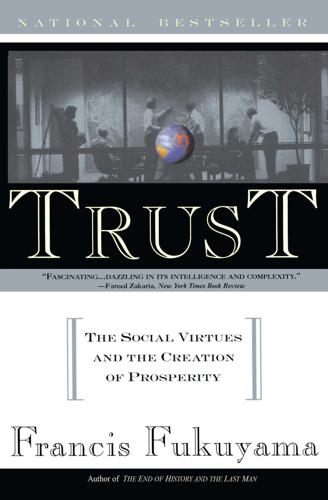
Trust: The Social Virtue and the Creation of Prosperity
by
Francis Fukuyama
Published 1 Jan 1995
For him, the average worker was comparable to the “economic man” of classical economics: a passive, rational, and isolated individual who would respond primarily to the stimulus of narrow self-interest.14 The goal of scientific management was to structure the workplace in such a way that the only quality required of a worker was obedience. All of the worker’s activities, down to the very motions by which he moved his arms and legs on the production line, were dictated by detailed rules prescribed by the production engineers. All other human attributes—creativity, initiative, innovativeness, and the like—were the province of a specialist somewhere else in the enterprise’s organization.15 Taylorism, as scientific management came to be known, epitomized the carrying of the low-trust, rule-based factory system to its logical conclusion.
…
Martin’s Press, 1982), pp. 28-32. 11Charles Sabel, Work and Politics (Cambridge: Cambridge University Press, 1981), pp. 31-33. 12Joan Campbell, Joy in Work, German Work: The National Debate, 1800-1945 (Princeton: Princeton University Press, 1989), pp. 131-132; Hans-Joachim Braun, The German Economy in the Twentieth Century (London: Routledge, 1990), p. 50. 13Frederick Winslow Taylor, The Principles of Scientific Management (New York: Harper Brothers, 1911). Taylor gave his first lecture on scientific management in 1895. See Alfred D. Chandler, The Visible Hand: The Managerial Revolution in American Business (Cambridge: Harvard University Press, 1977), p. 275. 14For an overview of Taylor and his later critics, see Hirszowicz (1982), p. 53. 15Fox (1974), p. 23. 16For a description of labor-management relations in the wake of the spread of mass production, see William Lazonick, Competitive Advantage on the Shop Floor (Cambridge: Harvard University Press, 1990), pp. 270-280. 17Alvin W.
…
Their view that bigger necessarily meant better ultimately left the Soviet Union, at the end of the communist period, with a horrendously overconcentrated and inefficient industrial infrastructure—a Fordism on steroids in a period when the Fordist model had ceased to be relevant. The new form of mass production associated with Henry Ford also had its own ideologist: Frederick W. Taylor, whose book The Principles of Scientific Management came to be regarded as the bible for the new industrial age.13 Taylor, an industrial engineer, was one of the first proponents of time-and-motion studies that sought to maximize labor efficiency on the factory floor. He tried to codify the “laws” of mass production by recommending a very high degree of specialization that deliberately avoided the need for individual assembly line workers to demonstrate initiative, judgment, or even skill.
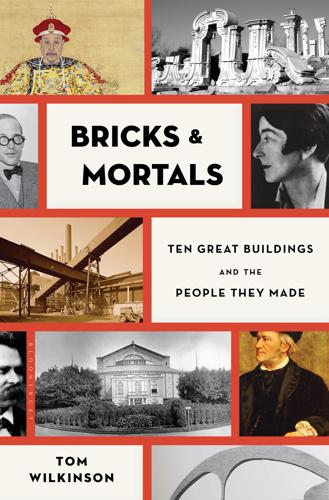
Bricks & Mortals: Ten Great Buildings and the People They Made
by
Tom Wilkinson
Published 21 Jul 2014
Ford claimed never to have read the work of Taylor (credibly enough – he wasn’t keen on books), but although there were differences in their approaches they shared the view that production could be optimised by dissecting the work process. The division of labour had been a central feature of the Industrial Revolution since the eighteenth century, but scientific management – as it became known – took this to its ultimate limit. By reducing the motion of the body to its smallest constituent parts, all ‘useless’ or ‘unproductive’ actions could be eliminated, thus speeding up production and maximising profit. Unlike earlier phases of manufacturing, which split the production process between workers, scientific management divided the workers themselves: each individual was no longer a whole, but a complex of motions that could be taken apart and put back together like components of a machine.
…
However, apart from the adoption of the ‘purity’ of Kahn’s industrial architecture for the external appearance of modernist houses, there was a deeper Fordist transformation of domestic life itself: the revolution that Ford had unleashed could not be escaped by a retreat into historical fantasy. In fact American theorists had been applying the ideas of scientific management to the home for years before Ford. The pioneering writer Catharine Beecher had first advocated a rational reorganisation of the kitchen in 1842, so one could argue, turning the conventional narrative on its head, that scientific management actually began in the home rather than the workplace. Chicken-and-egg questions aside, these attempts to reform the home and the factory demonstrate that traditional boundaries between labour and rest, home and workplace were blurring.
…
From workplace to bedroom – from ore to whore, one might say – the system demanded control over every aspect of the production process, now expanded to incorporate consumption; his workers had to be able to buy his cars, or the project would fall flat. The home had become part of the factory and was – just as much as a glass or tyre plant, a steel press or an iron foundry – a site of production, reconceived as a total process, and thus also subject to the improvements of scientific management. But Ford’s imperial troops eventually retreated from the battlefield of the home. In 1921 he gave up on social engineering and shut down the Sociological Department. Continuing demands for unionisation had embittered Ford. He would not countenance bargaining with his employees and felt that his five-dollar munificence was going unappreciated.
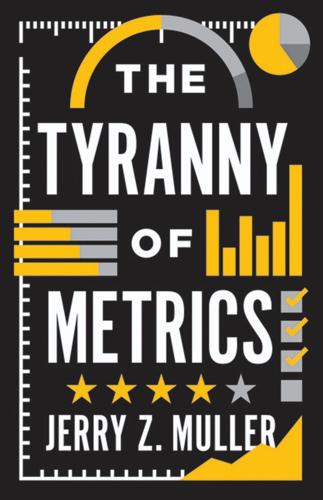
The Tyranny of Metrics
by
Jerry Z. Muller
Published 23 Jan 2018
Callahan, Education and the Cult of Efficiency (Chicago, 1962), p. 48. 9. Frederick W. Taylor, The Principles of Scientific Management (New York, 1911). On Taylor and his influence on education reform advocates see Callahan, Education and the Cult of Efficiency, chap. 2. 10. Alfred D. Chandler, Jr., The Visible Hand: The Managerial Revolution in American Business (Cambridge, Mass., 1977), pp. 275–76. 11. Taylor, quoted in James C. Scott, Seeing Like a State: How Certain Schemes to Improve the Human Condition Have Failed (New Haven, 1998), p. 336. 12. Frederick W. Taylor, Principles of Scientific Management, cited by David Montgomery, The Fall of the House of Labor (New Haven, 1989), p. 229. 13.
…
In 1911, Simon Patten, an influential professor of economics at the Wharton School of Business, demanded that schools provide evidence of their contribution to society by showing results that could be “readily seen and measured.”8 Other would-be reformers sought to bring to the school system the fruits of the industrial efficiency movement, founded by Frederick Winslow Taylor, an American engineer who coined the term “scientific management” in 1911.9 Taylor analyzed the production of pig iron in factories by breaking down the process into its component parts (through time-and-motion studies) and determining standard levels of output for each job. Workers who carried out their tasks more slowly than the prescribed time were paid at a lower rate per unit of output; those who met the expectation were rewarded at a higher rate.
…
Specialization and standardization of tasks, recording and reporting of all activity, pecuniary carrots and sticks—these were the legacy of Taylor and his disciples to subsequent generations. Taylorism was based on trying to replace the implicit knowledge of the workmen with mass-production methods developed, planned, monitored, and controlled by managers. “Under scientific management,” he wrote, “the managers assume … the burden of gathering together all of the traditional knowledge which in the past has been possessed by the workmen and then of classifying, tabulating, and reducing this knowledge to rules, laws, formulae…. Thus all of the planning which under the old system was done by the workmen, must of necessity under the new system be done by management in accordance with the law of science.”11 According to Taylor, “It is only through enforced standardization of methods, enforced adoption of the best implements and working conditions, and enforced cooperation that this faster work can be assured.

Strategy: A History
by
Lawrence Freedman
Published 31 Oct 2013
The basic lesson remained: “Even the most basic processes can be substantially improved while providing benefit to both employer and employee.”5 Certainly Taylor packaged his ideas in a systematic and coherent manner. By this means he was able to turn himself into the first management “guru” providing seminars to business leaders and with a bestselling and influential book, The Principles of Scientific Management. After he died in 1915, described on his gravestone as “The Father of Scientific Management,” his followers—such as Henry Gantt and Frank and Lillian Gilbreth—continued to develop and spread his ideas.6 They promoted a form of “aggressive rationality,” with science sweeping away custom and superstition for the benefit of all.7 This involved, as Taylor put it, a “mental revolution,” required of both the workers and the management.
…
The idea that this was a “science,” which raised the standing of Taylor’s claims, came from progressive lawyer Louis Brandeis, who eventually became a member of the Supreme Court. During a court case in 1910, Brandeis challenged a rise in freight rates on the railroads and sought to show how the railroads could save money by introducing new techniques (described as “scientific management”) rather than by charging more. Brandeis’s advocacy went well beyond the courtroom. He linked scientific management with a wider social goal of “universal preparedness.” Planning in the form of a predetermined schedule, clear instructions, and constant supervision would bring great rewards: “Errors are prevented instead of being corrected. The terrible waste of delays and accidents is avoided.
…
Paul Uselding, “Management Thought and Education in America: A Centenary Appraisal,” in Jeremy Atack, ed., Business and Economic History, Second Series 10 (Urbana: University of Illinois, 1981), 16. 2. Matthew Stewart, The Management Myth: Why the Experts Keep Getting It Wrong (New York: W. W. Norton, 2009), 41. See also Jill Lepore, “Not So Fast: Scientific Management Started as a Way to Work. How Did It Become a Way of Life?” The New Yorker, October 12, 2009. 3. Frederick W Taylor, Principles of Scientific Management (Digireads.com: 2008), 14. First published 1911. 4. Charles D. Wrege and Amadeo G. Perroni, “Taylor’s Pig-Tale: A Historical Analysis of Frederick W. Taylor’s Pig-Iron Experiments,” Academy of Management Journal 17, no. 1 (1974): 26. 5.
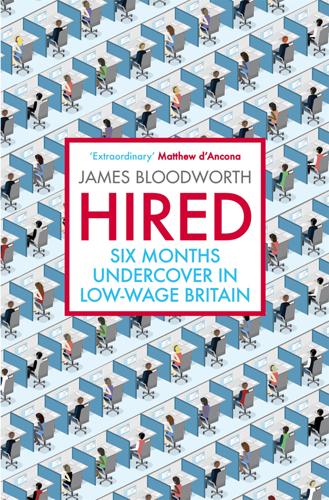
Hired: Six Months Undercover in Low-Wage Britain
by
James Bloodworth
Published 1 Mar 2018
When you allowed your mind to wander, it was easy to imagine a future in which human beings were wired up to devices like this twenty-four hours a day. As well as a potential forewarning of things to come, this algorithmic system of management was a throwback to the ‘scientific management’ theories of Frederick W. Taylor. In seeking to root out idleness and inefficient toil, in 1911 the wealthy mechanical engineer from Philadelphia published a monograph on what he saw as the potential for the scientific perfectibility of labour activity. Scientific management held that every workplace task ought to be meticulously monitored: watched, timed and recorded. Workers were units of production whose output ought to be measured in the same way as the machines on which they worked, and were to be directed down to the finest detail.
…
‘The writer firmly believes that it would be possible to train an intelligent gorilla so as to become a more efficient pig-iron handler than any man can be,’ Taylor wrote disparagingly of the men whom he believed ‘incapable’ through ‘lack of mental capacity’ of understanding the theories they were to be subjected to.5 The ‘boss-class’ has enthusiastically embraced Taylor’s theories. In 2001, the Fellows of the Academies of Management voted The Principles of Scientific Management the most influential management book of the twentieth century.6 Twentieth-century communism also finds its echo in the modern workplace, both in modern corporatese and in the admonishments to feel joyful at the prospect of struggle. Socialist realism has mutated into rosy corporate uplift.
…
.: These Poor Hands 23, 149, 190 courier firms 211, 215, 217, 223, 236, 244–7, 250, 256, 257 Cwm, Wales 147, 148, 187, 190, 195, 196, 197 Cwmbran, Wales 143 Daily Express 124–5 Daily Mail 66, 134, 188 Dan (bicycle courier) 248, 249 Dangerfield, George 72 Davies, Idris 148–9 Gwalia Deserta (Wasteland of Wales) 148 ‘The Angry Summer’ 174 debt 62, 69, 146, 151, 153 Deliveroo 215, 217, 223, 250, 256, 257 democratic socialists 192 Department for Work and Pensions 133 Dickens, Charles 29, 205, 210, 249; Hard Times 138–9 Disclosure and Barring Service (DBS) 88–90, 109–10, 214 Dorothy (housemate of JB) 203, 204–5 DriveNow 217 Dropit 217 Eastern Europe, migrant workers from 11, 13, 15, 21, 24, 26–7, 30, 32, 33, 34, 45, 57, 61–2, 75, 114–16, 128–9, 154, 203–4, 260–1 see also under individual nation name Ebbw Vale, Wales 147, 149, 154; legacy of de-industrialisation in 187–200 Elborough, Travis 93 emergency housing 96 employment agencies 1, 16, 19, 20, 23, 37, 38, 39, 40, 41, 42, 43, 56, 65–6, 70, 72, 73, 82, 86, 127, 130, 158, 189, 194 see also under individual agency name Employment and Support Allowance (ESA) 248 employment contracts/classification: Amazon 19–20, 53, 58 care sector 87–8, 107–8, 116 Uber 214–15, 222, 229–35, 243, 245, 250–2, 257 zero-hours see zero-hours contracts employment tribunals 38, 229–30, 243–4 English seaside, debauchery and 92–3 Enterprise Rent-A-Car 214 ESOL (English for Speakers of Other Languages) programmes 115–16 European Economic Community (EEC) 195 European Referendum (2016) 61, 195–6 Evening Standard 208, 241 Express & Star 59–60 Fabian Society 109 Farrar, James 229–31, 232, 233, 234, 236, 238, 240, 241–2, 250, 254, 255–6 Fellows of the Academies of Management 17 Fernie, Sue 182 financial crisis (2008) 1, 2, 45, 125, 195, 209 Flash (former miner) 165–8, 170, 171–2, 174, 175, 176–8, 179, 188, 196 Fleet News 246 Foot, Michael 149 football 56, 58, 92, 94, 97, 98, 126, 135, 169 fruit picking 61 FTSE 123, 262 Gag Mag 122 Gallagher, Patrick 246 Gary (homeless man, Blackpool) 96–104, 105 Gaz (Gag Mag seller, Blackpool) 122 GDP 146 General Election (2015) 109 General Strike (1926) 148, 149, 173 gentrification 219 Geoff (former miner) 189, 190, 191, 193 ‘gig’ economy 2, 208–10, 217–18, 232, 236, 242, 243–4, 248, 249–50, 252, 257 see also Uber Gissing, George: New Grub Street 64 GMB union 36 grammar schools 261 Guardian 5, 235 Hamstead Colliery, Great Barr 169 Hazel (home carer) 110–11, 114, 115, 116, 117, 119 Heller, Joseph: Catch-22 235–6 Hemel Hempstead 54, 70 Henley, William Ernest: ‘England, My England’ vii Hoggart, Richard: The Uses of Literacy 45 home care worker (domiciliary care worker): Disclosure and Barring Service (DBS) checks 88–90, 109–10 employment contracts 87–8, 107–8, 116, 118, 120 length of home care visits 108–9, 110 local authority budget cuts and 107–10 MAR (Medication Administration Record) sheets 114, 115 migrant workers as 114–16 negligent 86–7 privatisation of social care and 106–8, 109 recruitment 82–4 ‘shadowing’ process 88, 109–10 societal view of 106 staffing crisis 85–6, 119 suicide rate among 100 typical day/workload 110–14, 118 unions and 88 view job as vocation 86–7 wages/pay 107–8, 117, 118–19, 159 Home Instead 119 homelessness 95–105, 138, 187, 208 hostels 95, 96, 101, 102 housing/accommodation: Amazon workers, Rugeley 20–2, 24–6 Blackpool 80, 124, 137–8 buy-to-let housing market 24 emergency housing 96 homelessness and 95, 96, 101, 102, 137–8 hostels 95, 96, 101, 102 inability to buy 62 landlords and 12, 21, 24, 39, 67, 69, 95–6, 137–8, 164, 204, 206, 258 London 203–8 migrant workers and 20–2, 24–6, 197–8 social housing 62, 206 Swansea 124, 150 housing benefit 96, 137–8, 248 immigration 26–7, 61, 115–16, 128–9, 144, 193, 197–9, 236, 259–61 see also migrant workers indeed.co.uk 83–4 independent contractors 209, 248, 251–2 Independent Workers Union of Great Britain (IWGB) 230, 257 inequality 18, 73, 123, 125, 207–8, 226, 238, 262, 263 inflation 2, 122 job centres 19, 96, 133–6, 139–40, 156, 158 Joe (housemate of JB) 22 John Lewis 23, 83 Joseph Rowntree Foundation 70, 159 June (call centre employee) 181–2, 183, 184 Kalanick, Travis 215, 228, 229, 233, 235 Kelly, Kath 66 Khan, Sadiq 256 Koestler, Arthur: The God that Failed 228 Labour Party 7, 57, 59, 61, 109, 144, 149, 150, 173, 174 Ladbroke Road, Notting Hill, London 219 Lamb, Norman 109 Lancashire Evening Post 104–5 landlords, private 12, 21, 24, 39, 67, 69, 95–6, 137–8, 164, 204, 206, 258 Lea Hall Colliery, Staffordshire 31–2, 54, 55, 56, 57 Lea Hall Miners’ Social Club, Staffordshire 55, 56, 74 Len (step-grandfather of JB) 143–4 Lili (London) 203–4 living wage 1, 85, 160, 246 Lloyd George, David 172 loan sharks 151, 156 local councils 104–5, 164 London 201–57 accommodation/housing in 65, 203–8, 218 gentrification in 219 ‘gig’ economy in 208–57, 263 homelessness in 95 migrant labour in 205–6, 213, 239 wealth divide in 207–8, 238 London Congestion Charge 254 London Courier Emergency Fund (LCEF) 247 London Metropolitan Police 90 London, Jack 205 low-skilled jobs, UK economy creation of 153 Lydia (Amazon employee) 70 Macmillan, Harold 3 manufacturing jobs, disappearance of 59, 139 Marine Colliery, Cwm, Wales 190 Mayhew, Henry 4, 205 McDonald’s 52, 68, 83 Merkel, Angela 196 Metcalf, David 182 middle-class 6, 39, 51, 67, 68, 69, 72–3, 74, 75, 149, 178, 205, 258, 259, 260, 262, 263 migrant labour: Amazon use of 11, 12, 13, 15, 20, 21, 22–7, 30, 32, 33, 34, 44, 45, 46, 51, 53, 57, 61–2, 65, 71–5, 258, 260–1 care home workers 114–16 ‘gig’ economy and 203–6, 213, 239 restaurant workers 154 retail sector and 128–9 Miliband, Ed 109 mining see coal mining Miners’ Federation of Great Britain (MFGB) 173 Miners’ Strike (1984–5) 3, 174–7 minimum wage 1, 7, 55, 62, 84, 107, 108, 118, 135, 155, 159, 173, 189–90, 209, 212, 235, 236, 245, 250, 262 Morecambe, Lancashire 137–8 Morgan family 156–8 Morgan, Huw: How Green Was My Valley 147 Moyer-Lee, Jason 257 National Coal Board (NCB) 54, 170, 171 National Institute for Health and Care Excellence (NICE) 108 National Union of Miners (NUM) 174, 176 New York Times 222 NHS (National Health Service) 106, 108, 247 Nirmal (Amazon employee) 45–6, 51 Norbert (Amazon employee) 71–5 nostalgia 3, 60, 93–4, 216 Nottingham 2, 151–2 objectivism 228 oil crisis (1973) 122–3 Oliver, Jamie 154 Orwell, George 56, 169 Palmer, William 29 pay see wages and under individual job title and employer name payday loans 156 PayPal 216 Pimlico Plumbers 251–2 platform capitalism 215 PMP Recruitment 19, 189–90 Poland, migrant workers from 128–9, 130, 135, 197–8 ‘poor, the’ 145 Port Talbot, Wales 166, 176, 190, 196 ‘post-truth’ discourse 199 ‘post-work’ world 165 poverty: Blackpool and 132, 137 class and 4 darkness and 96 diet/weight and 137 ease of slipping into 5 Eastern Europe and 26 monthly salary and 156 as a moral failing 188–9 press treatment of 66–7 time and 67 working poor living in 194 Preston, Lancashire 100, 105, 138–9 private school system 123 progressive thought 262 Public Accounts Committee (PAC) 107 Putin, Vladimir 71 Rand, Ayn 228–9, 235, 236; The Fountainhead 228, 229 recession (2008) 1, 45, 104, 121, 125, 156 ‘regeneration’ 55, 60–1, 146 rent-to-own 157–8 retirement, working in 58–9 Reve, Gerard: The Evenings 160 Robin (Cwm) 196, 197 Rochelle (home care worker) 117–19 Romania, migrant workers from 11, 12, 13, 15, 20, 21, 22–7, 32, 44, 46, 51, 53, 61, 65, 71–5, 203, 206, 258 Ron (former miner) 170, 195 Royal London 59 Royal London pub, Wolverhampton 71 Royal Mail 151 Rugeley, Staffordshire 28–35 Amazon distribution centre in 11–76, 79, 86, 119, 127, 128, 159, 258 decline of coal mining industry in 31–2, 54–6, 57, 169 disappearance of manufacturing jobs from 54–63 high street 28–35 immigration and 30–4, 193–4 Tesco and 58–9, 62–3 Scargill, Arthur 175 scientific management theories 17 Scotland Yard 90 self-employment: ’gig’ economy and 214–15, 222, 229–30, 234, 243–4, 245, 246, 249, 250–1 increase in numbers of workers 2, 209 ‘independent contractors’ and 209, 248, 251–2 Selwyn (former miner) 175, 178, 179, 263–4 Senghenydd, Glamorgan pit explosion (1913) 169–70 Shelter 104 Shirebrook Colliery, Derbyshire 55 Shu, William 250 Silicon Valley, California 210, 232 Sillitoe, Alan: Saturday Night and Sunday Morning 2, 3, 94 Sky Sports News 126 social democracy 3, 263 social housing 62, 206 socialism 7, 56, 131, 144, 148, 149, 173 social mobility 58, 199, 261 South Wales Miners’ Museum, Afan Argoed 166, 196 South Wales Valleys 141–200 accommodation in 150, 197 Amazon in 145–6 beauty of 148 call centre jobs in 153–64, 180–6 coal industry and 143–4, 147–9, 165–79, 180, 188, 189, 190–1, 193, 195, 196 immigration and 197–9 JB’s family history and 143–4 legacy of de-industrialisation in 187–200 nostalgia and 147 radical history of 149–50 see also under individual place name ‘spice’ 95 Sports Direct 55 squatting 96, 99 steel industry 176, 180, 188, 189, 190, 196–7 Steven (housemate of JB) 124, 126, 127–31 Stoke-on-Trent 58–9 suicide 99–100 Sunday Times 175 ‘Best Companies to Work For’ 154 Rich List 125 Swansea, Wales 145–6, 150–2, 154–64, 176, 178, 197, 205 Tata Steel 190 tax 65, 69, 70, 118, 146, 158, 159, 163, 164, 212, 229, 244, 246, 248, 251, 255 Taylor, Frederick W.: The Principles of Scientific Management 17 Tesco 35, 57, 58–9, 62–3 Thatcher, Margaret 122, 123, 146, 174–5, 193, 207, 263–4 Thorn Automation 57 Thorn EMI 59 trade unions: Amazon and 36 B&M and 130, 131 call centres and 160, 181, 184–5, 186 care sector and 88 coal industry decline and 55–6, 173, 174, 263–4 decline of 2, 3, 35 ‘gig’ economy and 230, 257, 261 objectivism and 228 oil crisis (1973) and 122 Thatcher and 123, 174, 193, 263–4 Wales and 144, 149 see also under individual union name Trades Union Congress (TUC) 173 transgender people 40–1 Transline Group 19, 20, 37, 38, 39, 40, 41, 43, 65–6, 86 Transport for London (TFL) 211, 212–13, 214, 233, 254, 256 Tredegar Workmen’s Medical Aid Society 247 Trefil, Wales 149 Trump, Donald 7 Uber 207, 211–57 ‘account status’ 221 clocking in at 218 corporation tax and 229 customers 221, 222, 226–7, 237–41, 244, 257 driver costs/expenses 214, 217, 233, 241, 246, 253–5 driver employment classification/contract 214–15, 222, 229–35, 243, 245, 250–2, 257 driver hours 221, 226, 230, 232, 233, 236, 246, 253, 255 driver numbers 211–13, 233–5 driver wages/pay 212, 218, 221, 229–30, 235, 236, 237, 240, 241, 244, 246, 252–5 employment tribunal against (2016) 229–34 flexibility of working for 213–14, 218, 230–3, 248, 250–1 James Farrar and see Farrar, James migrant labour and 213, 236 ‘Onboarding’ class 224–5, 238, 241, 256 opposition to 215–17 philosophy of 228–9, 235, 236 psychological inducements for drivers 222–3 rating system 225–7, 232, 238, 239, 243, 253 rejecting/accepting jobs 221–2, 224–5 ride process 219–21 surge pricing 237, 238, 253 TFL and 211, 212–13, 214, 233, 254, 256 Travis Kalanick and see Kalanick, Travis UberEATS 256 UberPOOL 225, 240–2, 253, 255–6 UberX 212, 225, 240, 241, 255 VAT and 229 vehicle requirements 214 unemployment 2, 32, 36, 62, 121–3, 132, 138, 148, 157, 172, 178, 179, 189–95, 199, 218 Unison 88, 108 Unite 55, 160 United Private Hire Drivers 230, 257 university education 3, 6, 61, 62, 123, 150–1, 152, 153–4 USDAW 130–1 Vettesse, Tony 138 Vicky (care sector supervisor) 86, 87 Wade, Alan 121, 123–4 wages: Amazon 18, 19, 37–9, 42–3, 65–6, 68, 69, 70, 159 call centre 155–6, 158–60, 164, 180 care sector 107–8, 117, 118–19, 159 living wage 1, 85, 160, 246 minimum wage 1, 7, 55, 62, 84, 107, 108, 118, 135, 155, 159, 173, 189–90, 209, 212, 235, 236, 245, 250, 262 Uber 212, 218, 221, 229–30, 235, 236, 237, 240, 241, 244, 246, 252–5 wage stagnation 2 see also under individual employer, job and sector name Wealth and Assets Survey 207–8 wealth inequality 18, 73, 123, 125, 207–8, 238 Wells, H.
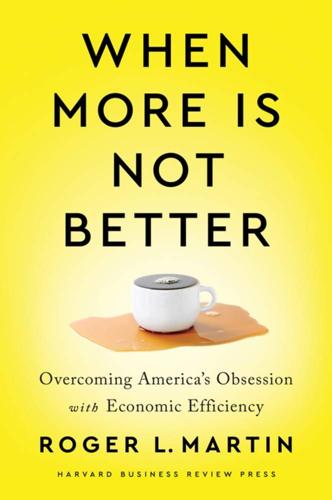
When More Is Not Better: Overcoming America's Obsession With Economic Efficiency
by
Roger L. Martin
Published 28 Sep 2020
Trained as a mechanical engineer, Taylor made it his life’s work to promote industrial efficiency, becoming the intellectual leader of what came to be known as the Efficiency Movement. His work was highly influential throughout the Progressive Era (1890–1920) and is encapsulated in his 1911 book, The Principles of Scientific Management. Taylor is both famous (with managers) and infamous (with workers) for developing the technique of using time-and-motion studies to determine the optimal method and target time for accomplishing each task in a production process. For example, his studies would determine the optimal amount of coal with which a worker should aim to fill his shovel.
…
To Taylor, increasing efficiency was management’s most central task, as illustrated by this passage from his 1911 book: “It is only through enforced standardization of methods, enforced adoption of the best implements and working conditions, and enforced cooperation that this faster work can be assured. And the duty of enforcing the adoption of standards and enforcing this cooperation rests with management alone.”23 Taylor’s work built what is now the huge field of industrial engineering and created a focus on the use of “scientific management” to drive greater and greater efficiency. W. Edwards Deming A generation later, after World War II, W. Edwards Deming helped pioneer what became the field of “total quality management.” Deming was born in the American heartland, in Sioux City, Iowa, at the turn of the twentieth century. He lived his first half-century in near total obscurity, working on statistical issues for the Department of Agriculture and the Census Bureau.
…
Author’s calculations from CEPII data, available at http://www.cepii.fr/CEPII/en/bdd_modele/presentation.asp?id=32. 22. Chad P. Bown and Douglas A. Irwin, “The GATT’s Starting Point: Tariff Levels Circa 1947,” working paper 21782, The National Bureau of Economic Research, Cambridge, 2015. 23. Frederick Winslow Taylor, The Principles of Scientific Management (New York: Harper & Brothers, 1911), 64. Chapter 2 1. John Perry and Heather Vogell “Are Drastic Swings in CRCT Scores Valid?” The Atlanta Journal-Constitution, October 19, 2009. 2. WXIA-TV, Atlanta, “11 Atlanta Educators Convicted in Cheating Scandal,” April 1, 2015, and Rhonda Cook, “New Mother Gets Prison, Former Principal Jail in APS Case,” The Atlanta Journal-Constitution, September 1, 2015. 3.
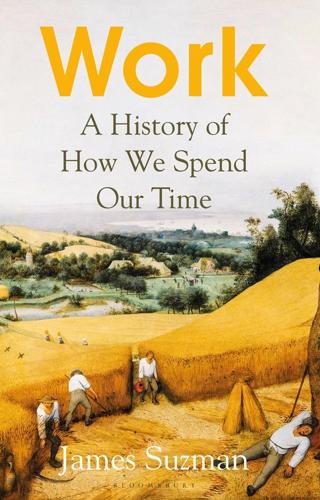
Work: A History of How We Spend Our Time
by
James Suzman
Published 2 Sep 2020
Giusberti, ‘Clothing and social inequality in early modern Europe: Introductory remarks’, Continuity and Change, 15 (3), 2000, 359–65, doi:10.1017/S0268416051003674. 10Emile Durkheim, Ethics and Sociology of Morals, Prometheus Press, Buffalo, New York, 1993 (1887), p. 87. 11Emile Durkheim, Le Suicide: Etude de sociologie, Paris, 1897, pp. 280–1. CHAPTER 13 1Frederick Winslow Taylor, Scientific Management, Comprising Shop Management: The Principles of Scientific Management [and] Testimony Before the Special House Committee, Harper & Brothers, New York, 1947. 2Daniel Bell, The End of Ideology: On the Exhaustion of Political Ideas in the Fifties, Harvard University Press, Cambridge, Mass., 2001 (1961), p. 232. 3Peter Drucker, Management: tasks, responsibilities, practices, Heinemann, London, 1973. 4Samuel Gompers, ‘The miracles of efficiency’, American Federationist 18 (4), 1911, p. 277. 5John Lubbock, The Pleasures of Life, Part II, Chapter 10, 1887, Project Gutenberg eBook, http://www.gutenberg.org/ebooks/7952. 6Ibid., Part I, Chapter 2. 7Fabrizio Zilibotti, ‘Economic Possibilities for Our Grandchildren 75 Years after: A Global Perspective’, IEW – Working Papers 344, Institute for Empirical Research in Economics, University of Zurich, 2007. 8Federal Reserve Bulletin, September 2017, Vol. 103, no. 3, p. 12. 9https://eml.berkeley.edu/~saez/SaezZucman14slides.pdf. 10Benjamin Kline Hunnicutt, Kellogg’s Six-Hour Day, Temple University Press, Philadelphia, 1996. 11John Kenneth Galbraith, Money: Whence it Came, Where it Went, Houghton Mifflin, Boston, 1975. 12Advertising Hall of Fame, ‘Benjamin Franklin: Founder, Publisher & Copyrighter, Magazine General’, 2017, http://advertisinghall.org/members/member_bio.php?
…
It was there that he also began to conduct experiments with his stopwatch, carefully observing and timing different tasks to see whether he could shave a few seconds off various critical processes, and redesign job roles to ensure that labourers would find it difficult to waste effort. The same freedom that Taylor was granted to conduct his efficiency experiments at Midvale would be denied to other similarly innovative and ambitious individuals in workplaces that adopted his scientific management technique. Instead, they’d be shackled to rigid, target-driven, repetitive work regimes where innovation was prohibited and the most important role of managers was to ensure that workers performed as they were instructed to. Taylor’s scientific method was based on breaking down any production process into its smallest component elements, timing each of them, evaluating their importance and complexity, and then reassembling the process from top to bottom with a focus on maximising efficiency.
…
Others were much more comprehensive and involved totally reorganising a production process or redesigning a factory. ‘It is only through enforced standardization of methods, enforced adoption of the best implements and working conditions, and enforced cooperation that this faster work can be assured,’ he explained in Scientific Management. ‘Taylorism’, as it came to be called, was adopted in many workplaces, but never more famously than at the Ford Motor Company. In 1903, Henry Ford hired Taylor to assist him in developing a new production process for the now iconic Model T Ford. The result of Ford and Taylor’s collaboration was the transformation of the private motor vehicle from an ostentatious luxury into an accessible, and very practical, symbol of success and good hard work.

Reimagining Capitalism in a World on Fire
by
Rebecca Henderson
Published 27 Apr 2020
In the United States they broke unions when they could, hired private armies to fight—and kill—striking employees, and persuaded the US Supreme Court that unions should be prosecuted under the antitrust laws. This view of the vast majority of employees as essentially stupid machines that were best harnessed by the skill and expertise of managers was strongly reinforced by the invention of “scientific management,” a perspective that gave a scientific imprimatur to the belief and that made it the conventional wisdom not just at GM but at most large firms for most of the twentieth century. Scientific management was invented by a man named Frederick Taylor. (Indeed, the technique is often called “Taylorism.”) Taylor was an American blue blood. He was descended from one of the Mayflower pilgrims, attended Phillips Exeter Academy, and was admitted to Harvard.
…
This stress on personal experience with those who are less privileged than oneself is another theme that recurs in the accounts of purpose-driven leaders: hands-on experience often provides a motivation for exploring a different way of leading. From the beginning the brothers explicitly rejected Taylor’s approach to management. “Even if on the productive side,” one of the brothers remarked in a 1914 paper entitled “The Case Against Scientific Management,” “the results are all that the promoters of scientific management claim, there is still the question of the human costs of the economies produced.” George Cadbury told the Conference of Quaker Employers that “the status of a man must be such that his self-respect is fully maintained, and his relationship with his employer and his fellow-workmen is that of a gentleman and a citizen.”
…
Advocates of Taylor’s approach still claim that putting all the expertise in the hands of management and managing people as if they were machines may have its downsides, but it has such dramatic effects on productivity that these costs are well worth paying. “Taylorism” became the conventional wisdom, and Taylor’s The Principles of Scientific Management became the best-selling business book of the first half of the twentieth century. Taylor’s ideas became so widely accepted that the early evidence that embracing a purpose could significantly improve performance was widely dismissed—and even when it was finally acknowledged, firms found it enormously difficult to implement the new ways of working.
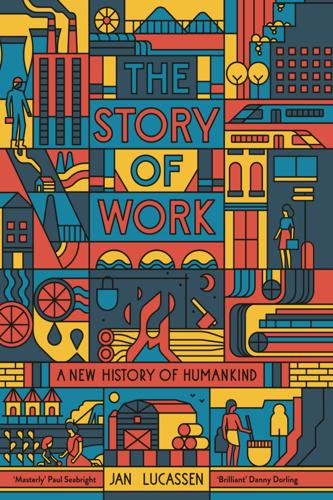
The Story of Work: A New History of Humankind
by
Jan Lucassen
Published 26 Jul 2021
Monitoring of the correct piece wage rates and of access to specialisms seemed, to them, a safer strategy.125 No wonder that Lillian Moller Gilbreth, mother of thirteen children, also applied scientific management to homemaking. Her famous Kitchen Practical, a design for a modern kitchen with electrical and gas appliances, was based on the methods of scientific management in order ‘to free up their time for paid work, to integrate male family members into the performance of domestic tasks, and to demonstrate that home life and work life were analogous spheres, both requiring management skills and human practices’.126 Scientific management was indeed applied by its protagonists and further developed in practice by entrepreneurs such as Henry Ford.
…
We also find it in machine-building factories, in the printing industry and in many more industries. It is said to have been widespread around 1900 in the factories of all big European cities.22 Indeed, from about 1900, when it was probably at its peak, cooperative subcontracting was confronted with two declared enemies: on the one hand, the modern entrepreneurs and prophets of scientific management, and on the other, the modern trade union movement. We will discuss the trade union movement in the next chapter, but for now let us focus on the employers, and perhaps the most famous among them, the American Frederick W. Taylor, from whom the term ‘Taylorism’ derives. In 1911, he wrote: A careful analysis had demonstrated the fact that when workmen are herded together in gangs, each man in the gang becomes far less efficient than when his personal ambition is stimulated; that when men work in gangs, their individual efficiency falls almost invariably down to or below the level of the worst man in the gang; and that they are all pulled down instead of being elevated by being herded together.
…
The largest groups there comprised roughly 1 million Poles and, of course, defeated German soldiers, who only returned to Germany in the mid-1950s.51 Whereas many states returned temporarily to unfree labour in times of war, the cases of Stalinist Russia, Nazi Germany and China under Mao must be considered as structural. After the Russian Revolution and the Civil War, the Bolsheviks hoped to organize their alternative economy without markets. Instead, rational planning and scientific management with the party-state as the only employer, combined with well-motivated councils of workers, would, they believed, produce welfare for everyone.52 Stalin’s impatience at how long it was taking Russia to achieve this utopia resulted in him imposing a number of measures to rob Soviet artisans, peasants and workers of any kind of freedom of choice.
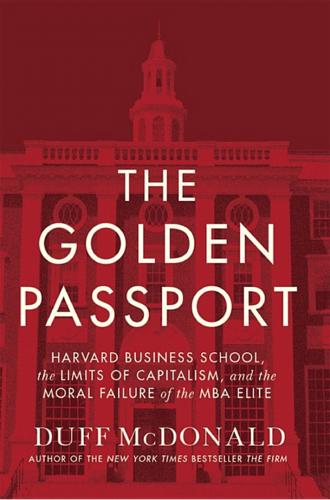
The Golden Passport: Harvard Business School, the Limits of Capitalism, and the Moral Failure of the MBA Elite
by
Duff McDonald
Published 24 Apr 2017
Gay invited Taylor to lecture at HBS. Taylor declined, insisting that scientific management could only be learned on the shop floor. (In that, he was among the first of a very exclusive group of people who have ever said no to Harvard Business School.) Gay then threatened to teach scientific management without him, at which point Taylor acquiesced, agreeing to lecture on the subject of “Task Management and Its Nature” at the School in the spring of 1909. In 1911, Taylor published the work for which he is famous, The Principles of Scientific Management. Over time, he and his disciples Carl Barth and Clarence Thompson became familiar figures at HBS and in Cambridge’s Colonial Club, the favored social redoubt of Harvard’s elite.7 Between 1909 and 1914, Taylor visited Cambridge every winter to deliver a series of lectures.
…
True to the prevailing spirit of the age—that science held the answers to most of society’s ills—a “man of science” was the first-responder to this crisis. Frederick Taylor, the father of scientific management, was all the rage at the time, and Edwin Gay was one of his biggest fans. Gay called Taylor’s work “the most important advance in industry since the introduction of the factory system and power machinery” and put Taylorism at the heart of the original HBS curriculum. He even recruited Taylor, who lectured at the school between 1908 and 1914. 3 The “Scientist”: Frederick W. Taylor The legacy of Frederick W. Taylor is rife with contradiction. Was the father of scientific management one of the best things to happen to American management know-how or one of the worst?
…
Was the father of scientific management one of the best things to happen to American management know-how or one of the worst? Was he a friend of the workingman or his enemy? Was scientific management an actual science or was it simply counting? Did he truly advance the management of business or was he simply a first mover in the business of management? At least one thing is certain: Taylor was a crucial player in the early years of the Harvard Business School, and its most prominent lecturer from the very start. When Edwin Gay was tasked with designing a curriculum and recruiting faculty for HBS, he had a fundamental problem on his hands: No one really knew what to teach. So he naturally scanned the horizon for someone—anyone—who was teaching something—anything—that seemed suited to the School’s still-unfocused ambitions.
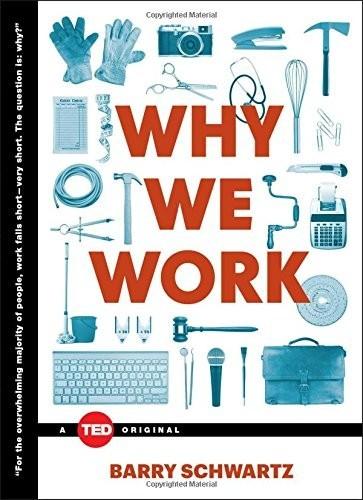
Why We Work
by
Barry Schwartz
Published 31 Aug 2015
He did not believe that “man at work” told the full story, or even the most important story, about human nature. But in the hands of Smith’s descendants, much of the nuance and subtlety was lost. More than a century later, Smith’s views about work guided the father of what came to be called the “scientific management” movement, Frederick Winslow Taylor. Taylor used meticulous time and motion studies to refine the factory, as envisioned by Smith, so that human laborers were part of a well-oiled machine. And he designed compensation schemes that pushed employees to work hard, work fast, and work accurately.
…
Pay is what would motivate them to work accurately and quickly Henry Ford, of course, created the most famous descendant of Smith’s model, and there is no doubt that it was efficient. The Ford assembly line brought the price of automobiles within the reach of ordinary people. Over the years, the efficiency of factories only grew, as F. W. Taylor, in his book The Principles of Scientific Management, laid out in microscopic detail the best ways to divide production into individual jobs, so that little skill or attention was required, and the best way to arrange pay, so that maximum effort would be produced. Factories like this have mostly left American shores, but one sees the same pattern played out in modern versions of the factory, like call centers and order-fulfillment centers.
…
New York: Morrow, 1987.* Springsteen, B. Interview in Rolling Stone, December 6, 1984: 18–22, 70. Stout, L. Cultivating Conscience. Princeton, NJ: Princeton University Press, 2011.* Sullivan, W. M. Work and Integrity. New York: Jossey-Bass, 2004.* Taylor, F. W. Principles of Scientific Management (Originally published in 1911). New York: Norton, 1967. Wrzesniewski, A., and J. E. Dutton. (2001). “Crafting a Job: Revisioning Employees as Active Crafters of Their Work.” Academy of Management Review, 26 (2001): 179–201.* Wrzesniewski, A., J. E. Dutton, and G. Debebe. “Interpersonal Sensemaking and the Meaning of Work.”
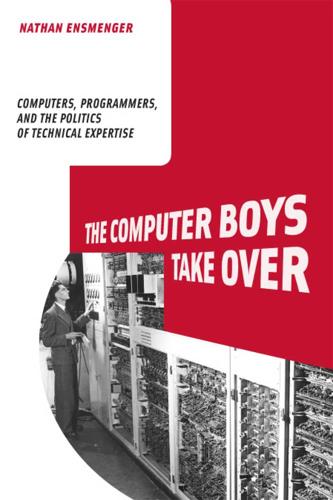
The Computer Boys Take Over: Computers, Programmers, and the Politics of Technical Expertise
by
Nathan L. Ensmenger
Published 31 Jul 2010
But despite the success of the ENIAC women in establishing a unique occupational niche for the programmer within the ENIAC community, programming continued to be perceived as marginal to the central business of computer development. By nature of their gender (female) and education (nonscientific and nonengineering), the early programmers remained isolated from their engineering and scientific managers. If software was admitted to be important, hardware was considered to be essential. The conflation of programming and coding, and the association of both with low-status clerical labor, indicated the ways in which early software workers were gendered female. In the ENIAC project, of course, the programmers actually were women.
…
Engineering management promised scientific control over the often-unpredictable processes of research and development. It allowed for the orderly production of cutting-edge science and technology.34 In the language used by the managers themselves, it was a solution that “scaled” well, meaning that it could accommodate the rapid and unanticipated growth typical of cold war–era military research. Scientific management techniques and production technologies could be substituted for human resources. It was not a system dependent on individual genius or chance insight. It replaced skilled personnel with superior process. For these and other reasons, it seemed the perfect solution to the problem posed by the mass production of computer programs.
…
Many of the themes developed in previous chapters—the development of new programming technologies or more “efficient” management methodologies—are closely tied to questions of professional status. If skilled programmers could be replaced by automated development tools, for example, or by more “scientific” management methodologies, then they could hardly have much claim to professional legitimacy. The question of what programming was—as an intellectual and occupational activity—and where it fit into traditional social, academic and professional hierarchies, was actively negotiated during the decades of the 1950s and 1960s.
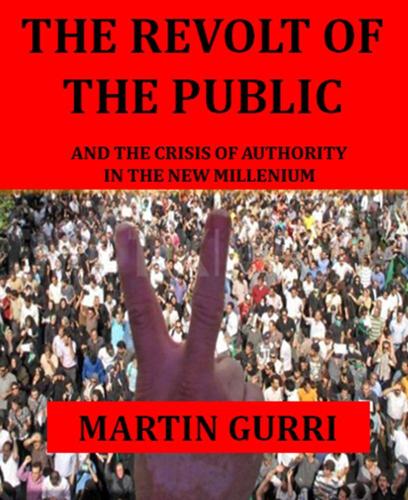
The Revolt of the Public and the Crisis of Authority in the New Millennium
by
Martin Gurri
Published 13 Nov 2018
But industry needed mass labor for production and a mass market for consumption. By “mass labor” I mean a generalized pool of workers equally trainable to the highest pitch of efficiency. Forging and deploying such a mass became the goal of “scientific management” and its great apostle, Frederick Winslow Taylor. With time and motion studies in hand, the scientific manager could program his workers’ every move as if they were a single instrument – a human machine. The work of every workman is fully planned out by the management at least one day in advance, and each man receives in most cases complete written instructions, describing in detail the task which he is to accomplish, as well as the means to be used in doing the work.[35] The system was top-down, intrusive, and impersonal, but it became orthodoxy in the industrialized world, and it caught the attention of influential persons.
…
Since the eighteenth century, when intellectuals like Voltaire felt obliged to dabble in chemical experiments, science had been considered the most rigorous domain of human knowledge. To be scientific meant to speak with great authority. Frederick Winslow Taylor, we have seen, labeled his system “scientific management.” A few decades earlier, Marx had called his political ideals “scientific socialism,” to differentiate them from utopian schemes. In general, the prestige of the scientist derived from the belief that he journeyed to realms of mystery and brought back material benefits for the human race.
…
The Old Democracies And the New Structure of Information I wish to conclude with the old democracies: Europe and the United States. After the end of World War II, the material success of these countries lifted the prestige of their system of government to the heights. Capitalism and the industrial revolution were invented here, and scientific management too – the apparent ability to become rich beyond the dreams of previous generations because of brilliant top-down planning. The digital world was born here: the tsunami of information could be said to originate in that unstable seismic region south and east of San Francisco Bay. The ideals of equality, of the people as sovereign, of the public as more than a rabble, were also strongest here, part of the domestic political DNA.
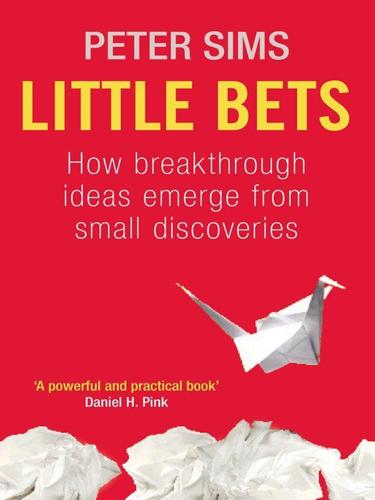
Little Bets: How Breakthrough Ideas Emerge From Small Discoveries
by
Peter Sims
Published 18 Apr 2011
It describes what neuroscientists commonly refer to as the executive functions of the brain, a broadly accepted framework among neuroscientists compared to what is perceived as the clichéd left-brain, right-brain distinctions. Charlie Rose: The Brain Series, a ten-part series on the brain, is also instructive. It can be found at: http://www.charlierose.com/view/collection/10702. Scientific (or industrial) management: Scientific management originated in the early 1900s, exemplified by The Principles of Scientific Management, by Frederick Taylor, Harper & Brothers (1911), a seminal book. Henry Ford’s brand of industrial management (Fordism) drew upon similar methods and techniques: The Legend of Henry Ford by Keith Sward, Rinehart & Company (1948). General Motors: Interview with Chet Huber.
…
As education and creativity researcher and author Sir Ken Robinson puts it, “We are educating people out of their creativity.” Another major factor is that, for years, organizational management has been developing methods for increasing productivity and minimizing risk and errors that tend to stifle creative experimentation. The predominant approach to management that evolved during the industrial era, known as scientific management, broke jobs down into specific, sequential tasks, which could then be allocated appropriate times for completion in order to optimize efficiency. Hierarchical organizations with centralized top-down decision making facilitated this process and became the norm. These methods famously allowed Henry Ford to streamline the automobile production line, first revolutionizing manufacturing and then the service businesses as well.
…
R., 91–95, 103–105, 149–51, 153, 155, 159 McNamara, Robert, 24–25 Meditation, 66 Meet the Press (TV show), 118, 119, 126–29 Memorization, 14, 15 Men’s Vogue, 126–27 Mexico, 113–14 Microage, 112 Microfinance, 98, 102 Microsoft, 9, 86–87, 156, 157 Microsoft Office, 89 Military, 22–28, 91–95, 103–105, 149–51, 155, 159 counterinsurgency approach, 27, 91–95, 103–105, 149–51, 155 imposition of constraints, 91–95 small wins, 149–51 Mistakes, 11, 16, 35, 36, 46 MIT Sloan School of Management, 133 Moggridge, Bill, Designing Interactions, 172 Monsters Inc., 71, 155 Montessori, Maria, 115 Montessori schools, 115 Moore, Geoffrey, Crossing the Chasm, 133 Mountain biking, 137–38 Moynihan, Daniel Patrick, 129 Mozart, Wolfgang Amadeus, 7, 8, 181–82 MRIs, 30, 65–67 Music, 7, 8, 13, 115, 134, 181, 182 improvisation, 65–68 Nagata Acoustics, 81 Navone, Victor, 71 NBC, 125 NBC News, 119 Network of luck, 124 New York, 79, 109, 117, 119 New Yorker, 103 New York Times, 106, 124, 138 Next Computer, 29 Nonaka, Ikujiro, 85–86 Obama, Barack, 56–58, 126–28 The Audacity of Hope, 126 Obama, Michelle, 57, 58 Observation, 97–116, 152 Office Space (film), 74 1-800-FREE-411, 89, 90 Onion, 2–3 OnStar, 15 Openness to experience, 117–30 luck and, 121–24 Orange County Register, 1 O’Reilly (Charles) and Tushman (Michael L.), Winning Through Innovation, 175–76 Orland (Ted) and Bayles (David), Art & Fear: Observations on the Perils (and Rewards) of Artmaking, 160 Orth, Maureen, 118–19, 124 Overture, 4 Packard, David, 9, 22, 120 Packer, George, 103, 105 Page, Larry, 4–5, 8, 115 PBS, 83 Perfectionism, 51, 59, 68, 73, 76, 160 healthy vs. unhealthy, 51–52 prototyping and, 52–64 Pescosolido, Anthony, 74 Peters, Tom, 200 In Search of Excellence, 120 Petersen, Bob, 73–75, 105–106 Petraeus, David, 95, 155 Pictionary, 158 Pink, Daniel, A Whole New Mind: Why Right Brainers Will Rule the Future, 164 Pipkin, Chet, 111–13, 153 Pixar, 12, 13, 29–32, 41–45, 52, 105–106, 115, 121, 135, 142–46, 151, 153, 155, 158–59, 186–87 growth mind-set of, 41–45 humor, 73–76 plussing, 69–73 prototyping and, 59–62 questions, 105–106 small wins, 142–46, 148–49, 150 See also specific animated films Pixar Image Computer, 30, 142, 141–46 Play, 13, 65–76 genius of, 65–76 humor and, 73–76 improvisation and, 65–69 plussing and, 69–73 Politics, 55–58, 125–28 prototyping and, 55–58 Porras, Jerry, Built to Last, 166–67 Positive feedback, 147, 148 Power Point, 138 Presidential elections, 125 of 2000, 125 of 2008, 125–28 Price, David, The Pixar Touch, 31, 60, 142, 143, 145, 164, 165 Pritzker Prize, 45 Problems, 77–95, 159 smallifying, 77–95 Problem solvers, 87–88 Procedural planning, limitations of, 15–17, 19, 20, 24–26 Procter & Gamble, 62–64, 107, 113–14, 134–35 Prodigies, 7, 8, 9 Prototyping, 52–64, 80, 81, 135, 152, 158–59 Publishing industry, 138–40 Questions, 97–116, 128 Radiology, 137 Radio Shack, 112, 113 Ramadi, 94–95 Ramo, Joshua Cooper, The Age of the Unthinkable, 174 Ranft, Joe, 59, 60, 106 Rao, Hayagreeva, 42 Ratatouille (film), 59 Rauschenberg, Robert, 117 RCA, 21 Red’s Dream (film), 144–45 Reed College, 41, 108 Reels, 60 REM sleep, 66 RenderMan, 143–44, 146, 149 Reorientation, 14 Resources, 163–78 Richardson, Adam, Innovation X, 172 Ricks, Thomas, 91 Ries, Eric, 20 Right brain/left brain analogies, 15, 183–84 Ringtones, 57–58 Robinson, Sir Ken, 15 Rock, Chris, 1–3, 5, 7, 8, 14, 32, 33, 35, 47, 54, 131, 135, 137, 140, 141, 151, 153, 154–55, 158 Rogers, Everett, 131–33 Diffusion of Innovations, 133, 167–68 Romero, Eric, 74 Romney, Mitt, 125 Rospars, Joe, 57–58 Ruby, Matt, 2, 3 Russert, Tim, 118–20, 121, 124–128, 129 Saadiq, Raphael, 134 Salesforce, 91 Salonen, Esa-Pekka, 83 Sarasvathy, Saras, 10, 28–29, 30, 102, 141, 148, 183 “What Makes Entrepreneurs Entrepreneurial,” 10–11 Sawyer, Keith, 160 Group Genius, 118, 168 Saxnian, AnnaLee, 118 Schmidt, Eric, 5 School for Advanced Military Studies (SAMS), 27–28 Schultz, Howard, 11, 53, 146–47, 151 Pour Your Heart Into It, 147 Scientific management, 15 Scrabble, 158 Scully, John, 29, 108 Seinfeld, Jerry, 2, 109 Senge, Peter, The Fifth Element, 175 Sequential processes, 15–17 SIGGRAPH, 143, 144, 148 Silicon Graphics, 44 Silicon Valley, 10, 19, 36, 53, 75, 84, 107, 146, 153, 197, 198 Sketches of Frank Gehry (documentary), 55, 117 Sleep, 66 Slemmer, Mike, 89–90 Small problems, 77–95 Small wins, 141–52 Smart-guy syndrome, 109 Smith, Alvy Ray, 30, 149 Software, 83–91, 112, 136–37, 143–46, 149, 151 agile development, 84–91, 148, 151, 152 RenderMan, 143–44, 146, 149 waterfall method, 86–88 Solutions, problems as, 77–95 Sony, 108 Sotheby’s, 6 Soviet Army, 23–26 Sports, 37, 85 SRI International, 21 Stand-up comedy, 1–3, 12, 13, 32, 109, 128, 131, 133, 135, 140, 141, 151, 154–55 Stanford Business School, 3–4 Stanford Digital Library Project, 4 Stanford University, 12, 45, 108, 125 d.school, 12, 63, 134–35 Stanton, Andrew, 52–53, 61 Starbucks, 11, 53, 146–47, 151, 183 Status quo bias, 110 S Team, 6 Sternberg, Robert J., Handbook of Creativity, 168 Stokes, Patricia, Creativity from Constraint, 170–71 Storyboards, 59–62, 70, 145 Strategy and innovation, further readings and resources on, 173–76 Stress Factory, New Brunswick, New Jersey, 1 Subtle controls, 85–86 Summit Partners, 111 SUN Microsystems, 10, 36 Superelaborate storyboards, 43 Surprises, 11 Sutherland, Jeff, 84, 85 Sutton, Robert, 42 Tait, Karen, 157–58 Tait, Richard, 155–58 Takeuchi, Hirotaka, 85–86 Tal Afar, Iraq, 92–94, 103, 150, 159 Taleb, Nassim Nicholas, The Black Swan, 175 Taliban, 25 Technology, 17, 20, 21, 22, 29–32, 83–91, 107–108, 112, 132, 137, 142–46, 153.
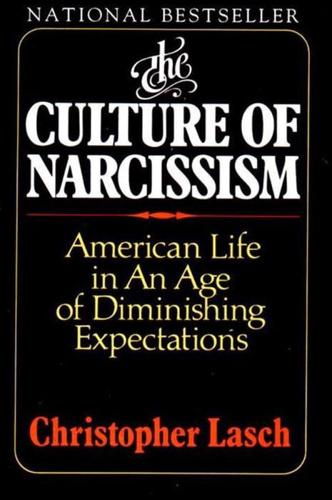
The Culture of Narcissism: American Life in an Age of Diminishing Expectations
by
Christopher Lasch
Published 1 Jan 1978
Growing investment in sports led in turn to a growing need to maintain a winning record: a new concern with system, efficiency, and the elimination of risk. Camp s innovations at Yale emphasized drill discipline, teamwork. As in industry, the attempt to coordinate the movements of many men created a demand for scientific management and for the expansion of managerial personnel. In many sports trainers, coaches, doctors, and public relations experts soon outnumbered the players. The accumulation of elaborate statistical records arose from management's attempt to reduce winning to a routine, to measure efficient performance.
…
Beating him would make him more unmanageable than ever in the students' view, whereas the psychiatric solution, in effect, enlists his own cooperation in the school s attempt to control him. student , ' niques into the modern corporation, ostensibly as a means of humanizing" the workplace. The ideology of modern management draws on the same body of therapeutic theory and practice that informs progressive education and progressive childrearing. Recent efforts to "democratize" industrial relations bring to a full circle the development that began when experts in scientific management began to study group dynamics in the office and factory in order to remove friction and raise output. Social scientists then applied the ideas first worked out in the study of small groups to study and treatment of the family, arguing that most domestic conflicts originated in the attempt to impose outmoded authoritarian controls on an institution that was evolving from an authoritarian to a democratic form.
…
" It undertook to reform society from the top down-to professionalize the civil service, break the power of the urban " machine, and put the best men" into office. When such measures failed to stem the rising tide of labor militancy and agrarian radicalism, " reformers brought forward their own version of the cooperative commonwealth in the name of progressivism: uni" versal education welfare capitalism, scientific management of industry and government. The New Deal completed what progres, Progressivism and the Rise of the New Paternalism The new paternalism emerged in the second half of the nineteenth century, found political expression in the progressive movement and later in the New Deal, and gradually worked its way into every corner of American society.
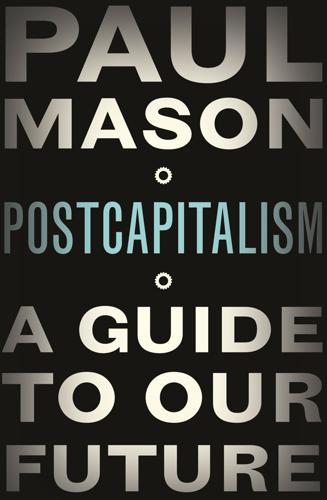
Postcapitalism: A Guide to Our Future
by
Paul Mason
Published 29 Jul 2015
The wave peaks in the mid-1870s, with financial crisis in the USA and Europe leading to the Long Depression (1873–96). During the 1880s and 90s, new technologies are developed in response to economic and social crises, coming together at the start of the third cycle. 1890s–1945: In the third cycle heavy industry, electrical engineering, the telephone, scientific management and mass production are the key technologies. The break occurs at the end of the First World War; the 1930s Depression, followed by the destruction of capital during the Second World War terminate the downswing. Late-1940s–2008: In the fourth long cycle transistors, synthetic materials, mass consumer goods, factory automation, nuclear power and automatic calculation create the paradigm – producing the longest economic boom in history.
…
Drucker’s answers are speculative but they provide the first glimpse of the framework on which a rigorous theory of postcapitalism would have to be based. Drucker divides the history of industrial capitalism into four phases: a mechanical revolution lasting most of the nineteenth century; a productivity revolution with the advent of scientific management in the 1890s; a management revolution after 1945, driven by the application of knowledge to business processes; and finally an information revolution, based on ‘the application of knowledge to knowledge’. Drucker, a pupil of Schumpeter, was consciously using the Kondratieff long cycles here (although merging the first two together), but seen from the viewpoint of the individual firm.
…
As Kealey concludes of the skilled Toronto workforce in the 1890s: ‘They had met the machine and triumphed.’17 By the 1890s, the existence of a skilled, privileged and organized layer of workers was a general feature of capitalism – not the result of one nation’s competitive advantage. The combined impact of skilled autonomy, ‘the rich associational life’ and rising social-democratic parties would force capitalism into a new adaptation. Having ‘met the machine and won’, the organized worker would, in the first half of the twentieth century, meet the scientific manager, the bureaucrat and – eventually – the guard at the concentration camp. 1898–1948: PICK UP A PIG AND WALK In 1898, in the freight yard of Bethlehem Steel in Pennsylvania, a manager called Frederick Winslow Taylor came up with a new solution to the century-old problem of skilled worker autonomy.
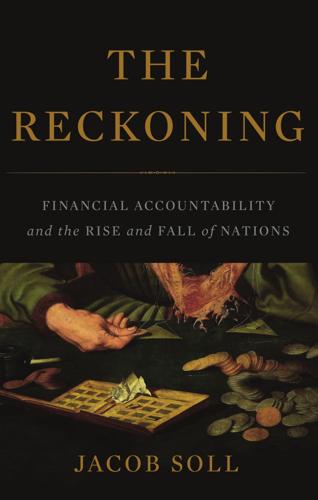
The Reckoning: Financial Accountability and the Rise and Fall of Nations
by
Jacob Soll
Published 28 Apr 2014
In his learned How to Keep Household Accounts: A Manual of Family Accounts (1903), he used a long history of accounting to prove that accounting applied as much to “domestic” life as it did to “finance and administration.” He cited the French Renaissance philosopher Montaigne to defend the idea that men as well as women should learn the “science” of managing households. Thus the scientific management of household accounts created a great chain of rational administration, from federal and municipal government to businesses to households. Economic utilitarianism could be systematized through business schools (in particular at New York University, Haskins’s own institution) and home economics courses.
…
Seen through the accountant’s numbers, Conrad’s classic imperialist character Kurtz, and his nightmarish operation of slave labor, looked clean and efficient.14 The problem of financial success represented by numbers outweighing human rights plagued the Industrial Revolution into its later stages. From an established Philadelphia family of Mayflower stock, Frederick Winslow Taylor (1856–1915) chose to be an apprentice patternmaker and machine mechanic at the Philadelphia Hydraulic Works and then, in 1871, for the Midvale Steel Company. Taylor is now known for Taylorism, his “scientific management” approach to industrial and labor efficiency. In many ways, Taylor can be seen as the Josiah Wedgwood of the age of steel. He focused on tight management of mechanical and labor costs in relation to time. Central to Taylor’s model was detailed cost accounting based on a monthly closing of books and detailed balance sheets and income statements.
…
See Catholic Church; Protestantism Christianity, money and, 15–28 culture of accounting of, 22–28 Datini and, 15–22, 25, 26, 27–28 laws of the church and, 20–22 Neo-Platonism and, 39–40 Christmas Carol, A (Dickens), 179 Chrysoloras, Manuel, 31–32, 38–39 Cicero, 5 Clarendon, Earl of, 101 Clews, Henry, 175 Clinton, William, 200 Colbert, Édouard François, 99 Colbert, Jean-Baptiste, ix, 88–99 Colonies, account books and, 148 Commines, Philippe de, 45 Commission of Accounts (England), 101, 128 Compte Rendu au Roi (Necker), 138–142, 147 Comte, Auguste, 182 Conferencia Interamericana de Contabilidad, 193 Congressional Budget Office (CBO), 198 Conrad, Joseph, 185–186 Consejo de Hacienda, 63 Constantine (emperor), 6 Constitutions French revolutionary, 145, 233n29 U.S., 147, 163–164 Contaduría de Cuentas, 63 Contaduría de Hacienda, 63 Convention Nationale, 145 Coolidge, Calvin, 192 Coopers & Lybrand, 196 Copying machine, Watt and, 124 Corruption Athenian, 4 Dutch, 82 English, 111–116, 166 French, 136 professional accountants and, 178–179, 195–200 railroads in the Gilded Age and, 168, 170–171, 176 Spanish, 68 Cost accounting Nazi Germany and, 187–188 railroads and, 169–170 scientific management and, 186–187 Wedgewood and, 122–126 Council of Finance (France), 94, 96 Council of Finance (Spain), 63–64 Council of Florence, 38 Courtier, The (Castiglione), 56–57 Covenants, 22 Creative accounting, 106–107 Credit and exchange, tools of, 17, 33 Credits and debits. See Double-entry accounting/bookkeeping Cultures of accountability, xvi–xvii, 207–208 British Protestantism and, 119–122 Christianity and, 22–28 in colonial America, 149–155 in England, 103–104, 107–108, 112–113, 119–122 French Revolution and, 133 in Holland, 80, 207 Jesuits and, 57 Medici family and, 35–47 Neo-Platonism and discrediting of, 55–59 republican, 52–54 Da Vinci, Leonardo, 50 Dante, 21, 25, 189 D’Artagnan, Charles Ogier de Batz-Castelmore, comte, 93 D’Artois, Charles-Philippe de France, comte, 143 Darwin, Charles, 183–185 Darwin, Emma, 184 Darwin, Erasmus, 129, 183 Darwin, Francis, 184 Darwin, William, 183–185 Datini, Francesco, 15–22, 25–28 Davenant, Charles, 103 David Copperfield (Dickens), 180 De Bonicha, Jacobus, 12 De Calonne, Vicomte, Charles Alexandre, 137 De Chabrol de Crouzol, Christophe, comte, 167 De Computis (Pacioli), 51, 54–55 De Créquy, Marquise, Renée-Caroline, 141–142 De Gournay, Vincent, 135 De la Court, Pieter, 84–85, 86 De Solórzano, Bartolomé Salvador, 67 De Witt, Cornelis, 86 De Witt, Johan, 85–86 Death and the Miser (art) (Provost), 208 Debits and credits.
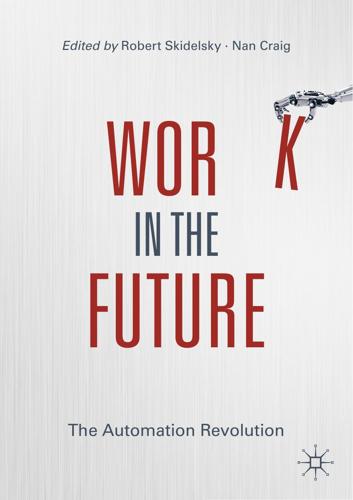
Work in the Future The Automation Revolution-Palgrave MacMillan (2019)
by
Robert Skidelsky Nan Craig
Published 15 Mar 2020
Without this invention, without his acquisition of such a watch in Switzerland, industry may have waited longer for his “time and motion” studies involving the systematic breaking down of work in to its constituent parts, a practice he called scientific management. Taken in isolation, these insights produced relatively modest gains. Only when scientific management was applied to the moving assembly devised by Henry Ford’s engineers for the Model T automotive workshop, did Ford achieve the dramatic production economies that helped to define the consumer society. The cheaply made and cheaply available yet innovative Model T, made so much profit in its first year of production, that Ford was not only able to return a huge dividend to his investors, he was also able to distribute some of that profit to employees in better wages.
…
Strong, 99 Artisans, 12, 29, 38, 74, 93, 94 Attitudes to work, 1, 4, 53–62, 73, 75 Aubrey, 184 Austria, 68, 196 Authenticity, 116 Authority, 120, 165 Automation restrictions on, 95 speed of, 21, 137 task automation vs job automation, 92, 93, 110, 141 Autonomous cars, 114, 115, 118 Autor, David, 59, 126 Autor Levy Murnane (ALM) hypothesis, 126–128, 131 B Bailey, Olivia, 180 Bairoch, Paul, 44, 46 Banking (automation of ), 87, 147 Bargaining, 68, 70, 177, 181, 182, 184, 185 Bastani, Aaron, 179n2 Beckert, Sven, 44 Berger, Thor, 95 Bessen, James, 4 Blumenbach, Wenzel, 41 Bosch, Gerhard, 179 Bostrom, Nick, 112, 113 Bourgeois household, 39 Brain and AI, 113 analagous to computer, 100, 103, 104, 115 Brown, William, 185 Bullshit jobs psychological effects, 162 Bureaucracy, 169 C Capitalism, 12, 17, 28, 53, 57, 58, 61, 75, 135, 159 Capper, Phillip, 127, 128 Care work, 3, 48, 75, 117, 178 Carlyle, Thomas, 28 Catholic, 74 Central Europe, 38, 40 Centralisation, 69, 175, 176 Chalmers, David, 103 Chatbots, 91 Chen, Chinchih, 95 Chess (and AI), 112 China, 95, 135 Christian (view of work), 74, 75, 161, 166 Clark, A, 60 Class, 13–15, 17, 30, 39, 43, 46, 47, 118, 159, 160, 162, 165, 172 Classical economics, 54, 55 Climate change, 30, 198 Cloud computing, 139, 140 Coase, Ronald, 70 Coats, David, 184, 185 Collective bargaining, 68, 181, 182, 185 Communism, 13, 57, 58, 61 Competition, 12, 16–18, 39, 91, 94, 112, 115, 119, 139, 140, 152, 199 Index Computational Creativity, 109, 115, 120, 121 Computer aided design (CAD), 34, 35 Computer programming, 100, 116 Computer revolution, 90, 94, 95, 99 Computers, 20, 34, 84, 86, 90, 92–94, 99–107, 110, 111, 115, 116, 120, 131, 134, 146, 147, 151, 197 Consciousness of AI, 110–111 the hard problem, 103 of humans, 105 objective vs. subjective, 102, 103 Consumerism/consumer society, 30, 74, 161, 194 Consumption, 3, 5, 12, 13, 16, 19, 38, 41, 56, 59, 61, 62, 66, 85, 88, 166, 176, 192, 194, 197, 199 Contested concepts, 120 Cooperatives, 40, 61, 69 Craftsmanship, 3, 11, 35, 36, 39, 194 Craig, Nan, 4, 179 Creative work, 3, 48, 74 Creativity, 3, 5, 57, 91, 105–107, 110, 120, 121, 193–195 D D’Arcy, Conor, 177 Data, 2, 84, 92, 107, 129, 130, 137–140, 146, 149, 150, 153, 178, 191, 197, 198 Davies, W.H., 31 De Spiegelaere, Stan, 181, 183 205 Deep Blue, 91, 112, 129, 130 Dekker, Fabian, 180 Deliveroo, 136 Demand effects on automation, 4, 21, 86 elasticity, 86 of work, 4, 13, 15, 16, 76, 158, 164, 180, 199 Democracy, 28 Denmark, 68, 177, 180 Dennett, Daniel, 100, 102, 103 Developing countries, 145 Digital economy, 5, 19, 125–132, 140 Digital revolution, 70 Division of labour, 11, 35, 38, 43, 44, 55 Donkin, Richard, 3 Dosi, Giovanni, 192, 195 Do what you love, 73, 74, 76 Dreyfus, Herbert, 100 E Economics, 1, 4, 5, 7, 10, 12, 14, 15, 18, 29, 30, 53–62 Economic view of work, 53–62 Education, 41, 42, 48, 67–69, 126, 131, 169, 171, 196, 197 Efficiency, 5, 16, 75, 159, 168, 184 Empathy, 106, 107 Employment law, 68 rates, 67, 68, 70 English East India Company, 44 Entrepreneurs, 29, 70, 77, 190, 192, 197, 199 Environment, 25, 31, 56, 70, 87, 91, 109, 111, 113, 120, 178, 198 206 Index Equality of opportunity, 69 of outcome, 69 social, 163 Ethics of AI, 6, 110, 119, 145–153, 197 stagnation of, 151–152 of work, 28 Exit, 69 Experience, 36, 61, 85, 90, 94, 99–105, 116, 119, 189, 190 F Facebook, 136–141, 161 Factory system, 29–30 Families, 3, 26, 29, 37–48, 75, 76, 138, 159, 162, 178, 196 Feminist (arguments about work), 79 Finance, 48, 87, 170, 197 Fire, harnessing/discovery of, 29 Firestone, Shulamith, 159 Firms, 16, 17, 68, 70, 85, 87, 133, 148, 149, 151, 152, 168, 169, 172, 190 Flexicurity, 68 Ford, Henry, 30 Ford, Martin, 2, 59, 106 France, 4, 6, 66–70, 177, 181, 182 Franklin, Benjamin, 28 Freeman, Chris, 192 French Revolution, 43 Frey, Carl Benedikt, 4, 180 Friedman, Milton, 171 Fuzzy matching, 148, 149 G Galbraith, JK, 66 GDP, 19, 178 Gender, 38, 43, 44, 48, 151, 178 Gendered division of labour, 38, 43, 44 Germany, 6, 177, 180–182, 196 Gig economy, 27, 184 Globalisation, 20, 30, 90, 95 Google Google Cloud, 140 Google Home, 140 Google Maps, 35 Google Translate, 106 Google DeepMind, 112, 119 Gorz, A., 59 Graeber, David, 6, 76, 157, 161, 168 Greek ideas of work, 74 Growth, 2, 6, 7, 12, 25, 27, 30, 31, 55, 69, 75, 85, 86, 88, 110, 126, 128, 130, 135, 169, 176, 180, 183, 185, 190, 192, 198, 200 H Happiness, 5, 62, 195 Harrop, Andrew, 180 Hassabis, Demis, 119 Hayden, Anders, 182, 183 Healthcare, 3, 87, 94, 117, 165, 197 Heterodox economics, 54, 56, 62 Hierarchy, 46, 48, 55, 69, 170 High-skilled jobs, 128, 134 Homejoy, 135 Homo economicus, 56, 57 Homo laborans, 3 Homo ludens, 3 Household economy, 4, 38–40, 45, 47 Housewives, 42, 43, 46, 47 Housework, 39, 40, 42, 44, 47 Hunter-gatherers, 11, 26, 27, 30 Index I Idleness, 54 India, 44–47 Industrial Revolution, 2, 4, 14, 29, 37, 75, 93, 94, 175, 177, 190, 191 Inequality, 67–69, 86, 87, 192, 193, 199, 200 Informal economy, 47 Information technology, 86, 161 Infrastructure digital, 140 physical, 103 Innovation, 6, 10, 14, 16, 18, 34, 67, 69, 189–199 process innovation vs. product innovation, 16, 18, 190–191, 195 International Labour Organisation (ILO), 193 Internet of Things, 139, 191 Investment in capital, 114 in skills, 70 J Japan, 117 Jensen, C, 55 Job guarantee, 172 Jobs, Steve, 73 Journalism automation of, 118 clickbait, 118 Juries, algorithmic selection of, 150, 153 K Karstgen, Jack, 196 Kasparov, Garry, 91, 112, 129, 130 207 Katz, Lawrence, 198 Kennedy, John F., 160 Keune, Maarten, 180 Keynes, John Maynard, 6, 9, 11, 27, 60, 61, 160, 161, 176 King, Martin Luther, 171 Knowledge (tacit vs. explicit), 127 Komlosy, Andrea, 4, 75 Kubrick, Stanley, 26 Kurzweil, Raymond, 101, 103, 104 Kuznets, Simon, 190 L Labour, 3, 10, 11, 13–16, 18–21, 29, 34–36, 38, 43–46, 55, 59, 65–70, 73–76, 85–87, 89, 90, 93, 94, 96, 114, 125, 126, 128, 130, 131, 141, 158, 165, 176–180, 183–184, 189, 190, 192–196, 199–200 Labour market polarisation, 67, 70, 126 Labour markets, 67, 68, 70, 87, 90, 96, 125, 126, 128, 130, 131, 141, 178, 183–184, 189, 192, 193, 195, 196, 199–200 Labour-saving effect, 86 Lall, Sanjaya, 193 Language translation, 105, 106 Latent Damage Act 1986, 127 Law automation of, 145, 152, 153 ethics, 145–153 Lawrence, Mathew, 177 Layton, E., 58 Le Bon, Gustave, 101 Lee, Richard, 26 Legal search/legal discovery, 148–150 208 Index Leisure, 3, 10, 11, 19, 27, 48, 55, 56, 59–62, 65, 77, 79, 117, 118, 159, 161, 178, 180, 182, 184, 191, 195 Levy, Frank, 126 List, Friedrich, 193 Love, 55, 74, 76, 99, 103, 106, 112, 118 Low-income jobs, 96 Loyalty, 69 Luddites, 2, 14, 18, 35, 59, 94, 96 Lyft, 136 M Machine learning, 59, 84, 90, 91, 96, 138, 139 Machines, 2, 5, 10, 12–15, 17, 19, 20, 35, 36, 38, 59, 84–87, 90–96, 99–103, 105–107, 109–121, 127–131, 138, 139, 145, 147, 148, 160, 168, 191 Machine vision, 120 Malthusian, 19 Man, Henrik de, 79 Management, 27, 30, 41, 69, 70 management theory/ organisational theory (see also Scientific management) Mann, Michael, 46 Manual work, 1 Manufacturing, 86, 87, 90, 94, 95, 176, 184, 198 Markets/market forces, 5, 6, 21, 38, 44–46, 67, 68, 70, 79, 85–88, 90, 96, 120, 125, 126, 128, 130, 131, 140, 141, 150, 152, 159, 164, 165, 171, 178, 183, 189–193, 195, 196, 198–200 Marx, Karl, 17, 18, 27, 56–59, 61, 62, 78 Matrimonial relationships, 37 McCormack, Win, 159 Meaning, 4, 9, 10, 19, 25, 54, 57, 58, 66, 73, 76, 78, 79, 84, 106, 116, 176, 180 Mechanisation, 15, 17, 19, 20, 192 Meckling, W., 55 Méda, Dominique, 183 Medical diagnosis (automation of ), 128, 129 Menger, Pierre-Michel, 4 Mental labour, 3 Meritocracy, 28 Middle-income jobs, 90, 93, 94 Migration, 40, 47 Minimum wage, 67, 69 Mining, 26, 38, 197 Mokyr, J., 59 Monopolies, 6, 136, 138–140 Morals/morality, 48, 77, 159, 160, 162, 164, 166, 167 Moravec’s paradox, 131 Murnane, Richard, 126 N Nagel, Thomas, 100, 102 National Living wage, 184 Needs vs.
…
Wants, 3, 30, 88 Neoclassical economics, 4, 55, 60, 62, 73 Netherlands, the/Holland, 6, 68, 151, 163, 177, 181–183 Network effects, 138 Networks, 45, 48, 138, 196 Neumann, John von, 99 New Zealand, 179 Nübler, Irmgard, 6, 194, 196 Index O Obama, Barack, 164, 165, 171 Obligation, 38, 53, 73–79 Occupations, 16, 40, 41, 46, 47, 58, 70, 83, 84, 86, 87, 90, 92, 106, 178, 184, 190–192, 194 OECD, 66–68, 178 O’Neil, Cathy, 6 Ontology of work, 65 Organisations dynamics of, 164 Osborne, Michael, 90 Oswald, A, 60 209 Pre-modern/pre-industrial work, 3, 11, 47, 48 Productivity, 7, 10, 79, 86, 87, 176, 178–180, 183–185, 190–192, 199 Professional work, 1, 39 Profits (different profit models), 14–18, 30, 48, 75, 79, 93, 134, 135, 138, 152, 191 Protestant work ethic, 28 Public services, 94, 167 Puritan (view of work), 28, 75, 166 R P Painting Fool, The, 115, 116, 120 Parenting, 75, 76 Patocka, Jan, 9, 21 Pattern recognition, 129 Peasant labour, 41 Perez, Carlota, 192 Philosophy of work, 30 Physical labour, 3 Piasna, Agnieszka, 181, 183 Piece-work, 30 Platform economy/platform capitalism, 6, 140 Polanyi, Karl, 192, 193 Polanyi, Michael, 127 Policy (argument against), 7, 21, 67, 68, 95, 157–173, 180, 181, 183–185, 189–200 Population, 2, 12, 15–17, 19, 28, 30, 89, 90, 117, 147, 158, 172, 198 Postmates, 136 Post-work society, 59 Poverty, 15, 47, 59, 67, 177 Redistribution, 79, 169, 199 Redundancy, 10, 12, 15–17, 19, 78, 179 Religion/religious ritual, 12, 28, 194 Remittances, 40 Responsibility, 44, 47, 76–79, 106, 107, 115, 118, 136 Retail sector, 87, 137 Retirement, 19, 67, 78 Ricardo, David, 2, 13–17 Robinson, James, 194 Robotisation, 21, 94, 95, 192 Robots carers, 106 Romantic (view of work), 34, 35 Ruskin, John, 34 S Safety nets, 67, 68 Sahlins, Marshall, 26, 158 Salazar-Xirinachs, Jose M., 198 Schumpeter, Joseph, 190, 194 Scientific management, 30 Scott, James C., 28 210 Index Searle, John, 100–103 Self-employment, 69–70, 75 Self-realisation, 57, 165 Sennett, Richard, 3 Services/service sector low frequency vs. high frequency, 134 work, 40, 68, 161, 163 Singularity, 116 Skidelsky, Edward, 60, 176 Skidelsky, Robert, 60, 176 Skills acquisition, 33, 70 skilled vs. unskilled labour/jobs, 67 Slavery, 11, 29, 30, 45 Smartphones, 140 Smiles, Samuel, 28 Smith, Adam, 12, 13, 27, 35, 54, 55, 65 Smith, Rob, 177 Social drawing rights, 70 Social interaction, 53, 88, 91 Social media, 77, 138, 168 Societal knowledge base, 196–197 Sociology (of work), 166 Spencer, David, 4, 54, 59, 61 Spinning mills (cotton industry?)
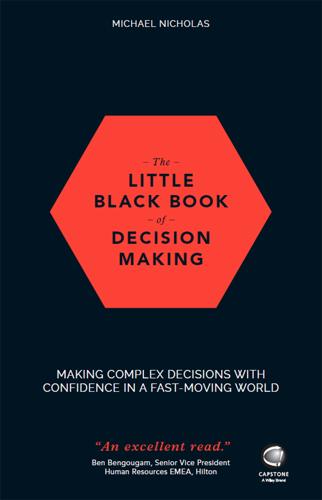
The Little Black Book of Decision Making
by
Michael Nicholas
Published 21 Jun 2017
However, once anything becomes automatic, assumed to be true – through a process that is normally known as conditioning – it also tends to become hard to notice when change would be beneficial, or perhaps even necessary. What if something important has changed, but not many people have noticed? In this world of scientific management, what if we should again take a look at the statement I made earlier, that decisions can be no more reliable than the superstition upon which they are based? Okay, okay, before any scientists take offence (I'm glad to have your attention), let me say what I mean by this statement. Having started my career as a chartered electrical engineer, I'm not questioning the value of science.
…
This process doesn't stop in childhood, however, and new beliefs can continue to emerge at any stage of life, either individually or within society as a whole. In the context of this book, the combination of the deterministic science of the clockwork universe, together with Fredrick Winslow Taylor's scientific management, has shaped our beliefs about what constitutes high-quality decision making to an extraordinary degree. It might be anticipated that this type of rational thinking would have provided the tools to minimise the impact of conditioning, as well as its implicit limiting assumptions. In some areas that is probably the case.
…
He and others have continued to incrementally refine the approach, and today the record stands at an incredible 70 hot dogs consumed in 10 minutes, but still using the basic method that Kobayashi created. The best practice has now been well honed. The Limitations of “Best Practice” The mindset involved in much decision making today is comparable to that of the best hot dog eaters in the world just before Takaru Kobayashi turned up. The scientific management principles of Frederick Winslow Taylor have become embedded so firmly that their implicit assumption, of predictability and order, is largely unchallenged – with the result that “rational” thinking dominates, along with a tendency to see things in black-and-white terms. This is highly evident in strategic planning.
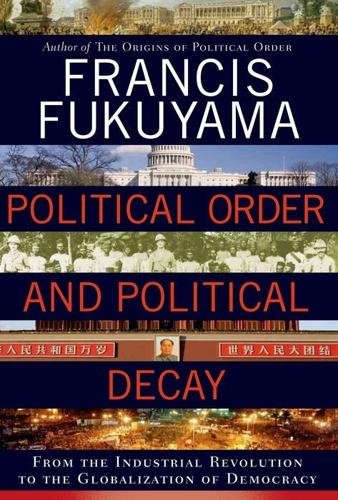
Political Order and Political Decay: From the Industrial Revolution to the Globalization of Democracy
by
Francis Fukuyama
Published 29 Sep 2014
Politics was a domain of final ends subject to democratic contestation, whereas administration was a realm of implementation that could be studied empirically and subjected to scientific analysis. A similar intellectual revolution had been going on in the business world, with the rise of Frederick Winslow Taylor’s doctrine of “scientific management,” which used among other things time-and-motion studies to maximize the efficiency of factory operations. Many of the Progressive Era reformers sought to import scientific management into government, arguing that public administration could be turned into a science and protected from the irrationalities of politics. They hoped that the social sciences one day could be made as rigorous as the natural sciences.2 After the experiences of the twentieth century, this early faith in science, and the belief that administration could be turned into a science, seems naïve and misplaced.
…
Individuals like Dorman Eaton, Woodrow Wilson, and Frank Goodnow, author of a series of influential books on public administration, cast existing American institutions in a very negative light and suggested European models as alternatives.20 These intellectuals then organized or legitimated a series of new civil society organizations, such as the New York Municipal Research Bureau, which generated policy proposals for reform, the American Social Science Association, which made civil service reform on a “scientific” basis a top priority, and the Bar Association of the City of New York, formed in 1870 to defend the professional integrity of its members.21 They would come to invoke the principles of Frederick Winslow Taylor’s “scientific management,” an approach that was seen as the cutting edge of modern business organization, as guidelines for a revamped American public sector.22 Much as the self-interest of the reformers was a basis of their activism, there was an important ethical dimension to this struggle as well. The attack on patronage and bossism took on a highly moralistic tone, with individuals across the country arguing passionately against the evils of the existing system.
…
The fact that a system once was a successful and stable liberal democracy does not mean that it will remain one in perpetuity. It is to the problem of political decay that we will turn in the final part of this book. PART FOUR Political Decay 31 POLITICAL DECAY How the U.S. Forest Service’s mission came to center on fighting wildfires; the failure of scientific management; how the Forest Service lost autonomy due to conflicting mandates; what political decay is, and its two sources The creation of the U.S. Forest Service (USFS) under Bernard Fernow and Gifford Pinchot was the premier example of American state building during the Progressive Era. Prior to passage of the 1883 Pendleton Act and the spread of merit-based bureaucracy, American government was a clientelistic system in which public offices were allocated by the political parties on the basis of patronage.
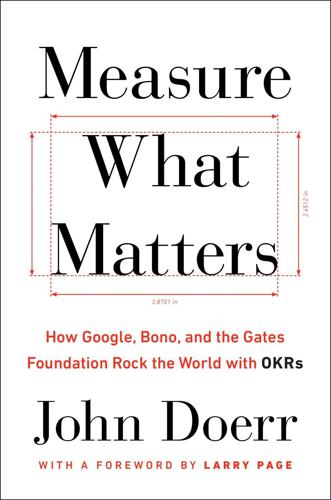
Measure What Matters: How Google, Bono, and the Gates Foundation Rock the World With OKRs
by
John Doerr
Published 23 Apr 2018
CHAPTER 2: The Father of OKRs In the space : While there’s no record of the session I attended, we unearthed a video recording of a similar seminar Grove gave three years later. The attributed remarks are sourced from that recording and hosted on www.whatmatters.com. Scientific management, Taylor wrote : Frederick Winslow Taylor, The Principles of Scientific Management (New York and London: Harper & Brothers, 1911). “crisp and hierarchical” : Andrew S. Grove, High Output Management (New York: Random House, 1983). “a principle of management” : Peter F. Drucker, The Practice of Management (New York: Harper & Row, 1954).
…
Our MBO Ancestors The early-twentieth-century forefathers of management theory, notably Frederick Winslow Taylor and Henry Ford, were the first to measure output systematically and analyze how to get more of it. They held that the most efficient and profitable organization was authoritarian. * Scientific management, Taylor wrote, consists of “knowing exactly what you want men to do and then see that they do it in the best and cheapest way.” The results, as Grove noted, were “ crisp and hierarchical: there were those who gave orders and those who took orders and executed them without question.” Half a century later, Peter Drucker—professor, journalist, historian—took a wrecking ball to the Taylor-Ford model.
…
He sought to “create an environment that values and emphasizes output” and to avoid what Drucker termed the “activity trap”: “[S]tressing output is the key to increasing productivity, while looking to increase activity can result in just the opposite.” On an assembly line, it’s easy enough to distinguish output from activity. It gets trickier when employees are paid to think. Grove wrestled with two riddles: How can we define and measure output by knowledge workers? And what can be done to increase it? Grove was a scientific manager. He read everything in the budding fields of behavioral science and cognitive psychology. While the latest theories offered “a nicer way to get people to work” than in Henry Ford’s heyday, controlled university experiments “simply would not show that one style of leadership was better than another.

How Not to Network a Nation: The Uneasy History of the Soviet Internet (Information Policy)
by
Benjamin Peters
Published 2 Jun 2016
Before Wiener cemented that hardy word as central to cybernetic systems, feedback occupied a prominent position in the Soviet political imagination of itself as a “socialist democracy,” a kind of complex social entity sustained by Pavlovian mechanisms of stimulus and response and control and cooperation between rulers and masses.131 With little work, the term noise reduction came to stand for a technical synonym for continuing political censorship in the Soviet Union. Moreover, Wiener’s twinning of the modern laborer with an automaton echoed of Stalin’s attempts to make Soviet labor and industry efficient with the scientific management techniques of Taylorism. Wiener’s theories of systematic information control and communication, once translated into Russian, appeared to be a recuperation of ideas that already were well understood.132 Perhaps this history of Soviet cybernetics is most helpful not for what it says about cybernetics but for what the discursive pliancy of cybernetics allows us to see in Soviet society.
…
Cohen, Bukharin and the Bolshevik Revolution: A Political Biography, 1888–1938 (New York: Oxford University Press, 1971), 93. 5. Much of the vast literature on the Soviet command economy is dated to cold war research concerns. The part that was consulted (and sometimes critiqued) in this work includes Mark Beissinger, Scientific Management, Socialist Discipline, and Soviet Power (Cambridge: Harvard University Press, 1988); Peter Blau, Bureaucracy in Modern Society (New York: Random House, 1956); Michael Ellman, Planning Problems in the USSR: The Contributions of Mathematical Economics to Their Solution, 1960–1971 (New York: Cambridge University Press, 1973); Michael Ellman, Socialist Planning (New York: Cambridge, 1978); Paul R.
…
Stark, The Sense of Dissonance, 1–34, see also 35–51, 54–80. 36. Spufford, Red Plenty, 208–209. 37. Kornai, The Socialist System, 121. 38. Ibid., 121. 39. Ibid., 122. 40. Ibid., 122–123. 41. Castells, End of the Millennium, 24. 42. For a basic review of tolkachy and other informal mechanisms in the economy, see Mark Beissinger, Scientific Management, Socialist Discipline, and Soviet Power (Cambridge: Harvard University Press, 1988); Ledeneva, Russia’s Economy of Favors; and Alena V. Ledeneva, Can Russia Modernize? Sistema, Power Networks and Informal Governance (New York: Cambridge University Press, 2013). 43. Byung-Yeon Kim, “Informal Economy Activities of Soviet Households: Size and Dynamics,” Journal of Comparative Economics 31 (3) ( 2003): 532–551. 44.

The Startup Way: Making Entrepreneurship a Fundamental Discipline of Every Enterprise
by
Eric Ries
Published 15 Mar 2017
Remember, if such people found a company in their home country, they will probably have easy access to the American market to sell products into. They will probably have easy access to American venture capital. We will be their customers. But the jobs will be created overseas.16 Labor Relations One of the most striking claims of Frederick Winslow Taylor’s The Principles of Scientific Management (1915) was that no workplace that had been organized under the principles of scientific management had ever had a strike, because when workers were treated “optimally” there was never any need for labor strife. With the benefit of hindsight, we now know this claim to be overblown: Many companies organized according to those principles have indeed endured strikes over the years.
…
In fact, in many successful transformations I have witnessed, future leaders who became instrumental change agents began as ordinary employees working on early pilot projects. Once they saw what was possible, they made the choice to dedicate their careers to bringing those benefits to others in the company. As I mentioned in Chapter 1, this new way stands on the shoulders of revolutions past: scientific management, mass production, lean manufacturing, Six Sigma, agile software development, customer development, maneuver warfare, design thinking, and more. Even within a single organization, entrepreneurial principles and general management principles share common foundations—especially the importance of long-term thinking—and common values—a need for rigor and discipline in execution.
…
Shane, Scott Andrew. A General Theory of Entrepreneurship: The Individual-Opportunity Nexus. Northampton, MA: Edward Elgar, 2003. Sloan, Alfred P., Jr. My Years with General Motors. Edited by John McDonald, with Catharine Stevens. New York: Doubleday, 1963. Taylor, Frederick Winslow. The Principles of Scientific Management. New York: Harper & Bros., 1915. LEAN STARTUP CONFERENCES Lean Startup Conferences bring the big ideas from Eric Ries’s books off the page to show how organizations are making them real around the world. We understand there’s one level of learning you get from reading and another level from doing the work—and hearing how other similar organizations are interpreting and doing the work.
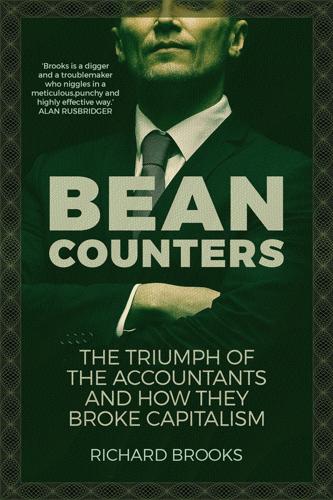
Bean Counters: The Triumph of the Accountants and How They Broke Capitalism
by
Richard Brooks
Published 23 Apr 2018
These sprawling concerns had to be managed by other people both for practical reasons and because the likes of Rockefeller, Carnegie and Ford were, said one business historian, ‘the conquerors of capitalism, not its administrators’. 4 Those who could tell the new managers of corporate America what made up their profits, and therefore how they could be increased, were useful people to know. The technicians who took the theories of cost accounting and scaled them up for the new age were led by a mechanical engineer from the steel heartland of Philadelphia called Frederick Winslow Taylor. He refashioned industrial methods using ‘scientific management’: detailed classifications of cost, time, materials and output. ‘Taylorism’ would be credited with innovations such as the production-line system, with each worker performing a small part repetitively. Its brutal efficiency was satirized by Charlie Chaplin in Modern Times, but it enabled Henry Ford’s workers to make a Model T in a couple of hours, compared to half a day beforehand.
…
Alongside its advice on corporate structuring – which, then as now, generally involved carving companies up into separate divisions – McKinsey developed many of the services that the big accountancy firms would later take into the multinationals’ boardrooms. A popular one emerged in the early 1950s when one bright McKinsey spark discovered that workers’ pay was rising faster than management’s (partly because by now the unions had redressed some of the iniquities imposed by cost accounting and scientific management). Before long an executive pay consulting service was born, with bosses rewarded handsomely under schemes carrying the McKinsey stamp of approval. Since the advice would generally be to pay executives slightly more than their competitors – who wants below-par bosses? – the still spiralling gap between executive and employee wages was inevitable.
…
In the countries in which the Big Four have embedded consultancy, the great splurge has coincided with historically low productivity growth of barely above 0%, compared with post-war averages of around 2% (see Figure 13).17 As improving productivity has been the purpose of consulting ever since cost accounting spawned scientific management, whatever else the industry is achieving, it is certainly not meeting its founders’ expectations. Figure 13: Rapid growth in consultancy services coincides with little or no growth in real economic productivity It was less than a decade before this rapid post-crisis growth in non-audit work started that the same firms had hived off their dedicated consultancy arms as incompatible with the essential business of accounting.
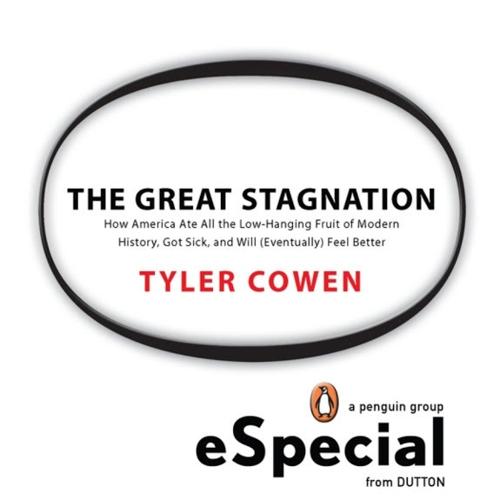
The Great Stagnation
by
Tyler Cowen
Published 24 Jan 2011
All these communications technologies, like transportation, also “knit the nation together” and led people to identify with their national political unit rather than with their local political units. Scientific management Can you imagine a world in which files do not exist? The growth of large-scale bureaucracy required advances in recording, processing, manipulating, and communicating data within an organization and also across organizations. Welfare states could not have arisen unless central governments had means of identifying, tracking, and monitoring potential recipients, which included doctrines of scientific management. We take the practices of modern bureaucracy for granted, but most of them are quite recent.
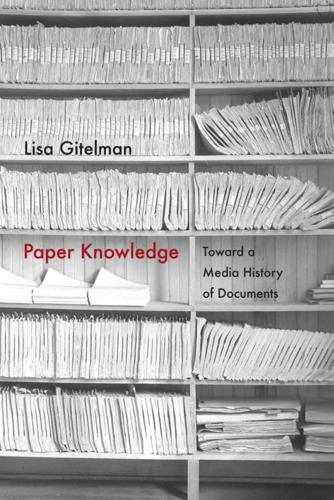
Paper Knowledge: Toward a Media History of Documents
by
Lisa Gitelman
Published 26 Mar 2014
For one thing, they are print artifacts that incite manuscript, as James Green and Peter Stallybrass have noted.10 For another, the script they incite can be prompted by oral communication, as census enumerators write down on forms what they are told by people, for instance, or as corporate managers—in the name of scientific management—learned in the early twentieth century to direct their underlings on memo blanks with printed headings like “Verbal orders don’t go” and “Don’t say it, write it.” And if blanks help to demonstrate as well as to ensure the continued interdependence of the oral, the written, and the printed, then they also raise questions about the digital.
…
According to historians of technology, “the machine tool industry was the main transmission center for the transfer of new skills and techniques” among industries in the important machine-making sector of the economy: firms that made firearms, sewing machines, typewriters, bicycles, and eventually automobiles. Production techniques that were developed in one industry spread to other industries when people changed jobs, and also when machine-tool makers transferred their own developing expertise among their customers.48 So too the job printer—like the scientific management guru in the twentieth century49—must have served as a locus of transmission, where the designs and genres produced for one client might inform the work produced for another. “Printers are rapidly educating the business community,” the trade magazine Printers’ Circular noted hopefully in 1870.50 That claim may be impossible to prove, but the coherence of job printing as a specialty in a sense testifies to the emerging coherence of bureaucratic methods within the broader cultural economy.
…
This chapter pursues the largely forgotten work of Binkley and the Joint THE TYPESCRIPT BOOK 55 Committee for two reasons: first, to gently suggest a deeper history of sorts (there must be other such histories) for the digital humanities, and second, to sketch a more ample and more specific account of typed documents and their reproduction than has yet been rendered either by scholars in media studies or by accounts of what William Stott called “documentary expression” in the 1930s.11 However paradoxical it may seem, finding a predigital history for the digital humanities stands to open for scrutiny precisely the connections between “methods of reproducing” and “research materials,” between media and the modes and substances of inquiry in the domains of history, arts, and letters. Like Liu’s predigital history of encoded discourse—the standards and meta-standards of scientific management applied to knowledge work in the early twentieth century—such a history is one of surprising continuities rendered against obvious and admitted discontinuities.12 That such a project must involve typescripts will I hope become clear. By adding the subject of job printing back into media history, the previous chapter revealed the many and varied organizational structures of modern life that printed jobs helped to articulate.
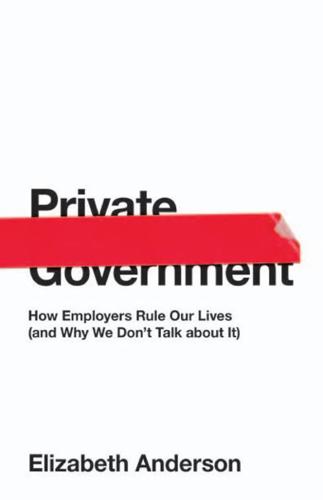
Private Government: How Employers Rule Our Lives (And Why We Don't Talk About It)
by
Elizabeth S. Anderson
Published 22 May 2017
A worker who has been sexually harassed by her boss normally has recourse to intrafirm procedures for resolving her complaint. Such protections reflect a worldwide “blurring of boundaries” among business, nonprofit, and state organizations, which appears to be driven not simply by legal changes, but by cultural imperatives of scientific management and ideas of individual rights and organizational responsibilities.43 Some but not all of these managerial developments are salutary. They are proper subjects of investigation for political theory, once we get beyond the subject’s narrow focus on the state. A just workplace constitution should incorporate basic constitutional rights, akin to a bill of rights against employers.
…
Anderson’s focus is, roughly, how things, as bad as they were in the tenements, might have gotten worse had they gone to work in the factories—if, six days a week, they had to cross back and forth over the border into some capitalist’s shirtwaist Lichtenstein. But how does “government” make things worse? No doubt, it can be irksome to have your boss, copy of Frederick Taylor’s The Principles of Scientific Management in hand, peering over your shoulder.4 And it can be unpleasant to be restricted in the minutiae of when, where, and how you work—for example, not being free to put needle and thread down whenever nature calls. However, monitoring and restriction takes place even in the absence of “government.”
…
Of course, to the extent that the patriarchal family was itself a little firm, or to the extent that the operation was just a sweatshop in what was also a place of residence, there was government even in the tenements. For the required contrast, we have to imagine that piecework, perhaps contrary to fact, wasn’t like this. This makes the thought experiment no longer so “natural.” 4. Frederick Winslow Taylor, The Principles of Scientific Management (New York and London: Harper & Brothers, 1911). 5. R. H. Coase, “The Nature of the Firm,” Economica 4 (1937): 386–405. 6. Granted, this worry may not be limited to the firm. A monopsonist might threaten to refuse to do business with an independent artisan, unless he votes for his candidate.

Futureproof: 9 Rules for Humans in the Age of Automation
by
Kevin Roose
Published 9 Mar 2021
They trade life hacking tips and cut out unnecessary cognitive burdens by wearing the same clothes every day or eating the same thing at every meal. Hustle culture has a long lineage. In the late eighteenth and early nineteenth centuries, a former steelworker named Frederick Winslow Taylor came up with a theory of “scientific management” that took the American business community by storm. Taylor believed that most jobs could be broken into standardized, measurable tasks, and that those tasks could be perfected over time by ironing out inefficiencies and shaving away every millisecond of wasted time. Ultimately, he believed that enhanced productivity would be a win-win: companies would increase their output, and workers would get the satisfaction of operating at peak performance.
…
Marissa Mayer, the former chief executive at Yahoo, bragged in a 2016 interview about how hard she worked, saying that it was technically possible to work as many as 130 hours a week “if you’re strategic about when you sleep, when you shower, and how often you go to the bathroom.” Unlike Taylor’s scientific management, which was often mandated from the top down, hustle culture is typically self-imposed. It’s an outgrowth of the philosophy the writer Derek Thompson has called “workism”—the belief, common especially among type-A millennial overachievers, that work is not just an economic necessity but the primary source of identity and meaning in our lives.
…
Another article called factory automation Rick Wartzman, “The First Time America Freaked Out over Automation,” Politico, May 30, 2017. Today, Kawai is a living legend at Toyota “Toyota’s ‘Oyaji’ Kawai Calls to Protect Monozukuri,” Toyota News, June 17, 2020. a former steelworker named Frederick Winslow Taylor Frederick Winslow Taylor, The Principles of Scientific Management (New York: Harper & Brothers, 1915). Gary Vaynerchuk, a marketing guru and social media influencer Ted Fraser, “I Spent a Week Living Like Gary Vaynerchuk,” Vice, December 17, 2018. Elon Musk, the Tesla and SpaceX founder, famously works Catherine Clifford, “Elon Musk on Working 120 Hours in a Week: ‘However Hard It Was for [the Team], I Would Make It Worse for Me,’ ” CNBC, December 10, 2018.

A World Without Email: Reimagining Work in an Age of Communication Overload
by
Cal Newport
Published 2 Mar 2021
As Drucker later recalled, Sloan once said the following about being a successful manager: “He must be absolutely tolerant and pay no attention to how a man does his work.”33 This idea re-emerged in Drucker’s thinking in the 1950s and 1960s, a period in which he coined the term knowledge work as he began to grapple with an emerging economy where the output of brains was beginning to prove more valuable than the output of factories. “The knowledge worker cannot be supervised closely or in detail,” Drucker wrote in his 1967 book, The Effective Executive. “He must direct himself.”34 This was a radical idea. In the nation’s factories, centralized control of workers was the standard. Influenced by the so-called “scientific management” principles popularized by Frederick Winslow Taylor, who would famously prowl the factory floor with a stopwatch, rooting out inefficient movements, industrial management saw workers as automatons executing optimized processes carefully designed by a small cadre of wise managers. Drucker argued this approach was doomed to fail in the new world of knowledge work, where productive output was created not by expensive equipment stamping out parts, but instead by cerebral workers applying specialized cognitive skills.
…
These articles were almost universally breathless with excitement about how much more money could be made by industrial organizations once they began to think more systematically about how their work was actually conducted. The articles were also, it soon became clear, largely quite boring to the modern reader. Scientific management in this era seemed to have a lot to do with filling out forms in triplicate. System magazine loves forms. In its pages, you’ll find pictures of forms, and you’ll learn about their colors, how they’re perforated, even the material of the folders that hold them (manila is preferred).1 Hidden among these minutiae, however, I found a case study from a 1916 issue that caught my attention.
…
In the first decades of the twentieth century, in other words, the Pullman brass works had devolved into something that looks a lot like the hyperactive hive mind workflow. However, unlike the many knowledge work organizations of today that are suffering from a similarly informal workflow, the leaders of Pullman, swept up in the excitement of scientific management, were willing to experiment with radical solutions. * * * — To make the brass department more efficient, Pullman’s executive team did something counterintuitive: they made its operation more complicated. If you needed some brass work done, you now had to submit an official form that contained all the relevant information.

User Friendly: How the Hidden Rules of Design Are Changing the Way We Live, Work & Play
by
Cliff Kuang
and
Robert Fabricant
Published 7 Nov 2019
Peter Behrens, considered by many to be the first modern industrial designer, recognized the power of design to make these devices iconic, delightful, and easy to use, informing the Bauhaus’s later faith in the promise of modern industry. 1909: SELFRIDGE DEPARTMENT STORE, Harry Gordon Selfridge Selfridge was the first department store to move products out from under the counter and onto open shelving where customers could touch and feel them directly, without asking for a shopkeeper’s help. 1911: THE PRINCIPLES OF SCIENTIFIC MANAGEMENT, Frederick Winslow Taylor Taylor’s rigorous observation of factory worker efficiency led to a focus on ergonomics and usability to minimize wasted effort and boost productivity. His time-saving approach was based on optimizing human behavior to suit the capabilities of the machines before them and to minimize human error. 1915: FORD ASSEMBLY LINE, Henry Ford The Ford assembly line was the definitive application of Taylor’s principles of scientific management. Ford optimized his assembly line to make the Model T as cheaply and uniformly as possible, with no room for customization or consumer taste, thereby reducing the cost of an automobile from $825 to $260 by 1924. 1920s: HOME ECONOMICS, Christine Frederick Home economics attempted to free up leisure time for women so that they might pursue their own betterment.
…
For those first-wave feminists, home economics was about fostering more efficient housework so that women could pursue more “individuality and independence”—the chance to be more fulfilled, more influential. The era’s undisputed master of time-saving was Frederick Winslow Taylor, whose school of “scientific management” advocated watching every action on a factory floor for wasted seconds. Henry Ford was one of his early devotees; Christine Frederick was another. In Taylor’s ideas, Frederick saw a way to connect women’s work to broader notions about modern progress—and a way to boost how society valued a woman’s labor.
…
B., 64 Friedman, Jon, 209 Frog Design, 9, 24, 164, 175, 177, 244, 286, 288, 304, 306, 308, 309, 312, 315, 317, 318, 326, 328, 340, 345, 369n2, 370n11 Fukasawa, Naoto, 304 Fuller, Buckminster, 232 Fulton Suri, Jane, 171–73, 175–81, 190, 294, 310, 316, 334, 339; Thoughtless Acts, 179, 297 fuseproject, 107 Futures Wheel, 275 Gabler, Neal, 220 gambling, 253; slot machines, 253–56, 260 gaming, 197–98, 205–206 Gates Foundation, 182, 288 Gchat, 250 General Data Protection Regulation, 346–47 General Motors, 65, 334 German Luftwaffe, 32, 42 Germany, 61 Gillespie, Bo, 51–55, 71 Gillette, 154–55 Glaser, Erik, 113–14, 115, 125 Glaser, Milton, 94 Gmail, 163, 219, 227, 255 Goldberg, Adele, 142 Google, 148, 191, 227, 239, 240, 243, 259, 261, 269, 270, 294, 313, 342; Assistant, 122; Drive, 250; Duplex, 209–10; Fuchsia, 151–52; Gchat, 250; Glass, 304, 345–46; Gmail, 163, 219, 227, 255; Lens, 43–44; Maps, 219, 313, 369n6; YouTube, 243 Grand Tour, 307 graphical user interface, 143, 145, 146, 148 Great Depression, 65, 68–70, 86, 93 Greek philosophy, 33 Grice, Paul, 111–12 GRID Compass, 175–76, 339 Grudin, Jonathan, 370n14 hacks, 316 hairdressers, 306–307 Hal 9000, 105, 117 hand tremors, 33 Harari, Yuval Noah, 156 Haraway, Donna, 81 Harford, Tim, 35 Harmony of the Seas, 230 Harris, Tristan, 255, 274 Hauser, Ed, 20–21, 351n31 Hay, Steph, 211–12 health care, 287, 288, 303–304, 306; blood sample testing, 183–84; costs of, 34; hairdressers and, 306–307; HIV testing and medication, 305, 310, 329; infant, 324–25; medical appliances, 69 heart attacks, 139 Hegelian dialectic, 292 help button (Ripple device), 53–55, 80, 117, 204 Her, 194–96, 213, 233, 341, 345 Hertzfeld, Andy, 141–42 Herzberg, Elaine, 121 hierarchy of desires, 274 Hitachi Design Center, 325 HIV, 305, 310, 329 Holachef, 316–17 Holmes, Kat, 193–95, 199, 205, 207, 208, 312 home appliances, 63, 117, 230, 333, 370n16 home economics, 63, 68, 334 homemaking, 63–64, 285–86 Home Shopping Network, 54 Honeywell Round thermostat, 92, 93, 336, 343 Hooked (Eyal), 258–59 Hoover, Herbert, 61–62 Horn, Bruce, 140, 143–44 horseless carriage metaphor, 318 horse metaphor, 116, 117, 118, 126, 144 hotels, 323 Hult Prize, 280–81 human-centered design, 72, 182, 184, 272, 288 humaneness, 196, 240 human engineering, 81 human factors, 87, 95 human limitations, 95–96 human-to-human interactions, 195, 240 human-to-thing interactions, 95, 240 Human Use of Human Beings, The: Cybernetics and Society (Wiener), 336 IBM, 5–8, 145, 170, 236, 338 iCloud, 351n32 IDEO, 24, 136, 139, 164, 170, 171, 175–77, 180–83, 202, 283, 288, 297, 304, 339, 340, 343 If This Then That (IFTTT), 298–99 iMac, 5, 23, 149 immigrants, 63 in-box, 134 India, 192, 193; dabbawalas in, 316–17, 370n8; GP Block Pitampura in Delhi, 129–30, 132; internet and, 129–30, 132, 147; Khushi Baby in, 324–25 Indonesia, 319 industrial design, 55, 58–59, 61, 65, 71–72, 87, 89–90, 93–94; Dreyfuss and, 59, 67–68, 93; streamlined aesthetic in, 70 Industrial Design, 94 industrial revolution, 292 inevitability, 268, 299 innovation, 163–64, 168, 171, 181–82, 184–85, 200, 226–27 Instagram, 36–37, 134, 240, 255, 259, 261; Stories, 37, 346 insurance companies, 287 interfaces, 145; graphical user interface, 143, 145, 146, 148 internet, 34, 130–33, 199, 200, 208, 292; in China, 192–93; commerce on, 34–35; Google Lens and, 44; in India, 129–30, 132, 147; mental models and, 131; metaphors and, 132, 134–35 Internet of Things, 297 Internet.org, 131 Intuit, 325–26 intuition, 92, 93, 269 iPad, 5, 296 iPhone, 5, 23, 43, 127, 145–47, 149, 191, 216, 228, 259, 274, 289–90, 291, 296, 313, 327, 338, 343 iPod, 5, 23, 145, 338, 342–43, 346 iTunes, 146, 343 Ive, Jony, 23, 149, 299, 338, 342 Jakob’s law, 318 JetBlue, 309 jobs, 44–45 Jobs, Steve, 3–4, 7, 139–41, 145, 149, 157, 183, 190, 317, 340, 343 Joe and Josephine, 88–89, 92, 174, 176, 178, 185, 337 John Deere, 72 Johnson, Mark, 133, 152, 153 Johnstone, Dusty, 52–55, 352n4 Jonze, Spike, 194, 195, 341, 345 jukeboxes, 318 Jungen, Michael, 234 Kahneman, Daniel, 96, 350n25 Kant, Immanuel, 57 Kare, Susan, 144 Kay, Alan, 142 Kelley, David, 169–71, 177, 180–83 Kelly, Max, 247 Kennedy, Pagan, 183–84 Kenya, 147–48, 192, 281–85; Nairobi, 281, 283, 284, 315 Khushi Baby, 324–25 KitchenAid, 64 kitchens, 90, 117, 172–73, 353n39 Knowledge Illusion, The: Why We Never Think Alone (Sloman and Fernbach), 271 Kodak, 332–33, 336 Koklys, Audra, 211–12 Kolbert, Elizabeth, 271 Kosinski, Michal, 265–67, 276–77 Krieger, Mike, 259 Krippendorff, Klaus, 132 Kubrick, Stanley, 105 Ladies’ Home Journal, 63 Lakoff, George, 133, 152, 153, 317 Land, Edwin, 117, 336 Lang, Fritz, 334–35, 362n8 language, 122–23 Lathrop, Brian, 103–106, 110, 112, 115–18, 125, 126, 144 lawn mowers, 171–73, 178, 339 Lawrence Livermore National Laboratory, 164 leaf metaphor, 137–39, 144 Le Corbusier, 62, 334 Leonardo da Vinci, 89 “L’Esprit Nouveau,” 62, 334 Liedtka, Jeanne, 170 Life, 167 Loewy, Raymond, 70, 87, 88, 164, 200–202, 313 logic, 310; inner, exposing, 319–22 Louis XV armchair, 332 Lubs, Dietrich, 46 Lyft, 260 Mace, Ron, 202 machine-made goods, 60–61 “Machines Cannot Fight Alone” (Stevens), 78–79 Maclean, Allan, 370n14 Macy’s, 66–67, 165 Mad Men, 168 Madrigal, Alexis, 255 Magic Bus Ticketing, 283–86 “makeshift,” coining of term, 332, 352n14 Margolis, Michael, 313 marketing-led organizations, 307 markets of one, 242–43 Markoff, John, 189 Marshall Field’s, 150 Marshall Plan, 6 Maslow, Abraham, 274 mass production, 60–64, 90 Matrix, The, 125, 126, 360n31 Mayo Clinic, 182; “Jack and Jill” consultation rooms of, 362n24 McCulloch, Warren, 36 McKim, Bob, 164–70, 174, 180, 181, 190 McKinsey & Company, 170 meal delivery, 316–17, 370n8 Measure of Man, The (Dreyfuss and Tilley), 92, 337, 341 Meikle, Jeffrey L., 69 memory: short-term, 322; sketching how something works from, 321 mental models, 31, 40–41, 105, 119, 120, 180, 288, 297, 320–22, 351n32; cognitive load and, 322; digital assistants and, 124; internet and, 131; metaphors and, 133 metaphors, 84, 124, 132–35, 139, 144–45, 147, 154, 155, 158, 195, 203, 295, 297, 299, 358n22; apps and, 149–52; brain and, 152–53; coach, 136–39; in defibrillator design, 139; desktop, 139–40, 143, 144, 146–47; dominant, in product categories, 317–18; embodied, 152–54; and Facebook in Kenya, 147–48; horse, 116, 117, 118, 126, 144; horseless carriage, 318; in-box, 134; internet and, 132, 134–35; ladder of, 147, 193, 317–19; leaf, on hybrid car dashboards, 137–39, 144; Macintosh OS and, 144; mental models and, 133; news feed, 134, 318; personal assistant, 189; personification, 155–57; time as money, 133–34, 135; visual, in Apple products, 148–49, 210 Metaphors We Live By (Lakoff and Johnson), 133, 152, 153 MetroCard, 311 Metropolis, 334–35, 362n8 Metropolitan Edison, 39 Metropolitan Museum of Art, 60 Mic, 260 microdermabrasion device, 328 Microsoft, 145, 191, 193–95, 199, 202, 205–206, 208, 370n14; Cortana, 194, 208; PowerPoint, 208–209; Visual Basic, 361n22; Word, Clippy in, 112; Xbox, 197, 205–206 middle class, 63, 290 Miller, George, 322, 337 mind, 95–96 Minority Report, 233, 236 Minsky, Marvin, 189–90 misinformation, 262, 263, 289 MIT, 165–67, 189, 337; Media Lab, 154, 155 Mob, the, 39 mobile phones, 368n2; Magic Bus Ticketing and, 283–86; see also smartphones mode confusion, 144 modernism, 157, 334 Moggridge, Bill, 175–78, 180–81, 339, 361n21 mood boards, 155 Moore, Patricia, 200–202, 313, 340, 341 Morris, William, 332, 352n14 Moskovitz, Dustin, 248 Mother of All Demos, 187–90, 338 Mothersill, Philippa, 154–57 motivations, 46, 259, 344 movies, 230–31, 243, 254, 363n11 M-Pesa, 284, 368n2 Münsterberg, Hugo, 81–82 Myanmar, 263 Nadella, Satya, 202 Nairobi, 281, 283, 284, 315 Nancy, 272–73 NASA, 104, 115–16, 337 Nass, Clifford, 108–10, 112, 211, 258 National Transportation Safety Board (NTSB), 121, 122 navigability, 31 Navy, U.S., 87 Neeleman, David, 309 Nespresso, 117 Nest, 92, 336, 344–45 Netflix, 230–31, 260, 351n33 neural networks, 36, 44 neuroscience, 96 Newby, Paul, 342 news feeds, 134, 247, 248, 318 New York, 94 New York City Health and Hospitals Corporation, 303 New York City subway system, 311 New Yorker, The, 67–68 New York Times, The, 110, 183, 225, 259, 263 Nielsen, Jakob, 318 911 emergency calls, 51–53, 71; Ripple device as alternative to, 53–55, 80, 117, 204 Nokia, 308 Norman, Donald, 22–26, 45–46, 86, 95, 96, 103, 112, 124, 272, 287, 302, 318, 326, 334; at Apple, 22–23; The Design of Everyday Things, 22, 312, 339, 340; Emotional Design, 326, 340; Three Mile Island and, 24–25, 30, 38, 338–39 Nostradamus, 198 Noyes, Eliot, 8 nuclear radiation exposure, 19–20 nuclear reactors, 23, 25, 26, 29, 44, 45, 80, 113; see also Three Mile Island nuclear weapons, 100, 164, 167, 261, 291; missile warning, 121–22 Nuttall, Mike, 177 obsolescence, artificial, 69 Omondi, Wycliffe Onyango, 281–85 “On Exactitude in Science,” 91–92 operations research, 6 Oppenheimer, Robert, 247, 261 organized crime, 39 Ossete, Leslie Saholy, 279–85 OXO peeler, 202–203, 341 Padgett, John, 217, 221–22, 226, 228–32, 234, 235, 237–39, 242, 312, 323–24, 345 Page, Larry, 342 paintbrushes, 358n22 Panama-Pacific Exposition, 60 Papanek, Victor, 290 Patnaik, Dev, 307 Pattison, Mary, 63, 64 Pearl, 50 Pearlman, Leah, 247–49, 262, 292, 344 peeler, OXO, 202–203, 341 Peloton, 316 personality, 265–67 personalization, 231, 239, 245; Carnival’s Ocean Medallion and Personal Genome, 233–39, 268, 296; Disney’s MagicBand and MyMagic+, 217–29, 237, 243–44, 288, 304, 317, 345 personas, 178, 207, 261, 341 personification, 155–57 personnel research, 81 Piano, Renzo, 157 pilots: crashes of, 77, 81–85, 102–103, 104, 106, 121, 257; lost and confused, 75–78, 86, 87, 144; “pilot error” concept, 81, 83, 102–103, 121, 335 Pittman, Matthew, 260 Pitts, Walter, 36 Pixar, 211 Plunkett, Joseph, 57–58 Poland, 276 Polaroid camera, 117, 336, 342 politeness, 108–10, 112, 113, 239–40, 258; driverless cars and, 125, 126 Porter, Joshua, 329 postmodernism, 157–58 pottery making, 90 PowerPoint, 208–209 Princess Cruises, 230; see also Carnival Cruise Line Princess phone, 337, 371n21 Principles of Scientific Management, The (Taylor), 333 prototypes, 165, 180–82 psychologically natural controls, 84, 85; scrolling, 359n25 psychophysics, 84, 95 purpose, 33 radar, 32, 76–79, 83, 87 radio, 76, 77, 79, 84–85 Rams, Dieter, 46, 90, 338, 343, 370n17 Rand, Paul, 8 Raskin, Jef, 140, 141 Ratzlaff, Cordell, 317 razors, disposable, 154–55, 157 Read, Max, 262 Reddit, 249 Reeves, Byron, 110 Regal Princess, 229–30, 236 Renuka, 130–33, 147, 315 rewards, variable, 254, 255, 259 Ripple help button, 53–55, 80, 117, 204 RKO theater, 55–56, 92, 173–74, 335 robots, 115, 117; see also artificial intelligence (AI) Rogers, Richard, 157 Rohingya, 263 Rolls, Charles, 332 Rosenstein, Justin, 247–51, 262, 274, 291–92, 344 Russia, 201, 250, 313 Saarinen, Eero, 5, 8 Saproo, Sameer, 125–27 Sarajevo, 49–50, 54 savings accounts, 319 Scheiber, Noam, 259 Scheimann, Fred, 15–18 Schiller, Phil, 342 Schmidt, Eric, 191 Schon, Donald, 358n22 Schüll, Natasha, 255 Schulze-Mittendorff, Walter, 334–35 Schwartz, Barry, 231 science, 45 scientific management, 63, 333 Scott, Walter Dill, 81 scrolling direction, 359n25 Sears, 66, 69, 335 self-driving cars, see cars, self-driving Selfridge, Harry Gordon, 150, 333 self-service checkouts, 303 semiconductors, 168, 175 senses, 84 sewing machine, 72 sexual assault, 51–55, 204, 352n4 Sheehan, Kim, 260 Sholes, Christopher Latham, 332 Shum, Albert, 202 Silicon Valley, 3, 168, 175, 177, 180, 182, 221, 229, 257–59, 270, 291–92, 340 Simpsons, The, 161–62, 164, 180 Singapore, 24 Siri, 122, 151, 190–91, 193, 195, 208, 312 Sittig, Aaron, 344 skeuomorphism, 148, 202, 210 Skinner, B.
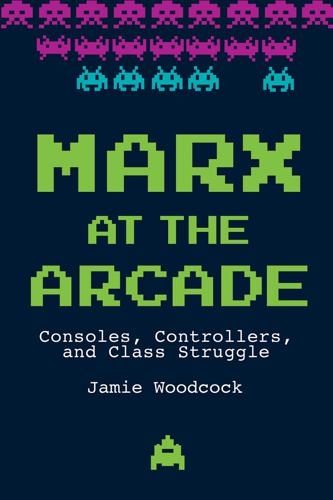
Marx at the Arcade: Consoles, Controllers, and Class Struggle
by
Jamie Woodcock
Published 17 Jun 2019
As Manuel Castells noted, “Knowledge and information are critical elements in all modes of development, since the process of production is always based on some level of knowledge and in the processing of information.”48 This phenomenon was noted by the American engineer Frederick Taylor, who, operating from the perspective of capital, developed the theory of scientific management through a series of time and motion studies. Taylor observed that “managers assume…the burden of gathering together all of the traditional knowledge which in the past has been possessed by the workmen.”49 Taylor himself carried out this process of knowledge theft—managers stealing from workers—during his experiments at the Midvale Steel Company, where, while working on machine lathes, he tried to understand the labor process from the shop floor.
…
From the 1970s onward, “many corporate managers…were only too eager to impose new technologies and development methodologies that promised to eliminate what they saw as a dangerous dependency on programmer labor,” while workers did not create the institutions or structures like labor unions that other professions had.56 In the context of software development, Philip Kraft has argued that workers were undergoing a process to “break down, simplify, routinise, and standardise” their work in order for it to be completed by “machines rather than people.”57 This claim, made almost forty years ago, explains the ongoing attempts of capital to reduce its reliance on labor in the digital field by driving down the average level of skill required. Similarly, Joan Greenbaum argues that the “design of information systems today is built on a base of previous divisions of labor” inspired by Taylor’s scientific management theory.58 The application of Taylorism, or at least the standardization of software development in videogames, has involved large-scale investment of capital and intensive division of labor. Within this process, “the creative role of designers and developers faces off against the economic imperatives of efficient production for a competitive market, reflected in the demands of publishers and console manufacturers and embodied in technology.”59 Most videogames are not made from scratch.
…
Kelleher, “The Recruitment of Passion and Community in the Service of Capital: Community Managers in the Digital Games Industry,” Critical Studies in Media Communication 32, no. 3 (2015): 190. 36Kerr and Kelleher, “The Recruitment of Passion and Community,” 190. 37Kerr and Kelleher, “The Recruitment of Passion and Community,” 190. 38Kerr and Kelleher, “The Recruitment of Passion and Community,” 191. 39Dyer-Witheford and de Peuter, Games of Empire, 5. 40Dyer-Witheford and de Peuter, Games of Empire, 77. 41Pun Ngai, Labour in China: Post-Socialist Transformations (Cambridge, MA: Polity, 2016). 42Bernard Girard, The Google Way: How One Company Is Revolutionizing Management as We Know It (San Francisco: No Starch Press, 2009). 43Johanna Weststar, Victoria O’Meara, and Marie-Josée Legault, “Developer Satisfaction Survey 2017 Summary Report,” International Game Developers Association, 2018, 22. 44Weststar, O’Meara, and Legault, “Developer Satisfaction Survey 2017 Summary Report,” 19. 45Weststar, O’Meara, and Legault, “Developer Satisfaction Survey 2017 Summary Report,” 32. 46Dyer-Witheford and de Peuter, Games of Empire, 27. 47Dyer-Witheford and de Peuter, Games of Empire, xxix. 48Manuel Castells, The Rise of the Network Society (Oxford: Blackwell, 2000), 17. 49Frederick W. Taylor, The Principles of Scientific Management (New York: Norton, 1967), 36. 50Romano Alquati, Sulla FIAT e altri scritti (Milan: Feltrinelli, 1975), 51. Quoted in Devi Sacchetto, Emiliana Armano, and Steve Wright, “Coresearch and Counter-Research: Romano Alquati’s Itinerary Within and Beyond Italian Radical Political Thought,” Viewpoint, September 27, 2013, https://www.viewpointmag.com/2013/09/27/coresearch-and-counter-research-romano-alquatis-itinerary-within-and-beyond-italian-radical-political-thought. 51Dyer-Witheford and de Peuter, Games of Empire, 27. 52Dyer-Witheford and de Peuter, Games of Empire, 27. 53Nathan Ensmenger and William Aspray, “Software as Labor Process,” in History of Computing: Software Issues – International Conference on the History of Computing, eds.

The Master Switch: The Rise and Fall of Information Empires
by
Tim Wu
Published 2 Nov 2010
Authors Frank Manuel and Fritzie Manuel discuss the age of the Utopia Victoriana in Utopian Thought in the Western World (Cambridge MA: Belknap Press, 1979), 759. The other great influence on Vail’s time was Frederick Taylor—his theories of scientific management and the concept of the “one right way.” The classic is Frederick W. Taylor, The Principles of Scientific Management (New York: Harper & Bros., 1911); see, generally, Bernard Doray, From Taylorism to Fordism: A Rational Madness (London: Free Association Books, 1988). 5. See Annual Report of the American Telephone and Telegraph for 1910, 36; and “Public Utilities and Public Policy,” Atlantic Monthly (1913): 309.
…
He came to power in an era that worshipped size and speed (the Titanic being among the less successful exemplars of this ideal), and in which there prevailed a strong belief in both human perfectibility and the unique optimal design of any system. It was the last decades of Utopia Victoriana, an era of faith in technological planning, applied science, and social conditioning that had seen the rise of eugenics, Frederick Taylor’s “scientific management,” socialism, and Darwinism, to name but a few disparate systematizing strains of thought. In those times, to believe in man’s ability to perfect communications was far from a fantastical notion. In a sense, Vail’s extension of social thinking to industry was of a piece with Henry Ford’s assembly lines, his vision of a communications empire of a piece, too, with the British Empire, on which the sun never set.4 Vail’s dream of a perfected, centralized industry was predicated on another contemporary notion as well.
…
No one could fully understand all the facts of the dynamic market any more than one could weigh the true costs of introducing a vast new flow of traffic through neighborhoods like New York’s SoHo and West Village, which had developed organically for centuries. These thinkers were speaking up against a moribund belief in human perfectibility, or scientific management theorist Frederick Taylor’s the “one right way.”13 Cities, like markets, had an inscrutable, idiosyncratic logic not easily grasped by the human mind but deserving of respect. It was beginning to seem that the same might be true of information systems. While its design had been born of necessity, through the 1970s and early 1980s the Internet’s developers began to see a virtue in it.

Utopia Is Creepy: And Other Provocations
by
Nicholas Carr
Published 5 Sep 2016
It can also measure how well they’re talking to them—by recording things like how often they make hand gestures and nod, and the energy level in their voice.” Other companies are developing Google Glass-style “smart glasses” to accomplish similar things. A little more than a century ago, Frederick Winslow Taylor introduced scientific management to American factories. By tracking and measuring the activities of workers as they went about their work, Taylor believed, companies could determine the most efficient possible routine for any job and then enforce that routine on all workers. Through the systematic collection of data, industry could be optimized, operated as a perfectly calibrated machine.
…
Taylor’s tight industrial choreography—his “system,” as he liked to call it—was embraced by manufacturers throughout the country and, in time, around the world. Seeking maximum speed, maximum efficiency, and maximum output, factory owners used time-and-motion studies to organize their work and configure the jobs of their workers. The goal, as Taylor defined it in his celebrated 1911 treatise The Principles of Scientific Management, was to identify and adopt, for every job, the “one best method” of work and thereby to effect “the gradual substitution of science for rule of thumb throughout the mechanic arts.” Once his system was applied to all acts of manual labor, Taylor assured his followers, it would bring about a restructuring not only of industry but of society, creating a utopia of perfect efficiency.
…
(Coupland), 102 Martin, Paul, 335 Marx, Karl, Marxism, xvii, xviii, 26, 83, 174, 308 Marx, Leo, 131 Maslow, Abraham, 117–20 massive open online courses (MOOCs), 133 master-slave metaphor, 307–9 mastery, 64–65 Mayer, Marissa, 268 Mayer-Schönberger, Viktor, 48 McAfee, Andrew, 195 McCain, John, 318 McKeen, William, 13–15 McLuhan, Marshall, 102–6, 183–84, 232, 326 McNealy, Scott, 257 measurement, 182 of experience, 197–98, 211–12 mechanical loom, 77 Mechanical Turk, 37–38 media: as advertorial, 53 big outlets for, 67 changes in, 53–54, 59–60 democratization of, xvi, xviii, 28 hegemony of internet in, 236–37 intellectual and social effects of, 103–6 as invasive, 105–6, 127–30 mainstream, 7–8 pursuit of immediacy in, 79 real world vs., 223 in shaping thought, 232 smartphones’ dominance of, 183–84 tools vs., 226 meditation, 162 Mehta, Mayank, 303 memory: association and cohesion in, 100–101 computer, 147, 231 cultural, 325–28 digital, 327 effect of computers on, 98–101, 234, 240 internet manipulation of, 48 neuroengineering of, 332–34 packaging of, 186 in revivification, 69–70 spatial, 290 time vs., 226 video games and, 94–97 Merholz, Peter, 21 Merleau-Ponty, Maurice, 300 Merton, Robert, 12–13 message-automation service, 167 Meyer, Stephenie, 50 Meyerowitz, Joanne, 338 microfilm, microphotography, 267 Microsoft, 108, 168, 205, 284 military technology, 331–32 Miller, Perry, xvii mindfulness, 162 Minima Moralia (Adorno), 153–54 mirrors, 138–39 Mitchell, Joni, 128 Mollie (video poker player), 218–19 monitoring: corporate control through, 163–65 of thoughts, 214–15 through wearable behavior-modification devices, 168–69 Montaigne, Michel de, 247, 249, 252, 254 Moore, Geoffrey, 209 Morlocks, 114, 186 “Morphological Basis of the Arm-to-Wing Transition, The” (Poore), 329–30 Morrison, Ewan, 288 Morrison, Jim, 126 Morse code, 34 “Most of It, The” (Frost), 145–46 motor skills, video games and, 93–94 “Mowing” (Frost), 296–300, 302, 304–5 MP3 players, 122, 123, 124, 216, 218, 293 multitasking, media, 96–97 Mumford, Lewis, 138–39, 235 Murdoch, Rupert and Wendi, 131 music: bundling of, 41–46 commercial use of, 244–45 copying and sharing technologies for, 121–26, 314 digital revolution in, 293–95 fidelity of, 124 listening vs. interface in, 216–18, 293 in participatory games, 71–72 streamed and curated, 207, 217–18 music piracy, 121–26 Musings on Human Metamorphoses (Leary), 171 Musk, Elon, 172 Musset, Alfred de, xxiii Muzak, 208, 244 MySpace, xvi, 10–11, 30–31 “Names of the Hare, The,” 201 nanotechnology, 69 Napster, 122, 123 narcissism, 138–39 Twitter and, 34–36 narrative emotions, 250 natural-language processing, 215 Negroponte, Nicholas, xx neobehavioralism, 212–13 Netflix, 92 neural networks, 136–37 neuroengineering, 332–33 New Critics, 249 News Feed, 320 news media, 318–20 newspapers: evolution of, 79, 237 online archives of, 47–48, 190–92 online vs. printed, 289 Newton, Isaac, 66 New York Public Library, 269 New York Times, 8, 71, 83, 133, 152–53, 195, 237, 283, 314, 342 erroneous information revived by, 47–48 on Twitter, 35 Nielsen Company, 80–81 Nietzsche, Friedrich, 126, 234–35, 237 Nightingale, Paul, 335 Nixon, Richard, 317 noise pollution, 243–46 Nook, 257 North of Boston (Frost), 297 nostalgia, 202, 204, 312 in music, 292–95 Now You See It (Davidson), 94 Oates, Warren, 203 Oatley, Keith, 248–50 Obama, Barack, 314 obsession, 218–19 OCLC, 276 “off grid,” 52 Olds, James, 235 O’Neill, Gerard, 171 One Infinite Loop, 76 Ong, Walter, 129 online aggregation, 192 On Photography (Sontag), xx open networks, profiteering from, 83–85 open-source projects, 5–7, 26 Oracle, 17 orchises, 305 O’Reilly, Tim, 3–5, 7 organ donation and transplantation, 115 ornithopters, 239 orphan books, 276, 277 Overture, 279–80 Owad, Tom, 256 Oxford Junior Dictionary, 201–2 Oxford University, library of, 269 Page, Larry, 23, 160, 172, 239, 268–69, 270, 279, 281–85 personal style of, 16–17, 281–82, 285 paint-by-number kits, 71–72 Paley, William, 43 Palfrey, John, 272–74, 277 Palmisano, Sam, 26 “pancake people,” 242 paper, invention and uses of, 286–89 Paper: An Elegy (Sansom), 287 Papert, Seymour, 134 Paradise within the Reach of All Men, The (Etzler), xvi–xvii paradox of time, 203–4 parenting: automation of, 181 of virtual child, 73–75 Parker, Sarah Jessica, 131 participation: “cognitive surplus” in, 59 as content and performance, 184 inclusionists vs. deletionists in, 18–20 internet, 28–29 isolation and, 35–36, 184 limits and flaws of, 5–7, 62 Paul, Rand, 314 Pendragon, Caliandras (avatar), 25 Pentland, Alex, 212–13 perception, spiritual awakening of, 300–301 personalization, 11 of ads, 168, 225, 264 isolation and, 29 loss of autonomy in, 264–66 manipulation through, 258–59 in message automation, 167 in searches, 145–46, 264–66 of streamed music, 207–9, 245 tailoring in, 92, 224 as threat to privacy, 255 Phenomenology of Perception (Merleau-Ponty), 300 Philosophical Investigations (Wittgenstein), 215 phonograph, phonograph records, 41–46, 133, 287 photography, technological advancement in, 311–12 Pichai, Sundar, 181 Pilgrims, 172 Pinterest, 119, 186 playlists, 314 PlayStation, 260 “poetic faith,” 251 poetry, 296–313 polarization, 7 politics, transformed by technology, 314–20 Politics (Aristotle), 307–8 Poore, Samuel O., 329–30 pop culture, fact-mongering in, 58–62 pop music, 44–45, 63–64, 224 copying technologies for, 121–26 dead idols of, 126 industrialization of, 208–9 as retrospective and revivalist, 292–95 positivism, 211 Potter, Dean, 341–42 power looms, 178 Presley, Elvis, 11, 126 Prim Revolution, 26 Principles of Psychology (James), 203 Principles of Scientific Management, The (Taylor), 238 printing press: consequences of, 102–3, 234, 240–41, 271 development of, 53, 286–87 privacy: devaluation of, 258 from electronic surveillance, 52 family cohesion vs., 229 free flow of information vs. right to, 190–94 internet threat to, 184, 255–59, 265, 285 safeguarding of, 258–59, 283 vanity vs., 107 proactive cognitive control, 96 Prochnik, George, 243–46 “Productivity Future Vision (2011),” 108–9 Project Gutenberg, 278 prosperity, technologies of, 118, 119–20 prosumerism, 64 protest movements, 61 Proust and the Squid (Wolf), 234 proximal clues, 303 public-domain books, 277–78 “public library,” debate over use of term, 272–74 punch-card tabulator, 188 punk music, 63–64 Quantified Self Global Conference, 163 Quantified Self (QS) movement, 163–65 Quarter-of-a-Second Rule, 205 racecars, 195, 196 radio: in education, 134 evolution of, 77, 79, 159, 288 as music medium, 45, 121–22, 207 political use of, 315–16, 317, 319 Radosh, Daniel, 71 Rapp, Jen, 341–42 reactive cognitive control, 96 Readers’ Guide to Periodical Literature, 91 reading: brain function in, 247–54, 289–90 and invention of paper, 286–87 monitoring of, 257 video gaming vs., 261–62 see also books reading skills, changes in, 232–34, 240–41 Read Write Web (blog), 30 Reagan, Ronald, 315 real world: digital media intrusion in, 127–30 perceived as boring and ugly, 157–58 as source of knowledge, 313 virtual world vs., xx–xxi, 36, 62, 127–30, 303–4 reconstructive surgery, 239 record albums: copying of, 121–22 jackets for, 122, 224 technology of, 41–46 Redding, Otis, 126 Red Light Center, 39 Reichelt, Franz, 341 Reid, Rob, 122–25 relativists, 20 religion: internet perceived as, 3–4, 238 for McLuhan, 105 technology viewed as, xvi–xvii Republic of Letters, 271 reputations, tarnishing of, 47–48, 190–94 Resident Evil, 260–61 resource sharing, 148–49 resurrection, 69–70, 126 retinal implants, 332 Retromania (Reynolds), 217, 292–95 Reuters, Adam, 26 Reuters’ SL bureau, 26 revivification machine, 69–70 Reynolds, Simon, 217–18, 292–95 Rice, Isaac, 244 Rice, Julia Barnett, 243–44 Richards, Keith, 42 “right to be forgotten” lawsuit, 190–94 Ritalin, 304 robots: control of, 303 creepy quality of, 108 human beings compared to, 242 human beings replaced by, 112, 174, 176, 195, 197, 306–7, 310 limitations of, 323 predictions about, xvii, 177, 331 replaced by humans, 323 threat from, 226, 309 Rogers, Roo, 83–84 Rolling Stones, 42–43 Roosevelt, Franklin, 315 Rosen, Nick, 52 Rubio, Marco, 314 Rumsey, Abby Smith, 325–27 Ryan, Amy, 273 Sandel, Michael J., 340 Sanders, Bernie, 314, 316 Sansom, Ian, 287 Savage, Jon, 63 scatology, 147 Schachter, Joshua, 195 Schivelbusch, Wolfgang, 229 Schmidt, Eric, 13, 16, 238, 239, 257, 284 Schneier, Bruce, 258–59 Schüll, Natasha Dow, 218 science fiction, 106, 115, 116, 150, 309, 335 scientific management, 164–65, 237–38 Scrapbook in American Life, The, 185 scrapbooks, social media compared to, 185–86 “Scrapbooks as Cultural Texts” (Katriel and Farrell), 186 scythes, 302, 304–6 search-engine-optimization (SEO), 47–48 search engines: allusions sought through, 86 blogging, 66–67 in centralization of internet, 66–69 changing use of, 284 customizing by, 264–66 erroneous or outdated stories revived by, 47–48, 190–94 in filtering, 91 placement of results by, 47–48, 68 searching vs., 144–46 targeting information through, 13–14 writing tailored to, 89 see also Google searching, ontological connotations of, 144–46 Seasteading Institute, 172 Second Life, 25–27 second nature, 179 self, technologies of the, 118, 119–20 self-actualization, 120, 340 monitoring and quantification of, 163–65 selfies, 224 self-knowledge, 297–99 self-reconstruction, 339 self-tracking, 163–65 Selinger, Evan, 153 serendipity, internet as engine of, 12–15 SETI@Home, 149 sexbots, 55 Sex Pistols, 63 sex-reassignment procedures, 337–38 sexuality, 10–11 virtual, 39 Shakur, Tupac, 126 sharecropping, as metaphor for social media, 30–31 Shelley, Percy Bysshe, 88 Shirky, Clay, 59–61, 90, 241 Shop Class as Soulcraft (Crawford), 265 Shuster, Brian, 39 sickles, 302 silence, 246 Silicon Valley: American culture transformed by, xv–xxii, 148, 155–59, 171–73, 181, 241, 257, 309 commercial interests of, 162, 172, 214–15 informality eschewed by, 197–98, 215 wealthy lifestyle of, 16–17, 195 Simonite, Tom, 136–37 simulation, see virtual world Singer, Peter, 267 Singularity, Singularitarians, 69, 147 sitcoms, 59 situational overload, 90–92 skimming, 233 “Slaves to the Smartphone,” 308–9 Slee, Tom, 61, 84 SLExchange, 26 slot machines, 218–19 smart bra, 168–69 smartphones, xix, 82, 136, 145, 150, 158, 168, 170, 183–84, 219, 274, 283, 287, 308–9, 315 Smith, Adam, 175, 177 Smith, William, 204 Snapchat, 166, 205, 225, 316 social activism, 61–62 social media, 224 biases reinforced by, 319–20 as deceptively reflective, 138–39 documenting one’s children on, 74–75 economic value of content on, 20–21, 53–54, 132 emotionalism of, 316–17 evolution of, xvi language altered by, 215 loom as metaphor for, 178 maintaining one’s microcelebrity on, 166–67 paradox of, 35–36, 159 personal information collected and monitored through, 257 politics transformed by, 314–20 scrapbooks compared to, 185–86 self-validation through, 36, 73 traditional media slow to adapt to, 316–19 as ubiquitous, 205 see also specific sites social organization, technologies of, 118, 119 Social Physics (Pentland), 213 Society for the Suppression of Unnecessary Noise, 243–44 sociology, technology and, 210–13 Socrates, 240 software: autonomous, 187–89 smart, 112–13 solitude, media intrusion on, 127–30, 253 Songza, 207 Sontag, Susan, xx SoundCloud, 217 sound-management devices, 245 soundscapes, 244–45 space travel, 115, 172 spam, 92 Sparrow, Betsy, 98 Special Operations Command, U.S., 332 speech recognition, 137 spermatic, as term applied to reading, 247, 248, 250, 254 Spinoza, Baruch, 300–301 Spotify, 293, 314 “Sprite Sips” (app), 54 Squarciafico, Hieronimo, 240–41 Srinivasan, Balaji, 172 Stanford Encyclopedia of Philosophy, 68 Starr, Karla, 217–18 Star Trek, 26, 32, 313 Stengel, Rick, 28 Stephenson, Neal, 116 Sterling, Bruce, 113 Stevens, Wallace, 158 Street View, 137, 283 Stroop test, 98–99 Strummer, Joe, 63–64 Studies in Classic American Literature (Lawrence), xxiii Such Stuff as Dreams (Oatley), 248–49 suicide rate, 304 Sullenberger, Sully, 322 Sullivan, Andrew, xvi Sun Microsystems, 257 “surf cams,” 56–57 surfing, internet, 14–15 surveillance, 52, 163–65, 188–89 surveillance-personalization loop, 157 survival, technologies of, 118, 119 Swing, Edward, 95 Talking Heads, 136 talk radio, 319 Tan, Chade-Meng, 162 Tapscott, Don, 84 tattoos, 336–37, 340 Taylor, Frederick Winslow, 164, 237–38 Taylorism, 164, 238 Tebbel, John, 275 Technics and Civilization (Mumford), 138, 235 technology: agricultural, 305–6 American culture transformed by, xv–xxii, 148, 155–59, 174–77, 214–15, 229–30, 296–313, 329–42 apparatus vs. artifact in, 216–19 brain function affected by, 231–42 duality of, 240–41 election campaigns transformed by, 314–20 ethical hazards of, 304–11 evanescence and obsolescence of, 327 human aspiration and, 329–42 human beings eclipsed by, 108–9 language of, 201–2, 214–15 limits of, 341–42 master-slave metaphor for, 307–9 military, 331–32 need for critical thinking about, 311–13 opt-in society run by, 172–73 progress in, 77–78, 188–89, 229–30 risks of, 341–42 sociology and, 210–13 time perception affected by, 203–6 as tool of knowledge and perception, 299–304 as transcendent, 179–80 Technorati, 66 telegrams, 79 telegraph, Twitter compared to, 34 telephones, 103–4, 159, 288 television: age of, 60–62, 79, 93, 233 and attention disorders, 95 in education, 134 Facebook ads on, 155–56 introduction of, 103–4, 159, 288 news coverage on, 318 paying for, 224 political use of, 315–16, 317 technological adaptation of, 237 viewing habits for, 80–81 Teller, Astro, 195 textbooks, 290 texting, 34, 73, 75, 154, 186, 196, 205, 233 Thackeray, William, 318 “theory of mind,” 251–52 Thiel, Peter, 116–17, 172, 310 “Things That Connect Us, The” (ad campaign), 155–58 30 Days of Night (film), 50 Thompson, Clive, 232 thought-sharing, 214–15 “Three Princes of Serendip, The,” 12 Thurston, Baratunde, 153–54 time: memory vs., 226 perception of, 203–6 Time, covers of, 28 Time Machine, The (Wells), 114 tools: blurred line between users and, 333 ethical choice and, 305 gaining knowledge and perception through, 299–304 hand vs. computer, 306 Home and Away blurred by, 159 human agency removed from, 77 innovation in, 118 media vs., 226 slave metaphor for, 307–8 symbiosis with, 101 Tosh, Peter, 126 Toyota Motor Company, 323 Toyota Prius, 16–17 train disasters, 323–24 transhumanism, 330–40 critics of, 339–40 transparency, downside of, 56–57 transsexuals, 337–38 Travels and Adventures of Serendipity, The (Merton and Barber), 12–13 Trends in Biochemistry (Nightingale and Martin), 335 TripAdvisor, 31 trolls, 315 Trump, Donald, 314–18 “Tuft of Flowers, A” (Frost), 305 tugboats, noise restrictions on, 243–44 Tumblr, 166, 185, 186 Turing, Alan, 236 Turing Test, 55, 137 Twain, Mark, 243 tweets, tweeting, 75, 131, 315, 319 language of, 34–36 theses in form of, 223–26 “tweetstorm,” xvii 20/20, 16 Twilight Saga, The (Meyer), 50 Twitter, 34–36, 64, 91, 119, 166, 186, 197, 205, 223, 224, 257, 284 political use of, 315, 317–20 2001: A Space Odyssey (film), 231, 242 Two-Lane Blacktop (film), 203 “Two Tramps in Mud Time” (Frost), 247–48 typewriters, writing skills and, 234–35, 237 Uber, 148 Ubisoft, 261 Understanding Media (McLuhan), 102–3, 106 underwearables, 168–69 unemployment: job displacement in, 164–65, 174, 310 in traditional media, 8 universal online library, 267–78 legal, commercial, and political obstacles to, 268–71, 274–78 universe, as memory, 326 Urban Dictionary, 145 utopia, predictions of, xvii–xviii, xx, 4, 108–9, 172–73 Uzanne, Octave, 286–87, 290 Vaidhyanathan, Siva, 277 vampires, internet giants compared to, 50–51 Vampires (game), 50 Vanguardia, La, 190–91 Van Kekerix, Marvin, 134 vice, virtual, 39–40 video games, 223, 245, 303 as addictive, 260–61 cognitive effects of, 93–97 crafting of, 261–62 violent, 260–62 videos, viewing of, 80–81 virtual child, tips for raising a, 73–75 virtual world, xviii commercial aspects of, 26–27 conflict enacted in, 25–27 language of, 201–2 “playlaborers” of, 113–14 psychological and physical health affected by, 304 real world vs., xx–xxi, 36, 62, 127–30 as restrictive, 303–4 vice in, 39–40 von Furstenberg, Diane, 131 Wales, Jimmy, 192 Wallerstein, Edward, 43–44 Wall Street, automation of, 187–88 Wall Street Journal, 8, 16, 86, 122, 163, 333 Walpole, Horace, 12 Walters, Barbara, 16 Ward, Adrian, 200 Warhol, Andy, 72 Warren, Earl, 255, 257 “Waste Land, The” (Eliot), 86, 87 Watson (IBM computer), 147 Wealth of Networks, The (Benkler), xviii “We Are the Web” (Kelly), xxi, 4, 8–9 Web 1.0, 3, 5, 9 Web 2.0, xvi, xvii, xxi, 33, 58 amorality of, 3–9, 10 culturally transformative power of, 28–29 Twitter and, 34–35 “web log,” 21 Wegner, Daniel, 98, 200 Weinberger, David, 41–45, 277 Weizenbaum, Joseph, 236 Wells, H.
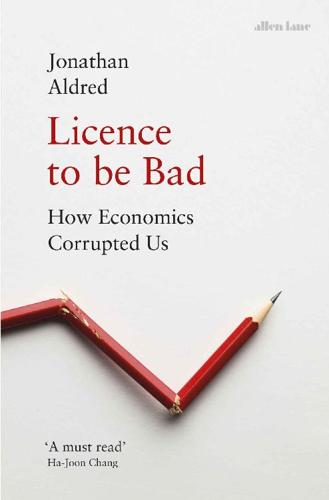
Licence to be Bad
by
Jonathan Aldred
Published 5 Jun 2019
Satz (2010), Why Some Things Should Not be for Sale (Oxford: Oxford University Press), 198. 30 Levitt, S., and Dubner, S. (2005), Freakonomics (London: Allen Lane), 10. 31 Schelling, 116. 32 The argument in this paragraph is heavily influenced by Debra Satz’s discussion of Schelling’s Titanic example. See Satz, 84–9. 7. EVERYONE HAS A PRICE 1 Aitken, Hugh G. J. (1985; first published 1960), Scientific Management in Action: Taylorism at Watertown Arsenal, 1908–1915 (Princeton: Princeton University Press). 2 Quoted in David Montgomery (1989), The Fall of the House of Labor: The Workplace, the State, and American Labor Activism, 1865–1925 (Cambridge: Cambridge University Press), 251. 3 Taylor, F. (1911), Principles of Scientific Management (New York: Harper), 7. 4 O’Connor, S. ‘Amazon Unpacked’, Financial Times, 8 February 2013. 5 Levitt, S., and Dubner, S. (2005), Freakonomics (London: Allen Lane), 20. 6 Hayek (1956), Collectivist Economic Planning (London: Routledge), 4. 7 See R.
…
But it is hardly surprising that businesses cheat when a licence for bad behaviour is so easy to find: simply combine Becker’s inability to understand that crime is morally wrong with Friedman’s insistence that the only responsibility of business is to maximize profit. How many more business leaders, politicians and others in positions of power have excuses from economic imperialists being whispered in their ears? 7 Everyone Has a Price In 1911 Frederick Winslow Taylor, an aristocratic Philadelphian, published The Principles of Scientific Management. Later dubbed ‘the Isaac Newton of the science of work’ by 1970s management guru Peter Drucker, Taylor was arguably the world’s first management consultant. His book paved the way for what are now mainstream management techniques to improve worker efficiency. But Taylorism, as it became known, had a shaky start.
…
One result of this was the US government’s ban on the use of the stopwatch to monitor workers in army workshops – to modern eyes, an astonishing political intervention. At the time, though, both supporters and critics of Taylorism saw it as a political and moral project, so the direct involvement of politicians would have surprised no one. Taylor did not see his ‘scientific management’ as morally neutral or apolitical. He argued that workers were simpletons whose behaviour had to be controlled by managers with superior intelligence. As Taylor explained to the Congressional committee: ‘I can say, without the slightest hesitation, that the science of handling pig-iron is so great that the man who is … physically able to handle pig-iron and is sufficiently phlegmatic and stupid to choose this for his occupation is rarely able to comprehend the science of handling pig-iron.’2 The Congressional investigation concluded that Taylorism had a dehumanizing effect on workers.

You've Been Played: How Corporations, Governments, and Schools Use Games to Control Us All
by
Adrian Hon
Published 14 Sep 2022
To bridge the gap between Foucault and Uber, we need to go back to Frederick Winslow Taylor, the godfather of “scientific management.” In 1881, Taylor sought to pierce the mystery of why some factory workers were faster than others by timing their every motion and measuring their exact output.34 Armed with this knowledge, he would devise the “one best way” to accomplish their task, then extrapolate the maximum theoretical output per worker. That maximum output would become the target for all workers and the basis for their compensation. His theory was so influential around the world, it became known as Taylorism. Workers hated Taylorism, and they had good reason to.35 Scientific management was anything but scientific, frequently relying on incomplete and biased measurements whose errors were magnified by spurious methods of extrapolation.
…
In early 2020, the City A.M. newspaper reported that Barclays introduced a pilot of Sapience’s computer surveillance system in the investment banking division of their London headquarters.45 The fully automated system monitored employees’ computers in real time, instructing perceived slackers to spend more time “in the Zone” and “mute the phone, disable email/chat pop-ups, avoid breaks for 20+ minutes, 2–3 times a day.” Drawing a direct link to Taylorism, Sapience claims it has “the most cost effective and accurate way of doing time and motion studies,” time and motion studies being a scientific management technique related to Taylor’s work with stopwatch timers, as well as Lillian and Frank Gilbreth’s practice of filming workers’ motions to examine and improve repetitive physical work.46 Instead of filming workers’ movements, Sapience collects metadata about their computer activities, such as the websites they visit, their time on websites, and their use of corporate software.
…
Res. 90… [Oct. 4, 1911–Feb. 12, 1912] (Washington: US Government Printing Office, 1912), https://catalog.hathitrust.org/Record/002007191. 38. “The Stopwatch and the Chronograph Part 1,” Seiko Museum Ginza, accessed November 26, 2021, https://museum.seiko.co.jp/en/knowledge/story_06. 39. Jennifer deWinter et al., “Taylorism 2.0: Gamification, Scientific Management and the Capitalist Appropriation of Play,” Journal of Gaming & Virtual Worlds 6, no. 2 (June 2014): 109–127, https://doi.org/10.1386/jgvw.6.2.109_1; “Digital Taylorism,” Schumpeter, Economist, September 10, 2015, www.economist.com/business/2015/09/10/digital-taylorism. 40. “Working as a Call Center Supervisor,” Dialpad Help Center, Dialpad, accessed November 26, 2021, https://help.dialpad.com/hc/en-us/articles/115005100283-Working-as-a-Call-Center-Supervisor. 41.
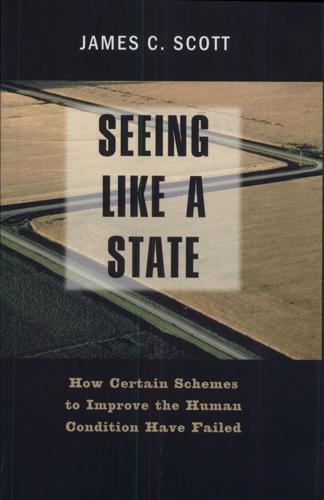
Seeing Like a State: How Certain Schemes to Improve the Human Condition Have Failed
by
James C. Scott
Published 8 Feb 1999
We must organize in Russia the study and teaching of the Taylor system and systematically try it out and adapt it to our purposes.49 By 1918, with production falling, he was calling for rigid work norms and, if necessary, the reintroduction of hated piecework. The first All-Russian Congress for Initiatives in Scientific Management was convened in 1921 and featured disputes between advocates of Taylorism and those of energetics (also called ergonomics). At least twenty institutes and as many journals were by then devoted to scientific management in the Soviet Union. A command economy at the macrolevel and Taylorist principles of central coordination at the microlevel of the factory floor provided an attractive and symbiotic package for an authoritarian, high-modernist revolutionary like Lenin.
…
The paradox is largely resolved, I believe, if we consider the "efficiencies" of the plantation as a unit of taxation (both taxes on profits and various export levies), of labor discipline and surveillance, and of political control. Take, for example, rubber production in colonial Malaya. At the beginning of the rubber boom in the first decade of the twentieth century, British officials and investors no doubt believed that rubber produced by estates, which had better planting stock, better scientific management, and more available labor, would prove more efficient and profitable than rubber produced by smallholders.',, When they discovered they were wrong, however, officials persisted in systematically favoring rubber estates at some considerable cost to the overall economy of the colony. The infamous Stevenson scheme in Malaya during the worldwide depression was a particularly blatant attempt to preserve the failing estate sector of the rubber industry by limiting smallholder production.
…
The crucial advantage of the factory, from the boss's point of view, was that he could more directly fix the hours and the intensity of the work and control the raw materials.77 To the degree that efficient production could still be organized on an artisanal basis (such as early woolen manufacturing and silk ribbon weaving, according to Marglin), to that degree was it difficult for the capitalist to appropriate the profits of a dispersed craft population. The genius of modern mass-production methods, Frederick Taylor, saw the issue of destroying metis and turning a resistant, quasiautonomous, artisan population into more suitable units, or "factory hands," with great clarity. "Under scientific management ... the managers assume ... the burden of gathering together all of the traditional knowledge which in the past has been possessed by the workmen and then of classifying, tabulating, and reducing this knowledge to rules, laws, formulae.... Thus all of the planning which under the old system was done by the workmen, must of necessity under the new system be done by management in accordance with the law of science.""

Thinking Machines: The Inside Story of Artificial Intelligence and Our Race to Build the Future
by
Luke Dormehl
Published 10 Aug 2016
Amazon today uses similar technology in its factories, where ‘fulfilment associates’ (a.k.a. product pickers) are issued with handheld computers which record how fast they complete individual orders. Taylor’s ideas of scientific management didn’t only favour employers. He strongly believed that the ability to measure work should also go hand-in-hand with incentivised remuneration, so that a low-performing employee with poor productivity does not make as much as a higher-performing one. All this makes perfect sense in theory, but critics point to the fact that scientific management also reduces autonomy, penalises the old, weak or disabled, and, in an ironic twist given the topic of Artificial Intelligence, treats men like machines.
…
The research firm CDW Healthcare has reported that wearable technology could reduce hospital costs by as much as 16 per cent over the course of a five-year period. But with this comes the threat of a more Orwellian society. In particular, it is reminiscent of ‘Taylorism’, an early twentieth-century movement pioneered by the engineer Frederick Taylor. In Taylor’s influential 1911 book The Principles of Scientific Management, he laid out his beliefs that the purpose of human work and thought should be increased efficiency. Taylor carried out studies designed to teach employers about how to measure the previously unmeasurable to increase their profits. For instance, in his ‘science of shovelling’ experiment, Taylor determined that the optimal amount of weight a worker should lift with a shovel was precisely 21 pounds.
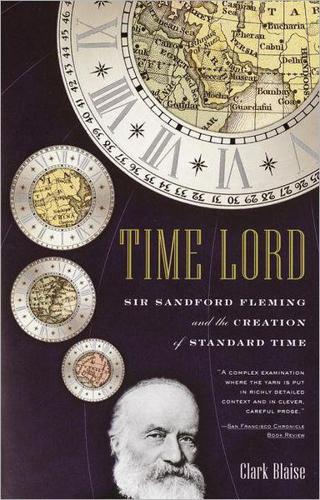
Time Lord: Sir Sandford Fleming and the Creation of Standard Time
by
Clark Blaise
Published 27 Oct 2000
Sociology and psychology fragmented time into investigative frames, showing, through microanalysis, the irrational to be familiar, and the “normal” to be nothing less than bizarre. Individuals learned they were strangers to their own motivations; societies were seen as structured around prejudice, superstition, and irrationality. In American factories, Frederick W. Taylor introduced “scientific management,” using the stopwatch instead of a stop-action camera to reduce the “natural” habits of laboring men and women to microanalyzable segments, with an aim toward improving productivity by replacing natural routine with rational efficiency. In painting, the impressionists broke with the careful perspective and shadowing of the Salon, the calculated posing and anecdotal portraiture, favoring instead bright shards of pure, unmodulated color, the painterly equivalent of stop-action.
…
Technical inventions such as Frederick Taylor’s stopwatch and the high-speed camera demonstrated our inherent physical frailty, our unconscious reliance on habit, and our physiological capacity for self-deception. Those vulnerabilities foretold the intellectual enterprise of the new social sciences—sociology, anthropology, scientific management, political science, psychology. For the most part, the social sciences brought unwelcome news: we’re less in control than we thought we were; less free, less virtuous, less enlightened. They also broke down the apparently natural continuity of observed human activity and interaction into discrete stills, stopped-time frames that would, ideally, yield up a clearer picture and deeper understanding of our unconscious motives.
…
New York: Viking Press, 1940. Marx, Leo. The Machine in the Garden: Technology and the Pastoral Ideal in America. New York: Oxford University Press, 1964. Morris, Richard. Time’s Arrows: Scientific Attitudes Toward Time. New York: Simon & Schuster, 1985. Nelson, Daniel. Frederick W. Taylor and the Rise of Scientific Management. Madison: University of Wisconsin Press, 1980. Newcomb, Simon, and Holden, Edward S. Astronomy for High Schools and Colleges. New York: Henry Holt & Co., 1881. North, J. D. The Measure of the Universe: A History of Modern Cosmology. New York: Dover Books, 1965. ____. Stonehenge: Neolithic Man and the Cosmos.
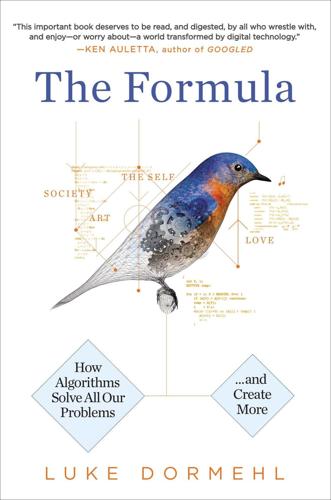
The Formula: How Algorithms Solve All Our Problems-And Create More
by
Luke Dormehl
Published 4 Nov 2014
For all its hiding behind the image of soft “servant leadership” the real thing an entity such as Google’s People Analytics group returns to prominence is the concept of “Taylorism.” Created in the early 20th century by engineer Frederick Taylor, the ideas behind Taylorism were outlined in a 1911 book called The Principles of Scientific Management.28 At the center of Taylor’s beliefs was the idea that the goal of human labor and thought should be increased efficiency; that technical calculation is always superior to human judgment; that subjectivity represents a dumbing-down of clear-thinking objectivity; and that whatever is unable to be quantified either does not exist or has no value.
…
In the Plex: How Google Thinks, Works, and Shapes Our Lives (New York: Simon & Schuster, 2011). 27 Manjoo, Farhad. “The Happiness Machine.” Slate, January 21, 2013. slate.com/articles/technology/technology/2013/01/google_people_operations_the_secrets_of_the_world_s_most_scientific_human.html. 28 Taylor, Frederick. The Principles of Scientific Management (New York: Norton, 1967, 1947). 29 Hogge, Becky. Barefoot into Cyberspace: Adventures in Search of Techno-Utopia (Saffron Walden, UK: Barefoot, 2011). 30 O’Connor, Sarah. “Amazon’s Human Robots: They Trek 15 Miles a Day Around a Warehouse, Their Every Move Dictated by Computers Checking Their Work.
…
(Comte) 114 PlentyOfFish 81 police, see law and law enforcement Pollock, Jackson 185 Poole, Steven 55 Popenoe, Paul 72 Popular Press, 1833–1865, The 177 Posner, Richard 155–56, 158–60, 168, 169 Poupyrev, Ivan 181 Poverty of Philosophy, The (Marx) 137n “precogs” 118 see also law and law enforcement predictive behavioral routing 22–23 “Predictive Policing” (McCue, Beck) 107 see also law and law enforcement PredPol 113 Present Shock (Rushkoff) 195 Principles of Psychology, The (James) 17 Principles of Scientific Management, The (Taylor) 42 Process Communication 22–24 Proust, Marcel 83 psychic energy 100–101 Punin, Nikolai 178 Pygmalion (Shaw) 102 Quantcast 18–20, 55, 107 Quantified Self movement 12–16 Queenan, Joe 167 Quetelet, Adolphe 114–18 Quora 30 “Race Against the Machine” (McAfee, Brynjolfsson) 217 Radin, Max 157 Raiders of the Lost Ark 161 Ramsay, Stephen 182–83, 187 RealCog 120 see also law and law enforcement reductio ad absurdum 37 Reiser, Stanley 142 Renoir, Pierre-Auguste 202 Rifkin, Jeremy 217 riots, UK (2011) 113 robo-cizing the world 13–15 Rochberg-Halton, Eugene 100 “Role of the Judge in the Twenty-First Century, The” (Posner) 156–57 Roth, Eric 167 Rothko, Mark 201 Rowling, J.

Empire of Illusion: The End of Literacy and the Triumph of Spectacle
by
Chris Hedges
Published 12 Jul 2009
Positive psychology is only the latest incarnation of this assault on community and individualism. A related ideology was lauded by Business Week in the early 1980s as the “New Industrial Relations.”16 It was touted as a new form of human management. It was also said to be “nicer” than the earlier “scientific management” and social engineering innovations of Henry Ford or Frederick Taylor.17 Roberto González, an anthropologist at San Jose State University, spent nine months in 1989 and 1990 as a student engineer at General Motors. He later wrote “Brave New Workplace: Cooperation, Control, and the New Industrial Relations,” a study on corporate work teams and “quality circles.”
…
Peer pressure--from a worker’s own team-- formed a strong disincentive for anyone to report a job-related injury to avoid having to wear the arm band. González in Brave New Workplace described a long and double-edged history of attempts to reconcile workers’ interests with those of corporations. It dated back to the “scientific management” methods of Frederick Taylor, who, in the name of efficiency, “‘streamlined’ assembly plants by conducting time-motion studies of each worker, breaking down each movement into a number of discrete steps, and then reorganizing them in a more efficient sequence by eliminating all unnecessary movements.”26 This dehumanization led Taylor’s disciples to take another approach.
…
Rosenthal, Joe Roth, Joseph Roth, Philip Rover (company) Rubin, Robert Rumsfeld, Donald Ruskin, John Russert, Tim Rwanda Sadism Salon.com Sam (FedEx Kinko’s trainee) San Jose State University Sands of Iwo Jima (movie) Satan Saul, John Ralston Savio, Mario Scheer, Robert Schumpeter, Joseph Schwartz, Charles Scientific management Second World War Securities and Exchange Commission, U.S. Select Committee on Intelligence Self-help books and specialists Seligman, Martin Senate Intelligence Committee September 11, 2001, terrorist attacks 700 Club (television show) Sex and the City (television show) Shadow Statistics Shetty, Shilpa Shopping Siegel, Bugsy Simon, Bob Simon, Scott Simpson, O.

Humans as a Service: The Promise and Perils of Work in the Gig Economy
by
Jeremias Prassl
Published 7 May 2018
Direct contact between consumers and workers may occur, of course, but the fact that you order your food from a waiter does not make that waiter an inde- pendent entrepreneur. 6. Frederick W. Taylor, The Principles of Scientific Management (Harper & Brothers 1919). 7. TaskRabbit, ‘Summer tasks’, http://www.taskrabbit.co.uk/m/summer-tasks, archived at https://perma.cc/49G5-3TPP; ‘Digital Taylorism’, The Economist (10 September 2015), http://www.economist.com/news/business/21664190- modern-version-scientific-management-threatens-dehumanise-workplace- digital, archived at https://perma.cc/97U5-FGBF 8. TaskRabbit, ‘Terms of service’, Introduction and clause 1, http://www.taskrab- bit.co.uk/terms, archived at https://perma.cc/WX39-9PJE 9.
…
In consequence, for a large number of workers, the reality of life as a Tasker, Driver-Partner, or Turker is more reminiscent of Victorian labourers’ daily grind than the glam- our of Silicon Valley: long hours for low wages, constant insecurity, and little legal protection—with no chance of a future upside. Life as a Micro-Entrepreneur Frederick Taylor’s 1911 Principles of Scientific Management promised to improve the efficiency of businesses across the world by means of close monitoring of workers, an emphasis on rigid control over discreet tasks, and ever- changing adjustment of pay structures in response to individual output.6 In reality, this translated into long dull hours under strict control and little pay, dehumanizing workers as drones on long assembly lines.

The Heart of Business: Leadership Principles for the Next Era of Capitalism
by
Hubert Joly
Published 14 Jun 2021
If financial incentives do not motivate us personally, why would we think they motivate others? I now believe financial incentives are: Outdated Misguided Potentially dangerous and poisonous Hard to get right in any event Let me elaborate. Financial incentives are outdated as they were designed for a different type of work Frederick Taylor based his approach of scientific management on the premise that, as work was a tedious and unenjoyable means to an end (see chapter 2), the only way to motivate an otherwise unmotivated workforce was money. Indeed, the narrowing of focus that incentives bring about, though terrible for innovation and lateral thinking, helps speed up simple tasks.
…
It may be tempting in the short term, but you keep shouldering more weight, which will crush you. If Maurice got involved at the district level, he would be doing the regional managers’ job on their behalf. Instead, he had to let them stand on their own feet. This was a long way from the scientific management and strategic planning approach I had been schooled in, which former secretary of defense Robert McNamara exemplified. The approach was to plan, organize, direct, and control, based on the idea that management could be a pure science. A small team of smart people at the top, informed by data and statistical analysis, decided on a rational plan, which then trickled down.
…
A., 228 Minneapolis Institute of Art, 204 minority employees, 90–91, 152, 159–164 Mohan, Mike, 83, 158 Morhaime, Mike, 85 Mulally, Alan, 42–44, 115, 153–154 Musset, Alfred de, 37 Nacchio, Joseph, 214 Nadal, Rafael, 191 Nadella, Satya, 198–199 Napoleon, 200–201 Naraine, Gayatri, 238n7 Nelsen, Keith, 161 New England Conservatory, 189–190 Newman, John Henry, 195 Niedenthal, Paula, 214 Nike, 89, 172 Nikon, 86 Nissan, 214 Noska, Matt, 100 O’Reilly, Charles, 152 Pacino, Al, 192 participative process, 173–175 perfectionism counterproductive striving for, 38–39, 42–43, 45 fear of failure and, 44, 45 feedback as critique of, 39–42 good-enough plans vs., 110–112 human connection effects of, 38, 42, 45 “I don’t know” acceptability vs., 44 imperfection vs., embracing, 38, 41–45 leadership insertion and, 40, 46–47 mental health effects of, 42 outstanding performance vs., 38 problems with, 37–47 religious and theological views of, 37–38, 39 performance assessments of, 188–191, 235 (see also feedback) autonomy improving, 169 feedback evaluating, 39–42, 155 financial incentives not driving, 125–129, 243n4 human connections driving, 148–151 individual development of, 184–185, 189–191 irrational performance with human magic, 6, 117, 181 mastery in, 181–193, 245n3(ch 12) metrics for, 94, 100–101, 113, 130, 184–185, 186–187 outstanding, perfection vs., 38 problems with, embracing and improving, 42–44 (see also vulnerability, encouraging) rankings of, 45, 189 self-assessments of, 188–189 strength building and, 190–191 personal experiences, sharing, 147–148, 155–156 Pew Research Center, 28, 240n1 Pfeffer, Jeffrey, 152 Pink, Daniel, 126, 167 Pliner, Eric, 46–47, 157–158, 170–171 Polgar, Alfred, 238n13 Polman, Paul, 89 Porter, Michael, 218 productivity, 15, 16, 17, 185 profits corporate blind pursuit of, 4, 6, 61, 183 dangers of singular focus on, 57–59 employee engagement and, 15, 17, 57, 61–62 healthy approach to, 62 as misleading measure of economic performance, 56–57 as outcome of excellence, 64, 68, 73–74 scandals due to excessive focus on, 59 shareholder value and, 6, 51, 54–62, 63–65, 74, 192 stakeholders antagonized by singular focus on, 59–61 PTC, 57 Publicis, 111 Puerto Rican hurricane relief, 138–140 purpose of business, 4–5, 6–7, 51, 63–65, 233 (see also purposeful human organizations) discovery of personal, 29–32, 30f employees driven by, 32–34, 61–62, 65–68, 66f, 74, 133–145 framing in meaningful, human, and authentic way, 142–144 growth tied to, 203–204 of incentives, 129–131 leader’s clarity of, 222–223 “noble purpose,” 6, 66–71, 66f, 75, 79–95, 135, 203, 233 shareholder value maximization as, fallacy of, 6, 51, 54–62, 63–65 of work, 11, 23–28, 31, 32–35 purposeful human organizations active engagement with purpose in, 79–95 aspirational goals and vision in, 70 capitalism reinvention by, 62, 65, 73, 74–77 community support and connections in, 68, 72, 88–91 customer delight as goal of, 83–85 customer loyalty to, 64, 67–68, 71–72, 74 employees driven by purpose in, 61–62, 65–68, 66f, 74 environmental and social issues addressed in, 72, 74, 75–76, 88–91, 92, 94 examples of, 72–73 human connections fostered in, 65–77, 66f human magic in (see human magic) inspiration from purpose in, 70–72 interdependence in, 66f, 68 management practices in, 93–95 overview of, 6, 51 profits as outcome of excellence in, 64, 68, 73–74 shareholders rewarded in, 91–92 shareholder value maximization fallacy for, 6, 51, 53–62, 63–65 stakeholders embraced and mobilized in, 82–92 strategy based on purpose in, 66, 74–75, 80–82 supplier and competitor partnerships in, 68, 85–88 turnarounds in, 51, 57, 69, 85, 91–93, 95, 97–117 purposeful leadership articulating principles of, 221 authenticity of, 228–229 clarity of purpose in, 222–223 clarity of role in, 223–224 clarity of service goals in, 224–226 five “Be’s” of, 222–229 overview of, 6, 209 values driving, 218, 226–228 Qwest, 214 racial and ethnic minority employees, 90–91, 152, 159–164 Radio Shack, 2 Radisson Hotels, 41 Ralph Lauren Corporation, 72–73, 89, 143, 202 Rankin, Howard, 162 RASCI (responsible, accountable, supporting, consulted, or merely informed) decision making model, 47, 171–172 rating agencies, calls for action, 235 regulators, calls for action, 235 religion and theology effort vs. outcome focus in, 183–184, 245n3(ch 12) interdependence philosophy echoing, 68 perfection views in, 37–38, 39 purpose discovery using, 29 spirituality as driving force, 138 work views in, 18–19, 24–26, 183, 238n7, 238n11 remote working, 176–177 Rezidor Hotel Group, 199 Rickover, Hyman G., 79 Ritter, Kurt, 199 role modeling, 141 ROWE (results only work environment), 176–177 Sacilor, 213 safety, environment of, 150–151, 153–154, 193, 227–228 Saksena, Asheesh, 197–199 Salesforce, 54, 89–90 Samsung Electronics, 86–87, 196 Samuel (Father), 37–39, 41, 47 Scarlett, Kamy, 144, 147–148, 152, 153, 190 Schmidt, Chris, 184–185, 186 Schulze, Dick, 1–2, 102–104, 110, 123–125 scientific management, 127, 168 Sears, 58 service customer, 14–15, 21, 31, 34 leader’s clarity of goals for, 224–226 purpose tied to, 6, 30–31, 51, 67–68, 69, 75, 242n14 work as opportunity for, 27–28, 238n7 SFR, 57 shareholders business connection to, 68 calls for action for, 235 environmental and social issue importance to, 60–61, 241nn11–12 expectations for businesses, 4 positive environment creation for, 114–115 responsible investments of, 241n11 rewarding, 91–92 shareholder value, 6, 51, 54–62, 63–65, 74, 192 transparency with, 115–116 shareholder value Best Buy’s, 58–59, 61, 192 dangers of singular focus on, 57–59 employee engagement and, 61–62 healthy approach to, 62 maximization of, fallacy of business purpose as, 6, 51, 54–62, 63–65 as misleading measure of economic performance, 56–57 purposeful and human approach improving, 74 scandals due to excessive focus on, 59 stakeholders antagonized by singular focus on, 59–61 Sheth, Jag, 73 Shin, J.

Tomorrow's Capitalist: My Search for the Soul of Business
by
Alan Murray
Published 15 Dec 2022
Some of this is inherent in the changing nature of business itself. It was Frederick Winslow Taylor who laid the groundwork for the twentieth-century view of “scientific management.” Work could be broken into individual components, he argued, and workers could be given a task to complete. Strategy was conceived at the top of the organization, and orders cascaded down the hierarchy. As my Fortune colleague Geoffrey Colvin put it, scientific management was all about making humans act more like machines. Each was a cog in the great wheel. But the source of value has shifted from machines to people. The flow of information has moved from hierarchical to omnidirectional.
…
The path to bankruptcy is littered with retailers like Sears and others that focused more on short-term profits than on investing in talent and better serving customers. My central message in this book is that a new age of business requires the new approach to leadership exemplified by Joly. Joly puts Milton Friedman, who articulated the doctrine of shareholder primacy, and Robert McNamara, who instituted scientific management at Ford, at the top of his “FBI most wanted” list. “This is what got us in trouble. So much of what I learned in business school is either wrong, dated, or at best incomplete.” The new model, he said, requires leaders who can create “an environment that unleashes human magic, rather than pretend they can come up with all the answers.”

The Third Industrial Revolution: How Lateral Power Is Transforming Energy, the Economy, and the World
by
Jeremy Rifkin
Published 27 Sep 2011
The new brands established predictable pricing of products and standardized product quality, transforming consumption into a rational process that guaranteed uniformity across national markets. The rationalization of production and distribution of products required a rationalization of the workforce itself. Frederick Taylor became the first management expert. His theory of scientific management was designed to recast the persona of the worker to comport with the operational standards that were used to maintain new, centralized, corporate bureaucracies. Taylor used efficiency principles already developed by engineers and applied them to workers with the expectation of turning them into living machines, whose performance could be optimized, much like the continuous production processes churning out standardized products.
…
He wrote: The work of every workman is fully planned out by the management at least one day in advance, and each man receives in most cases complete written instructions, describing in detail the task which he is to accomplish, as well as the means to be used in doing the work. . . . [T]his task specifies not only what is to be done but how it is to be done and the exact time allowed for doing it.8 The principles of scientific management quickly crossed over from the factory floor and commercial offices into the home and community, making efficiency the cardinal temporal value of the new industrial age. Henceforth, maximizing output with the minimum input of time, labor, and capital became the sine qua non for directing virtually every aspect of life in contemporary society.
…
Knowledge, according to Bruffee and other educational reformers, is a social construct, a consensus among the members of a learning community.17 If knowledge is something that exists between people and comes out of their shared experiences, then the way our educational process is set up is inimical to deep learning. Our schooling is often little more than a stimulus-response process, a robotic affair in which students are programmed to respond to the instructions fed into them—much like the standard operating procedures of scientific management that created the workers of the First and Second Industrial Revolutions. Peer-to-peer learning shifts the focus from the lone self to the interdependent group. Learning ceases to be an isolated experience between an authority figure and student and is transformed into a community experience.18 Students are dividing up into small working groups and tasked with specific assignments.

Exponential: How Accelerating Technology Is Leaving Us Behind and What to Do About It
by
Azeem Azhar
Published 6 Sep 2021
Bundy’s invention represented an early move towards a more scientific, regulated, empirical system of people management. Since Bundy’s time – he died in 1907 – methods of managing employees became progressively more sophisticated. Methods like Bundy’s would be applied systematically across industries. The tipping point was the rise of scientific management, pioneered by Frederick Winslow Taylor. Like Mark Zuckerberg more than a century later, Taylor attended the prestigious boarding school Phillips Exeter Academy before attending – and dropping out of – Harvard. He went on to work in a machine shop in the steel industry at the age of 19. During his experiences on the shop floor, he noted that workers soldiered at a ‘slow easy gait’ because of a ‘natural laziness’.
…
This system of management works like Taylorism on steroids – with all the dehumanising downsides but without the commensurate high pay or job stability. One Amazon worker’s claim, reported in The Guardian, that the company leaders ‘care more about the robots than they care about the employees’ encapsulates one of the oldest criticisms of scientific management.73 Except, this time round, workers don’t have the collective bargaining power they once did. In the ultra-Taylorist companies of the twenty-first century, the power balance is skewed heavily in the favour of bosses. Amazon automatically fires about 10 per cent of its factory staff annually, for not being able to move packages through the system quickly enough.74 The company’s ‘proprietary productivity metric’, which dictates how quickly workers must process each order, gets our one-day Prime deliveries to us on time.
…
Lyft’, Bloomberg Second Measure, 2020 <https://secondmeasure.com/datapoints/rideshare-industry-overview/> [accessed 23 September 2020]. 54 ‘Gig Economy Research’, Gov.uk, 7 February 2018 <https://www.gov.uk/government/publications/gig-economy-research> [accessed 21 September 2020]. 55 Ravi Agrawal, ‘The Hidden Benefits of Uber’, Foreign Policy, 16 July 2018 <https://foreignpolicy.com/2018/07/16/why-india-gives-uber-5-stars-gig-economy-jobs/> [accessed 21 September 2020]. 56 Department for Business, Energy & Industrial Strategy, ‘Gig Economy Research’, Gov.uk, 7 February 2018 <https://www.gov.uk/government/publications/gig-economy-research> [accessed 21 September 2020]. 57 Directorate General for Internal Policies, The Social Protection of Workers in the Platform Economy, Study for the EMPL Committee, IP/A/EMPL/2016-11 (European Parliament, 2017). 58 Nicole Karlis, ‘DoorDash Drivers Make an Average of $1.45 an Hour, Analysis Finds’, Salon, 19 January 2020 <https://www.salon.com/2020/01/19/doordash-drivers-make-an-average-of-145-an-hour-analysis-finds/> [accessed 27 March 2021]. 59 Kate Conger, ‘Uber and Lyft Drivers in California Will Remain Contractors’, New York Times, 4 November 2020 <https://www.nytimes.com/2020/11/04/technology/california-uber-lyft-prop-22.html> [accessed 12 January 2021]. 60 Mary-Ann Russon, ‘Uber Drivers Are Workers Not Self-Employed, Supreme Court Rules’, BBC News, 19 February 2021 <https://www.bbc.com/news/business-56123668> [accessed 29 March 2021]. 61 ‘Judgement: Uber BV and Others (Appellants) v Aslam and Others (Respondents)’, 19 February 2021 <https://www.supremecourt.uk/cases/docs/uksc-2019-0029-judgment.pdf> [accessed 19 March 2021]. 62 ‘Frederick Winslow Taylor: Father of Scientific Management Thinker’, The British Library <https://www.bl.uk/people/frederick-winslow-taylor> [accessed 29 March 2021]. 63 Nikil Saval, Cubed: A Secret History of the Workplace (New York: Anchor Books, 2015), p. 42. 64 Saval, Cubed, p. 56. 65 Alex Rosenblat, Tamara Kneese and danah boyd, Workplace Surveillance (Data & Society Research Institute, 4 January 2017) <https://doi.org/10.31219/osf.io/7ryk4>. 66 ‘In March 2017, the Japanese Government Formulated the Work Style Reform Action Plan.’, Social Innovation, September 2017 <https://social-innovation.hitachi/en/case_studies/ai_happiness/> [accessed 6 October 2020]. 67 Alex Hern, ‘Microsoft Productivity Score Feature Criticised as Workplace Surveillance’, The Guardian, 26 November 2020 <http://www.theguardian.com/technology/2020/nov/26/microsoft-productivity-score-feature-criticised-workplace-surveillance> [accessed 1 April 2021]. 68 Stephen Chen, ‘Chinese Surveillance Programme Mines Data from Workers’ Brains’, South China Morning Post, 28 April 2018 <https://www.scmp.com/news/china/society/article/2143899/forget-facebook-leak-china-mining-data-directly-workers-brains> [accessed 6 October 2020]. 69 Robert Booth, ‘Unilever Saves on Recruiters by Using AI to Assess Job Interviews’, The Guardian, 25 October 2019 <http://www.theguardian.com/technology/2019/oct/25/unilever-saves-on-recruiters-by-using-ai-to-assess-job-interviews> [accessed 6 October 2020]. 70 Chartered Institute of Personnel and Development, ‘Workplace Technology: The Employee Experience’ (CIPD: July 2020) <https://www.cipd.co.uk/Images/workplace-technology-1_tcm18-80853.pdf> [accessed 19 May 2021]. 71 Sarah O’Connor, ‘When Your Boss Is an Algorithm’, Financial Times, 7 September 2016 <https://www.ft.com/content/88fdc58e-754f-11e6-b60a-de4532d5ea35> [accessed 3 August 2020]. 72 Tom Barratt et al., ‘Algorithms Workers Can’t See Are Increasingly Pulling the Management Strings’, Management Today, 25 August 2020 <http://www.managementtoday.co.uk/article/1692636?
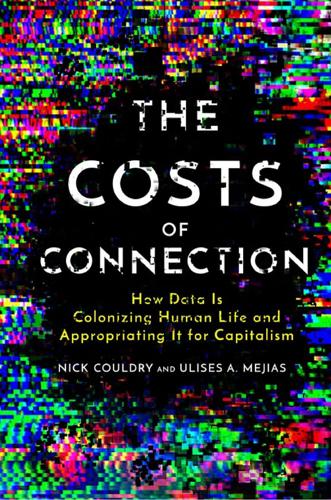
The Costs of Connection: How Data Is Colonizing Human Life and Appropriating It for Capitalism
by
Nick Couldry
and
Ulises A. Mejias
Published 19 Aug 2019
By contrast, data-driven logistics, built on infrastructures of connection and fueled by artificial intelligence, convert all aspects of production—far beyond the factory walls and in every corner and moment of a transnational supply chain—into a managed assembly line. The new infrastructure of data processing that sustains data relations extends so-called scientific management in ways that recall classic diagnoses of industrial capitalism: “The image of the process, removed from production to a separate location and a separate group, controls the process itself.”69 Through data, capitalism begins to govern the whole social domain with management logic, another aspect of its annexation of human life.
…
Polanyi (Great Transformation, 78–79) had a similar formulation when he analyzed industrial capitalism in terms of “fictional commodities”: the transformation of work into “labor,” land into “real estate,” and exchange into “money.” Building on Polanyi, Zuboff (“Big Other,” 84) argues that “reality” is now being turned into tracked “behaviour.” 67. The Economist, “Data Is Giving Rise to a New Economy,” May 6, 2017. 68. We are condensing here the three principles of “scientific management” in Braverman, Labor, 78–82. 69. Braverman, Labor, 87. 70. Capitalism here aims at the state in which, as Marx (Capital, vol. I, 952) put it, “All the means of labour . . . now also serve as ingredients in the valorization process. Where they are not converted into actual money, they are converted into accounting money.”
…
Pomeranz argues that “slavery helped make Euro-American trade unlike any between Old World cores and peripheries” (267) by making “the flow of needed resources to Europe self-catalyzing in ways that consensual trade between Old World regions was not: it anticipated, even before industrialization, the self-perpetuating division of labor between primary products exporters and manufacturing regions in the modern world” (24). 17. Tomich and Zeuske, “Second Slavery,” 91. 18. Baptist, “Political Economy,” 40. 19. Rosenthal, “Slavery’s Scientific Management”; and Baptist, “Political Economy.” 20. Tomich and Zeuske, “Second Slavery.” 21. Shilliam, “Redemptive Political Economy,” 51. 22. Bartley, “Hidden Costs of Computing.” 23. Qiu, iSlave, 11. 24. Beckert and Rockman, Slavery’s Capitalism, 1. 25. Sa’di, “Colonialism and Surveillance,” 151. 26.

The Glass Cage: Automation and Us
by
Nicholas Carr
Published 28 Sep 2014
Once a manufacturer had broken an intricate process into a series of well-defined “simple operations,” it became relatively easy to design a machine to carry out each operation. The division of labor within a factory provided a set of specifications for its machinery. By the early years of the twentieth century, the deskilling of factory workers had become an explicit goal of industry, thanks to Frederick Winslow Taylor’s philosophy of “scientific management.” Believing, in line with Smith, that “the greatest prosperity” would be achieved “only when the work of [companies] is done with the smallest combined expenditure of human effort,” Taylor counseled factory owners to prepare strict instructions for how each employee should use each machine, scripting every movement of the worker’s body and mind.29 The great flaw in traditional ways of working, Taylor believed, was that they granted too much initiative and leeway to individuals.
…
Bates, “Clinical Decision Support and the Law: The Big Picture,” Saint Louis University Journal of Health Law and Policy 5 (2012): 319–324. 24.Atul Gawande, The Checklist Manifesto: How to Get Things Right (New York: Henry Holt, 2010), 161–162. 25.Lown and Rodriguez, “Lost in Translation?” 26.Jerome Groopman, How Doctors Think (New York: Houghton Mifflin, 2007), 34–35. 27.Adam Smith, The Wealth of Nations (New York: Modern Library, 2000), 840. 28.Ibid., 4. 29.Frederick Winslow Taylor, The Principles of Scientific Management (New York: Harper & Brothers, 1913), 11. 30.Ibid., 36. 31.Hannah Arendt, The Human Condition (Chicago: University of Chicago Press, 1998), 147. 32.Harry Braverman, Labor and Monopoly Capital: The Degradation of Work in the Twentieth Century (New York: Monthly Review Press, 1998), 307. 33.For a succinct review of the Braverman debate, see Peter Meiksins, “Labor and Monopoly Capital for the 1990s: A Review and Critique of the Labor Process Debate,” Monthly Review, November 1994. 34.James R.
…
O., 62 robotics, robots, 2, 6, 13, 19–20, 29, 30, 33, 39–41, 118, 153, 156, 219, 225, 227, 257n capabilities of, 8, 9 essence of, 36 ethical questions about, 183–93, 204 killer, 187–93, 198, 204 speed of, 186 Rodriguez, Dayron, 103 Roomba, 185 Royal Air Force, 49 Royal Bank of Canada (RBC), 170–71 Royal Majesty (ship), 68 Rubin, Charles, 186 Russell, Bertrand, 21, 39 Rybczynski, Witold, 142 safety, 46, 53–59, 61, 91, 154, 169, 170, 184, 207 safety alert for operators (SAFO), 1, 170 Saint-Exupéry, Antoine de, 51, 53 Sarter, Nadine, 162 satisfaction, 14, 16, 17, 85, 132 Scerbo, Mark, 91 Schön, Donald, 143, 144 Schüll, Natasha Dow, 179n Schulman, Ari, 133 Schumacher, Patrik, 141 Science, 73, 79, 219 scientific management (Taylorism), 107, 114, 158, 207 scientists, science, 46, 151, 155, 159, 160, 214, 217 scythe, 218–19, 221, 222, 224 search engines, 78–80, 206–7 self, 132, 161, 205–6, 216–17, 220 self-consciousness, jail of, 16 self-fulfillment, 24, 85, 157, 161 self-interest, 59–60 self-renewal, 132 senses, 8, 69, 83, 131, 134, 149–51, 201, 217, 219 sensors, sensing mechanism, 8, 36, 38, 46, 52 Shanghai Tower, 167 Shaw, Rebecca, 43–44 ships, 36–37, 68 Shop Class as Soulcraft (Crawford), 147–48 Shushwap tribe, 228–29, 232 Silicon Valley, 7, 33, 133, 194, 226, 227 Simons, Daniel, 201 simplicity, 180, 181 Singhal, Amit, 78–79 60 Minutes (TV show), 29 Sketchpad, 138 SketchUp, 146 Skidelsky, Robert, 31–32 Skiles, Jeffrey, 154 skill fade, 58 skills, 80–85, 161, 216–17, 218, 219 degradation of, 106–12, 125–31, 157 see also specific skills skill tunneling, 202 Skinner, B.

The Great Fragmentation: And Why the Future of All Business Is Small
by
Steve Sammartino
Published 25 Jun 2014
Given that the dawn of the industrial revolution was in the late 1700s, and if we use 30 as an average age for a new parent (it used to be much lower), we’re living through a nine-times generational shift in lifestyle and economic understanding. This is a significant amount of indoctrination handed down from parents and employers of how things should be done and what works in this world. It’s pretty hard to unlearn all of this, especially when most of it has been proven empirically. We can thank Fredrick W. Taylor and his scientific management techniques2 for the overly rational and logical approach to business. Taylor believed that workers could be regarded as cogs in the overriding industrial machine and that the tasks undertaken by workers could be analysed down to a minute level of movement and time and then designed, iterated and improved for the ultimate in efficiency.
…
The technology revolution means that many industrial-era ideas and markets will be leap-frogged by developing economies. Notes 1 http://60secondmarketer.com/blog/2011/10/18/more-mobile-phones-than-toothbrushes and also www.chartsbin.com/view/1881 2 Frederick Winslow Taylor, The Principles of Scientific Management: http://books.google.com.au/books?id=HoJMAAAAYAAJ&pg=PA3&redir_esc=y CHAPTER 3 The social reality: beyond the surface of social media Social media is only a small part of the change we’re living through; it’s a surface indicator or a symptom of the times. The fact that all of it has been enabled by an omnipresent and ultra-cheap space race in technology tells us much more about why it matters.
…
INDEX 3D printing access and accessibility see also barriers; communication; digital; social media — factors of production — knowledge adoption rates advertising see also marketing; mass media; promotion; television Airbnb Alibaba Amazon antifragility Apple artisanal production creativity audience see also crowd — connecting with — vs target Away from Keyboard (AFK) banking see also crowdfunding; currencies barriers Beck (musician) big as a disadvantage bioengineering biomimicry biotechnology bitcoins blogs borrowed interest brand business strategies change see disruption and disruptive change Cluetrain Manifesto co-creation coffee culture Cold War collaboration collaborative consumption collective sentience commerce, future see also retail and retailers communication see also advertising; promotion; social media; social relationships — channels — tools community vs target competition and competitors component retail computers see also connecting and connection; internet; networks; smartphones; social media; software; technology era; 3D printing; web connecting and connection see also social media; social relationships — home/world — machines — people — things consumerism consumption silos content, delivery of coopetition corporations see also industrial era; retail and retailers; technology era costs see also finance; price co-working space creativity crowd, contribution by the crowdfunding cryptocurrencies culture — hacking — startup currencies see also banking deflation demographics device convergence digital see also computers; internet; music; smartphone; retail and retailers, online; social media; social relationships; technology; web; work — cohorts — era — footprint — revolution — skills — strategy — tools — world disruption and disruptive change DNA as an operating system drones Dunbar's number e-commerce see retail and retailers, online economic development, changing education employment, lifetime see also labour; work ephermalization Facebook see also social media finance, peer to peer see also banking; crowdfunding; currencies Ford, Henry 4Ps Foursquare fragmentation — of cities — industrial — Lego car example gadgets see also computers; smartphone; tools games and gaming behaviour gamification geo-location glass cockpit Global Financial Crisis (GFC) globalisation Google hacking hourglass strategy IFTTT (If this then that) industrialists (capital class) industry, redefining industrial era see also consumerism; marketing; retail and retailers — hacking — life in influencers information-based work infrastructure — changing — declining importance of — legacy innovation intention interest-based groups see also niches interest graphs internet see also access and accessibility; connecting and connection; social media; social relationships; web Internet.org In Real Life (IRL) isolation iTunes see also music Jumpstart Our Business Startups (JOBS) Act (USA) keyboards knowledge economy lab vs factory labour see also work — low-cost language layering legacy — industries — infrastructure — media Lego car project life — in boxes — in gaming future — hack living standards see also life location see place, work making see also artisanal production; retail and retailers; 3D printing malleable marketplace manufacturing see also artisanal production; industrial era; making; product; 3D printing; tools — desktop marketing see also advertising; consumerism; 4Ps; mass media; promotion; retail and retailers — demographics, use in — industrial era — language — mass — metrics — new — post-industrial — predictive — research — target — traditional mass media ; see also advertising; marketing; media; promotion; television — after materialism media see also communication; legacy; mass media; newspapers; niches; television — consumption — hacking — platform vs content — subscription Metcalfe's law MOOC (Massive Open Online Course) Moore's law music Napster Netflix netizens networks see also connecting and connection; media; social media; social relationships newspapers see also media niches nodes nondustrial company Oaida, Raul oDesk office, end of the omniconnection era open source parasocial interaction payment systems Pebble phones, number of mobile see also smartphones photography Pinterest piracy place — of work platforms pop culture power-generating technologies price see also costs privacy see also social media; social relationships product — unfinished production see also industrial era; product; 3D printing — mass projecteer Project October Sky promotion see also advertising; marketing; mass media; media quantified self Racovitsa, Vasilii remote controls RepRap 3D printer retail cold spot retail and retailers — changing — digital — direct — hacking — mass — online — price — small — strategies — traditional rewards robots Sans nation state economy scientific management search engines self-hacking self-publishing self-storage sensors sharing see also social media; social relationships smartphones smartwatch social graphs social media (digitally enhanced conversation) see also Facebook; social relationships; Twitter; YouTube social relationships see also social graphs; social media — digital software speed subcultures Super Awesome Micro Project see Lego car project Super Bowl mentality target tastemakers technology see also computers; digital; open source; social media; smartphones; social relationships; software; 3D printing; work — deflation — era — free — revolution — speed — stack teenagers, marketing to television Tesla Motors thingernet thinking and technology times tools see also artisanal production; communication; computers; digital; making; smartphones; social media; 3D printing — changing — old trust Twitter Uber unlearning usability gap user experience volumetric mindset wages — growth — low — minimum web see also connecting and connection; digital; internet; retail and retailers, online; social media; social relationships — three phases of — tools Wikipedia work — digital era — industrial era — location of — options words see language Yahoo YouTube Learn more with practical advice from our experts WILEY END USER LICENSE AGREEMENT Go to www.wiley.com/go/eula to access Wiley’s ebook EULA.
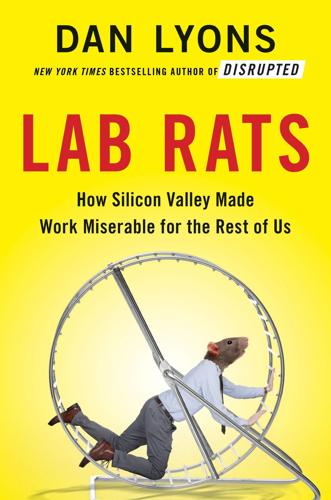
Lab Rats: How Silicon Valley Made Work Miserable for the Rest of Us
by
Dan Lyons
Published 22 Oct 2018
Steel, Sears Roebuck, General Electric—and nobody knew how to run them. Big universities started founding business schools in the early decades of the twentieth century, and the business schools needed something to teach, so they taught Taylorism. Taylor’s best-known work, The Principles of Scientific Management, was published in 1911 and became the biggest-selling business book of the first half of the twentieth century. Armed with Taylor’s theories, an army of mini Taylors with freshly minted MBAs marched into the corporate world. A century later, the MBA has become the most popular master’s degree in the United States, with universities churning out 185,000 of them each year.
…
Radical Candor: Be a Kick-Ass Boss Without Losing Your Humanity. New York: St. Martin’s Press, 2017. Sloan, Alfred P., Jr. My Years with General Motors. New York: Doubleday, 1963. Stewart, Matthew. The Management Myth: Debunking Modern Business Philosophy. New York: W. W. Norton and Company, 2009. Taylor, Frederick W. The Principles of Scientific Management. New York: Cosimo Classics, 2006. Thiel, Peter, and Blake Masters. Zero to One: Notes on Startups, or How to Build the Future. New York: Currency, 2014. Ton, Zeynep. The Good Jobs Strategy: How the Smartest Companies Invest in Employees to Lower Costs and Boost Profits. Boston: Houghton Mifflin Harcourt, 2014.
…
Chapter 3: A Very Brief History of Management Science (and Why You Shouldn’t Trust It) Lashinsky, Adam. “How ‘The Lean Startup’ Turned Eric Ries into an Unlikely Corporate Guru.” Fortune, February 22, 2018. http://fortune.com/2018/02/22/lean-startup-eric-ries. Lepore, Jill. “Not So Fast: Scientific Management Started as a Way to Work. How Did It Become a Way of Life?” New Yorker, October 12, 2009. https://www.newyorker.com/magazine/2009/10/12/not-so-fast. “Poor Man’s Agile: Scrum in 5 Simple Steps.” Hacker News. Last modified March 22, 2013. https://news.ycombinator.com/item?id=5406384. “Who Should the Scrum Master Report To?”
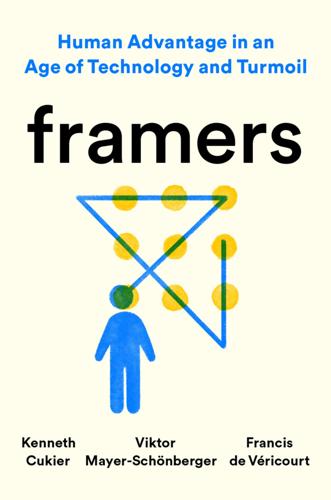
Framers: Human Advantage in an Age of Technology and Turmoil
by
Kenneth Cukier
,
Viktor Mayer-Schönberger
and
Francis de Véricourt
Published 10 May 2021
It is a world of inklings, passions, and appetites—wild fits of fury perfectly excusable as expressions of one’s humanity. When British and American landscapers make urban parks resemble rambling nature, it is an unwitting nod to Rousseau’s outlook. The same dichotomy played out in twentieth-century business. Frederick Taylor’s influential theory of scientific management aimed to quantify every aspect of a company’s operations. Managers armed with stopwatches and clipboards paraded the factory floor to ensure productivity. Yet the century ended with the celebrated success of GE’s voluble chief executive Jack Welch, whose business autobiography was aptly subtitled Straight from the Gut.
…
See also entries beginning with cognitive adhering to well-honed mental models as default of, 127, 179, 207 agility of mind, 215–218 causality as foundation of, 12 of children, 80–82 counterfactuals as form of evolution of, 93–94 counterfactuals as natural to, 77 creating model of world as main purpose of, 226 defining characteristics of, 211 dimensions of, 13 dissonance of reframing, 140 as essence of humanness, 180 fundamental nature of framing to, 5 homogeneity of, as death of counterfactuals, 207 hyper-rationalists and ultra-emotionalists and uniqueness of, 18 importance of pluralism to, 181 mental models as fundamental to, 5, 11, 25, 26, 208 mental models reduce load on, by focusing, 11–12 mutability and, 106–107 preference for processing efficiently, 110 restrictions on, 175–176 science and understanding, 206 as simulation of reality, 26 social structure’s belief in validity of dominant mental model and, 179 terrrorists’ consistency, 213 human progress, 19–21 Hume, David, 68 hyper-rationalists scientific management theory, 17 technology as answer to problems, 15–16, 69, 210–211 IBM, 182 IKEA, 129–130 imagination advantages and disadvantages of lively, 38 agility of mind and, 218 AI lacks, 119 constraints and, 47, 220 counterfactuals and, 76, 79, 90 enabled by frames, 26, 33 literature and, 82–85 tolerance and, 192–193 values and, 39 immigration, 191–194 implicit knowledge and counterfactuals, 90–91 information, free flow of, 215 “insight problems,” 152 instinct, 16–17, 69 Internet Protocol, 132 inventions, changing frames for, 10 irrationality and humanness, 16 Israel, 97–100, 101, 107, 115 Jobs, Steve, 149, 150–151, 159, 194 Johnson-Laird, Philip, 226 Joy, Bill, 165 Kaepernick, Colin, 6 Kahneman, Daniel, 10, 90 Kamprad, Ingvar, 129 Kaplan, Craig, 152 Kay, Alan, 158–159, 241 Kennedy, John F., 89–90, 234 Kim, W.
…
See also alternative realities causality enables comprehension and explainability of, 52, 60 constraints as impacting current, 117–118 frames simplify, 9 human cognition as simulation of, 26 human comprehension of, through analogies, 230 order in, 71 of terrorists, 214 Redd, Dana, 135 reframing characteristics of individuals involved in, 136–137 circumstances surrounding, 140–141 difficulty of repeatedly, 138–139 difficulty of unlearning, 140 efficiently, 129–131, 144 effort demanded by, 139–140 examples of, 123–126, 202–203 failure and, 132–133 frequency of, 11, 143 impacts of inventions on, 10 importance of mental diversity when, 162–163 paradigm shifts and, 10–11 provides new options, 126 by reinvention, 131–132, 220 by repertoire riffling, 13–14, 128–129, 220 by repurposing, 129–131, 203–204, 220 as revolutionary act, 133 as riskier and potentially more rewarding than staying with existing mental models, 209 tendency to coalesce around consensus position when, 164 timing of, 141–142 Regional Advantage (Saxenian), 183 Remarque, Erich Maria, 83–84 The Republic (Plato), 77 responsibility, 64, 65–66 right-wing populists, governance by innate sense of rightness of one’s beliefs, 16 The Rise of the Creative Class (Florida), 192 Rorschach tests, 6 Rousseau, Jean-Jacques, 16–17, 80, 132 Sacco, Joe, 135 same-sex marriage campaign (US), 188–190 Sapiens (Harari), 79 SARS, 31, 32 Saxenian, AnnaLee, 183 Schwartz, Peter, 111–113 Science, 163–164 sciences broadening range of frames, 160–161, 241 China versus Europe, 184–185 development of drugs, 2–3 free flow of information and, 215 invention of new frames and physics, 7–8 reframing in, 131–132, 137 tension between mental models in, 160 understanding human cognition and, 206 scientific management theory, 17 scientific method, 67 self-driving cars, 92–93 Semmelweis, Ignaz, 60–61, 62 Seuss, Dr. (Geisel), 101–102, 103 sexual harassment in Hollywood, 23–24 Shklar, Judith, 197–198 Shomron, Dan, 97, 98, 99, 107 Simon, Herbert, 152 simulations, importance of, 115–117 Singapore, 144–145 “singularity,” 15 Smalltalk, 159, 241 social coordination human understanding of need for, 57–58 individual and, 221 as marker apex of our past and elixir of our future, 205–206, 208 social structures agency and, 66 belief in validity of dominant mental models, 179 benefits from pluralism to, 176 Camden, New Jersey, police force, 134–136 constraints as impacting, 117–118 friction resulting from pluralism, 194–195 mutability and, 107 pluralism and survival of, 177–178 rise and fall of, and mental diversity, 183–185 role of “loyal opposition”/court jester, 168–169 tendency toward homophily, 89, 162, 234 solutions advantages of variation when identifying, 166–167, 176 from faulty mental models, 60–61 framing need for efficient, 144 hyper-rationalists’ reliance on technology, 15–16, 69 mental models as means of finding, 4–5, 8, 38–39 Occam’s razor, 108 “Some Philosophical Problems from the Standpoint of Artificial Intelligence” (McCarthy), 44 Soviet Union, Lysenkoism, 7 space exploration mental models and, 33–35 mutability principle applied to, 105–106 SpaceX, 105–106, 107 Spielberg, Steven, 111–113 Spotify, 145–146 statisticians and causality, 68 Stern, Johanna, 173–174 stimuli, reacting to, 52 Stockfish program, 18 Strassmann, Fritz, 132–133 “structural holes,” 157 subconscious, development of frames, 8 Süskind, Patrick, 83 Tamir, Noam, 99, 100 Taylor, Frederick, 17 technology.
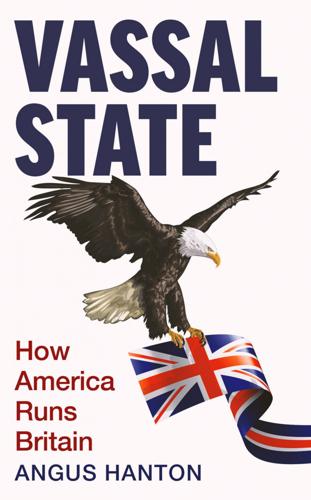
Vassal State
by
Angus Hanton
Published 25 Mar 2024
Although it was only a hobby, Taylor said that becoming a tennis champion gave him a feel for efficient movement along with a taste for winning. The pair went on to apply their skills to managing the steelworks at Midvale in Philadelphia, wrestling with the challenge of cutting costs and increasing output at the same time. It was here that Taylor developed his passion for working out how to improve efficiency, which he called ‘scientific management’. Later, working at Bethlehem Steel in Pennsylvania, Taylor noticed that workers used the same shovels for all materials, something he thought was inefficient. He proved that the most effective load for a shovel was 21.5 pounds, so he found a shovel for each material that would scoop up that exact amount.
…
Another Taylor disciple, Henry Gantt, used these ideas to develop the ‘Gantt Chart’, a graphical representation of activity against time, and Harvard offered a degree in business management whose first-year curriculum was based on Taylor’s methods. In each sector, someone pursued the principles of scientific management: Frank Gilbreth applied them to construction and Harrington Emerson did the same in the railroad industry. This way of thinking became further embedded when James McKinsey, a business professor at the University of Chicago, and the founder of consulting firm McKinsey & Company, advocated ‘Taylorism’, as it became known.
…
For the UK figure, see ‘About us’, Chartered Institute of Patent Attorneys [website], https://www.cipa.org.uk/. 26 ‘IBM builds a smarter planet’, IBM [website], https://www.ibm.com/smarterplanet/us/en/; ‘Policies & practices’, P&G [website], https://www.pg.co.uk/policies-and-practices/purpose-values-and-principles/; ‘Disneyland Resort – the happiest place on earth’, Disney Parks [website], https://disneyparks.disney.go.com/au/disneyland/your-happiest-place-disney/. 27 Interview with the author, September 2020. 28 ‘Coke and McDonald’s, growing together since 1955’, New York Times (15 May 2014), https://www.nytimes.com/2014/05/16/business/coke-and-mcdonalds-working-hand-in-hand-since-1955.html. 29 ‘MediaTalk; Disney buys the rights to Winnie the Pooh’, New York Times (5 March 2001), https://www.nytimes.com/2001/03/05/business/mediatalk-disney-buys-the-rights-to-winnie-the-pooh.html. 30 ‘Operation Creative blocks £6 million of UK advertising revenue from funding illegal websites’, City of London Police [website] (6 February 2023), https://www.cityoflondon.police.uk/news/city-of-london/news/2023/january/operation-creative-blocks-6-million-of-uk-advertising-revenue-from-funding-illegal-websites/. 31 Frederick Winslow Taylor, Principles of Scientific Management (New York: Harper & Brothers, 1911). 32 Peter F. Drucker, ‘The rise of the knowledge society’ [PDF], Wilson Quarterly 17/2 (1993), http://archive.wilsonquarterly.com/sites/default/files/articles/WQ_VOL17_SP_1993_Article_02_1.pdf. 33 ‘Hawthorne effect’, Wikipedia [website], https://en.wikipedia.org/wiki/Hawthorne_effect. 34 See, for instance, ‘Lean manufacturing’, Wikipedia [website], https://en.wikipedia.org/wiki/Lean_manufacturing; ‘Six Sigma’, Wikipedia [website], https://en.wikipedia.org/wiki/Six_Sigma; ‘What are performance metrics?’

The Firm
by
Duff McDonald
Published 1 Jun 2014
Taking the Pianist Out of the Brothel Before James McKinsey could be successful, he had to clean up the reputation of management as a concept. In The Management Myth, philosophy-student-turned-consultant-turned-author Matthew Stewart’s highly critical look at the history of management thinking, the author argued that it was flawed from the get-go. And he pinned original sin on Frederick Winslow Taylor, the father of “scientific management.” Taylor’s famous time-and-motion studies used stopwatch analyses of manual labor with the goal of shaving seconds off rote, repeated activities, thereby enhancing productivity. There was, Taylor argued, just “one best way” to produce anything, and a manager armed with Taylor’s tools could identify it.
…
In Stewart’s account, Taylor was a pseudoscientific proselytizer who promoted the spurious notion that “laborers are bodies without minds, managers are minds without bodies.”27 But Taylor’s ideas about improving the efficiency of labor were very popular and influential in his day; in 1911 he published Principles of Scientific Management, an instant hit that was eventually translated into eight languages. In 1914 he attracted 16,000 people to a New York speech on his theories.28 Edwin Gay, who opened the Harvard Business School, was a Taylor disciple. Henry Ford’s line production system was a pure distillation of Taylor’s thinking.
…
McKinsey’s efforts in this area would take the firm into uncharted territory: popular culture. The holy grail of the consultant is an idea that attracts clients but is still vague or complex enough that they need your help in carrying it out. This is why consultants are great progenitors of buzzwords, ideas like scientific management or lean production or reengineering. If it’s got its own name, you probably want to hire the expert on it, don’t you? In the 1970s and 1980s, the argument extended all the way to the land of the rising sun. Having lost significant market share in industries from automobiles to consumer electronics, managers gladly paid through the nose for the inside scoop on Japanese management techniques, such as just-in-time production, total quality management, and continuous improvement.
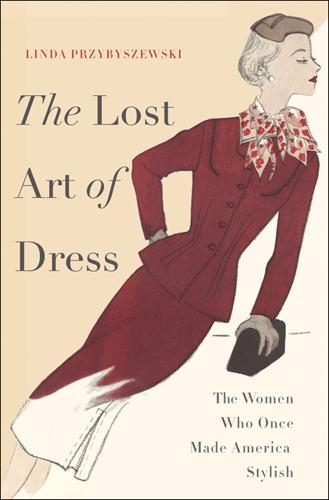
The Lost Art of Dress
by
Przybyszewski, Linda
And their vision of business was shaped by the ideas of the country’s first efficiency expert.34 Frederick Winslow Taylor was an engineer turned industrial manager who published The Principles of Scientific Management in 1911. He had three aims: first, to show how the United States was suffering from inefficiency in almost everything its people did; second, to convince Americans that scientific management could eliminate inefficiency; and third, to prove that good management was a science. He would show that the principles of efficiency that he had uncovered could be applied to all kinds of activities.
…
Leach, “Transformations in a Culture of Consumption: Women and Department Stores, 1890–1925,” Journal of American History 71, no. 2 (1984): 319–342, esp. 332; Susan Porter Benson, Counter Cultures: Saleswomen, Managers, and Customers in American Department Stores, 1890–1940 (Urbana: University of Illinois Press, 1986), 177–226. 33. Buttrick, Principles of Clothing Selection, 4. 34. Margaret Story, Individuality and Clothes: The Blue Book of Personal Attire (New York: Funk and Wagnalls, 1930), xxi. 35. Samuel Haber, Efficiency and Uplift: Scientific Management in the Progressive Era, 1890–1920 (Chicago: University of Chicago Press, 1964). 36. US Department of Agriculture, Domestic Needs of Farm Women, Report 104 (Washington, DC: US Government Printing Office, 1915), 8. 37. Mary Brooks Picken, The Secrets of Distinctive Dress (Scranton, PA: International Textbook Company, 1918). 38.
…
Personal shoppers, 97, 239 Personality, 286 Petticoats, 79, 112 Phelps, Elizabeth Stuart, 24–25, 27 Phi (Φ), 66 Philadelphia Ledger, 74, 112 Phillips, Velma life and career of, 279 philosophy of, 285, 287 on wardrobes, 184 Photoplay, 54 Picasso, Pablo, 40, 215 Picken, Mary Brooks, xi (fig.), 124 on age, 243 on character, 286 on colors, 50, 51 (fig.), 56, 257 on crew necklines, 233 as éminence grise, 244 on evening clothing, 120 on good taste, 78 on housework clothing, 103, 108 on ideal wardrobe, 165–166 The Language of Fashion, xi life and career of, x–xi, 10, 11, 19, 33, 91, 274, 283 One Hour Dress and, 230 on straight skirts, 30 Thrift Movement and, 144, 159, 162–164, 175–176 Woman’s Institute and, 91, 137, 139–140, 143 on work clothing, 96 on young women’s clothing, 245 Pictorial Patterns, 101 Pierre, Clara, 219, 269 Piguet, Robert, 217 Pilates, Joseph, 275 Plaids, 61 Planner, Patsy, 231 Plastic clothing, 218 Plastic furniture, 42–43 Playboy models, 267 Pollock, Jackson, 214, 215 Polyester, 39 Pomona College, 248 Poncho, 231 Pop art, 215–216 Pop Pants, 212 Posture, 274–275 Practical Home Economics (Thompson, H.), 147 Prairie Style, 19 Pratt Institute, 21 President’s Commission on the Status of Women, 189 Primary colors, 43–45, 49 Primary hues, 43–45 The Principles of Scientific Management (Taylor), 90 Prints Japanese, 53, 62–63 mixing, 73, 216 sewing with, 72–73 for work clothing, 97 Progressive Era (circa 1900 to 1920), 4, 189 Project Runway (TV series), 280 Proportions, 53, 64–69, 205 See also Ideal proportions Purdue University, 156 Qiana, 237 Quant, Mary, 225 on age, 228 color complements and, 219 minidress, miniskirt and, 202–204, 207, 208 philosophy of, 231 in Vogue, 207 Quinlan, Beth, 95 Racism, 56–57, 142, 188–189 Radcliffe College, 87 Radiation of rhythm, 61 Rathbone, Lucy on Cinderella, 78 life and career of, 2 on travel clothing, 101 Rauschenberg, Robert, 215 Ready-to-wear clothing, 20–21, 73, 92, 157 cost of, 145 homemade compared to, 147–148, 183, 281 vanity sizing and, 273–274 Reinvented makeover, xi Religious occasions, 101–103 Remick, Lee, 199 Renaissance Europe, sumptuary laws of, 14, 76 Repetition of rhythm, 61 Resor, Helen Lansdowne, 47, 92 Respiration calorimeter, 5 Rhythm, 59–61, 60 (fig.)
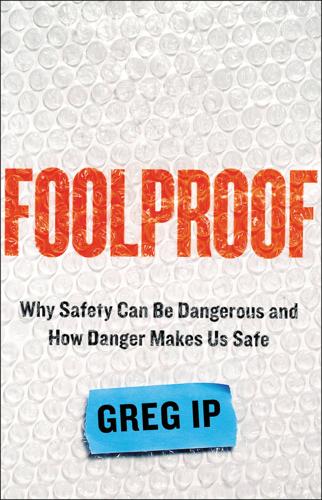
Foolproof: Why Safety Can Be Dangerous and How Danger Makes Us Safe
by
Greg Ip
Published 12 Oct 2015
Marlon et al., “Long-term Perspective on Wildfires in the Western USA,” Proceedings of the National Academy of Sciences 109, no. 9 (2012), no. 3203. 7 but as Marshall noted: Alfred Marshall, Principles of Economics, 8th ed. (Hampshire: Palgrave Macmillan, 1920): 3–4, 288. 8 Expertise became institutionalized: From Robert H. Nelson, “The Religion of Forestry: Scientific Management,” Journal of Forestry, November 1999, available at http://faculty.publicpolicy.umd.edu/sites/default/files/nelson/files/Forest_Fires/The_Religion_of_Forestry_Scientific_Management.pdf. The American Planning Association was formed in 1978 but traces its roots to 1909. 9 financially illiterate: Edmund Morris, in his biography Theodore Rex: The Rise of Theodore Roosevelt and Colonel Roosevelt (New York: Modern Library, 2002), 498, writes: “It was exchanges such as this that persuaded some men that Roosevelt was fiscally retarded.” 10 One of his influences: The progressivism of Woodrow Wilson, his influences, and his role in creating the Federal Reserve are from Niels Aage Thorsen, The Political Thought of Woodrow Wilson, 1875–1910 (Princeton: Princeton University Press, 1988): 55; Papers of Woodrow Wilson, February 24, 1898, 440, and December 23, 1913, 65; and Gerald T.
…
Roosevelt turned the Sherman Antitrust Act, largely toothless since its passage in 1890, loose on anticompetitive monopolies, passed legislation to regulate food and drugs and interstate commerce, and expanded the system of national parks. Often his actions were informed by progressive ideas of scientific management. At the Forest Service, Roosevelt’s friend Pinchot was steeped in principles of forest management he had learned in Europe, where forests were treated as farms—resources to be cultivated and harvested, not left to burn. On the big economic question of the day, monetary reform, Roosevelt was inconsequential.
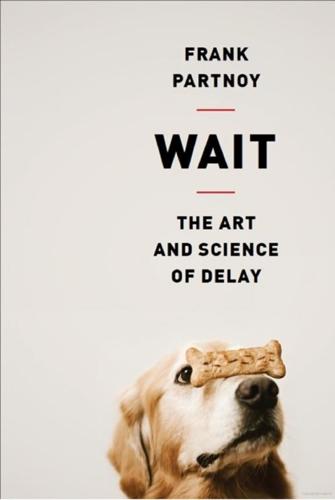
Wait: The Art and Science of Delay
by
Frank Partnoy
Published 15 Jan 2012
We transitioned from an event-based and product-based economy to a time-based economy in which we are paid per unit sold, if hourly, or lump sum, if salaried.”3 For many of us, clock time dictates what we do at work. The importance of clock time in the workplace can be traced back to Frederick Winslow Taylor. In 1909, Taylor, a former lathe operator, engineer, and management consultant, published The Principles of Scientific Management, a book advocating the use of time as a tool for improving workplace efficiency.4 Taylor argued that companies should replace rules of thumb for accomplishing tasks with precise instructions based on scientific analysis of the timing of tasks. He told factory managers to break jobs into parts and use stopwatches to time their workers and determine how long each part should take.
…
Working Paper Series, December 20, 2010, http:/ssrn.com/abstract=1665936. 2. Philip Zimbardo and John Boyd, The Time Paradox: The New Psychology of Time That Will Change Your Life (Free Press, 2008), p. 30. 3. Zimbardo and Boyd, The Time Paradox, pp. 38, 40. 4. Frederick Winslow Taylor, The Principles of Scientific Management (1909). 5. See, for example, Heather Menzies, No Time: Stress and the Crisis of Modern Life (Douglas & McIntyre, 2005). 6. Mark Aguiar and Erik Hurst, “Measuring Trends in Leisure: The Allocation of Time over Five Decades,” Quarterly Journal of Economics 112(2007): 969–1006. According to the HarrisInteractive annual poll of work and leisure time, from 1980 until recently the median weekly work hours for Americans has held in the range of forty-seven to fifty-one.
…
Morgan, 95 Judgments, 195, 239–240 bad, 168 making, 89, 91 snap, 88, 89, 100 social, 94 subjective, 91 Kahneman, Daniel, 63, 157, 176 Karlović, Ivo, 22 Katz, Lynn: heart rate and, 6 Kedrosky, Paul, 150, 151 Keynes, John Maynard, 223, 224 King, Larry, 114 King, Martin Luther, Jr., 114 King’s Speech, The (movie), 115 Kirby Delay-Discounting Monetary Choice Questionnaire, 162, 163 Klein, Gary, 70–71, 89, 113, 180 blitz chess and, 72–73 study by, 71–73, 76 Knight, Frank, 245 Knowledge Is Power Paradigm (KIPP), 14 Kreuger, Ivar: speaking and, 115 Kroft, Steve news judgment and, 195 Obama interview and, 187–188 questions by, 189–191, 194 rethinking/reordering by, 189 on timelines, 194–195 Ku Klux Klan, 84 Kunda, Gideon: study by, 203, 204 LaCota, Irene, 117–118, 119, 124, 127–128 Laibson, David, 161 Language, philosophy of, 170 Latency, 38, 39 Lavoisier, Antoine, 229 Lawrence, Stephen, 85 Lazare, Aaron: on apologies, 135, 138, 139 Learning Clinical Reasoning, 181 Lee, Chris: apology by, 143 Lehman Brothers, 36, 192, 233, 234 Lehrer, Jonah, 27 Leisure, 202, 206 LeMaster, Frank, 66, 67, 77 Leonardo da Vinci, 149 Levine, Robert: on Connors, 24 Lewinsky, Monica, 143, 144 Libet, Benjamin, 28–29, 30–31 Life decision-making and, 240–241 value of, 240, 242 Listening, speaking and, 115 Lit Show, The (radio program), 87 Living patterns, time and, 197 Loewenstein, George, 157, 158 Logical deliberation, instinctive emotion versus, 64 Logos, 53, 54 fast food, 55, 56, 57, 59, 61, 100, 205 subliminal flashes of, 55 Lopez, Angel, 22–23, 26 Mad Men, 51 Mad Money (Cramer), 174, 175, 177 Madoff, Bernie, 237 Management, mistakes and, 218 Manson, Charles, 23 Marshmallow time, 16, 17, 157 Massachusetts Institute of Technology, 45 Match King, 115 Match.com, 118–119 Matrix, The, 105 Max Payne 2: The Fall of Max Payne—A Film Noir Love Story (Payne), 105 Mazur, James discount rates and, 161 experiments by, 159–160 procrastination and, 160, 162 McDonald’s, 55, 56 Iron Chef and, 52 logo of, 206 stimuli at, 54 McKinney, Odis, 65 McKnight, William, 217 McKnight Principles, 218 McLeod, Peter, 25–26, 29, 218, 220 Einstellung effect and, 221 eye movements and, 222 three-move solution and, 219, 221 McNamara, Robert: apology by, 144 McNerney, James, 227–228 Medical advice, biased, 184 Medulla oblongata, 1 Memories, stimulation and, 105 Mental health, 11, 13, 15, 16, 104 heart rates and, 2–3, 5 hearts and, 12 Mind, 63 bypassing, 113 control, 51 Minnesota Mining and Manufacturing Company, 211–212, 213, 217, 223 big ideas and, 215 family at, 228–229 innovation by, 225–226 sticky notes and, 225–226, 227 Miracle at the Meadowlands, 78, 80 Mistakes allowing for, 217–218 checklists and, 182 impatience and, 159 Money emotional states and, 206 making/losing, 40 “Money and Investing” (Wall Street Journal), 192 Morgan Stanley, 46, 97, 179 Morgan, Tracy: apology by, 139–140 Multitasking, focus and, 201 Murrow, Edward R., 188 Mutual funds, 176, 178 NASDAQ, 36 National Association of Broadcasters, subliminal advertising and, 51 National Football League, 66n, 80 National Geographic, 57 Nervous system, 10 Neuroeconomics, 151 Neurofinance, 151 Neurons, 68, 69 Neuroscience, x, xi New York Stock Exchange (NYSE), 35, 36 New York Times, 143, 192 News gathering, writing and, 193 Newton, Isaac, 214, 218, 226 Nicklaus, Jack, 68 1984 (Orwell), 51 Nixon, Richard, 132 Nordhaus, William, 239 Normal accidents, 44, 245 Normal Accidents (Perrow), 44 Novices, decision-making and, 75, 76, 77 Obama, Barack Croft interview of, 187–188 thoughtfulness/decisiveness of, 191 Observe-orient-decide-act (OODA), 126, 127, 128, 135, 139, 145, 180, 190, 224 Observe-process-act, 45, 142, 143 Obsessive-compulsive disorder, 167 Office of Management and Budget (OMB), 238, 239, 240–241 On Apology (Lazare), 135, 138 One-Marshmallow Child, 14 Online dating sites, 118, 119 Options, comparing/choosing among, 71, 75 Orwell, George, 51 Overindulgence, 164, 237 Oxygen, discovery of, 229, 230 Packard, Vance, 51 Page, Larry, 229 Palin, Sarah: squirmish and, 108, 109 Panic, 5, 104–105, 110n, 113, 116, 122 impact of, 103–104, 106 obsession with, 110–111 pauses and, 114 time and, 104, 106, 116 Passion of the Christ, The (movie), 140 Pause points, using, 182–183 Pauses, xii, 115–116, 185 panic and, 114 Pay hourly, 203, 204 inequities, 208 Payne, Max, 105 Payne, Neo, 105 Performance, 6, 25, 113, 231 Perold, André, 33, 34, 48 Perrow, Charles, 44, 245 Perry, John: procrastination and, 169, 170, 171 Personality, 89, 150 Pervasive developmental disorder, 15 Pfeffer, Jeffrey, 205 Philosophical questions, unanswerable, 240 Physical reactions, 23, 96 unconscious, 20 visual reaction versus, 21 Pigeons attention spans of, 161 discount rates of, 161 experiment with, 159–160 procrastination by, 162 Pink, Dan, 203 Pisarcik, Joe, 65, 66, 67, 77, 78, 79 Pitt, Brad, 49 Planning, 48, 202, 238, 245 Pneuma-gastric nerve, 3 Poker strategy, teaching, 45 Policy decisions, strategic thinking and, 243 Porges, Stephen, 4, 9, 10, 11, 13, 222 heart rate variability and, 3 heart rhythm tests and, 3 on nervous system, 10 psychological states and, 1, 5 raising children and, 12 research by, 7 theory of, 6, 8 vagal nerve and, 2 Poses, high-power/low-power, 97, 98 Post-it, 226–227, 228, 230 Postmortem reviews, 76 “Predicting Divorce Among Newlyweds from the First Three Minutes of a Marital Conflict Discussion” (Gottman), 87 Preferences, unconscious, 83 Prejudice, 81, 83, 84 Premortem, 76–77 Prepare phase, 24, 25, 26, 27, 30 Pressure, biological reactions in, 79 Priestly, Joseph: oxygen and, 229, 230 Principles of Scientific Management, The (Taylor), 200 Probabilities, 94 discounting and, 154, 155 procrastination and, 153 Procrastination, xi, 147, 155–156, 162, 166, 171, 218 active/passive, 150 challenging, 173 chronic, 149 covert, 169 delaying, 150, 156 discount rates and, 153, 154, 158, 164 economic model of, 158 economist approach to, 150–151 good/bad, 167 guilt about, 149 impatience and, 159, 164–165 meaning of, 168 as mental disorder, 167 overindulgence and, 164 pigeon, 162 research on, 149–150 stopping, 166, 167, 170 theory of, 152, 164 time inconsistency and, 160 “Procrastination and Obedience” (Akerlof), 152 “Procrastination, or The Sin and Folly of Depending on Future Time” (Edwards), 148 “Procrastination Workshops,” popularity of, 149 Procter & Gamble, 43 Psychological Bulletin, 85 Psychological disorders, 13, 16 Psychological states, 2, 3, 5, 54, 68 Psychology, xi, 2 economics and, 176 time and, 199 Pujols, Albert, 31 Punch lines, 107, 109, 126 Race, 90, 91, 93, 99, 100, 101, 185 behavior and, 83 epidemiology and, 184 treatment based on, 81–82 Racial preferences, 83, 84, 99, 100, 101 Racism, 82, 94 conscious, 83 implicit, 83n, 99 institutional, 84 medical, 184 unconscious, 83, 85 Raising CEO Kids, 14 Rationality, 71, 155 Rawls, John: well-being and, 240 Reactions, 88, 88n automatic, 64, 103 biological, 68, 69, 79, 90, 97 delaying, 14, 178 emotional, 7, 69, 136, 137–138 hard-wiring for, 244 physical, 20, 21, 23, 96 preconscious, 17, 27, 107 skills, 25–26 snap, 117, 126, 129, 184 superfast, 16, 113, 117 time for, 3, 25, 26, 114 unconscious, 111 visual, 21, 23, 25 Reagan, Ronald, 114 Relationships, 7, 120, 123 Remorse, 138, 139, 140 Reporters, 194 bloggers and, 193 Rescuers, The (movie), subliminal messages in, 52, 53 RescueTime.com, 165 Research programs, 54, 223, 243 Responses, 12, 25, 244 brain, 6, 21 delaying, 17 emotional, 16, 136, 137–138 fight-or-flight, 9, 69 gut, 128 psychological, 68 reptilian shutdown, 10 snap, 17, 28, 64, 111, 121–122, 124 sophisticated/creative, 20 Risk, 44, 242, 245 time and, 157 Robertson, Julian, 179 Rockne, Knute, 64 Roddick, Andy, 21, 22 Rogers, William C., III, 72, 77 attack by, 74–75 high-pressure situation for, 73–74 Rooney, Andy, 187 Rosenthal, Robert, 85, 86, 87 Ross, Wilbur L., Jr., 177 Ruffle, Bradley, 92, 93 Rule, Nicholas: female CEOs and, 91 Rumsfeld, Donald: unknown unknowns and, 245 Safety, 13, 233, 243 panic and, 104 paying for, 241 St.

The Connected Company
by
Dave Gray
and
Thomas Vander Wal
Published 2 Dec 2014
Inherent in the mechanical view is the idea that all knowledge is explicit, and can be represented in manuals, documentation, and quantitative metrics. This is a behaviorist concept that harkens back to Frederick Taylor, the father of scientific management, a theory of management that was based on measuring and analyzing work with the idea of reorganizing it to make it more efficient. The focus in scientific management is on defining and measuring work in the form of words, charts, and numbers. In other words, what can be seen and recorded is the only thing that matters. Results are achieved by administering positive and negative reinforcement—rewards and punishments—to individuals, based on how well they are able to meet performance measures.
…
Results are achieved by administering positive and negative reinforcement—rewards and punishments—to individuals, based on how well they are able to meet performance measures. This way of inducing behavior is called operant conditioning and comes from the behaviorist school of psychology, which, like scientific management, focused exclusively on observable phenomena. What this behaviorist philosophy fails to take into account is that many important drivers of success cannot be easily observed, counted, documented, or measured. Intrinsic Rewards Drive Productivity Certainly people respond to punishments and rewards. The threat of jail keeps most of the population decent, and most of us go to work so we can earn money and buy things.

Lying for Money: How Fraud Makes the World Go Round
by
Daniel Davies
Published 14 Jul 2018
If you can’t measure something, you can’t manage it is something of a caricature* of modern management science, but it expresses a deep truth; management is an information-processing job, and the development of large corporations has been made possible by the parallel development of reporting structures, quality and output measures and other tools for getting that information from the machines into the offices. Modern management science could fairly be said to have started with The Principles of Scientific Management by Frederick Winslow Taylor in 1911, which first advocated the ‘time and motion study’ and the scientific analysis of business processes, starting with a famous study of how many rest breaks a man should take while shoveling iron ore onto a truck. And it could almost as fairly be said that a very great proportion of management theory since Taylor has been made up of calls to measure different things, in order to correct for the biases introduced by the previous round of changes.
…
The underlying problem is that most of the time, we are trying to manage or administer things which are too complicated to be aware of every detail at every time, so we need to choose what we hope will be a representative subset of all the information that we have. As well as refining techniques of measurement of inputs and outputs, the twentieth century also saw the beginnings of an attempt to apply scientific techniques to the organisation of the processes themselves. This had always been implicit in the theory of scientific management, but it took a huge step forward with the Second World War, in which ‘operations research’ began to be recognised as an important field of military planning, with applications from the optimal size of convoys* to the effectiveness of area bombing. The military also began to attempt to systematise techniques of gathering and processing information, such as the ‘OODA Loop’ (observe-orient-decide-act), which proved highly influential in business thinking after the war.
…
A. 201–3,205 Henry VIII 216 high-net worth investors tendency to have time on hands 109 tax strategies of a proportion of 266–8 Hippocratic Oath 134 hire purchase scam (Leslie Payne) 36, 39–40 homomorphism 209, 212 Hooley, Ernest ‘The Millionaire’ 230 hotel bills 37 House of Commons 1 Howe, Sarah 90, 116–19, 222 HSBC 188, 189, 280 Hudson Oil 249, 251 Humphery, John Stanley 228 I IBM 64–8 Iceland 218–22 Inca Empire 226–7 Incentives 13, 22, 62, 74, 115, 135, 159, 165, 174, 185–6, 205, 210 incidental fraud vs entrepreneurial 213, 215, 287, 288 Infinity Game 92–9 information 24, 71, 199–208, 211–15, 238 control of by fraudsters 41, 65, 71, 115, 173 insider, securities fraud 23, 239–42, 260 inheritance 117, 217, 218–22, 235, 266 insider dealing 23, 106, 129, 241–43, 260 insurance 36, 39–40, 65, 163–4, 171, 225, 228 medical 74–7, 84 Payment Protection Insurance (PPI) 187–97 insurance scam (Leslie Payne) 40–41 International Reply Coupons see Ponzi, Charles investors 1, 16 in OPM leases 65–7, 69–71 Charles Ponzi’s 86–9 hedge fund 96, 104–9, 113 in pigeons 100, 103 institutional 104 nineteenth century female 118–20 mining 126–30 reliance on accounts 142–54 expectations of UK banks 188 Victorian 228, 231 Retail 240–43 in Piggly Wiggly 256–61 IRS vs UBS 263–4 Israel, Sam see Bayou Capital drug habit of as potential indicator something was wrong 116 J Jehoash (high priest) 217 John Bull 230 K Keating Five 182 Keating, Charles 177–83, 214 Kennedy, John Fitzgerald 61 Kerviel, Jerome 165 King, Don 163 Knights of Industry 234, 237 Kolnische Volkszeitung 232, 234, 236, 237 KPMG 150 Kray, Ronnie and Reggie 26–7, 31, 36, 39, 41 Kutz Method 152–3 KYC (know your customer) 281 L Lab fraud anaemia 74 Ladies’ Deposit Bank (Boston) 116–19 lawyers 19, 27, 33–4, 39, 45, 71, 115, 117, 161, 180, 182, 194, 196, 225, 267, 271, 272, 281 (they’re usually in the background even when not specifically mentioned) professional qualifications of 114 extreme expensiveness of 234 leasing tax advantages of 64 see also OPM Leasing importance of residual value 66 accountancy issues 152 Leeson, Nick 17, 165–73, 285 Lehman Brothers collapse 13 relationship with OPM Leasing 65, 71 Lehnert, Lothar 235–7 Lernout & Hauspie 150 Let’s Gowex see Gowex letterhead 31, 70, 80, 122 Levi, Michael 81, 216, 283 Levy, Jonathan 224 libel 77, 236–8 LIBOR 1–4, 12–16, 193, 205, 215, 244 Liman & Co 235–6 limited liability 34, 225, 231 Lincoln Savings & Loan 177–8, 180, 182–3 livestock 100 Livingstone, Jesse 259 Lloyd’s of London 164, 225 Lomuscio, Joe 59 Long firms 21, 23, 27, 29, 35, 41–2, 43–50, 61, 63, 72, 73–5, 77, 79–82, 96, 141, 142, 163, 164, 212, 224, 283, 284 ‘sledge-drivers’ 232–4 against government 271–4 Lucifer’s Banker 263 M MacGregor, Gregor 5, 8, 9, 17, 77, 78, 214 dubious knighthood of 7, 162 military career 7 previous frauds 18 Madden, Steve 147 Madoff, Bernard 96, 104–5, 113 Mafia 41, 253 Mahler, Russ 249–53 management scientific 19, 200, 206–12, 215 risk management 212–13, 287 strategic 248 public sector 264 marginal cost pricing 248 Marino, Dan (fraudster) 107–9, 113, 115 Marino, Dan (quarterback) 107 maritime capitalism 34, 224–6 market corner 259 market crimes 23, 24, 58, 194, 239–62, 271, 282, 289 markets general characteristics of 23, 197, 201–4, 208, 278, 289 financial 3, 4, 8, 13, 26, 58–60, 99, 100, 107–8, 129, 132, 142–5, 147–8, 149, 150–56, 161, 163, 166, 171–2, 176, 195, 230–31, 239–40, 242–4, 256–61 pharmaceutical, ‘grey’ 136–7 drugs, illegal 43–50 prime bank securities 110–11, 184 real estate 179–80 supermarkets 213, 255 Marx, Groucho 66 Marx, Karl 84, 232, 247 McGregor, Ewan 165, 173 McVitie, Jack ‘The Hat’ 26, 41 Medicare 73–6,134–5, 199, 289 Merchant of Venice 34 Merck Pharmaceuticals 138–40 Michaela, Maria 215, 222 military planning 204, 207, 211 Milken, Michael 177, 183 Miller, Norman 52 mis-selling 194–6 money laundering 278–82 Monopolies Commission (UK) 247 mortgages 38, 77, 101, 175–9, 188, 191, 194, 215, 238 multi-level marketing 94–5 N New England Journal of Medicine 139 New Zealand 9, 172, 241 newspapers 9, 125, 152, 230, 237, 252, 262 Nichols, Robert Booth 110–12 Nikkei index 170–71, 173 nobility Scottish 7 phony scottish 5–9, see Gregor MacGregor phony 223 North Wales Railway Company 229 notaries 114, 125, 133 indiscriminate stamping of documents by in 1920s Portugal 121–2 O ODL Securities 112–13 OECD 268 oil recycling 249–54 OODA loop 208 operations research 204, 208–10, 289 OPM Leasing 63–72 snowball effect of interest expense 98 accounting trick 152–3 options markets 163–4, 171–2 Optitz, Gustav 235–7 Opus Dei 53, 57 Original Dinner Party 92 Other People’s Money 63, 285 P Paddington Buys A Share 20, 43 Parmalat 155 Patsies see fronts Payment Protection Insurance (PPI) 187–97 Payne, Leslie 26–8, 30, 33–6, 39–42, 67, 73, 98, 163, 237, 283 petrol stations 190, 247–8 pharmaceutical industry 133–41 track and trace 136 Philadelphia Savings Fund 70–71 Pigeon King International see Galbraith, Arlan pigeons, racing 100–103 Piggly Wiggly 255–61 Ponzi, Charles 84–90, 96, 109, 116 trial of 90 takeover of Hanover Trust 88–9 launch of scheme 86 Portuguese Banknote Affair 120–25 Powers, Austin 263 Poyais 5–9, 15, 78, 121, 162, 215, 219, 287, 297 prime bank securities 110–13, 122, 184 Prince 135 Prince Albert 228 Princess Caraboo see Baker, Mary Princesses 6, 223 Principles of Scientific Management 206 Prison 18, 61, 112, 119, 125, 173, 208, 252, 270 debtor’s 34, 225 private equity 144 psychology 17, 87 public choice theory 210–11 pump and dump 147 pyramid schemes 91–5, 116, 184, 222 Q Quakers 118 quality control 184, 207, 213–15, 287 Quanta Resources 251–2 Quarterly Review 162 Queen Victoria 228 Queenan, Joe 10 Qwest 150 R Rabelais, Francois 120 Railway Mania 176, 231 Ranbaxy Laboratories 137 Reagan, Ronald 174–5, 251 real estate 89, 177–81, 214, 281 Reddit 48 regulators financial 2, 4, 14, 18, 99, 165, 177–83, 194–5, 240, 260–61, 280–81, 289 softness of in 1960s London 40 environmental 250–51 pharmaceutical 136, 137, 140 Reuschel, Rollo (Stanislaus Reu) 232–8 libel case 237 Richmond-Fairfield 107 Robb, George 228 Rockwell Industries 66–71 Rogers, Will 283 rogue traders 98, 165–73, 215 Royal Canadian Mounted Police 129 S salting (mining fraud technique) 127 Sarbanes-Oxley 194, 202 Saunders, Clarence 255–61 Savings and Loans 174–84, 185, 196, 285, 289 economic theories of failure 174 business model 175 settlement, securities 60, 107, 108, 112, 163, 257, 261 Sherman Antitrust Act 246 shipowners 10, 116, 117, 164, 224–6 ships 164, 207, 221, 224–6 US Navy 89, 249 short firm 73–5, 93 short selling 147, 258–9, 261, 283 shotgun/rifle technique 76–7, 134 signatures, forged 67, 123 Silk Road (online market) 44, 47–8, 50 simplified summary which hopefully captures the important structural features see homomorphism Sketch of the Mosquito Shore 8, 162 Skilling, Jeff 17, 142, 153 slaves 34, 219–21, 225 ‘sledge-drivers’ 232–8 SLK Securities 108, 115 Smith, Adam 11, 213 on cartels 246 snowball effect see compound interest societies, high and low trust 10, 16, 62, 125, 166–7, 264, 287 Soviet planning 204, 208, 227 Sparrow, Malcolm 74, 76 St Joseph (fictitious city) 5 stock exchanges Alberta 11, 129 Toronto 129 Vancouver 11, 126 London 9, 117 New York 59–60,147, 228–31, 256–61 Chicago 59–60, 256 Singapore 170–72 Osaka 170 Tokyo in general 142–5, 147, 163–4,241–2 NASDAQ 240 Strangeways, Thomas 162, see also Gregor MacGregor Strathclyde Genetics see Galbraith, Arlan Stratton Oakmont 145–8 Sufficient Variety, Law of 209 Sullivan, Scott 154 Susquehanna River 251, 252 T tacit knowledge 202–3 Tarantino, Quentin 105 tax 32, 64, 69, 98, 155, 159, 177, 191, 263–71 value added see VAT Taylor, F.
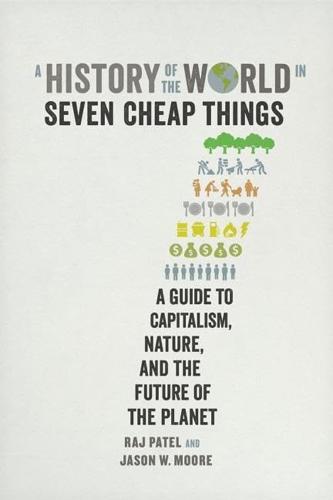
A History of the World in Seven Cheap Things: A Guide to Capitalism, Nature, and the Future of the Planet
by
Raj Patel
and
Jason W. Moore
Published 16 Oct 2017
By the sixteenth century, time was measured in steady ticks of minutes and seconds.21 This abstract time came to shape everything—work and play, sleep and waking, credit and money, agriculture and industry, even prayer. By the end of the sixteenth century, most of England’s parishes had mechanical clocks.22 In the twentieth century, as assembly lines in Detroit churned out Henry Ford’s Model T, “scientific managers” were measuring units of work called therbligs (an anagram of their developers’ last name, Gilbreth): each one a mere one-thousandth of a second.23 The conquest of the Americas therefore involved inculcating in their residents a new notion of time as well as of space. Wherever European empires penetrated, there appeared the image of the “lazy” native, ignorant of the imperatives of Christ and the clock.
…
Green Is the New Red: An Insider’s Account of a Social Movement under Siege. San Francisco: City Lights. Prashad, Vijay. 2012. The Poorer Nations: A Possible History of the Global South. London: Verso. Price, Brian. 1992. “Frank and Lillian Gilbreth and the Motion Study Controversy, 1907–1930.” In A Mental Revolution: Scientific Management since Taylor, edited by Daniel Nelson, 58–76. Columbus: Ohio State University Press. Prince, Hugh C. 1988. “Art and Agrarian Change, 1710–1815.” In The Iconography of Landscape, edited by D. Cosgrove and S.J. Daniels, 98–118. Cambridge: Cambridge University Press. Quaglia, Lucia, and Sebastián Royo. 2015.
…
See also Russia Spanish empire, xiv–xv map 1, 9; colonization policies, 61–62; Genoese banking and, 77, 82; global silver trade and, 81–85, 85; New World frontier, 50–51; New World production system of, 46; Reconquista, 9, 13; slave trade, 91; time concept in, 98; Valladolid controversy, 36–37; war financing, 78–81; wool export, 77 Spice Islands, 52–53 Standard Oil Company, 148–49 Standing Rock protest, 206, 211, 226n44 stint/stinting, 60, 161 Stoler, Ann, 115 Sudan, 70 sugar production: in Brazil, 31; deforestation on, 16; division of labor for, 16; industrialization in, 100; during Industrial Revolution, 144; laborers, 16; on Madeira, 16–17; mills, 17; rolling mills, 100; slave labor, 29; sugarcane processing, 15; sugar consumption, 34; two-roller mills, 16 Sweden, xiv–xv map 1, 52–53 technologies: in agricultural sector, 103–4; coal and, 171–72; in food industry, 104; global silver trade and, 84; iron industry, 171; mechanical clock, 97–98; order, process and specialization, 29; textile industry, 171–72 temporal ecology. See time management textile industry, 98, 100, 171–72 Thompson, Edward, 99 time management: African slaves and, 99–100; assembly lines, 98, 100, 104, 109, 135; and capitalism’s ecology, 99; Indigenous Peoples and, 99–100; racism and, 99; scientific management, 98; time-use surveys, 230–31n79; wageworker resistance to, 99, 226n33 Timmermann, Cristian, 212 Toledo, Francisco de, 82–84 Trump, Donald, 38 Turkey, 38 Twelve Articles manifesto, 74 unions. See labor organizing United Kingdom, xiv–xv map 1; agricultural revolutions, 232n12; financialization in, 69; food consumption, 33; food price changes, 154 fig. 5; land expansion, 220n51; sugar consumption, 34.

Design of Business: Why Design Thinking Is the Next Competitive Advantage
by
Roger L. Martin
Published 15 Feb 2009
Baily was speaking in his capacity as senior adviser to the McKinsey Global Institute (MGI), its associated think tank. He rattled his way through the list, highlighting shifts in centers of economic activity, consumer trends, and corporate oversight. It was the ninth item on the list that really captured my attention. At that point, Baily eloquently and enthusiastically described how scientific management would triumph over gut instinct and intuition. Interest piqued, I visited the McKinsey Web site the next morning to learn more. Posted there was an article by Ian Davis (then McKinsey’s worldwide managing director) and his colleague Elizabeth Stephenson entitled, “Ten Trends to Watch in 2006.”
…
Indeed, improved technology and statistical-control tools have given rise to new management approaches that make even mega-institutions viable. Long gone is the day of the ‘gut instinct’ management style,” they continued. “Today’s business leaders are adopting algorithmic decision-making techniques and using highly sophisticated software to run their organizations. Scientific management is moving from a skill that creates competitive advantage to an ante that gives companies the right to play the game.” 4 The smart and capable McKinsey folks are far from the only ones casting intuition into the dustbin of history. Many businesses increasingly rely on algorithm-based decision-making and decision-support software.
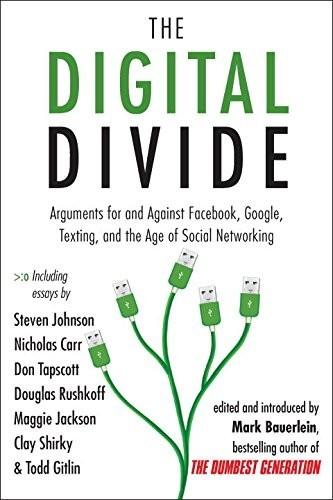
The Digital Divide: Arguments for and Against Facebook, Google, Texting, and the Age of Social Netwo Rking
by
Mark Bauerlein
Published 7 Sep 2011
Taylor’s tight industrial choreography—his “system,” as he liked to call it—was embraced by manufacturers throughout the country and, in time, around the world. Seeking maximum speed, maximum efficiency, and maximum output, factory owners used time-and-motion studies to organize their work and configure the jobs of their workers. The goal, as Taylor defined it in his celebrated 1911 treatise, The Principles of Scientific Management , was to identify and adopt, for every job, the “one best method” of work and thereby to effect “the gradual substitution of science for rule of thumb throughout the mechanic arts.” Once his system was applied to all acts of manual labor, Taylor assured his followers, it would bring about a restructuring not only of industry but of society, creating a utopia of perfect efficiency.
…
Search Marketing Ovid Oxford English Dictionary Page, Larry PageRank Palin, Sarah Paperbacks Paradise Lost (Milton) Participatory media Pashler, Harold Patterson, Thomas Paul, Ron PayPal Penchina, Gil Perceptual coherence field Pergams, Oliver Perl Perry, Bruce Personalization Peterson, Lloyd Peterson, Margaret Petrilli, Michael Pets.com Pew Charitable Trust Pew Internet and American Life Project Phaedrus (Plato) Photoshop PHP PickupPal PimpMySpace.org Pinkerton, Brian Plastic Plato PlayStation Podcasts Poe, Edgar Allan Poets and Writers (magazine) Pokémon Politics campaign websites Digital Natives and fund-raising in Internet and Internet media for Net Geners and participatory media and social networking sites and television and Wales, J., and Pong (video game) Portraits Post-Gutenberg economics Postman, Neil Post-traumatic dissociative disorders PowerPoint Prensky, Marc The Principles of Scientific Management (Taylor) Printing press Privacy Procter & Gamble Producer public Progressive Group of Insurance Companies Project Muse Protean self The Protean Self (Lifton) Proust, Marcel Proust and the Squid: The Story and Science of the Reading Brain (Wolf) Psychoanalysis schools Ptolemy Publishing Purohit, Sanjay Python Quake (video game) Ranadive, Vivek Rather, Dan Raymond, Eric RAZR phone Reading brain and deep expert Internet use and teenagers’ skills at time spend in Web use skills and Real-time feedback loops Real-time search Real World (television series) Reason Foundation Reflection Reformation Reintermediation Religious fundamentalism Republic (Plato) Research skills, Internet use and Research strategies Results-only work environment (ROWE) Reynolds, Glenn Rheingold, Howard Robinson, Marilynne Rock, Jennifer Romanticism Romantic solitude Rosen, Jay ROWE.
…
See Results-only work environment RSS Rushkoff, Douglas Rutgers University Safire, William Salon.com Samsung San Francisco Chronicle Sanger, Larry SAP Sartre, Jean-Paul Saturated self Saturday Night Live (television series) Scalable Fabric Scarcity Scherf, Steve Schindler’s List (film) Schmidt, Eric Science (journal) Scientific Learning Scientific management Scion Scope Screenagers Scrutiny The Search: How Google and Its Rivals Rewrote the Rules of Business and Transformed Our Culture (Battelle) Search Engine Results Page (SERP) Search engines. See also specific sites Search strategies Search Wiki Sebald, W. G. Seigenthaler, John, Sr.
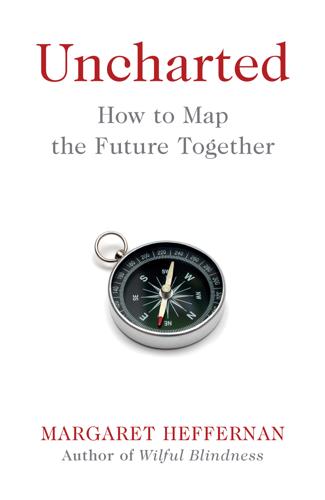
Uncharted: How to Map the Future
by
Margaret Heffernan
Published 20 Feb 2020
Its remit is strikingly different from publicly traded, private or family businesses. But the company’s ambivalent embrace of experimentation reflects how profoundly the move to complex systems has unsettled traditional ideas of management. Many retailers like John Lewis have devoted years to so-called ‘scientific management’ aimed at improving competitive efficiency. Algorithmic task assignments directed employees as discrete units, hoping that more work would get done by fewer people. Today, in private, most acknowledge this was a disaster. Even relatively simple businesses like supermarkets and department stores have to be prepared for the unexpected – the toddler who knocks down a display, an inexplicable run on coconuts.
…
The prevailing efficiency ethos and an addiction to planning and measurement are too embedded, and the risk feels too great to do what Jos de Blok did with Dutch homecare nurses: let people think for themselves. Each time I talk to chief executives or boards or senior leadership about less management and more freedom, they understand the opportunity but cling to the ancient reassurance of scientific management. Standardising and measuring work is what they are good at, and most are more comfortable reading surveys about employee engagement than talking to people about what it feels like to work in their company. They’re up to their necks in a status-quo trap, believing that a well-measured if scary present is less risky than an ambiguous future.
…
Archibald, 53 Moorcraft, Penny, 289–90, 291 morality, 14, 20, 26, 62, 95, 139, 159, 177, 222, 223, 265, 280, 286, 312, 317 Morning Star, 200 Morrison, Toni, 42, 194 motivation, 36, 41, 118, 126, 164, 216–18, 252, 255 Moyes, Richard, 308–9 Mozart, Amadeus, 71 MRI scanning, 43, 136, 210 Mulally, Alan, 253 Mullis, Kay, 83 multiple schlerosis (MS), 82, 89 Munch, Edvard, 15, 274 Munich Agreement (1938), 53 MUSE, 70, 72–3 Mussolini, Benito, 71 Myers–Briggs Type Indicator (MBTI), 73–5, 80, 97 Myers, Isabel, 73, 74 Narragansett Pier, 13 narrative, fallacy of, 47 National Assembly of Wales, 309 National Economic Council (US), 28 National Health Service (NHS), 259 National Institute for Allergy and Infectious Diseases (US), 260 National Rifle Association (NRA), 268 National Union of Miners (NUM), 270 natural disasters, 4, 15 Natural History Unit (NHU), 109 NBC, 111 neighbourhood care, 125 neighbourhood schools, 133 neighbours/neighbourhood, 2, 5, 6, 41, 94–5, 125, 133, 279, 312 Neruda, Pablo, 151 Nessi, Marzio, 213–17, 227 neuroticism, 92 neutrino detectors, 204 New Hampshire University, 114 New Lens scenarios, 156–7 New York Stock Exchange, 260 New York Times (NYT), 208 newgenics, 98 Newton, Isaac, 19 Next, 117 Ngo Dinh Diem, 54 NGOs, 56, 166 NHS, 259 Nine West, 117 Nipah, 298, 302 N95, 246 Nobel Prize, 24, 69, 70, 89, 98, 207, 216, 219 Nokia, 246–7, 249–51 nomenklatura, 121 Nordmarka, 190 normal line, 19, 23 Norris, Peter, 254 not-knowing, 62, 67, 100, 102, 108, 172, 177, 191, 193, 201, 205, 242, 268, 295, 314 noucentisme, 225 novel methodology, 30 NRA, 268 nuclear warfare, 205–6, 299, 308 nursery history, 59 Obama, Barack, 56 Obamacare, 128 Obrador, Andrés Manuel López, 173 OECD, 30 oil industry, 154–8 Old Vic Theatre, 276 ‘Olivia’ anecdote, 271–4, 295 Olympic Games, 227 O’Mahony, Yulia, 118–19, 120–1 O’Neil, Cathy, 5, 78 OPEC, 155 openness, 92 operating systems, 246–7 optimism, 8–9, 22, 161, 187, 229, 264, 286, 317 oracles, 2, 28 organic agriculture, 113 Organisation for Economic Co-operation and Development (OECD), see OECD Organizational Health Index (OHI), 247 Orwell, George, 226 Ostrich, 166 OurLivesOurVote, 268 outcome, 62–3 overload, 44 overreach, 234 Oxford Martin School, 29, 30 Oxford University, 95, 215 OXXO, 151 pandemics, 57–9, 298, 300 (see also epidemic) paradox, 156–7 parenting, 70–3 Paris Accord, 116, 159 Parkinson’s disease, 82 Parks, Rosa, 56 passive investment funds, 27, 29 passive observation, 26, 40, 103, 269, 314 passivity, 96, 102 Patagonia, 200 Patau’s syndrome, 89 patented machine learning, 70 Paterson, Katie, 180, 185–6, 190, 191–2, 194 pathogens, 297 Patrick, Peter, 144, 147 PayLess, 117 Peace Prize, 219 penicillin, 84 Pentland, Alex, 101 Pentland’s well-ordered moor, 103 perfectionism, 9, 80, 100, 126, 138, 285, 318 personality, 65, 73–6, 80, 91–2 personality tests, 76 Persons, Warren, 16, 20–1, 23, 26, 31, 41 PET scanning, 210 Petretti, Silvia, 263, 267, 321 philosophers, 177 photovoltaics, 160 Picasso, Pablo, 15, 178, 197, 226 Pinnington, Elizabeth, 169 ‘Pits and Perverts’ benefit ball, 264 ‘plastic straw’ moments, 315 Plomin, Robert, 91–3, 94–6 Plummer, Daryl, 34–6 poetry, 151, 190, 194, 196, 278 Pol Pot, 287 Polaroid, 248 political discontent, 4 polling, 75 pollution, 2, 14, 111, 282 polymerase chain reaction (PCR), 83 Popper, Karl, 51, 61, 232 Porter, Michael, 115 Post Office Tower, London, 226 Pound, Ezra, 194 Power Rangers, 68 Prague Spring, 55 precision education, 96 predetermination, 7, 46, 50, 153, 174, 178 prediction, 4, 6, 13–103, 120, 166, 183, 199, 219, 258, 280, 298, 301, 313, 321 pro-creation tickets, 97 probability, 37–41, 87, 89, 93, 155–6, 161, 247 procreative benevolence, 98 Profectus, 304 profiling, 5, 20, 33, 69, 73–89, 100–2, 297 progress, 2–3, 8, 15, 51, 70, 83–4, 98, 114, 175, 182, 269, 274, 280, 303, 309, 317 propaganda, 1, 9, 26, 31, 32, 40–1, 62, 100, 286 prophets, 5, 39, 285 prospection, 1–2 Prosperity Paradox, 156 protease inhibitors, 265–7 protest, history of, 59 protoDUNE, 204, 216 Proust, Marcel, 176 pseudo-science, 21, 195 psychographic profiling, 76, 84 psychological profiling, 5 public trust, 221, 234 punditry, 5, 7, 16, 18, 20, 27–30, 35–6 Pygmalion effect, 76 Rabbit, Peter, 15 RadioShack, 117 Rand Corporation, 152 Rand Kardex Company, 18 Ranney, Ambrose, 14 rationing, 93, 96 Reader, Sally, 291 Reagan, Ronald, 28, 260 Rees, Martin, 317–18 referenda, 39, 140–7 Reid, Richard, 85 rejection, 7, 26, 37, 78, 102, 132, 144, 155–6, 196, 223, 226, 277, 313 religion, 2, 4, 20, 139, 224, 238, 239, 278, 285, 295, 307 religious strife, 4 Rembrandt, 277 Renner, Michael J., 94 Reos Partners, 167, 322 Repository for Germinal Choice, 98 revolution, 15, 55, 60, 91, 122, 125, 163, 184, 193 Rift Valley fever, 302–3 Rilke, René, 185 Ring, David, 128, 130–1, 133–5, 137 Roche, 79 Rockport, 117 Rohe, Mies van der, 226 Rosenzweig, Mark R., 94 ‘Rosina’ anecdote, 173 RTÉ, 145 Rubbia, Carlo, 207, 216 rules-bound games, 107–8 Rumi, 296 Russell, Bertrand, 97 Russia Today (RT), 111 Sagrada Família, 224–8, 232 St Margaret’s Hospice, 289–94, 321 St Patrick’s Cathedral, 260 Samaritans, 119 same-sex marriage, 140 Sanford Underground Research Facility, 204 Sanger Centre, 219–21, 224, 231, 232 Santayana, George, 51 Saquinavir, 266 Sargent, Singer, 15 SARS, 298 Saunders, Cicely, 289 scenario planning, 155–75 Schatz, Albert, 15 schizophrenia, 92, 93, 96 Schoenberg, Arnold, 197 Schrödinger, Erwin, 206 Schubert, Franz, 277 scientific management, 120, 199 Scotland, independence sort by, 39 Seagram Building, 226 Sears, 117 Second World War, 54, 73, 80, 99, 147, 152, 162, 164, 273–4, 279 seedbanks, 306, 316 segregation, 33, 97, 129 self-discipline, 19, 230 self-interest, 23, 29, 36, 174 Sencer, David, 58–9 sensitive humility, 192 Shafak, Elif, 191 Shakespeare, William, 31, 108–9, 184, 195, 198, 275–6 shamanism, 2 Sharper Image, 247 Sheffield Health Geeks, 118 Shell Oil Corporation, 154–66 passim short-termism, 78, 308 sickle-cell anaemia, 89 Siilasmaa, Risto, 248–50 ‘Silence = Death’ campaign, 265 Silicon Valley, 33, 129, 246, 285 Skidelsky, Robert, 25 Sky, 111 ‘sleeping beauties’, 82 sleight of hand, 3 Sloane Kettering Cancer Center, 296 social connection, 103 social efficiency, 101 ‘social rubbish’, 97 social turmoil, 4 soft data, 156, 159, 168 ‘something for everyone’, 76 soothsaying, 2 Sophocles, 177 Spence, Basil, 226 Spiritual Association of the Devotees of Saint Joseph, 224 SSC, 209 stability, 17–18, 22, 56, 113, 154, 158, 282 Standard Life (SL), 251 Stanford, 273 statistics, 16, 20, 23, 40, 74, 82, 92, 136, 139, 178 stereotyping, 79–80, 93, 95, 151 sterilisation, 97 Stonyfield, 113–14, 115 Strauss, Levi, 274 Stravinsky, Igor, 15 streptomycin, 15 Suez Crisis, 53 Sugrañes, Domènec, 225 Suharto, Tommy, 254 Sulston, John, 219 Sumpter, Donald, 195 super-collider projects, 185, 204–32 super-forecasting, 37, 38, 41, 63 SUperSYmmetry (SUSY), 216 surrender, 7, 36, 96, 102, 103, 202, 242, 319 Sustainable Development Goals (SDGs), 309 SUSY, 216 Svalbard, 306–7, 316 swine flu, 57, 58 Symbian, 247 Syngenta, 160 Szabłowski, Witold, 121 Tambo, Oliver, 258 Tate, 186 taxation, 28 taxi drivers/driving, 42–6, 63, 181, 314 TB, 14–15, 19, 41 Terrence Higgins Trust (THT), 257–8, 268 terrorism, 15, 36, 85–6, 173, 305 test-tube baby, first-ever, 222 Tetlock, Philip, 5, 27–8, 36–7, 40 Texas University, 129, 163 Thamotheram, Raj, 279, 294 Thatcher, Margaret, 209 Thiel, Peter, 286 Third Law of Motion, 19 THT, 257–8, 268 Thunberg, Greta, 269, 317 Tóibín, Colm, 179 Toys “R” Us, 248 track record, 5, 28, 41 trade wars, 4 Transcend, 283 transformation programmes, 116, 166, 199 transhumanism, 280, 283–7 Trump, Donald, 4, 28, 39, 40, 170, 176 trust, 2, 9, 17, 19, 28, 41, 54, 70, 103, 108, 112, 140, 151, 163–5, 172, 182–7, 201, 211, 221–2, 234, 244, 249, 252, 255, 266, 270, 302, 304–7, 316, 318 tuberculosis, see TB 21/7, 85 23andMe, 95 Twitter, 4 tyranny, 7, 63, 121–2 Umbert, Esteve, 229–30 Unified Planning Machine, 154 United Arab Emirates (UAE), 312 United Nations (UN), 309, 313 unknowns, density of, 17 urban crowding, 14 US Congress, 1, 24, 58, 264 utopia, 6, 103, 312, 313 vaccines, 14, 57–8, 297–304, 298–304 Venter, Craig, 219 Vera Drake, 185, 192 Vidal, Francesc de Paula Quintana i, 227 Vietnam War, 53–4 Vision for Slovenia, 162–5 volatility, 3, 4, 17–18, 147, 155, 157, 224, 237 W boson, 207, 216 Wack, Pierre, 154, 155–6, 159, 168 Waksman, Selman, 15 Wall Street, 20 Walmart, 151 war on cancer, 82 Warnock Commission, 222, 223, 234 Warnock, Mary, 222–3, 316 Washington Mutual, 248 wasteful exuberance, 20 Webb, Beatrice and Sidney, 97 wellbeing, 118, 156, 164, 309, 312 Wellbeing of Future Generations Act (2015) (Wales), 309, 310, 311, 313 Wellcome Sanger Institute, 219, 224, 231 Wellcome Trust, 85 Wells, H.
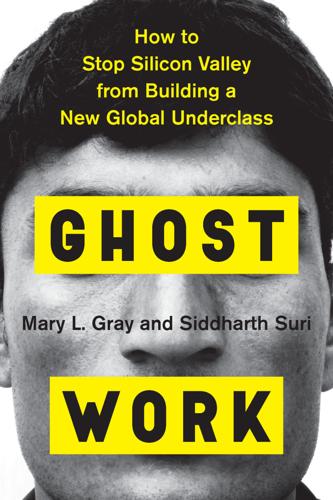
Ghost Work: How to Stop Silicon Valley From Building a New Global Underclass
by
Mary L. Gray
and
Siddharth Suri
Published 6 May 2019
Harnessing electricity and Thomas Newcomen’s invention of the first commercial steam-powered engine, in 1712, made twice as powerful by James Watt in 1781, propelled manufacturing forward. [back] 6. Stephen Waring argues that Frederick Taylor’s principles of scientific management focused much of early-day industry on wrestling control from the tradesmen coordinating most skilled craftwork. As Waring puts it, “New managerial capitalism emerged from a search for ways to coordinate operations and control workers.” Stephen P. Waring, Taylorism Transformed: Scientific Management Theory Since 1945 (Chapel Hill: University of North Carolina Press, 1991). Also see Shelley Pennington and Belinda Westover, “Types of Homework,” in A Hidden Workforce, Women in Society (London: Palgrave Macmillan, 1989), 44–65, https://doi.org/10.1007/978-1-349-19854-2_4.
…
Journal of Technology Transfer 33, no. 3 (June 1, 2008): 285–99. Valentine, Melissa, and Amy C. Edmondson. “Team Scaffolds: How Minimal In-Group Structures Support Fast-Paced Teaming.” Academy of Management Proceedings 2012, no. 1 (January 1, 2012): 1. https://doi.org/10.5465/AMBPP.2012.109. Waring, Stephen P. Taylorism Transformed: Scientific Management Theory Since 1945. Chapel Hill: University of North Carolina Press, 1991. We Are Dynamo. “Dear Jeff Bezos.” We Are Dynamo wiki. Accessed May 8, 2018. http://www.wearedynamo.org/dearjeffbezos. Weber, Lauren. “Some of the World’s Largest Employers No Longer Sell Things, They Rent Workers.” Wall Street Journal, December 28, 2017. https://www.wsj.com/articles/some-of-the-worlds-largest-employers-no-longer-sell-things-they-rent-workers-1514479580.

The New Class War: Saving Democracy From the Metropolitan Elite
by
Michael Lind
Published 20 Feb 2020
By 1900, more than four hundred US manufacturing establishments—half of them in the iron or steel and textile industries—employed more than a thousand workers each.2 Unable personally to supervise huge concerns and enormous workforces, capitalists were forced to rely on a new kind of professional, the managers, who increasingly were trained in scientific management at newly founded business schools. In one sector of the economy after another, mass production by workers using advanced machinery replaced small-scale craft production by artisans. The mechanization of agriculture destroyed the livelihoods and communities of tenants and family farmers. Around smoke-spewing factories, shantytowns of workers grew, spawning crises of sanitation, health, and crime.
…
Nils Gilman observes: “If populism as a general political phenomenon was a byword for the wrong sort of politics, anti-Communist liberals at the apogee of their mid-century technocratic self-confidence believed that ‘the right kind of revolution’ would be elite-led and technocratic—precisely what Hofstadter believed he saw foreshadowed in the Progressive movement, with its commitment to scientific management, evidence-based public policy, credentialing and professionalization, education as a mode of social control, and the idea of best practices (then called ‘one best system’).”34 As part of his project of rewriting America as a story of rational technocratic reform threatened by dangerous democracy, Hofstadter misled a generation of readers into thinking that the American agrarian populist crusade of the 1890s had been an essentially anti-Semitic and protofascist movement.35 Jon Wiener writes that Hofstadter “saw Joe McCarthy as a potential American Hitler and believed he had found the roots of American fascism among rural Protestants in the Midwest.

Loving Someone With Asperger's Syndrome: Understanding and Connecting With Your Partner
by
Cindy Ariel
Published 1 Mar 2012
Logical systems of action can sound too scientific to you, but might help you get more of what you need in your relationship. In an Internet thread I read recently, someone complained that her AS partner didn’t share in the workload at home. She wished she had a system for getting things done. This elicited a response from a blogger with AS, who suggested this couple try the System of Scientific Management, developed in 1911 by Frederick W. Taylor. Using this scientific system to complete household chores might improve efficiency but would probably leave a non-AS partner feeling very unhappy. Taylor’s system may be too extreme for home use, but developing a rational plan of action can be just the thing to help get things done around the house.
…
“Dating, Marriage, and Autism: A Personal Perspective.” Advocate, 4th ed., 24–27. Smith Myles, B., M. L. Trautman, and R. L. Schelvan. 2004. The Hidden Curriculum: Practical Solutions for Understanding Unstated Rules in Social Situations. Shawnee Mission, KS: Autism Asperger Publishing Company. Taylor, F. W. 1911. The Principles of Scientific Management. Norwood, MA: The Plimpton Press. Viorst, J. 2003. Grown-Up Marriage: What We Know, Wish We Had Known, and Still Need to Know about Being Married. New York: The Free Press. Wallerstein, J. S., and S. Blakeslee. 2003. What About the Kids? Raising Your Children Before, During, and After Divorce.

To Serve God and Wal-Mart: The Making of Christian Free Enterprise
by
Bethany Moreton
Published 15 May 2009
Frick, Robert K. Greenleaf: A Life of Servant Leadership (San Francisco: Berrett-Koehler Publishers, 2004), 293. Frederick Winslow Taylor, The Principles of Scientific Management (New York: W.W. Norton, 1967), 47. Daniel Nelson, Managers and Workers: Origins of the New Factory System in the United States, 1880–1920 (Madison: University of Wisconsin Press, 1975), 65. Herbert A. Simon, quoted in Stephen P. Waring, Taylorism Transformed: Scientific Management Theory Since 1945 (Chapel Hill: University of North Carolina Press, 1991), 66. Nelson, Managers and Workers, 150. Waring, Taylorism Transformed; Ronald G.
…
Blake, Synergogy: A New Strategy for Education, Training, and Development (San Francisco: Jossey-Bass Publishers, 1984), 5; for the authors’ place among the human relations theorists of the postwar years, see Kurt W. Back, Beyond Words: The Story of Sensitivity Training and the Encounter Movement, 2nd ed. (New Brunswick, NJ: Transaction, 1987), 164; Stephen P. Waring, Taylorism Transformed: Scientific Management Theory Since 1945 (Chapel Hill: University of North Carolina Press, 1991), 109–15. Davis, “Biographical Information on Robert T. (Sonny) Davis”; Mauro F. Guillén, Models of Management: Work, Authority, and Organization in a Comparative Perspective (Chicago: University of Chicago Press, 1994), 64–65.
…
Wade, 4, 120 Rohrs, Alvin, 189–192, 200–201, 212 Roosevelt, Franklin D., 30, 32, 162 Rotary clubs, 129, 183 Route 66, 12–13, 36 Rove, Karl, 216 Rural issues, 2, 7–11, 16–19, 22, 29–30, 43–47, 51, 67, 70, 72, 80, 84, 133, 139, 153, 292n7. See also Agriculture; Small farms/farmers Scholarships. See Walton International Scholarship Program School prayer, 4 Schwarz, Fred, 166 Scientific management, 108 Scopes monkey trial, 87 Scott, Lee, 64, 262 Searcy, AR, 14–15, 163–166, 193, 228 Sears, Roebuck, 47, 80, 83–84 Seay, Bill, 179–182 Secularism, 87–88, 113, 131 Segregation, 3, 30, 39, 264, 266, 286n19 Seiyu stores, 262 Sells, James, 186–188 Serrano, Jorge Elias, 229 Servant leadership, 102, 106–107, 110–115, 118, 123–124, 240, 251.

Energy and Civilization: A History
by
Vaclav Smil
Published 11 May 2017
He opposed excessive quotas (if the “man is overtired by his work, then the task has been wrongly set and this is as far as possible from the object of scientific management”) and stressed that the combined knowledge of managers falls “far short of the combined knowledge and dexterity of workmen under them,” and hence called for “the intimate cooperation of the management with the workmen” (Taylor 1911, 115). Taylor’s recommendations were initially rejected (Bethlehem Steel fired him in 1901), but his Principles of Scientific Management eventually became a key guide for global manufacturing. In particular, the global success of Japanese companies has been founded on a continuous effort to eliminate unproductive labor and excessive workloads, to eliminate an uneven pace of work, to encourage workers to participate in the production process by making suggestions for its improvement, and to minimize labor-management confrontation.
…
Frederick Winslow Taylor (1856–1915) was the pioneer of such studies. Starting in 1880 he spent 26 years quantifying all key variables involved in steel cutting, reduced his findings to a simple set of slide-rule calculations, and drew general conclusions for efficiency management in The Principles of Scientific Management (Taylor 1911); a century later its lessons continue to guide some of the world’s most successful makers of consumer products (box 6.3). Box 6.3 From experiments with steel cutting to Japan’s car exports Frederick Winslow Taylor’s main concern was with wasted labor, that is, with the inefficient use of energy—those “awkward, inefficient, or ill-directed movements of men” that “leave nothing visible or tangible behind them”—and argued for optimized physical exertion.
…
Tropical forests and shifting cultivation: Secondary forest fallow dynamics among traditional farmers of the Peruvian Amazon. Ecological Economics 32:109–124. Coopersmith, J. 2010. Energy, the Subtle Concept: The Discovery of Feynman’s Blocks from Leibniz to Einstein. Oxford: Oxford University Press. Copley, Frank B. 1923. Frederick W. Taylor: Father of Scientific Management. New York: Harper & Brothers. Cornways. 2015. Combine. http://www.cornways.de/hi_combine.html. Cotterell, B., and J. Kamminga. 1990. Machines of Pre-industrial Technology. Cambridge: Cambridge University Press. Coulomb, C. A. 1799. Résultat de plusieurs expériences destinées à déterminer la quantité d’action que les hommes peuvent fournir par leur travail journalier. … Mémoires de l’Institut national des sciences et arts—Sciences mathématiques et physique 2:380–428.

Company: A Short History of a Revolutionary Idea
by
John Micklethwait
and
Adrian Wooldridge
Published 4 Mar 2003
Carnegie’s employees were organized in layer upon layer of managers, from foremen to direct his gangs of workers, to mill and furnace managers, to money managers, salesmen, marketing specialists, and two dozen partners with equity in his firm. The line production system was perfected by Henry Ford (1863–1947). Ford’s engineers borrowed particularly from the “stopwatch” ideas of the first great management guru, Frederick Taylor, whose Principles of Scientific Management was published in 1911. They designed improved machinery, such as conveyors, rollways, and gravity slides, to assure the regular flow of materials. Their stroke of genius was to introduce conveyor belts to move parts past the workers on the assembly line. This reduced the time it took to make a Model T from twelve hours to two and a half hours.
…
Management thinkers also began to follow the trail blazed by Frederick Taylor (1856–1915). Arthur D. Little was the first of a new class of management consultants, soon followed by James McKinsey, who set up shop in 1926, three years after the American Management Association was founded. Even politicians joined the craze: Herbert Hoover tried to apply scientific management to government. From the very first, these management thinkers offered contradictory advice. A rival “humanist” school, including Mary Parker Follett (1868–1933) and Elton Mayo (1880–1949), challenged Taylor’s dominant “rationalist school,” arguing that the key to long-term success lay in treating workers well.
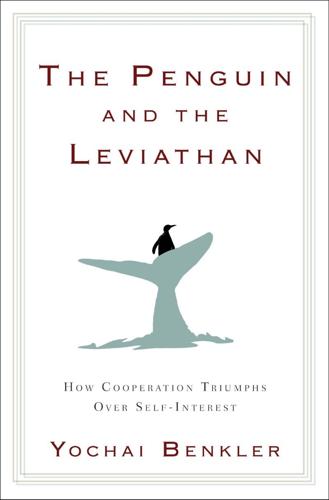
The Penguin and the Leviathan: How Cooperation Triumphs Over Self-Interest
by
Yochai Benkler
Published 8 Aug 2011
Whether their goals were to increase profits, improve law and governance, advance the sciences, or simply help us to lead better, happier lives, leading researchers and thinkers have long sought to improve the way these systems are designed. In the twentieth century’s first six decades, the favored approaches reflected the Leviathan; most systems were large, hierarchical, and controlled. Within the United States, this trend began in companies, when, early in the century, Frederick Taylor published his Principles of Scientific Management, which concerns a management process by which every action, by every employee, was described, timed, measured, and monitored to assure the most efficient operation, reducing the employee to a very well-regulated component in a perfectly designed system—one that was controlled by the powers above.
…
In GM’s Fremont, eighty industrial engineers gave each individual employee strict, detailed instructions on how tasks had to be performed, right down to every movement of an arm or pressing of a button. They timed employees, and monitored and measured their output and performance—much as Frederick Taylor had recommended a hundred years ago when he developed his Leviathan-inspired Principles of Scientific Management. In NUMMI, on the other hand, employees were organized into collaborative teams of four to six, each led by a team leader (to cement the solidarity even further, these were union members). There were no industrial engineers looming over every employee. Their every motion wasn’t prescribed.
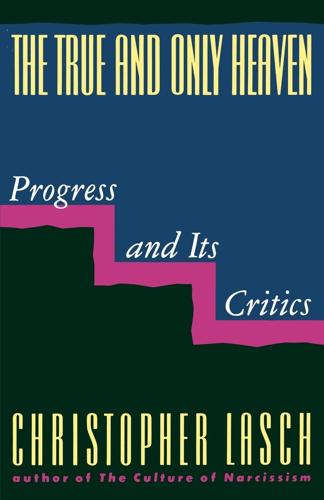
The True and Only Heaven: Progress and Its Critics
by
Christopher Lasch
Published 16 Sep 1991
The economic depression that followed the war threw labor on the defensive. Faced with an immediate threat to their standard of living and the survival of their unions, workers lost interest in control of production. In 1913, Cole predicted that the struggle over scientific management would end either in one of the "greatest steps" toward workers' control or in "Labour's most crushing defeat." By the early twenties, however, the unions had come to terms with scientific management (as had the Bolsheviks, for different reasons), in order to concentrate all their efforts on the maintenance of wartime wage levels. Both the emergence of communism and the deterioration of working conditions strengthened the Labour party—the only effective counterweight, it seemed, to the combined threat of reactionary employers and irresponsible revolutionaries.
…
Although he deplored violence, he agreed with the syndicalists that workers could be trained for "self-government" only in the school of class "warfare." Their "independence ... would not amount to much," he thought, if it was "handed down to them by the state or by employers' associations." Like Cole, Croly believed that Frederick Winslow Taylor's scientific management might precipitate a struggle for workers' control of production. The unions could not be expected to welcome appeals for greater efficiency as long as the "elimination of waste" served merely to speed up ____________________ * In all likelihood, Croly took this idea directly from Cole's World of Labour.
…
Clecak, Peter: on nostalgia, 117 clothing: symbolism of, 130 -31, 227 -30 Cobbett, William, 181 -85, 195, 196, 197, 210, 272; against humanitarianism, 184 ; compared with Paine, 181 -83; on "paper system," 183 Cohen, Albert: on working-class insularity, 466 Cohn, Norman: on millennialism, 41 Cole, G. D. H., 16, 304, 334, 340, 341, 404, 438 n.; on "community," 328 ; on decline of proprietorship, 317 ; disavows "our particular form of cant," 327 ; on IWW, 333 n.; on Marxism, 318 ; on nationalization of industry, 325 ; on scientific management, 326; on socialism, 319 ; on Sorel, 314 ; on syndicalism and guild socialism, 323 Coleridge, Samuel Taylor, 134 n., 136 ; on memory, 88 -89 Cotes, Robert, 493 collectivism, 319, 322 ; see also communism, social democracy, socialism Coming of Post-Industrial Society, The (Bell), 5I3 Commentary (New York), 30, 512 Commoner, Barry: on economic growth, 44 n.

Nomad Citizenship: Free-Market Communism and the Slow-Motion General Strike
by
Eugene W. Holland
Published 1 Jan 2009
Follett was a contemporary of the other, more famous, turn-of-thecentury North American management theorist Frederick Winslow Taylor, and the stark contrast between their views is revealing. Following in Sir Francis Bacon’s footsteps, Taylor advocated replacing the rule-of-thumb procedures developed informally by workers themselves with formal rules developed independently of them by “scientific” managers.21 Where Fol lett endorsed a form of authority arising immanently from an internally differentiated but nonhierarchical group, Taylor insisted on a sharp, hier archical distinction between the managers, who would analyze the work process to formulate rules of procedure, and the workers, who would merely carry them out.
…
In other words, all the powers we now attri bute to individuals, and locate ‘inside’ them , as personal powers, must be seen in this view as social pow ers, sustained ‘in’ the individual only in virtue of his or her embedding w ithin a particular ‘region’ or ‘locus’ of social activity” (127). 21. See Taylor’s Principles of Scientific Management, 4, in w hich he states that “the development of [management] science . . . involves the establishment of many rules, laws, and formulae w hich replace the judgm ent of the individual w orkm an.” 22. Ibid., 13. 23. Ibid., 23; emphasis original. See also p. 8: “there is a science o f handling pig iron, and . . . this science am ounts to so much th at the m an who is suited to handle pig iron cannot possibly understand it, nor even w ork in accordance w ith the laws of this science, w ithout the help of those w ho are over him.” 24.
…
B oston: Beacon Press, 1994. Surow iecki, Jam es. “T h e Science o f Success.” New Yorker, July 9, 2 0 0 7 . -------- . The Wisdom o f Crowds. N ew York: D oubleday, 2 0 0 4 . Taylor, C harles. Hegel and Modern Society. C am bridge: C am bridge U niver sity Press, 1979. Taylor, F rederick. The Principles of Scientific Management. 1 9 1 1 . R ep rin t, N ew York: W . W . N o rto n , 1967. Taylor, M ark . The Moment o f Complexity. C hicago: U niversity o f C hicago Press, 2 0 0 1 . Taylor, M ichael. The Possibility of Cooperation. C am bridge: C am bridge U ni versity Press, 1987. T hew eleit, K laus. Male Fantasies. 2 vols.

Head, Hand, Heart: Why Intelligence Is Over-Rewarded, Manual Workers Matter, and Caregivers Deserve More Respect
by
David Goodhart
Published 7 Sep 2020
The economy and the expansion of the public sector required more Head jobs and relatively fewer Hand ones, and as we shall see in the next chapter, the income returns to knowledge and education began to take off in the 1970s after almost a century of income compression between Head and Hand. Frederick Winslow Taylor’s theories of scientific management developed in the United States before the First World War had produced the giant mass-production factory by ending skilled workers’ monopoly of production know-how and breaking it down into easy-to-perform functions. This required less manual skill but some degree of literacy and numeracy.
…
S., 93 emotional intelligence (EQ), 13, 67, 71, 137–38, 168, 233, 237–38, 257–58, 299 Employer Skills Survey (UK), 198 Engels, Friedrich, The Condition of the Working Class in England, 33 England, see United Kingdom (UK) Enlightenment, 40, 42, 45, 48 eugenics, 63–64, 73 European Union (EU): popularity of, 167 see also Brexit Britain and names of specific countries EY, 271 Facebook, xiii, 16, 33, 273 family background: assortative mating and, 79–83 cognitive class and, 48, 115, 118, 125–26, 156 family breakdown and, 220, 221–25, 292–93 meritocracy vs., 6–9, 41, 77, 115, 118, 125–26, 156 socioeconomic status and cognitive aptitude, 78–82, 83–84 family policy, 161, 163 Fidoe, Ed, 300 Fletcher, Jason, 83 Florida, Richard, 224n Flynn, James, 6, 63, 67–68 Flynn effect, 6, 63, 67–68 Fortnite (computer game), 195 France: apprenticeships in, 117 baccalauréat and, 35, 117–18 decline of skilled workers, 139, 198 elite selection method, 66 Exposition Universelle (Paris, 1867), 46–47 geographic mobility and, 18, 288 higher education system, 44, 48, 53, 81, 102–4, 110, 117–18, 120, 126, 141, 156 professions/professional exams, 44 social mobility research in, 81 vocational training in, 117–18 Frank, Robert J., The Winner-Take-All Society (with Cook), 142 Franklin, Benjamin, 43 French, Marilyn, The Women’s Room, 247 Fried, Erich, 277 Friedan, Betty, 247 Fry, Martin “Mini,” 173 further education (FE) colleges (UK), 105–6, 108–10, 115 future: “Future of Work” transformation and, 143–44 of knowledge economy, 143–44, 253–74 need for cognitive diversity, 88–89, 281–84 of nursing, 232–42 rebalancing of Hand, Head, and Heart work, ix–xiii, 4–5, 20–29, 257–58, 275, 277–78, 284–301 of the university, 298 Gabbard, Keith, 290 Galton, Francis, 74n Gardner, Howard, 67 Gates, Bill, 33 gender: androgyny and, 223–24 assortative mating and, 79–83 cognitive class and, 32–33 Covid-19 crisis and, xii domesticity and, 27, 32–33, 226–32, 242–43, 293 feminism and, 79–80, 160–61, 224, 228–29, 231, 244, 247, 249 gender divide in status, 190–92, 213–14 gender equality and, 16, 32–33, 226 gender pay gap, 141, 152, 163 Hand (manual) work and, 190–94 Heart (care) work and, 4–5, 26–27, 226–32, 242–45, 249, 293–94 involved fathers, 243, 293 job status and, 190–92, 213–14 in knowledge economy, 151–52 #MeToo movement, 26 professional women and, 26 traditional masculinity and, 190–94, 243–44 General Certificates of Secondary Education (GCSEs, UK), 95–96, 141, 192, 198, 262 general intelligence (g), 56–71 measuring, 56, 61–71, see also IQ/IQ-type tests nature of, 57, 61, 62–63 geographic mobility, 17–19, 125–31, 273–74, 287–91 Germany: adult social care in, 218, 239 apprenticeships, 105, 112, 119–21, 198–99 decline of skilled workers, 139, 198 elite selection method, 66 geographic mobility and, 18, 288, 290 globalization and, 259 higher education system, 48, 50, 53, 102–4, 110, 117–21, 126, 156 immigration policy, 162 professions/professional exams, 44 social mobility research in, 81 vocational training in, 24, 35, 47, 117–19 Gest, Justin, The New Minority, 205 Gharbi, Musa al-, 283 GI Bill (1944, US), 43–44, 66, 96, 115 Gidron, Noam, 204 Gilens, Martin, 160 Gladwell, Malcolm, Outliers, 68 Glass-Steagall Act (1933, US), 284 globalization: centrifugal vs. centripetal forces and, x, 278 “Future of Work” transformation and, 143–44 Hand (manual) work and, 194–95, 198–206, 258–61 Head (cognitive) work and, 24, 258–62 hyper-globalization (Rodrik), ix lowest-cost approach and, x new version of, ix–x, 258–61 political cognitive domination and, 161–62, 175 training/retraining failure in developed countries, 111–17 world trade trends and, x see also immigration Goldie, Julie, 235–36 Goldin, Claudia, 117 Goldthorpe, John H., 75–76, 268, 269 Goleman, Daniel, 67 Goodman, David, 85n Google, 16, 33, 70 Gordon, Robert J., The Rise and Fall of American Growth, 122 Gottfredson, Linda, 57, 70–71 grammar school education, 46, 58, 65, 82, 98, 100 grandes écoles (France), 44, 48, 81, 102, 118, 141, 156 Gray, John, 166, 279 Great British Class Survey, 191, 191n great compression, 134 great divergence, 134–41 Green, Francis, 208–9 Greening, Justine, 17 grit (Duckworth), 67 groupthink, 20 Guilluy, Christophe, 126 Guyatt, Richard, 182 Hacker, Andrew, 82 Haidt, Jonathan: Heterodox Academy (US), 282–83 The Righteous Mind, 70 Hakim, Catherine, 248–49 Haldane, Andy, 255–58, 262, 298 Hall, Peter, 204 Hanbury, Jonathan, 238–39 Hand (manual) work, 189–215 Anywhere-Somewhere divide and, 12–20, 27 careers vs. jobs and, 211–12 Covid-19 crisis and, 7, 23, 26, 203, 277–78 craft skills, 114, 194, 195, 256–57, 294–96, 299–300, 301–2 decline of shop and home economics classes, 195–97 declining status of, 4–5, 13, 15, 189–95, 203–15 gender and, 190–94 globalization and, 194–95, 198–206, 258–61 immigration and, 194–95, 198–206 income divergence with Head (cognitive) work, 133–41 job/income decline and, 193–95, 199–200, 209, 210 new technologies in, 192, 198, 199 nostalgia for, 193, 194, 201–3 productivity in, 16–17 rebalancing with Head and Heart work, ix–xiii, 4–5, 20–29, 257–58, 275, 277–78, 284–301 as route to theoretical understanding, 196–97 scientific management and, 97, 260 separation from Head (cognitive) work, 97–99 skilled trades worker shortages, 15, 197–203 union membership decline and, 139–40 work satisfaction and, 208–11 see also apprenticeships Hankin, Steven M., 133, 142 happiness research, 11, 16–17, 220, 288, 302–3 Harari, Yuval Noah, 21, 36, 218–20, 299 Hardy, Thomas, Jude the Obscure, 47 Hargreaves, James, 42 Harrington, Mary, 248 Haskins, Ron, 82 Head (cognitive) work: Anywhere-Somewhere divide and, 12–20, 27 artificial intelligence (AI) and, 23–25 cognitive-analytical ability as gold standard of human esteem, 3–5, 11–12, 28 Covid-19 crisis and, 7, 23, 62, 277–78 crisis of meaning vs.
…
How Democracy Ends, 165 Russell Group (UK), 80, 102, 107, 125, 130, 263 Ryle, Gilbert, 38 Sacks, Jonathan, 21, 179 Salvini, Matteo, 155 Sanandaji, Tino, 78 Sanders, Bernie, 14 Sarmiento-Mirwaldt, Katja, 171 SAT (US), 20, 52, 64, 65–68, 80, 114–15, 117, 287 Saunders, Peter, 77 Savage, Michael, 191, 191n Scargill, Arthur, 139 Schleicher, Andreas, 294 School21 (UK), 300 scientific management: digital Taylorism, 23–25, 144, 258–61 Taylorism, 97, 260 scientific racism, 63–64, 73 Scotland, 48, 49, 97–98, 122–23, 128, 239, 241 Scruton, Roger, 183 Seagram Building (New York City), 184–85 secondary education: A levels (UK), 35, 46, 57–60, 95–96, 98, 105, 108–10, 124, 141, 192 credits increase and, 116 decline of shop and home economics classes, 112, 195–97 effectiveness of, 113 eleven-plus (UK), 20, 65–66, 82, 100, 196 free public education, 43–44 General Certificates of Secondary Education (GCSEs, UK), 95–96, 141, 192, 198, 262 high school graduation (US) and, 14–15, 35, 40, 51, 95–96, 98–99, 116, 118, 124 O levels (UK), 95–96 Sennett, Richard, The Hidden Injuries of Class (with Cobb), 190 service job categories, 144, 260–61 Shakespeare, William, 58, 181 signaling effect, of education, 94–96, 121–26, 267, 271 Singapore, 85 Skills and Employment Survey (UK), 266 Smith, Adam, 42 Snedden, David, 49 social gradient (Marmot), 207 social intelligence, 7, 21, 56, 66–67, 258 social justice, importance of, 28 social media: Covid-19 crisis and, xiii, 16 digital giants and, xiii, 16, 33, 273 mental well-being and, 37, 278–81 social mobility, 75–84 Anywhere-Somewhere divide and, 13–20, 287–91 assortative mating and, 79–83 in class stratified societies, 34–35 college/university education and, 6, 103, 105, 125–31, 253–55, 268–71 downward vs. upward, 76, 265–68 in fair society, 8–9 “genetics of success” and, 75 geographic mobility and, 17–19, 125–31, 273–74, 277, 287–91 graduates moving to non-graduate jobs, 24, 265–68 “leaving” mentality and, 126–31, 164 selection into cognitive classes and, 75–84, 268–71 in the UK, 75–78, 80–81, 126–31 in the US, 78–84 socioeconomic status, cognitive ability and, 78–82, 83–84 Sommers, Tim, 83–84 Soskice, David, 104–5, 126–27, 129 Soskice, Frank, 104 Spearman, Charles, 64 Speckesser, Stefan, 265 St George’s Hospital (Tooting, South London), 233, 234–37, 245 Standard Occupational Classification schema (UK), 146–47 Stanford-Binet Intelligence Scale, 64 Star Trek (TV series), 303 State of Mental Health in America (Mental Health America), 222 status, 203–15 career vs. job and, 211–12 cognitive aptitude correlation with socioeconomic, 78–82, 83–84 decline for Hand (manual) work, 4–5, 13, 15, 189–95, 203–15 distribution of status of self-respect, 10–11 gender divide in, 190–92, 213–14 “graduatization”/income divergence of the labor market, 133–52, 234–39 income inequality vs., 28, 37–38 measuring, 203–15 mental well-being and, 206–7 objective/subjective, 203–4 shift to Head (cognitive) work and, 214–15 sources of, 190 work satisfaction and, 208–11 STEM education, 101–2, 108, 111, 236, 265, 268 Stern, William, 64 Sternberg, Robert, 67 Stewart, James, 276 Strachey, John, 61 Suh, Jooyeoun, 246 Sullivan, Louis, 184 Sumption, Jonathan, 155 Sunstein, Cass, 285 Susskind, Daniel: The Future of the Professions (with R.
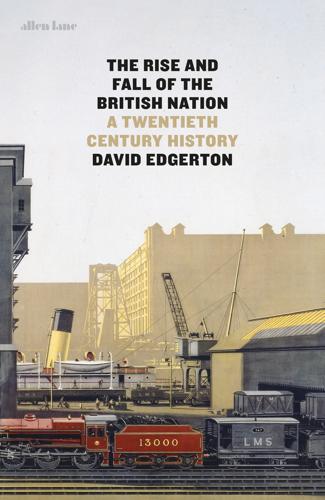
The Rise and Fall of the British Nation: A Twentieth-Century History
by
David Edgerton
Published 27 Jun 2018
Crown Film Unit, The Railwaymen (1946), available at www.bfi.org.uk/inview/title/6300 (restricted access). 19. George Sturt, The Wheelwright’s Shop (1923) (Cambridge, 1934), pp. 201–2. 20. Michael R. Weatherburn, ‘Scientific Management at Work: The Bedaux System, Management Consulting, and Worker Efficiency in British Industry, 1914–48’ (PhD Dissertation, Imperial College London, 2014), p. 79. Christopher McKenna, The World’s Newest Profession: Management Consulting in the Twentieth Century (Cambridge, 2006). 21. Weatherburn, ‘Scientific Management at Work’, provides the only reliable biography. 22. The Tavistock Institute of Human Relations, for example, did a lot of work on technology and work organization in the 1940s.
…
Hence the title of Margaret Gowing’s brilliantly clear Independence and Deterrence: Britain and Atomic Energy, 1945–1952, 2 vols. (London, 1974). 34. Ibid., vol. 2: Policy Making, p. 189. 35. Ibid., p. 449. 36. Ibid., pp. 172–85. 37. Communist Party of Great Britain, For Soviet Britain. 38. S. Sturdy and R. Cooter, ‘Science, Scientific Management, and the Transformation of Medicine in Britain c. 1870–1950’, History of Science 36 (1998), pp. 421–66; Charles Webster, ‘Conflict and Consensus: Explaining the British Health Service’, Twentieth Century British History 1.2 (1990), pp. 115–51. Daniel M. Fox, Health Policies, Health Politics: The British and American Experience, 1911–1965 (Princeton New Jersey, 2014). 39.
…
Stranges, Anthony, ‘From Birmingham to Billingham: High-Pressure Coal Hydrogenation in Great Britain’, Technology and Culture 26 (1985), pp. 726–57. Stubbs, J. O., ‘Lord Milner and Patriotic Labour, 1914–1918’, The English Historical Review 87.345 (1972), pp. 717–54. Sturdy, S. and Cooter, R., ‘Science, Scientific Management, and the Transformation of Medicine in Britain c. 1870–950’, History of Science 36 (1998), pp. 421–66. Summerfield, Penny, Reconstructing Women’s Wartime Lives: Discourse and Subjectivity in Oral Histories of the Second World War (Manchester, 1998). Supple, Barry (ed.), Essays In British Business History (Oxford, 1977)

Bullshit Jobs: A Theory
by
David Graeber
Published 14 May 2018
People have to be compelled to work; if the poor are to be given relief so they don’t actually starve, it has to be delivered in the most humiliating and onerous ways possible, because otherwise they would become dependent and have no incentive to find proper jobs.4 The underlying assumption is that if humans are offered the option to be parasites, of course they’ll take it. In fact, almost every bit of available evidence indicates that this is not the case. Human beings certainly tend to rankle over what they consider excessive or degrading work; few may be inclined to work at the pace or intensity that “scientific managers” have, since the 1920s, decided they should; people also have a particular aversion to being humiliated. But leave them to their own devices, and they almost invariably rankle even more at the prospect of having nothing useful to do. There is endless empirical evidence to back this up. To choose a couple of particularly colorful examples: working-class people who win the lottery and find themselves multimillionaires rarely quit their jobs (and if they do, usually they soon say they regret it).5 Even in those prisons where inmates are provided free food and shelter and are not actually required to work, denying them the right to press shirts in the prison laundry, clean latrines in the prison gym, or package computers for Microsoft in the prison workshop is used as a form of punishment—and this is true even where the work doesn’t pay or where prisoners have access to other income.6 Here we are dealing with people who can be assumed to be among the least altruistic society has produced, yet they find sitting around all day watching television a far worse fate than even the harshest and least rewarding forms of labor.
…
To the elite, he argued that coddling the poor with high wages was not good for “the race.”44 The promulgation of consumerism also coincided with the beginnings of the managerial revolution, which was, especially at first, largely an attack on popular knowledge. Where once hoopers and wainwrights and seamstresses saw themselves as heirs to a proud tradition, each with its secret knowledge, the new bureaucratically organized corporations and their “scientific management” sought as far as possible to literally turn workers into extensions of the machinery, their every move predetermined by someone else. The real question to be asked here, it seems to me, is: Why was this campaign so successful? Because it cannot be denied that, within a generation, “producerism” had given way to “consumerism,” the “source of status,” as Harry Braverman put it, was “no longer the ability to make things but simply the ability to purchase them,”45 and the labor theory of value—which had, meanwhile, been knocked out of economic theory by the “marginal revolution”—had so fallen away from popular common sense that nowadays, only graduate students or small circles of revolutionary Marxist theorists are likely to have heard of it.
…
As the examples I cited at the time make clear, people do really think in these terms when they reflect on the “social value” of their jobs.49 To think of labor as valuable primarily because it is “productive,” and productive labor as typified by the factory worker, effecting that magic transformation by which cars or teabags or pharmaceutical products are “produced” out of factories through the same painful but ultimately mysterious “labor” by which women are seen to produce babies, allows one to make all this disappear. It also makes it maximally easy for the factory owner to insist that no, actually, workers are really no different from the machines they operate. Clearly, the growth of what came to be called “scientific management” made this easier; but it would never have been possible had the paradigmatic example of “worker” in the popular imagination been a cook, a gardener, or a masseuse. • • • Most economists nowadays see the labor theory of value as a curiosity from the formative days of the discipline; and it’s probably true that, if one’s primary interest is to understand patterns of price formation, there are better tools available.
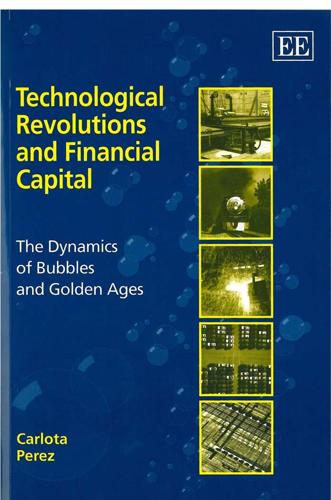
Technological Revolutions and Financial Capital: The Dynamics of Bubbles and Golden Ages
by
Carlota Pérez
Published 1 Jan 2002
Throughout the text the term ‘paradigm’ alone will sometimes be used as a short reference for techno-economic paradigm. Chandler (1977) pp. 281–3. Technological Revolutions and Techno-Economic Paradigms 17 time they taught modified versions of Taylor’s early ideas. Decades later, with the mass-production paradigm, the assembly-line version of Taylorism, called ‘scientific management’ (in its ‘Fordist’16 form), was taught and applied across the industrial spectrum. The task becomes harder the further one goes into the past, because in real life the paradigm is mostly an imitative model, made up of implicit principles that soon become unconscious ‘talent’ and later get subsumed into ‘rules of thumb’.17 So, an explicit identification of such guidelines might not be readily found in the historical record.
…
Of these, one of the most important is the willingness to try out truly radical innovations as improvements that will stretch the life cycle of established technologies or reduce the cost of peripheral activities. Crude versions of the high pressure engine were tried in the early 1800s to increase the productivity of textile machinery; ‘scientific management’ of work organization, which is the core of mass production, was first developed by Taylor at the turn of the century to increase the productivity of moving steel products in the steel yards; automation was given trial runs by the automobile industry in the early 1960s, control instruments in their pre-digital forms went far in development in the process industries from early on, numerical control machine tools were introduced in shoe manufacturing and aerospace in the 1960s and 1970s.

Death Glitch: How Techno-Solutionism Fails Us in This Life and Beyond
by
Tamara Kneese
Published 14 Aug 2023
See also digital memorialization practices; estate planning “Mother of Invention” (Okorafor), (i) mourning photography, (i) Mulvin, Dylan, (i)n72 Murphy, Michelle, (i)n6 Murray, Stuart J., (i) Musk, Elon, (i) MyHeritage, (i) MyLifeBits, (i) MySpace, (i), (ii), (iii) National Association of Estate Planners and Councils (NAEPC), (i) Nature (journal), (i) necropolitics, (i), (ii), (iii) Neiman Marcus, (i), (ii), (iii) Nellesen, Keith, (i)n64 neoliberalism, (i) network anthropology, (i) Networked Mortality, (i) network society, (i) New Yorker (magazine), (i) New York Times (newspaper), (i), (ii), (iii), (iv) NFTs (non-fungible tokens), (i) #NotOneMore campaign, (i) NPR (National Public Radio), (i) Nyong’o, Tavia, (i) Okorafor, Nnedi, (i) O’Neil, Cathy, (i) O’Reilly, Tim, (i) Ostler, Blaire, (i), (ii) parabiosis, (i) Parham, Marisa, (i)n11 Paris attacks (November 2015), (i) Pasek, Anne, (i)n8 PasswordBox, (i) PayPal, (i) Pederson, Todd, (i)n64 Penmachine (blog), (i) Perpetu, (i), (ii), (iii) Perpetual Memorials (website), (i) Peters, Ben, (i)n65 Peters, John Durham, (i), (ii)n65 Phillips, Whitney, (i) Phoenix, Joaquin, (i) photographs, (i) planned obsolescence, (i), (ii), (iii), (iv), (v) platform temporality: concept and impact of, (i), (ii); digital estate planning and, (i), (ii), (iii); illness blogs and, (i); power structures and, (i); Silicon Valley culture and, (i); social media memorials and, (i), (ii), (iii), (iv) Posada, Julian, (i)n8 postmortem photography, (i) Pow, Whit, (i), (ii)n8 power structures and power relations: digital death care practices and, (i), (ii), (iii); digital platforms and, (i); kinship networks and, (i); labor and, (i), (ii); platform temporality and, (i); smart technologies and, (i) Prabhakar, Arati, (i) privacy rights, (i) Probate and Property Magazine (ABA), (i) probate system, (i), (ii) Prudential Insurance Company of America, (i), (ii) Qadri, Rida, (i)n35 RAND Corporation, (i) Rash, Randy, (i) religious cosmology, (i) “Remembering Tamara Kneese,” (i) Replika, (i) Requiem Digitatem (Lipner), (i) research methods, (i), (ii) responsible death practices, (i), (ii), (iii), (iv) Reynold, Chanel, (i) Rheingold, Howard, (i), (ii), (iii) RIP trolling, (i) Romano, John, (i), (ii) Rose, Alexander, (i) Ross, Ivy, (i), (ii), (iii) Rothblatt, Martine, (i) Russell, Legacy, (i) safety-check features, (i) Saffo, Paul, (i) Salon (magazine), (i) Sandberg, Sheryl, (i) #SayHerName, (i) science fiction, (i), (ii) scientific management (Taylorism), (i) self-care, (i), (ii) Serlin, David, (i) Shakur, Tupac, (i) Sharpe, Christina, (i)n21 Silicon Valley culture: platform temporality and, (i); smart technologies and, (i); startup models and, (i), (ii); transhumanism and, (i), (ii); WELL (electronic community) and, (i) Simon, Herbert, (i)n3 Singularity, (i), (ii), (iii), (iv).
…
See also transhumanism smart technologies: digital immortality and, (i); digital remains and, (i), (ii); as haunted, (i); labor and, (i), (ii), (iii); Mormon transhumanism and, (i); as service to future generations, (i); surveillance and, (i), (ii); as weird inheritances, (i) Smith, Joseph, (i) Snapchat, (i) Snitzer, Albert, (i) social media memorials: affective and commercial value of, (i), (ii); Facebook and, (i), (ii), (iii), (iv), (v), (vi), (vii); impact of design decisions on, (i); memorialization policies and, (i), (ii), (iii), (iv); platform temporality and, (i), (ii), (iii), (iv); social movements and, (i); Virginia Tech shootings (2007) and, (i), (ii), (iii), (iv), (v), (vi) social movements, (i), (ii) The Social Network (2010 film), (i) Society of Trust and Estate Practitioners, (i)n20 Sorkin, Aaron, (i) The Soul of a New Machine (Kidder), (i) Spigel, Lynn, (i) spirit photography, (i), (ii) spiritual telegraph, (i) Splinter News (news website), (i) Stanford University, (i) Star, Susan Leigh, (i) Steinberg, Deborah Lynn, (i) Sterling, Bruce, (i) Stewart, Bill, (i) Strathern, Marilyn, (i) Sum (Eagleman), (i)n4 surveillance: communicative traces and, (i), (ii), (iii); digital estate planning and, (i), (ii); smart technologies and, (i), (ii) Sutherland, Tonia, (i) Svalbard Global Seed Vault, (i) Syndicus, Maria, (i) Taylor, Breonna, (i) Taylorism (scientific management), (i) technoculture, (i) techno-optimism, (i) techno-solutionism, (i), (ii) techno-utopianism, (i), (ii), (iii) Templeton Foundation, (i) 10,000 Year Clock (Clock of the Long Now), (i), (ii), (iii) Terasem Movement Foundation, (i) terminality, (i) thanosensitivity, (i) “There Will Come Soft Rains” (Bradbury), (i) Thiel, Peter, (i) Threadcraft, Shatema, (i)n23 Toeman, Jeremy, (i), (ii) Total Recall (Bell and Gemmell), (i) Transhuman House (Provo, Utah), (i) transhumanism: digital immortality and, (i), (ii), (iii); Mandel and, (i); research methods and, (i); on sexual reproduction, (i); Silicon Valley culture and, (i); smart technologies and, (i).

The Personal MBA: A World-Class Business Education in a Single Volume
by
Josh Kaufman
Published 2 Feb 2011
Graduate schools of business started popping up at the end of the nineteenth century during the Industrial Revolution. The intent of early MBA programs was to train managers to be more scientific in an effort to make large operations more efficient. Frederick Winslow Taylor, the pioneer of “scientific management” techniques that now form the foundation of modern management training, used a stopwatch to shave a few seconds off the average time a workman took to load iron ingots into a train car. That should give you a good idea of the underlying mind-set of most business school management programs.
…
Focus on Options, not issues, and you’ll be able to handle any situation life throws at you. SHARE THIS CONCEPT: http://book.personalmba.com/option-orientation/ Management Management is doing things right; leadership is doing the right things. —PETER DRUCKER, FATHER OF MODERN MANAGEMENT THEORY Much has been made in business schools of “scientific management” and the need for highly educated, professionally trained managers. In reality, you can’t learn to be a competent manager in a classroom—beyond a few simple principles, it’s a skill best learned through experience. Management is simple, but not simplistic. In essence, Management is the act of coordinating a group of people to achieve a specific Goal while accounting for ever-present Change and Uncertainty (both discussed later).
…
Protection, drive to defend Protective Garment Corporation Prototypes, -oriented business, requirements of Proxy measure Psychographics Public stock offering Purchasing power elements of increasing, methods for Pygmalion effect Qualifying customers Quality expectation effect versus incremental degradation predictability Questions counterfactual simulation to improve results self-elicitation Rackham, Nick Ranges Rath, Tom Ratios, systems analysis Reactivation, past customers Receivables Receivables financing Receptivity, to marketing message Reciprocation, in sales process Recruitment, from MBA programs Refactoring Reference levels, mental Referrals to eliminate risk of purchase to expand network Reinterpretation, mental Relative importance testing Reliability of quality Remarkability, and attention-grabbing Reorganization, mental Replacement cost pricing method Reputation of authority strong, building trust, and sales process Resale defined -oriented business, requirements of Research and development, personal Resilience Resources, universal currencies Return on assets ratio Return on capital ratio Return on investment (ROI) Return on promotion ratio Returns/complaints ratio Revenue breakeven point increasing, methods for Ricardo, David Risk reversal, to eliminate risk of purchase Robbers Cave experiment Robin, Vicki Rohn, Jim Ross, Julia Safety, in communication Sales buffers in and commitments common ground as condition customer alternatives, understanding damaging admission to prospects education-based selling and negotiation objections to purchase, countering past customers, reactivation of pricing methods pricing uncertainty principle purpose of reciprocation in recommended reading risk reversal in transaction in and trust universal currencies value-based selling Sampling, systems analysis by Satisfaction, customer. See Value delivery Scalability Scarcity, and behavior Scenario planning Scheiber, Noam Schraga, Christian Schwartz, Tony Scientific management Sebenius, James Second-order effects Secured and unsecured loans Segmentation, customer data measure Selection test Self-elicitation Self-fulfilling prophesy, and Pygmalion effect Self-regard, excessive Services attention-getting for. See Marketing as business, requirements of defined to fill wants and needs.

Makers and Takers: The Rise of Finance and the Fall of American Business
by
Rana Foroohar
Published 16 May 2016
See Vipal Monga, “Record Cash Hoard Concentrated Among Few Companies,” Wall Street Journal, June 11, 2015. 18. Frederick Winslow Taylor, The Principles of Scientific Management (New York: Harper, 1913), 59. 19. Frederick Winslow Taylor, Shop Management (New York: Harper, 1912), 99 and 104. 20. Robert R. Locke and J. C. Spender, Confronting Managerialism: How the Business Elite and Their Schools Threw Our Lives out of Balance (London: Zed Books, 2011). 21. Ibid., 5. 22. Taylor, The Principles of Scientific Management, 7. 23. David Halberstam, The Best and the Brightest, 20th anniversary ed. (New York: Ballantine Books, 2008). 24.
…
THE PRINCIPLES OF SCIENTIFIC (MIS)MANAGEMENT Even before Henry Ford was battling the Dodge brothers, Frederick Winslow Taylor, a mechanical engineer from Philadelphia, was gaining fame and fortune for his ideas about how to improve American industry. Those ideas, which came to be known as “efficiency theory” or, as critics put it, “Taylorism,” were laid out in his seminal work, The Principles of Scientific Management, published in 1911. Like the Dodge brothers, Taylor didn’t think much of labor. His theories were built around the notion that workers were a lazy and rather stupid bunch who needed to be managed closely if the American economy was to become more efficient. His book laid out his disdain for labor in ways that are hard to imagine any business leader openly articulating today.
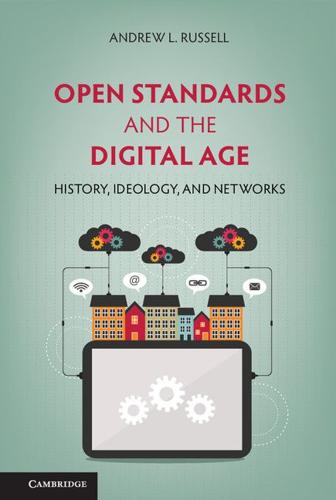
Open Standards and the Digital Age: History, Ideology, and Networks (Cambridge Studies in the Emergence of Global Enterprise)
by
Andrew L. Russell
Published 27 Apr 2014
By the early twentieth century, as historian Paul Israel has shown, even the tasks of invention – once the realm of inspired individuals in machine shops – moved to industrial laboratories and became subject to the bureaucratic routines of corporate strategists who were themselves inspired and emboldened by the new ideology of scientific management. As they rejected independence in favor of the corporate life, “inventor-engineers came to personify engineering values of standardization and efficiency.”31 Electrical Measurement The international and transnational dimensions of telegraphy – and of industrial and scientific standardization more generally – become evident when we consider the dilemmas of electrical transmission in European networks.
…
For the most part, AT&T leaders believed their competitive advantages flowed from keeping the company’s patents and practices closed and secretive. Their insular attitude began to change in the years before the First World War. One indication of the change may be seen in Henry F. Albright’s speech at the 1915 conference of Bell System engineering and manufacturing personnel. Albright, who was the leading proponent of scientific management at Western Electric, asked his colleagues to reconsider the potential benefits of professional activities outside the Bell System. He suggested that individual employees could gain “an enlarged circle of acquaintances” and learn about other engineering methods if they joined industrywide associations and societies.
…
Vail and the Civic Origins of Universal Service,” Business and Economic History 28 (1999): 71–81; Milton Mueller, Universal Service: Competition, Interconnection, and Monopoly in the Making of the American Telephone System (Cambridge, MA: The MIT Press and American Enterprise Institute, 1997), 92–135; John, Network Nation, 340–345; Lipartito, The Bell System and Regional Business, 139; Federal Communications Commission, Investigation of the Telephone Industry of the United States (Washington, DC: Government Printing Office, 1939), 475–485. 18 Frederick W. Taylor, The Principles of Scientific Management (New York: Harper & Brothers Publishers, 1911), 7. 19 Mueller, Universal Service, 129–145; Lipartito, The Bell System and Regional Business, 185–207; John, Network Nation, 340–369. 20 Kenneth Lipartito, “Rethinking the Invention Factory: Bell Laboratories in Perspective,” in Clarke, Lamoreaux, and Usselman, eds., The Challenge of Remaining Innovative, 133.

The Making of an Atlantic Ruling Class
by
Kees Van der Pijl
Published 2 Jun 2014
Fordism as a comprehensive conception of advanced capitalism entailed three principal elements. First, it assumed the dominance within the technical labour-process of the assembly line and mass production. As compared to the original time-measurement doctrines of F.W. Taylor, Ford proposed the more radical step of eliminating the skilled worker who still was the object of scientific management and replacing him by a semi-skilled operative. The second aspect of Fordism was the recognition of wages not only as an incentive, but as a demand component as well. Ford anticipated Keynesian demand-side economic policy by approaching the standardization of the automobile as an example of the integral relationship of mass production and mass consumption.
…
Indeed, ‘if the State were proposing to impose an economic direction by which the production ceased to be a “function” of a parasitic class and became a function of the productive organism itself, such a hypothetical development would be progressive, and could have its part in a vast design of integral rationalization … One could thus reduce all income to the status of technico-industrial functional necessities and no longer keep them as the juridical consequences of pure property rights’.38 Although rejecting the Fascist exaltation of the state, Gramsci by his appreciative comments on progressive corporatism indicated the common ground shared by the productive-capital concept and contemporary working-class ideology, both arising out of the real subordination of labour to capital characteristic of the Fordist mode of accumulation. The increasing bureaucratic complexity of large-scale industrial production, as well as its scientific management according to the supposedly ‘objective laws’ of optimal productivity prescribed by Taylor, Ford, and others, tended to obscure or displace consciousness of exploitative relations on the shopfloor. Perceiving their situation in terms of a maldistribution of income blocking access to a consumer-durable standard of mass consumption, industrial workers became increasingly receptive to a strategy of supporting the growth of productivity in return for higher wages.39 Subjectively, class struggle thus was transformed from a struggle between independent workers and ‘integral’ capitalists into a united front of the managers of functioning capital and the organized working class confronting the ‘predators of surplus-value’: the petty money interest represented by the rentier class.
…
Flanders, who was in the United States studying the American trade-union movement, contributed anti-Communist articles to both publications, while Denis Healey, the future Labour minister became London correspondent for the New Leader in 1954.54 The TUC leadership not only played a critical role in splitting the WFTU, but also propagated the American methods of scientific management that its representatives had become fascinated by in the course of Washington-sponsored junkets.55 The ruling Labour Party, apart from playing a major part in shaping the institutional framework of Atlantic integration, complemented TUC activities on the European continent by supporting the pro-American split-offs in European Social Democratic parties.

Between Human and Machine: Feedback, Control, and Computing Before Cybernetics
by
David A. Mindell
Published 10 Oct 2002
“Spike” Blandy, a 1913 Naval Academy graduate, had excellent gun club credentials: he had done postgraduate work in ordnance and had served as gunnery officer on the battleship New Mexico , which had one of the original Ford Rangekeepers, and also aboard the West Virginia , which had a new G.E. system. He had even spent time observing production at the Midvale Steel Company, where Frederick Winslow Taylor did his pioneering work in scientific management. Blandy pushed computers as replacements for manual plotting, argued for innovations in training, and won his ships numerous gunnery trophies. 31 Ironically, in 1938 Blandy saw the future of naval warfare while serving as commander of one of the oldest battleships in the fleet, the USS Utah .
…
Journal of the AIEE 45 (1926): 1061–69. Nealey, J. B. “Integration of the Automatic Pilot System and the Norden Bombsight.” Aero Digest , 1 June 1945, 98. Nebeker, Frederik. Signal Processing: The Emergence of a Discipline, 1948–1998 . New York: IEEE Press, 1998. Nelson, Daniel. Frederick W. Taylor and the Rise of Scientific Management . Madison: University of Wisconsin Press, 1980. Noble, David F. America by Design: Science, Technology, and the Rise of Corporate Capitalism . New York: Knopf, 1977. ———. Forces of Production: A Social History of Industrial Automation . New York: Knopf, 1984. Norberg, Arthur L., and Judy E.
…
“The Quest for Reach: Development of Long-Range Gunnery in the Royal Navy, 1901–1912.” In Tooling for War: Military Transformation in the Industrial Age , ed. Stephen D. Chiabotti, 49–96. Chicago: Imprint, 1996. Svoboda, Antonin. Computing Mechanisms and Linkages . Radiation Laboratory Series, 27. New York: McGraw-Hill, 1948. Taylor, Frederick Winslow. The Principles of Scientific Management . New York: Harper & Brothers, 1911. Tellegen, B. D. H. “Inverse Feedback.” Phillips Technical Review 2 (October 1937): 289–94. Terman, Frederick Emmons. Radio Engineer’s Handbook . New York: McGraw-Hill, 1943. Thompson, Emily. The Soundscape of Modernity . Cambridge: MIT Press, forthcoming.
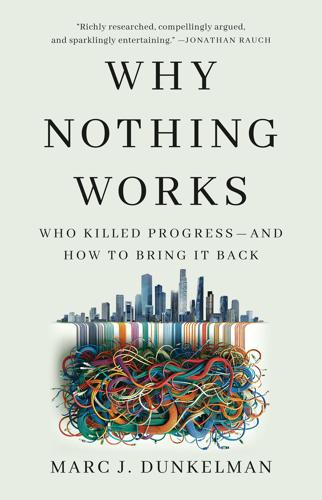
Why Nothing Works: Who Killed Progress--And How to Bring It Back
by
Marc J Dunkelman
Published 17 Feb 2025
In most little nineteenth-century businesses, bosses had prized employees who understood every part of an operation—they wanted generalists. But in the huge manufacturing facilities coming to prevail through the early twentieth century, specialization became coin of the realm. In 1895, Frederick Winslow Taylor had published a paper on what he called “scientific management.” He called for planning departments to replace foremen in control of factory operations—and for those planning experts to dictate to cogs on the factory floor how to do their jobs. The thinking part of any industrial process, in Taylor’s view, should be done by people who had divined the right way.44 And that meant ceding the bulk of decision-making to people at the top—to professionals who knew better.45 Taylorism was controversial, viewed by some as a scheme to undermine the dignity of labor.
…
The thinking part of any industrial process, in Taylor’s view, should be done by people who had divined the right way.44 And that meant ceding the bulk of decision-making to people at the top—to professionals who knew better.45 Taylorism was controversial, viewed by some as a scheme to undermine the dignity of labor. But it nevertheless became a cultural touchstone.46 Taylorism girded Henry Ford’s embrace of the assembly line.47 And while scientific management became a central nostrum in the world of big industry, its underlying thrust was applied much more widely.48 Ordinary Americans began to put a greater premium on having their problems addressed by people who had acquired certified expertise.49 Trained doctors supplanted the “quacks and nostrums” who dispensed medical advice.
…
Elisabeth S. Clemens, “Lineages of the Rube Goldberg State: Building and Blurring Public Programs, 1900–1940,” in Rethinking Political Institutions: The Art of the State, ed. Ian Shapiro, Stephen Skowronek, and Daniel Galvin (New York: NYU Press, 2006), 201–208. 56. Brandeis was a great believer in scientific management, but was suspicious of experts. Urofsky, Louis D. Brandeis, 349. 57. Annmarie Hauck Walsh, The Public’s Business: The Politics and Practice of Government Corporations (Cambridge, MA: MIT Press, 1978), 173. 58. Schlesinger, The Crisis of the Old Order, 377–378. 59. Lewis, The Improbable Wendell Willkie, 69.
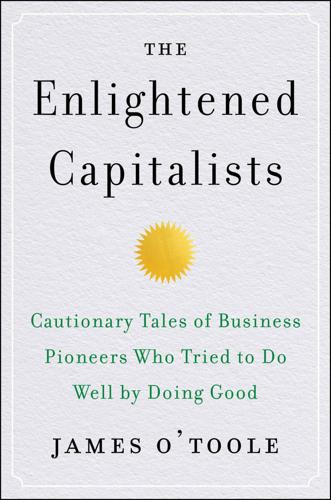
The Enlightened Capitalists
by
James O'Toole
Published 29 Dec 2018
He made certain his workers lived in comfortable homes in a spotlessly clean community with free schools and hospitals, yet acted the miser when it came to paying their wages. While Milton personally enjoyed fine wines and brandy on his travels, he fired employees caught drinking in his company town. The Hershey factory was clean, warm in winter, and well-ventilated in summer, yet its workers toiled under Frederick Winslow Taylor’s “scientific management” system, which reduced their tasks to dulling, inhumane assembly-line routines that called to mind the soul-destroying work satirized in Charlie Chaplin’s classic film Modern Times. Although Hershey lavished imported luxuries on Kitty, he harshly reprimanded employees who “wasted” electricity by turning on extra lights needed to do their tasks.9 Job security was the unquestioned norm in the chocolate factory, where most employees assumed they had lifetime employment; nonetheless, Hershey had a reputation for the occasional arbitrary firing.
…
Lincoln Electric has successfully answered that charge to the satisfaction of government regulators by portraying the role of the advisory board as a formal structure to facilitate employee-management communication and coordination. But the unionists’ strongest criticisms are directed at Lincoln’s piecework method of compensation. That system has been the bane of unions since the “scientific management” era of the late nineteenth century, when infamous industrial engineer Frederick Winslow Taylor attempted to break down manufacturing tasks into discrete and measurable physical actions, calculate how many such actions workers could do in a given time period, and then establish a pay rate to reward workers for the number of actions they complete.
…
De Pree, 227–30 Frost and, 229 great furniture designers and, 228 growth outpacing management, 239 headquarters, Zeeland, Mich., 227, 398 human-centered organizational culture, 229–30 “human environmental design,” 231 innovative products, 231 lack of sustainability and, 241–42 last De Pree at and loss of control, 240–41 manufacturing facilities, 231 Max’s leadership, 230–38 nonfamily CEOs and problems, 238–41 “organizational entropy” and, 242 participatory management, 229 profits and, 230, 238, 241 public offering of stock, 230 recession of 1980s and employee input, 236–37 regaining of culture at today, 241–42 religious motivation for business practices, 227–28 Scanlon plan adopted at, 228–29, 234, 235 Scanlon plan shelved, 241 “silver parachutes,” 237 social responsibility, 238 “theory fastball” and leadership of, 231–38 value-based culture at, 237–38 Vice President for People, 235–36 women at, 235 worker committees, 229 Hershey, Catherine “Kitty” Sweeney, 76, 80, 81, 82, 83 Hershey, Fanny Snavely, 71–73, 74, 75, 80, 85 Hershey, Henry, 71–73, 74, 75, 76, 78, 80 Hershey, Milton Snavely, 71–93, 119, 143–44, 323, 395, 396, 426, 427, 436, 489n as autocratic, 87, 89 Burnham’s influence on, 76–77, 78 business practices, 74 childhood, 71–73 chocolate experiments, 76–80 chocolate manufacturing and, 79, 80 City Beautiful movement and, 76, 78 contradictory character and behavior, 71, 80–81 cooperative movement and, 86–87 costly pleasures of, 76, 80, 85 in Cuba, 85 dancing and, 152, 428 detractors, 86–88, 464 earlier chocolate makers and, 77 early career, 73–75 employees and, 80–81, 87 giving away his fortune, 82, 83, 88 Great Depression and, 86, 88 Hershey’s Milk Chocolate, 78 Hershey Trust and, 83, 89, 90, 434, 507n incorporation of company, 85–86 Industrial School established by, 82–83, 86, 87 Lancaster Caramel Company and, 75–76, 78 legacy of, 89–93 legacy of Hersey trust, 89–93, 433–34 living conditions of workers and, 80 marriage to Kitty, 76, 80, 81, 83 model town: Central Hershey, Cuba, 85 model town: Hershey, Pa., 78–79, 81, 82, 85–86, 88, 315 paternalism and, 87 Pennsylvania Dutch and, 71–72, 76, 84, 428 philanthropy and fame, 81–82 politics of, 83–84 revered by employees, townspeople, and public, 88 Taylorism and, 81, 430 wealth of, 76 workers’ education and, 88 workplace practices, reason for, 431–32 Hershey Chocolate Company, 395 advertising and, 89 Amish and Mennonite men working in, 80 CEO Lenny and changes at, 89–90, 92 community relations, 83, 90 Cuba sugar plantation and mill, 85 environmental issues and global sustainability efforts, 89 factory built, Lancaster county, 78–79 “Field Ration D,” 88 Hershey Trust and ownership of, 89–93, 433–34, 507n incorporation of, 85 institutionalization of practices, 435 job security and, 81, 86, 103 labor unions and, 87–88, 90 NLRB rulings and changes in pay policies, 88 profits and, 82, 86, 89 profit-sharing at, 82 recent news and stain on, 71 school trustees and scandal, 90, 91–92 “scientific management” system, 81, 107 social responsibility today and, 89 takeover attempts, 90–91, 92, 490n26 uncertain future of, 92 wages and, 80–81, 87, 92 working conditions at, 81 Hershey Foundation, 86 Hershey Industrial School, 82–83, 86, 87 endowment for, 89 renamed Milton Hershey School, 89 Hershey Trust, 83, 89, 90, 434, 507n Hertz, 279, 280 Hewlett-Packard, 424, 429, 473, 474, 476 Hill, Andrew, 440–41 Hirshberg, Gary “How to Make Money and Save the World,” 454 sale of Stonyfield Farms to Danone, 455 Hockney, David, 56 Hoffman, Philip, 163 Honeyman, Ryan, The B Corp Handbook, 458 Honeywell, 424 Hoover, Herbert, 149 “How to Make Money and Save the World” (Hirshberg), 454 human capital, 15, 408, 474 Hunt, Michelle, 235 IBM, 112, 174 Norris labels unethical marketing tactic as “FUD,” 245–46 idealism cooperatives and, 416 corporate social responsibility and, xxxviii–xl Credo Challenge meeting and, 167–69 enlightened capitalists as practical idealists, xli hard facts for, 466–67 history’s support of, xliii increased corporate interest in social responsibility and, 443–44 Levi Strauss and, 205 Lewis and, 131, 134–35 Lincoln and, 131 motivations for, 427–28 Owen and, 26, 131 practical, examples of, 427 realism vs., xxxvi tensions with practicality, 360 IKEA, 434, 507n7 Imitation Game, The (film), 244 incentive management, 97–105 income inequality, 123, 469–72 independent trust and foundation-owned companies, 434–35, 507n India, caste hierarchies in, xxii Industrial Revolution, xi, 51, 68, 432 effect on Britain’s economic and social order, 4–5 in England, 206 growth of cities and slums, 5 Manchester, UK and, 9 movement from farms to cities, 5 Owen’s reforms and non-exploitive capitalism, 6 innovation, xvii, xxxviii Arco and, 310 cultures that encourage, 328 De Pree on, 232 employee mobility and, 133 Google’s Quayside and, 450 Herman Miller Company, 231 Hershey and, 74 John Lewis Partnership and, 132 Land and, 328 Lever and, 51, 53, 58 Lewis’s system and, 133, 134 Lincoln Electric, 94, 95, 102, 109–12 loss of, 476 Nucor and, 266 smaller private companies as crucibles of, 397, 437, 440 SWA and, 289 Tom’s of Maine and, 368 W.
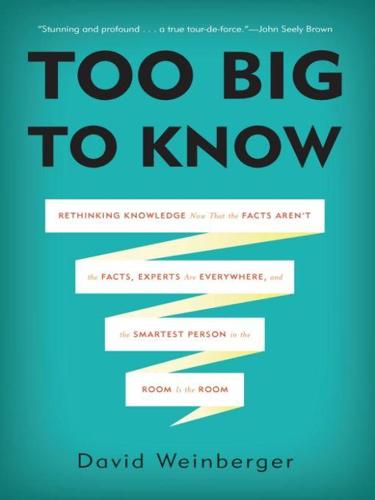
Too Big to Know: Rethinking Knowledge Now That the Facts Aren't the Facts, Experts Are Everywhere, and the Smartest Person in the Room Is the Room
by
David Weinberger
Published 14 Jul 2011
Some historians trace the rise of professional experts to a meeting held six months after the end of the Civil War,3 when one hundred reformers in various fields met in the Massachusetts State House and created the American Association for the Promotion of Social Science to advise their local communities and states about fixing everything from education to urban poverty, all based on the latest scientific research. 4 By the early 1900s, experts wielding “scientific management” techniques pioneered by Frederick Wilson Taylor—immortalized as the man with a clipboard and a stopwatch, timing the movements of workers—were sweeping through field after field.5 Even the home was now subject to the work of experts; as Ellen Swallow Richards, the founder of home economics and the first woman to get an engineering degree from MIT, wrote: “The work of homemaking in this scientific age must be worked out on engineering principles and with the cooperation of trained men and trained women.”6 Experts as full-time professional knowers needed professional institutions to support them.
…
See also Books and book publishing Paper-based tools Parenting experts Patent Office, US PatientsLikeMe.com Pavement performance Peer-review journals Perception, facts and Permission-free knowledge Philosophy defining and quantifying knowledge information overload reality unresolved knowledge Pinker, Steven Planetary Skin initiative Plato PLoS One online journal Pogue, David Polio vaccine Politics Politifact.com Popper, Karl Population growth, Malthusian theory of Pornography Postmodernism Pragmatism PressThink.org Primary Insight Principles of Geology (Lyell) Prize4Life Protein folding ProteomeCommons.org Pseudo-science Public Library of Science (PLoS) Punchcard data Pyramid, knowledge Pyramid of organizational efficiency Quora Racial/ethnic identity Ramanujan, Srinivasa RAND Corporation Random Hacks of Kindness Rauscher, Francis Raymond, Eric Reagan, Ronald Reality Reason as the path to truth and knowledge critical debate on unresolved knowledge Reliability Repositories, open access Republic of Letters Republican Party Republic.com (Sunstein) Revolution in the Middle East Rheingold, Howard Richards, Ellen Swallow Riesman, David Robustness “The Rock” (Eliot) Rogers, William Rorty, Richard Rosen, Jay Roskam, Peter Rushkoff, Douglas Russia: Dogger Bank Incident Salk, Jonas Sanger, Larry Schmidt, Michael School shootings Science amateurs in crowdsourcing expertise failures in goals of hyperlinked inflation of scientific studies interdisciplinary approaches media relations Net-based inquiry open filtering journal articles open-notebook overgeneration of scientific facts philosophical and professional differences among scientists public and private realms scientific journals transformation of scientific knowledge Science at Creative Commons Science journal Scientific journals Scientific management Scientific method Self-interest: fact-based knowledge Semantic Web Seneca Sensory overload Sexual behavior The Shallows (Carr) Shapiro, Jesse Shared experiences Shilts, Randy Shirky, Clay Shoemaker, Carolyn Simplicity in scientific thought Simulation of physical interactions Slashdot.com Sloan Digital Sky Survey Smart mobs “Smarter planet” initiative Smith, Arfon Smith, Richard Soccer Social conformity Social networks crowdsourcing expertise Middle East revolutions pooling expertise scaling social filtering Social policy: social role of facts Social reform Dickens’s antipathy to fact-based knowledge global statistical support for Bentham’s ideas Social tools: information overload Society of Professional Journalists Socrates Software defaults Software development, contests for Sotomayor, Sonia Source transparency Space Shuttle disaster Spiro, Mary Sports Sprinkle, Annie Standpoint transparency Statistics emergence of Hunch.com Stopping points for knowledge The Structure of Scientific Revolutions (Kuhn) Stupidity, Net increasing Sub-networks Suel, Gurol Sunlight Foundation Sunstein, Cass Surowiecki, James Systems biology Tag cloud Tagging Tatalias, Jean Taylor, Frederick Wilson TechCamps Technodeterminism Technology easing information overload Technorati.com Television, homophily and Temptation of hyperlinks Think tanks Thoreau, Henry David The Tipping Point (Gladwell) Todd, Mac Toffler, Alvin TopCopder Topic-based expertise Torvalds, Linus Traditional knowledge Tranche Transparency hyperlinks contributing to objectivity and of the Net Open Government Initiative Transparency and Open Government project Triangular knowledge Trillin, Calvin Trust: reliability of information Trust-through-authority system Truth elements of knowledge reason as the path to value of networked knowledge Twitter Tyme, Mae Unnailing facts Updike, John USAID UsefulChem notebook Vaccinations Verizon Vietnam Virginia Polytechnic Institute and State University Wales, Jimmy Wallace, Alfred Russel Walter, Skip Washington Post Watson, James Welch, Jack Welfare The WELL (The Whole Earth’Lectronic Link) Whole Earth Catalog Wikipedia editorial policy LA Times wikitorial experiment policymaking Virginia Tech shootings Wikswo, John Wilbanks, John Wired magazine The Wisdom of Crowds (Surowiecki) Wise crowds Wittgenstein, Ludwig Wolfram, Stephen WolframAlpha.com World Bank World Cup World War I Wurman, Richard Saul Wycliffe, John York, Jillian YourEncore Zappa, Frank Zeleny, Milan Zettabyte Zittrain, Jonathan Zuckerman, Ethan a I’m leaving this as an unsupported idea because it’s not the point of this book.

Social Life of Information
by
John Seely Brown
and
Paul Duguid
Published 2 Feb 2000
This distinction between formal and informal is, the Stanford sociologist Mark Granovetter notes, "one of the oldest in the literature."41 Its age is testament not only to our lack of originality but also to the distinction's robustness. For attempts have repeatedly been made to iron out the improvisational and informalor perhaps to iron them in to routines. Frederick Taylor's "scientific management" sought to program Page 114 every move of workers into a tightly choreographed and coordinated routine. And Chester Barnard, the grandfather of organizational studies at Harvard Business School, portrayed the informal as deviant behavior, something to be stamped out. 42 Standard notions of process, too, give primacy to the formalthe account that can be written on that blank sheet of paper.
…
See Credentialing Delegation, bots and, 53 54 Demassification, 23 of production, 26 27 Page 309 Desktop publishing, 79 80 Dibbell, Julian, 190 Dickens, Charles, 135, 195 196 DigiCash, 60 Digitized libraries, 179 181 Disaggregation, 23 information revolution and, 65 66 Disintermediation, 6 effects of, 28 31 Displacement, 81, 105 Distance combating, 167 170, 226 227 and education, 211 212, 223 227, 229 241 geographic, 224 recomputing, 229 social, 224 Divisions communities of practice, 141, 142 143 implications of, 143 146 networks of practice, 141 142 d-lib research, 180 Documents versus database, 186 fixity of, 197 198 nature of, 183 185 validation through, 187 188 Downes, Larry, 23, 84 Downsizing, downside of, 122 Dretske, Fred, 138 Drucker, Peter, 118 Dylan, Bob, 199 E eBay, 44 acquisitions activities of, 25 Education centralized, 227 228 decentralization of, 231 241 of disadvantaged groups, 224 distance, 223 224 distance, history of, 211 212 enculturation in, 219 220 external degree programs and, 229 facilities for, 236 240 faculty responsibilities, 235 for-profit, 209 210 future of, 233 241 graduate, 221 in information age, 207 209, 212 213 massification in, 25 26, 209 misrepresentation in, 216 219 on-line and off-line activities in, 226 227 peer support in, 221 223 reorganization of, 230 231 research and, 235 236 student needs, 233 234 U.S. structure, 213 215 undergraduate, 220 Electronic books, 178, 179 181 Electronic newspapers, 177 179 e-lib research, 180 Eliza, computer program, 35 36 Encryption, 59 60 Enculturation, 219 220 Englebart, Douglas, 84 Epistemology, 118 Page 310 Ethernet, development of, 176 177 Eureka project, 112 113, 125, 142 e-zines, 193 F Faraday, Michael, 86 FedEx, 29 Fidler, Roger, 189 Field Communications, 178 Fish, Stanley, 223 Fixity, 197 198 of newspapers, 199 value of, 201 202 Flat organizations, information technology and, 28 29 Ford, 122 reengineering of, 92 Ford, Henry, 27 Froomkin, Michael, 46, 52 Fukuyama, Francis, 28, 29 Futurology, limitations of, 31 32 G Gates, Bill, 11, 20, 39, 248 Gateway (Times Mirror), 178 Geer, Dan, 60 61 Gehry, Frank, 71 Gibbons, Jim, 221 222 Giddens, Anthony, 62 Gildea, Patricia, 130 GM, 23 Saturn project of, 154 Granovetter, Mark, 113 Gray, Jim, 11 Greeley, Horace, 195 Guardian, Web presence of, 178 GUI (Graphical User Interface), development of, 150 151, 156 157, 158 161 H Hammer, Michael, 91, 92, 93, 98, 107, 111, 144 Hayek, Friedrich, 139 Heckman, James, 223 Hewlett-Packard and best practice, 123 reengineering of, 92 Home office concentration of effort at, 79 80 costs of, 81 82 drawbacks to, 69 70 trends regarding, 67 68 Hooke, Robert, 191 Hot desking, 69, 70 lack of success of, 70 74 Hughes, Robert, 228 Huizinga, Johan, 197 Humphrys, Mark, 54 I IBM, 87, 157, 159 PC division of, 154 reengineering of, 92 rhetoric of, 20, 207 208, 213 Illinois, University of, 211 212 Improvisation, 108 109 in business practice, 109 111 Indiana University, 207, 213 Information checking reliability of, Page 311 187 189 compared to knowledge, 119 120 connotations of term, 118 controlling flow of, 12 documents and, 183 185 fluidity of, 197 200 overload of, 15 17 overreliance on, 21 22 peer-group sharing of, 102 103, 106 108, 125 126 social context of, 8 9 traditional institutions redefined in context of, 20 21, 23 31, 210 211 Information age, 1 limits to, 6 8 origin myths about, 17 19 selective constituency of, 5 6 tunnel design and, 2 4 Information brokering, 41 44 Information Rules, 171 Information technology concerns about, 39 41 displacement and concentration provided by, 81 disruption caused by, 83 86 effects on organizations, 145 146 expectations of, 19 20 and flatness of organizations, 28 29 future of, 38 41 hidden costs of, 77 78 instability caused by, 75 76 and intellectual property law, 248 250 supplanting of traditional institutions by, 16 17 ubiquity of, 13 17 Innis, Harold, 30, 200 Innovation and complementarity, 160 versus invention, 155 and organization, 160, 171 172 Institutions evolution of, 246 252 future of, 250 252 Intel, 59 Intellectual property rights, 246, 248 250 Internet community-forming aspect of, 189 190 e-zines on, 193 194 free information on, 56 57 retailers on, 37 Internet Service Providers, 28 J Jaspers, Karl, 219 Java, 87 Jefferson, Thomas, 196 Jobs, Steve, 151, 158 Johnson, Samuel, 243 K Kenney, Martin, 166 Keyfax (Field Communications), 178 Knight-Ridder, 178 Page 312 Knobot, 42 44 Knowledge clustering and, 161 167 compared to information, 119 120 connotation of term, 118 119 decoupling organizational links and, 154 ecological view of, 164 167 and learning, 124 125 organizational structure and, 171 172 and personalization, 120 122 philosophical musings on, 133 135 problems of moving, 149 150, 151 154 Knowledge economy, 121 Knowledge management, 93, 18 problems of, 122 124 Kodak, 157 Krugman, Paul, 26 L Laser printer, development of, 176 177 Latour, Bruno, 198 Lave, Jean, 50, 126, 138, 141, 142 Law of Diminishing Returns, 23 Law of Disruption, 84 Learning, 124 125 on demand, 136 137 divisions of, 140 143 experience and, 130 131 and identity, 138 139 mentoring and, 131 133 practice and, 129 135 social, 137, 139 140 types of, 128 129 See also Education Leonard-Barton, Dorothy, 122, 123 Lessig, Larry, 249 Libraries, digitized, 179 181 London, University of, external degrees, 229, 231 Longfellow, Henry Wadsworth, 196 Lotus Notes, 124 Lusk, Wyoming, 66, 77 M Macintosh computers, bot use on, 37 38 Madcap project, 244 246 Maes, Pattie, 41, 44, 46, 48 Malthus, Thomas, 171 Man in the Gray Flannel Suit, 152 March, James, 95 Markets, self-organizing character of, 170 Marshall, Alfred, 164, 165 Marx, Karl, 139 Massification, 24 25 of markets and consumption, 27 McLuhan, Marshall, 185, 200 Media, massification of, 24 25 Mediamorphosis, 189 Mega-universities, 25 26, 209 Memex system, 179 180 Mercantilism, 246, 247 Merchant brokering, 46 48 Page 313 Mergers, 24 25 Merrill Lynch, 148 Metcalfe, Bob, 176 177 Microsoft, 23, 26, 28, 87, 157 acquisitions activities of, 25 antitrust suit against, 24, 189 presence in Silicon Valley, 169 170 relations with AT&T, 25, 28 rhetoric of, 20, 66 technology costs at, 82 Microsoft Research, 210 Miller, George, 130 Milken, Michael, 209 Minitel, 189 190 Mokyr, Joel, 86 Monarchism, 246, 247 Moore, Gordon, 14, 157 Moore's Law, 14 15, 59 Moore's Law solutions, 14, 59 Morse, Samuel, 18, 19 Mui, Chunka, 23, 84 Mundie, Craig, 79 N Narration, importance of, 106 108 NASA, infomatics division of, 38 Negotiating agent, 48 50, 51 52 human approach to, 50 51 Negroponte, Nicholas, 15 Nelson, Horatio, 30 Netscape, 26, 28 Networks of practice, 141 142, 162 Neuromedia, 36 New York Herald, 196 New York Times, Web presence of, 178 New York Tribune, 195 Newspapers characteristics of, 185 186 electronic, 177 179 fixity of, 199 history and influence of, 194 197 as portals, 179 Newton, Isaac, 191 NIP (new imaging processes), 155 157 Nunberg, Geoffrey, 31, 248 NYNEX, reengineering of, 92 O Oakeshott, Michael, 54 O'Brien, Flann, 187 O'Connor, Eileen, 152 Odlyzko, Andrew, 81 Office design of, 75 help systems in, 76 77 home, 67 70, 79 82 importance of, 72 74 Open Learning Australia, 224 Open University (Britain), 25, 209, 224 Organization and innovation, 160, 171 172 versus self organization, 170 171 Orr, Julian, 99, 100 105, 107 108, 111, 113, 125, 126 Page 314 P Pacific Gas & Electric, technology costs at, 82 Paine, Thomas, 195 Paper in history, 191 194 immutability of, 200 201 persistence of, 18 19, 174 175, 181 183 transformation of use of, 175 177 Paperless office, 18 19, 176 Papows, Jeff, 124 Penn State, World Campus of, 211, 212 Personal assistants, 41 Personality theft, 58 Phillips, Tom, 11 Phoenix, University of, 209, 236 Photocopier development of, 161 patents for, 159 PLATO, 211 212 Platt, Lew, 123 Polanyi, Michael, 134 Portals, 37, 179 Post-it notes, 181 182 Press history and importance of, 194 197 See also Newspapers Printing, history of, 191 192 Privacy, U.S. versus European approaches to, 251 Process meaning, 95 97 perfecting, 94 95 representing, 99 100 views regarding, 97 99 Processing defined, 109 effects of, 110 111 Product brokering, 44 45 Productivity current trends in, 83 84 historical trends in, 83 Project Gutenberg, 180 Prusak, Larry, 122, 198 R Railroads, history of, 32 Reddy, Michael, 184 Reengineering, 92 93, 247 difficulties of, 97 99 process and, 94 95 top-down nature of, 97 98 Reengineering the Corporation, 144 Representation, bots and, 54 56 Resources, complex nature of, 243 244 Rheingold, Howard, 188, 190 Rosenberg, Nathan, 160 161 Route 128, 164 culture of, 166 167 Royal Society, 191 192 Ryle, Gilbert, 128 129, 134 S SAABRE system, 45 Sabel, Charles, 94 Salinger, Pierre, 188 San Francisco Chronicle, Web presence of, 178 Page 315 San Jose Mercury, Web presence of, 178 Santayana, George, 196 Sartre, Jean-Paul, 140 Sassen, Saskia, 27 Saxenian, Anna Lee, 165, 166 Scientific community, printing press and, 191 192 Scientific Management, 113 Seagram, reengineering of, 92 Self-organization, 170 171 Shallow Red, computer program, 36 Shapiro, Carl, 171 Sherlock, computer program, 37 38, 41 Shulsky, Abram, 28, 29 Silicon Valley clustering in, 164, 166, 169 culture of, 161, 166 and death of distance, 167 168 resources available to, 168 169 Sitkin, Sim, 145 6-D vision, 21 23, 201 dimensions of, 23 31 limitations of, 31 33 Slate, Web presence of, 178 Smith, Adam, 52, 92, 145, 153 Smith, Stevie, 12 Social distance, combating, 224, 226 227 Social issues, artificial intelligence and, 40 Social learning, 137, 139 140 Social periphery, defined, 5 Software, legal issues regarding, 249 250 South Pacific, University of, 224 Southern California, University of, distance education and, 212 Space binding, 200 Spender, J-C., 172 Sterne, Laurence, 24 Stewart, Thomas, 122 Stock, Brian, 192, 197 Storytelling, 106 108 Strassmann, Paul, 77, 79, 81 Strauss, Anselm, 190, 197 Suchman, Lucy, 119 Sun Microsystems, 87 Symantec, 59 T Tagore, Rabindrath, 136 Taylor, Frederick, 113 Technology integration into society, 86 81 taming of, 86 Telecommunications history of, 30, 87 89 modern trends in, 89 Tenner, Edward, 3 ThirdVoice.com, 182 3Com, 168 Time binding, 200 Times Mirror Newspapers, 178 Tocqueville, Alexis de, 196, 197 Toffler, Alvin, 18, 67, 69, 79 Total Quality Management, 145 Toulmin, Stephen, 107 Transaction costs, 23 24 Page 316 Trow, Martin, 217 Tunnel design, 2 4 TV University System (China), 25 TVI (tutored video instruction), 222 U USWeb/CKS, technology costs at, 82 V Varian, Hal, 171 Viewtron (Knight-Ridder), 178 Virtual Community, 190 Virtual University (California), 211, 212 W Wall Street Journal, Web presence of, 178 Wal-Mart, 29 Warrants documents as, 187 188 unreliability of, 188 189 Weizenbaum, Joseph, 35 WELL (Whole Earth 'Lectronic Link), 190 Wells, H.G., 84 Wellsprings of Knowledge, 122 Wenger, Etienne, 96, 126, 138, 141, 142 Western Union, 88 Whalen, Jack, 131, 133 Whyte, William, 152 Wilensky, Robert, 40, 41, 62 Williams, Raymond, 246 Wired, Web presence of, 178 Work practice cautions regarding, 114 115 collaborative, 104 106, 125 126 improvisation in, 108 109, 110 investigation of, 99 100, 102 109 lateral aspects of, 111 113 social aspects of, 102 103, 106 108 understanding of, 100 102 World Wide Web access and, 226 business plans on, 247 248 characteristics of, 201 economic importance of, 147 149 education on, 212, 225 227 mutability of, 198, 200 news on, 178 179 origins of, 147 services on, 37 structure and terminology of, 182 183 structure of page on, 202 205 Wren, Christopher, 191 X Xerox, 110, 142, 154 management of managers at, 78 79 and personal computers, 150 151, 157 160 Xerox PARC, 76, 150 151, 154, 155 157, 158 159, 190, 200, 244 and Apple Computer, 151, 157, 163, 166 Page 317 and paperless office, 176 177 reengineering of, 92 Z Zero-Knowledge Systems, 59 Zilog, 166 'zines, 193 Zuboff, Shoshona, 30 Page 319 About the Authors JOHN SEELEY BROWN is the Chief Scientist of Xerox Corporation and the Director of its famous Palo Alto Research Center (PARC).
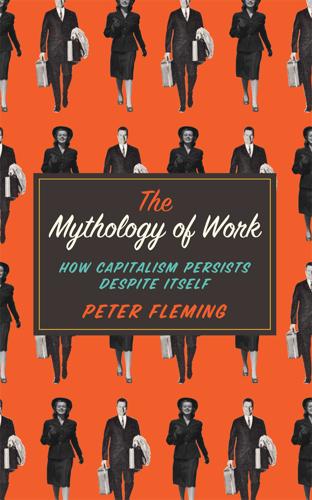
Mythology of Work: How Capitalism Persists Despite Itself
by
Peter Fleming
Published 14 Jun 2015
From this perspective we clearly see that the management ‘function’ is actually a class function, a vehicle for enabling the narrow objectives of the owning class often at the expense of workers’ interests (and under neoliberal capitalism, frequently paradoxically even the objectives of profit). In light of this, the only important management thinker worth reading today remains Fredrick Winslow Taylor, for he was quite open about the class mission of management. In his classic essay The Principles of Scientific Management (1911/1967), he acknowledged that workers could very well manage the labour process entirely by themselves. They did not need overpaid experts to tell them to do something that they were doing very well from the start. For Taylor, the goal of modern management was to recapture control from the workforce, putting it more firmly into the hands of capital, even if this meant less efficiency and effectiveness on the shop floor, since that was secondary to winning the class war in the United States.
…
Financial Times, July 18. Socialist Patients’ Collective (1987). Turn Illness into a Weapon. Heidelberg: KRRIM Publications. Spicer, A. and Alvesson, M. (2012). ‘A Stupidity-Based Theory of Organizations’. Journal of Management Studies, 49(7): 1194–1220. Taylor, F.W. (1911/1967). The Principles of Scientific Management. New York: W.W. Norton and Co. Taylor, S. (2000). ‘Diary of a Tagged Prisoner’. The Guardian. Available at www.theguardian.com/society/2000/jan/12/aitken.politics This American Life (2014). ‘The Secret Recordings of Carmen Segarra’. Available at www.thisamericanlife.org/radio-archives/episode/536/the-secret-recordings-of-carmen-segarra Thompson, E.P. (1967).

The Internet Is Not the Answer
by
Andrew Keen
Published 5 Jan 2015
Simon Head, a senior fellow at the Institute for Public Knowledge at New York University, argues that this makes Amazon, with Walmart, the “most egregiously ruthless corporation in America.” This shop-floor surveillance, Head says, is an “extreme variant” of nineteenth- and twentieth-century Taylorism—the scientific management system invented by Frederick Winslow Taylor, which Aldous Huxley savagely parodied as “Fordism” in Brave New World.49 Yet even without these monitoring technologies, work in the Amazon fulfillment centers is notoriously unpleasant. Nonunionized Amazon workers in Pennsylvania, for example, have been subjected to such high warehouse temperatures that the company has ambulances permanently parked outside the facility ready to speed overheated workers to the emergency ward.50 In its Kentucky delivery center, Amazon’s hyperefficient work culture has created what one former manager described as the “huge problems” of permanently injured workers.51 In Germany, Amazon’s second-largest market, 1,300 workers organized a series of strikes in 2013 over pay and working conditions as well as to protest a security firm hired to police the company’s distribution centers.52 In Britain, a 2013 BBC undercover investigation into an Amazon warehouse revealed disturbingly harsh working conditions that one stress expert warned could lead to “mental and physical illness” for workers.53 But I don’t suppose the libertarian venture capitalists care much about the many casualties of this war of the one percent—such as Pam Wetherington, a middle-aged woman at Amazon’s Kentucky operation who suffered stress fractures in both feet through walking for miles on the warehouse’s concrete floor, yet received no compensation from Bezos’s company when she could no longer work.54 Or Jennifer Owen, a ten-year veteran employee at the Kentucky warehouse who was summarily fired after returning to work from an Amazon-approved medical leave after a car accident.55 While Amazon is a nightmare for nonunionized workers like Wetherington and Owen, it has been a financial dream for investors like Tom Perkins’s KPCB, whose original $6 million investment would, by 2014, be worth around $20 billion.
…
“The difference,” Caldwell notes, between OkCupid’s experiment and parent and religious groups, “is that these groups actually loved the young people they were counselling, had a stake in ensuring things did not go wrong, would help as best they could if things did, and were not using the young lovers strictly as a means of making money.”45 We will be observed by every unloving institution of the new digital surveillance state—from Silicon Valley’s big data companies and the government to insurance companies, health-care providers, the police, and ruthlessly Benthamite employers like Jeff Bezos’s Amazon, with its scientifically managed fulfillment centers where the company watches over its nonunionized workforce. Big data companies will know what we did yesterday, today, and, with the help of increasingly accurate predictive technology, what we will do tomorrow. And—as in what Christopher Caldwell calls OkCupid’s “venal” experiment—the goal of these big data companies will be strictly to make money from our personal data rather than use it as a public service.

Computer: A History of the Information Machine
by
Martin Campbell-Kelly
and
Nathan Ensmenger
Published 29 Jul 2013
American firms often bought office appliances simply because they were perceived as modern—much as American firms bought the first computers in the 1950s. This attitude was reinforced by the rhetoric of the office-systems movement. Just as Frederick W. Taylor was pioneering scientific management in American industry in the 1880s, focusing on the shop floor, a new breed of scientific manager—or “systematizer”—was beginning to revolutionize the American office. As an early systematizer puffed to his audience in 1886: Now, administration without records is like music without notes—by ear. Good as far as it goes which is but a little way—it bequeathes nothing to the future. . . .
…
Not many of his discoveries found their way into the Difference Engine, but he succeeded in turning himself into the most knowledgeable economist of manufacturing of his day. In 1832 he published his most important book, an economics classic titled Economy of Machinery and Manufactures, which ran to four editions and was translated into five languages. In the history of economics, Babbage is a seminal figure who connects Adam Smith’s Wealth of Nations to the Scientific Management movement, founded in America by Frederick Winslow Taylor in the 1880s. The government continued to advance Babbage money during the 1820s and early 1830s, eventually totaling £17,000; and Babbage claimed to have spent much the same again from his own pocket. These would be very large sums in today’s money.

Capitalism in America: A History
by
Adrian Wooldridge
and
Alan Greenspan
Published 15 Oct 2018
A spark could ignite an urban conflagration, as happened most spectacularly in Chicago in 1871, supposedly when a cow kicked over a lantern, because most buildings were still made of wood. People worked for small family companies. By 1914, Americans drank Coca-Cola, drove Fords, rode underground trains, worked in skyscrapers, doffed their hats to “scientific management,” shaved with Gillette’s disposable razors, lit and heated their houses with electricity, flew in airplanes, or at least read about flights, and gabbed on the phone, courtesy of AT&T. AT&T was one of more than a hundred giant corporations that established themselves at the heart of the American economy.
…
Ford built the moving assembly line into a vast system of production and distribution in which everything was designed to boost efficiency and maximize control. Vertical integration meant that his employees made almost everything in-house. A national network of seven thousand dealers meant that Tin Lizzies were available in the smallest towns. “In the past,” Frederick Taylor wrote in The Principles of Scientific Management (1911), “the man has been first; in the future the system must be first.” Just as significantly for the rise of managerial capitalism, America embraced the standardization of innovation as well as production. This happened slowly. Most companies preferred to rely on improvisation—either scouring the public records for new ideas or getting them informally from chats with local inventors.
…
The problems in America’s big industries had a ripple effect on the rest of the consumer economy: the number of new housing starts dropped by nearly 2 million—from 12.2 million in the 1960s to 10.4 million in the 1970s.18 One big theme comes through in all these case studies: the precipitous decline in the quality of American management. In the first half of the century, the United States led the world in the development of management as both a practice and a profession. Frederick Taylor thrilled the world with the discovery of “scientific” management. Harvard University shocked Oxford and Cambridge by establishing a business school. Marvin Bower turned McKinsey into the world’s leading management consultancy. In the 1950s, America had been a net exporter of “management”: Japanese firms hired American management gurus and European countries established business schools based on the American model.
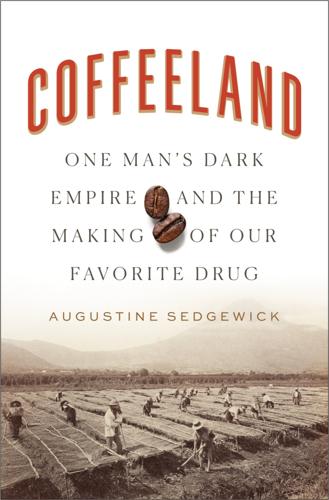
Coffeeland: One Man's Dark Empire and the Making of Our Favorite Drug
by
Augustine Sedgewick
Published 6 Apr 2020
In famous time and motion studies begun in the 1880s, Taylor analyzed workers’ movements to engineer the most efficient way of performing a given job, in the interest of reducing fatigue, maximizing output each workday, and paring the costs of production down to a hard minimum. In his personal habits and his trademark system of “scientific management” alike, Taylor emphasized consistency, steadiness, and sobriety as the keys to maximizing the productive use of “one’s forces.” As a result, he avoided stimulants and intoxicants of all kinds, including alcohol, tobacco, and coffee, for fear that they would throw off basic physiological functioning and lead to inefficiency.24 Its reputation clouded by conflicting opinions and claims, coffee did not fit neatly into Atwater’s and Taylor’s mechanistic concepts of the human body.
…
Atwater, “Foods and Beverages: The Chemistry of Foods and Nutrition, VI,” Century Illustrated Magazine, May 1888, 136; W. O. Atwater, Methods and Results of Investigations on the Chemistry and Economy of Food (Washington, DC: Government Printing Office, 1895), 16. 23. Atwater, “Foods and Beverages,” 136–37. 24. Frank Barkley Copley, Frederick W. Taylor: Father of Scientific Management, vol. 1 (New York: Harper & Brothers, 1923), 83. 25. Ukers, All About Coffee (1922), 446. 26. Micol Seigel, Uneven Encounters: Making Race and Nation in Brazil and the United States (Durham, NC: Duke University Press, 2009), 13–43. 27. “Your Uncle Sam,” N. W. Ayer Advertising Agency Records, Box 28, Folder 2, Archives Center, Smithsonian National Museum of American History, Washington, DC. 28.
…
A History of Modern Banks of Issue: With an Account of the Economic Crises of the Present Century. New York: G. P. Putnam’s Sons, 1896. Coopersmith, Jennifer. Energy, the Subtle Concept: The Discovery of Feynman’s Blocks from Leibniz to Einstein. Rev. ed. New York: Oxford University Press, 2015. Copley, Frank Barkley. Frederick W. Taylor: Father of Scientific Management. Vol. 1. New York: Harper & Brothers, 1923. Courtwright, David T. Forces of Habit: Drugs and the Making of the Modern World. Cambridge, MA: Harvard University Press, 2001. Cowan, Brian. The Social Life of Coffee: The Emergence of the British Coffeehouse. New Haven: Yale University Press, 2005.
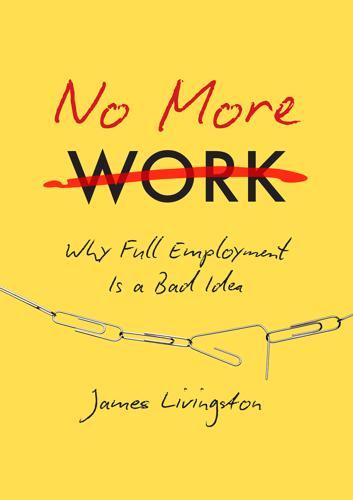
No More Work: Why Full Employment Is a Bad Idea
by
James Livingston
Published 15 Feb 2016
By means of this impregnable legal device, capital was finally able to subject labor to real, as against formal, control, and productivity surged, to the point where, by the 1920s, the output of goods increased without any measurable increase of inputs, whether of labor or capital. Notice: the corporation succeeded by reducing socially necessary labor—what the scientific managers called “the human element”—to nothing. Or almost nothing. The increase of productivity in automobile manufacturing was 400 percent between 1919 and 1929; the net loss of jobs in manufacturing for the decade was 2 million. But the corporation was built on the separation of ownership and control.

Red Plenty
by
Francis Spufford
Published 1 Jan 2007
See Taubman, Khrushchev, p. 357. 11 We had this in Moscow and Leningrad before the war: for the 1930s Soviet experiment with fast food, see Gronow, Caviar with Champagne. 12 Of course he admired the Americans: for an overview of the Soviet infatuation with American industry, see Stephen Kotkin, Magnetic Mountain: Stalinism as a Civilization (University of California Press, 1995) and Steeltown, USSR: Soviet Society in the Gorbachev Era (Berkeley CA: University of California Press, 1991); with American management techniques, see Mark R. Beissinger, Scientific Management, Socialist Discipline and Soviet Power (Cambridge MA: Harvard University Press, 1988); for American mass culture, and especially jazz, see Frederick S. Starr, Red and Hot: The Fate of Jazz in the Soviet Union, 1917–1980 (New York: OUP, 1983). Before the Second World War, this was an enthusiasm for a capitalist culture perceived as being removed from, even neutral in, the USSR’s rivalry with the old imperial powers of Europe.
…
See Taubman, Khrushchev, p. 357. 11 We had this in Moscow and Leningrad before the war: for the 1930s Soviet experiment with fast food, see Gronow, Caviar with Champagne. 12 Of course he admired the Americans: for an overview of the Soviet infatuation with American industry, see Stephen Kotkin, Magnetic Mountain: Stalinism as a Civilization (University of California Press, 1995) and Steeltown, USSR: Soviet Society in the Gorbachev Era (Berkeley CA: University of California Press, 1991); with American management techniques, see Mark R. Beissinger, Scientific Management, Socialist Discipline and Soviet Power (Cambridge MA: Harvard University Press, 1988); for American mass culture, and especially jazz, see Frederick S. Starr, Red and Hot: The Fate of Jazz in the Soviet Union, 1917–1980 (New York: OUP, 1983). Before the Second World War, this was an enthusiasm for a capitalist culture perceived as being removed from, even neutral in, the USSR’s rivalry with the old imperial powers of Europe.
…
Baron, Bloody Saturday in the Soviet Union: Novocherkassk 1962 (Stanford CA: Stanford University Press, 2001) Raymond A. Bauer, Nine Soviet Portraits (Boston: MIT Press, 1965) Anthony Beevor and Luba Vinogradova, eds, A Writer at War: Vasily Grossman with the Red Army 1941–1945 (London: Harvill, 2005) Mark R. Beissinger, Scientific Management, Socialist Discipline and Soviet Power (Cambridge MA: Harvard University Press, 1988) Raissa L. Berg, Acquired Traits: Memoirs of a Geneticist from the Soviet Union, trans. David Lowe (New York: Viking Penguin, 1988) Abram Bergson and Simon Kuznets, eds, Economic Trends in the Soviet Union (Cambridge MA: Harvard University Press, 1963) Abram Bergson, Economics of Soviet Planning (New Haven CT: Yale University Press, 1964) —, Planning and Productivity Under Soviet Socialism (New York: Columbia University Press, 1968) Isaiah Berlin, Russian Thinkers, ed.

The Aristocracy of Talent: How Meritocracy Made the Modern World
by
Adrian Wooldridge
Published 2 Jun 2021
And the shift from a manufacturing to a knowledge-based economy increased the rewards for brainpower. Britain provided a vivid example of this transformation. The demands of total war tested the bonds of a class-based society to breaking point.1 The military had no choice but to promote brilliant proletarians over Colonel Blimps.2 Factories experimented with scientific management. Soldiers demanded social justice as a quid pro quo for military sacrifice. Policy-makers, from William Beveridge down, promised a future in which ordinary people were no longer ‘employed below their capacity’ while toffs were promoted beyond their abilities.3 ‘The Stock Exchange will be pulled down,’ George Orwell predicted in The Lion and the Unicorn, in 1941, ‘the horse plough will give way to the tractor, the country houses will be turned into children’s holiday camps, the Eton and Harrow match will be forgotten …’ Even Winston Churchill, a proud Old Harrovian, concluded that the public schools could survive only if they embraced the spirit of meritocracy: he argued that they should be obliged to give 60–70 per cent of their places to poor scholars on bursaries and added that ‘the great cities would be proud to search for able youths to send to Haileybury, to Harrow and to Eton’.4 The election of the 1945 Labour government ushered in the age of the common man, breaking, for a while, the dangerous spell that the aristocracy had exercised over the country.
…
Far more than either Churchill or Macmillan, he succeeded in combining nostalgia for his country’s past with a commitment to embracing a very different future, believing, as he wrote in his youthful treatise on military reform, The Army of the Future, that ‘nothing lasts unless it is incessantly renewed’.29 The self-styled representative of la France profonde was also a believer in scientific management. The poetic exponent of ‘a certain idea of France’ was also a sworn enemy of ‘feudalities’ that stood in the way of progress and reform.30 France could also call upon a cohort of civil servants – most of them in their early thirties in 1945 – who came to power after the Second World War and remained at the centre of power even as de Gaulle himself came and went.
…
The poetic exponent of ‘a certain idea of France’ was also a sworn enemy of ‘feudalities’ that stood in the way of progress and reform.30 France could also call upon a cohort of civil servants – most of them in their early thirties in 1945 – who came to power after the Second World War and remained at the centre of power even as de Gaulle himself came and went. These hauts fonctionnaires inherited France’s established cult of the disinterested public servant working for the quasi-sacred state but added to it the glamour of Keynesian economics and scientific management. They knew in their bones that the only way France could overcome the economic weaknesses that had led to the defeat in 1940 was to renew the economy by investing in infrastructure and science. They believed in the broad creed of ‘modernization’ – using the power of the state to invest in infrastructure (particularly railways) and new technology (particularly atomic power) – and loathed with equal intensity both Anglo-Saxon liberals (who left everything to what they regarded as the anarchic market) and French reactionaries (who looked back to the world of feudal lords and happy peasants).

Hustle and Gig: Struggling and Surviving in the Sharing Economy
by
Alexandrea J. Ravenelle
Published 12 Mar 2019
As noted by the Century Foundation, “The Treaty of Detroit reflected two choices that shaped work over the next several decades: first, a recognition by business that the security and well-being of its workers was in its own interest; second, a decision by labor that it was better off obtaining benefits linked to a specific employer than waiting for government to act.”21 While the relationship between workers and employers is often thought of in more adversarial terms today, especially in regard to the sharing economy, this was not always the case.22 Before World War II, employers often followed the scientific management model of Taylorism—which focused on increasing productivity by simplifying jobs into discrete tasks, measuring productivity, and linking pay to performance—in an effort to turn “workers into cogs in an industrial machine.”23 After the war, companies adopted the gentler human-relations perspective, a management philosophy that was propounded by Elton Mayo and other sociologists and industrial theorists and based on extensive studies at Western Electric.24 Sometimes called the “happy worker model,” the philosophy was simple: the best way to increase productivity—and discourage unionization—was to keep workers happy.25 The focus on worker happiness took a backseat to the bottom line beginning in the 1980s.
…
See also Airbnb repeat business: Kitchensurfing Tonight, 58; TaskRabbit, 56, 80 research methodology: case studies, 7; critical perspective and, 7–8; Hawthorne effect, 232n24; interview matrix, 216–17; participant recruitment and methodology, 21–22, 223n85, 225n34, 228n30, 229n5; service platforms, 7 response rates, 1, 78–79, 81–82, 160 retirement funds: access to, 190; as contributory plans, 37; decreases in, 9; productivity and, 190; sharing economy and, 94, 156; temporary workers lack of, 180; use of, 61 reviews, negative, 4 review systems: customer review sites, 26; employee monitoring and, 204–5; negative reviews, 4, 13, 91, 143; transfer between sites, 20 Rideshare Guy website, 76 ride-sharing, 223n75, 233n72 risks: overview, 22; mitigation of, 170; as transaction costs, 27 risk shifts: overview, 31, 36–38; advanced planning and, 97–100; assumption of risk, 92; dangers of driving for hire, 101–4; entrepreneurship and, 36–37; financial risks, 37; financial sustainability, 31; marketing of self, 181; risk reduction, 27 Robinson, Spottswood, 119 Rockefeller family, 68–69 Rodriguez, Ydanis, 51 Rogers, Jackie Krasas, 122 Roosevelt, Franklin D., 70 Russell, Mike, 189 safety issues: overview, 113; background screening mechanisms, 113–15; pedestrian dangers, 228n32; yellow taxicab standards, 227n16 Santander Bank, 3, 73 Sapone, Marcela, 187–89 Sasso, Anthony, 58 scams: overview, 23; overpayment scams, 148–49; platforms misuse and, 141–42 Scharf, Michael, 109, 189–90, 192 schedules: client response rates and, 84; computerized scheduling systems, 180; flexibility in, 207; just-in-time scheduling, 179, 180–81; long, 5 scheduling availability, 1, 62, 87 Schierenbeck, Warren, 58–59 Schoar, Antoinette, 38 Schor, Juliet, 16, 26, 27, 56, 100, 183, 194, 224n1 Schultz, Ken, 191 Schumpeter, Joseph A., 207 scientific management, 178 Scott, Marvin, 124 secondary labor market, defined, 37 secondhand economy companies, 27, 28fig. 2. See also eBay second-wave feminism, 23, 133 secrecy, 20–21 Secret Diner program, 59, 95–97 self-help organizations, 69–70 servant economy, 99–100, 100fig. 12 service fees, platform, 5, 55–56, 79–80, 224n2 7-day work week, 3 sexual harassment: overview, 6, 23, 112–15; background on, 118–19; sexual assaults, 103, 115; temporary-agency model and, 119–21; uncomfortable situations, 115–18, 125–28; worker acceptance of, 121–24; worker-client sexual interactions, 128–33; workplace protections and, 133–34; workplace segregation and, 119–20 Share Some Sugar, 26, 28 sharing (term), 28 sharing economy: overview, 1–5, 22–24, 25–31, 173–77; in context, 177–81; defined, 3, 26–28, 31, 34; discrimination in, 35; disruptive nature of, 207–9; early industrial age comparison, 5–8; early-industrial system, 60; employee classification in, 187–91; entrepreneurial choice and, 206–7; evaluation of, 181–84; Gemeinschaft/Gesellschaft, 31–36; income rates, 184–85; increasing casualization of labor and the related risk shift, 36–39; increasing social inequalities, 39–42; independent contractor classification, 196–202; pajama policy, 204–5, 206; participant recruitment and methodology, 42–43; promises of, 5, 6, 25, 207–9; protecting workers in, 109–11; race and class issues, 193–96; research methodology, 21–22; sharing economy platforms, 191–93; from sharing to earning, 8–10; social contract issues and, 177, 178, 179, 191–92; successful workers risks, 18–21; tax revenues and, 205–6; time rule solution, 202–3, 206; worker success rates, 10–18.
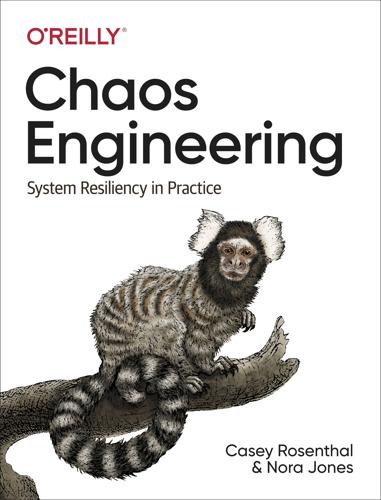
Chaos Engineering: System Resiliency in Practice
by
Casey Rosenthal
and
Nora Jones
Published 27 Apr 2020
Henry Ford4 As illustrated in Henry Ford’s famous quote, Ford drastically limited the number of States in his production, sales, and maintenance process—by design. Parts were standardized. Variance was removed. This contributed to their success in navigating the complex and competitive automobile business. Relationships Ford did not stop with just the product. Implementing their own flavor of scientific management, the company also limited the number of Relationships in the manufacturing process. Other automobile companies had teams that would build an entire car. This required high communication and coordination of effort throughout the production process. At Ford, tasks were broken down into small, prescribed movements that incorporated the intelligence of assembly into process and predetermined, mechanical motions.
…
This obviously enabled the company to navigate the complexity of automobile production with more confidence. Reversibility That brings us to the fourth pillar, Reversibility. Unfortunately for Ford, undoing the manufacturing process is not as simple as putting a car in reverse. A car cannot easily be un-built. The efficiency of the factory designs proposed by scientific management also made it very difficult to improvise a design decision. Ford could not do much to control or affect this pillar. Economic Pillars of Complexity Applied to Software In the example we just looked at, Ford was able to streamline the first three pillars but not the fourth. How does this relate to software?

Social Capital and Civil Society
by
Francis Fukuyama
Published 1 Mar 2000
Despite the collapse of communism and the evident failure of virtually all serious competitors to the liberal-democratic Enlightenment order, the verdict is still not in. As the industrial period gives way to the postindustrial era, and as information and services become the chief sources of new wealth in the economy, informal social norms play a renewed role in innovation and production. The collapse of Taylorite scientific management signals the limits of organization based solely on rule-based bureaucratic rationalism; its replacement by flat or networked forms of management and self-organization signals the continuing requirement for informal norm-based coordination. And to some extent, the increasing demand for such norm-based organization is calling forth a corresponding supply.

Broke: How to Survive the Middle Class Crisis
by
David Boyle
Published 15 Jan 2014
Would you ever get ‘basics’ Parmigiano Reggiano in Sainsbury’s? I wonder. Or would they just call it parmesan? 7 The sixth clue: the strange case of the disappearing professionals ‘In the past the man has been first; in the future the system must be first.’ Frederick Winslow Taylor, The Principles of Scientific Management. 1911 Come with me for a moment to the small Hampshire village of Nether Wallop, with its thatched roofs and perfect, photogenic houses. A distant prospect of the ancient hill settlement of Danebury stands out against the skyline across the way. There are council houses there, so Nether Wallop is not wholly middle-class, but it might as well be — and middle-class in a particularly privileged way.
…
[4] Daily Mail, 23 Mar. 2010. [5] Daily Telegraph, 7 Jul. 2012. [6] Michael Spence and Sandile Hlatshwayo, The Evolving Structure of the American Economy and the Employment Challenge, Council on Foreign Relations Working Paper, New York, March 2011. [7] Independent, 21 Apr. 2011. [8] Kevin Whitston, ‘Scientific Management Practice in Britain: a History’, PhD thesis, University of Warwick, 1995. [9] Edward Cadbury, ‘Some principles of industrial organisation’, Sociological Review, vol. VII, no. 2, Apr. 1914. [10] Michael Power, The Audit Explosion (London, Demos, 1994). [11] Power, 41. [12] Gerry Mooney and Alex Law, New Labour/Hard Labour?

The Bitcoin Standard: The Decentralized Alternative to Central Banking
by
Saifedean Ammous
Published 23 Mar 2018
The money supply expanded by 68.1% over the period of 1921–29 while the gold stock only expanded by 15%.16 It is this increase of the dollar stock, beyond the stock of gold, which is the root cause of the Great Depression. An honorable mention has to go to the father of the Monetarists, Irving Fisher, who spent the 1920s engaged in the “scientific management of the price level”. Fisher had imagined that as the United States was expanding the money supply, his extensive data collection and scientific management would allow him to control the growth in the money supply and asset prices to ensure that the price level remained stable. On October 16, 1929, Fisher proudly proclaimed in the New York Times that stocks had reached a “permanently high plateau.”17 The stock market was to crash starting October 24, 1929, and as the Depression deepened, it would not be until the mid‐1950s, years after Fisher died, that the stock market would get back to the “permanently high plateau” Fisher had proclaimed in 1929.
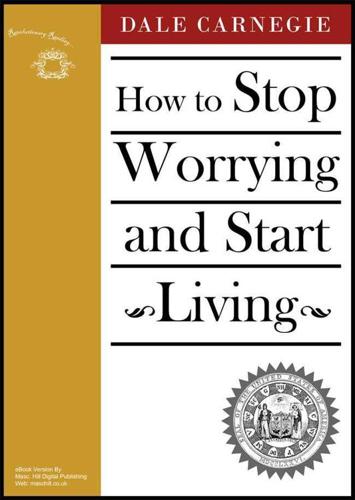
How to Stop Worrying and Start Living
by
Dale Carnegie
Published 17 May 2009
How? Because an hour's nap before the evening meal plus six hours' sleep at night, a total of seven hours will do you more good than eight hours of unbroken sleep. A physical worker can do more work if he takes more time out for rest. Frederick Taylor demonstrated that while working as a scientific management engineer with the Bethlehem Steel Company. He observed that laboring men were loading approximately 12 1/2 tons of pig-iron per man each day on freight cars and that they were exhausted at noon. He made a scientific study of all the fatigue factors involved, and declared that these men should be loading not 12 1/2 tons of pig-iron per day, but forty-seven tons per day!
…
Schmidt was able to do this because he rested before he got tired. He worked approximately 26 minutes out of the hour and rested 34 minutes. He rested more than he worked, yet he did almost four times as much work as the others! Is this mere hearsay? No, you can read the record yourself in Principles of Scientific Management by Frederick Winslow Taylor. Let me repeat: do what the Army does, take frequent rests. Do what your heart does, rest before you get tired, and you will add one hour a day to your waking life. Part Seven Six Ways to Prevent Fatigue And Worry and Keep Your Energy and Spirits High What Makes You Tired and What You Can Do About It Here is an astounding and significant fact: Mental work alone can't make you tired.

Kingdom of Characters: The Language Revolution That Made China Modern
by
Jing Tsu
Published 18 Jan 2022
The early twentieth century marked a transition to big businesses, corporate power, and production efficiency, and the increase in patents during this period reflected the abundance of new inventions. Efficiency and organization were key to maximizing the margin of returns, from building a car every two and a half minutes on the Ford assembly line to expanding bulk and mass production. Maximizing labor per unit of time according to principles of scientific management helped to power factory floors worldwide. From typing at the keyboard to laying a brick, a worker’s motions could be analyzed in increments of one-thousandth of a second. By the second decade of the twentieth century, America’s industrial production accounted for one-third of the world’s total output.
…
The scheme that ultimately prevailed was the Four-Corner Index Method, invented by Wang Yunwu. Wang was also the powerful editor in chief at the Commercial Press, a business-savvy executive with a nose for profit. He ran the press’s printing floor on the principles of Frederick Winslow Taylor’s scientific management and knew how to maximize an opportunity as well as how to squeeze maximum labor from someone’s working hours. Wang Yunwu used shape identification to determine a numbering system, which he made his first and last selling point. He partly revived the telegraphic coding method from the nineteenth century—with one crucial difference.
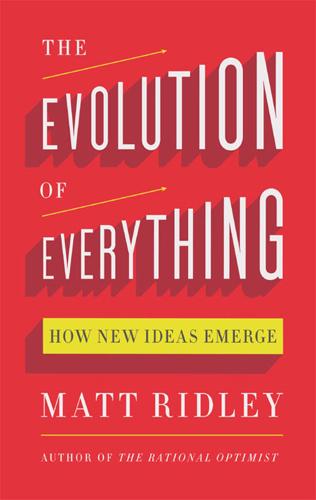
The Evolution of Everything: How New Ideas Emerge
by
Matt Ridley
Bellamy’s vision of the future, in his immensely influential and bestselling novel Looking Backward, has everybody in the future working for a Great Trust and shopping at identical, government-owned stores for identical goods. Even Lenin and Stalin now admired the big American corporations, with their scientific management, planned workforce accommodation and giant capital requirements. ‘We must organize in Russia the study and teaching of the Taylor system and systematically try it out and adapt it to our purposes,’ wrote Lenin of the great apostle of scientific management, Frederick Winslow Taylor. The libertarian editor of the Nation, Ed Godkin, lamented in 1900: ‘Only a remnant, old men for the most part, still uphold the liberal doctrine, and when they are gone, it will have no champions.’

System Error: Where Big Tech Went Wrong and How We Can Reboot
by
Rob Reich
,
Mehran Sahami
and
Jeremy M. Weinstein
Published 6 Sep 2021
This coincides with the rise of computer science as a discipline in the 1960s. Of course, there are obvious precursors to the optimization mindset, such as the movement to bring scientific management to the workplace at the turn of the nineteenth century. This has been called Taylorism after one of its most vocal advocates, Frederick Taylor. Using empirical methods to identify best practices and standardize work in mass production lines, scientific management sought to increase worker productivity and economic efficiency. One difference between this approach and the optimization mindset of the modern technologist, however, is that a hundred years ago when bosses tried to enforce efficiency on the shop floor it was understood to be a form of oppression.
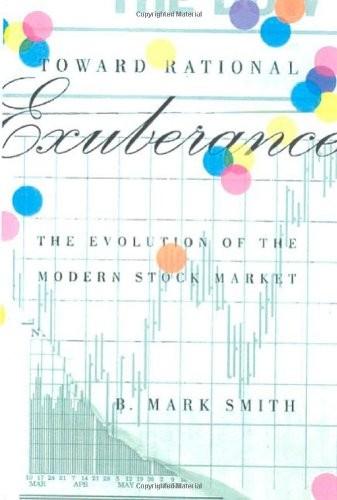
Toward Rational Exuberance: The Evolution of the Modern Stock Market
by
B. Mark Smith
Published 1 Jan 2001
One such man was the estimable Charles Schwab, who had become chairman of Bethlehem Steel after years as the president of U.S. Steel. A self-appointed spokesman for the business community, Schwab never passed up an opportunity to proselytize on behalf of big business and his belief that the scientific management of large, modern corporations would bring a revolution in living standards for the entire population. In December 1920 he gave a speech calling for the liquidation of labor (the term “liquidation,” as Schwab employed it, meant a reduction in wages necessary to adjust for anticipated deflation).
…
On November 17, 1927, President Calvin Coolidge made a speech that would be memorable for only one line. He declared that America “was entering upon a new era of prosperity.” Immediately the phrase “New Era” was picked up by commentators, who used it as a catchword for what many believed promised to be a period of permanent prosperity. According to the believers, the scientific management of business and the implementation of sound economic policies by government would eliminate the troublesome boom-and-bust cycles of the past. The future would bring steady growth and rising wealth for all Americans. And, it went without saying, rising stock prices as well. In many ways Coolidge was preaching to the converted.
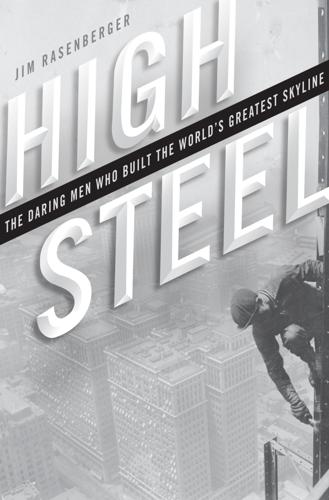
High Steel: The Daring Men Who Built the World's Greatest Skyline
by
Jim Rasenberger
Published 15 Mar 2004
The steel frames of tall buildings like the Singer and Metropolitan Life were erected in a matter of months. This was the era of “Taylorism,” so called after Frederick Taylor, the same efficiency expert who’d prescribed ox-like laborers for steel companies twenty years earlier. Taylor had recently published his best-selling book, The Principles of Scientific Management, and his ideas were very much in vogue. To do a thing efficiently, to not waste a step or a moment—this was the new American ideal in steel plants, in factories, in offices, even in homes, where housewives strove to Taylorize their domestic chores. “In the past the man was first,” Taylor had written; “in the future the system must be first.”
…
Phoenix Bridge Company. See also Quebec Bridge photographs pin-connection method Pinkerton detectives Plenty, Josephus plumbing-up gang Poole, Ernest Poore, C. G. Pope, Thomas Portla, John Portman, John Post, George B. Post, William Post & McCord Poulson, Neils Principles of Scientific Management, The pushers Quebec Bridge Quebec Bridge Company Quinlan, Willie quitting race into the sky race relations railroad bridges. See also bridges rain Rainbow Bridge raising gangs competition and, (see also competition) Time Warner Center work of Random House building Raskob, John Jacob RCA Building reinforced concrete, steel vs.
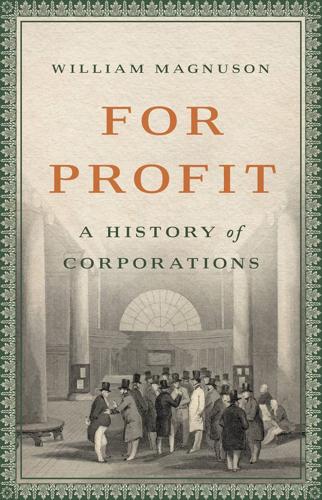
For Profit: A History of Corporations
by
William Magnuson
Published 8 Nov 2022
To the extent that corporations tried to make production more efficient, they were generally tinkering around the edges, making small improvements based on gut instinct and passed-down wisdom. But in the late 1800s, business leaders and engineers had begun to study production methods scientifically, to measure and test production processes objectively using experimentation and data. This new “scientific management” movement found its greatest proponent in Frederick Winslow Taylor, a mechanical engineer who had devoted himself to applying engineering principles to industry. Taylor believed that modern industry was woefully inefficient because it failed to use rational, testable methods for improving its systems, instead relying on instinct and rules of thumb.
…
He would then use these studies to identify faster, more efficient processes for workers. He argued that work was a science. It was essential to test procedures to find out which worked and which didn’t, then to standardize the best procedures, all in the name of speeding up work. Henry Ford was an early convert to scientific management principles, and in 1910, when Ford Motor Company moved into the legendary Highland Park factory, he purposely designed it with these principles in mind. Instead of housing different parts of the assembly process in different buildings, he placed them all in one enormous building. In order to ensure that lighting was optimal, he placed massive glass windows around the structure, along with skylights and glass roofs—a design that earned it the name the Crystal Palace.
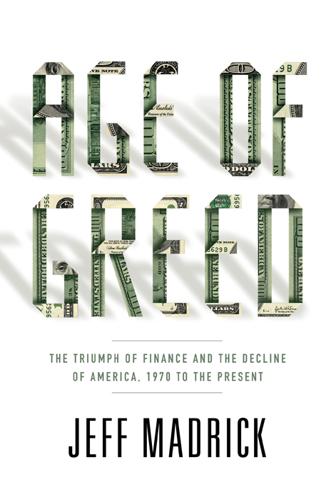
Age of Greed: The Triumph of Finance and the Decline of America, 1970 to the Present
by
Jeff Madrick
Published 11 Jun 2012
It could produce the lowest-cost products, distribute them worldwide, and market them aggressively, winning market share across the world. Costs were cut sharply through repetitive assembly-line techniques at rapid speeds, and the adoption of the so-called scientific management principles of Frederick Winslow Taylor. Taylor’s major work, The Principles of Scientific Management, had been published in 1911. Time and motion studies were Taylor’s early tools and became the butt of many a future joke, including in silent movies featuring Charlie Chaplin and Buster Keaton. Workers were cogs in a machine, and even executives were above all conformists, implementing preset formulas and directions from above.
…
Boone, 4.1, 13.1, 13.2, 13.3, 13.4, 15.1 piggy-back loans Pirie, Robert Plaza Accord (1985), 11.1, 15.1 Polanyi, Michael polychlorinated biphenyls (PCBs) Popper, Karl, 2.1, 15.1 Posner, Richard Posner, Victor Potoma, Peter pounds sterling, 15.1, 15.2, 15.3, 15.4, 15.5 poverty, itr.1, prl.1, prl.2, prl.3, 1.1, 2.1, 2.2, 2.3, 3.1, 3.2, 3.3, 7.1, 7.2, 7.3, 7.4, 8.1, 10.1, 11.1 prepayments, mortgage prepay swaps Preston, Lewis price controls, 2.1, 2.2, 3.1, 3.2, 3.3, 3.4, 3.5, 3.6, 9.1, 9.2, 14.1, 19.1 price-earnings (P-E) multiples, 1.1, 1.2, 4.1, 4.2, 12.1, 16.1, 17.1 price levels, prl.1, 1.1, 2.1, 2.2, 2.3, 2.4, 2.5, 3.1, 3.2, 3.3, 3.4, 6.1, 6.2, 6.3, 6.4, 8.1, 8.2, 8.3, 9.1, 9.2, 9.3, 9.4, 10.1, 11.1, 11.2, 12.1, 14.1, 14.2, 14.3, 14.4, 14.5, 16.1, 19.1 prime lending rate, 6.1, 9.1, 11.1 Primerica, 16.1, 16.2, 16.3 Prince, Chuck, 17.1, 17.2, 19.1, 19.2, 19.3, 19.4, 19.5 Principles of Economics (Marshall), 2.1 Principles of Scientific Management, The (Taylor), 12.1 product development, 2.1, 4.1, 12.1, 12.2, 12.3, 12.4, 12.5, 12.6, 12.7, 12.8, 12.9, 13.1, 16.1, 19.1 “Production Trends in the United States” (Burns) productivity, 2.1, 2.2, 8.1, 9.1, 9.2, 11.1, 12.1, 13.1, 14.1, 17.1, 19.1 profits, x, 1.1, 1.2, 2.1, 2.2, 3.1, 3.2, 4.1, 4.2, 4.3, 5.1, 5.2, 5.3, 5.4, 5.5, 8.1, 8.2, 8.3, 12.1, 14.1, 15.1, 15.2, 15.3, 15.4, 17.1, 17.2, 17.3, 17.4, 18.1, 18.2, 18.3, 18.4, 19.1, 19.2, 19.3, 19.4, 19.5 Proposition 1, prl.1, 7.1, 10.1 Proposition 4 Proposition 13, 9.1, 9.2, 10.1 Proxmire, William Prudential Insurance, 16.1, 16.2 “puts,” 244 quantitative easing “quants” (analytical models), 15.1, 15.2, 15.3, 15.4, 15.5, 18.1 Quantum Fund, 15.1, 15.2 quarterly earnings, 12.1, 16.1 Quattrone, Frank, 17.1, 17.2, 17.3, 17.4 railroads, prl.1, 1.1, 1.2, 2.1, 3.1, 5.1, 8.1, 9.1 Raines, Franklin, 18.1, 19.1 Rand, Ayn, prl.1, 2.1, 3.1, 3.2, 14.1, 14.2 Ranieri, Lewis, 18.1, 18.2, 18.3, 19.1, 19.2 RCA, 8.1, 8.2, 12.1, 12.2 Reagan, Jack, 7.1, 7.2, 7.3 Reagan, Nancy, 7.1, 7.2, 7.3, 7.4 Reagan, Ronald, 6.1, 7.1, 7.2; anticommunism of, prl.1, 7.3, 7.4, 7.5, 7.6, 7.7; background of, prl.1, 7.8, 7.9, 7.10, 8.1; as conservative, prl.1, prl.2, 7.11, 7.12; as Democrat, 7.13, 7.14, 7.15, 7.16, 7.17, 7.18; deregulation supported by, 11.1, 12.1, 12.2, 14.1, 16.1, 16.2, 18.1; economic policies of, 5.1, 6.2, 6.3, 7.19, 7.20, 7.21, 8.2, 8.3, 8.4, 8.5, 8.6, 9.1, 10.1, 10.2, 11.2, 11.3, 11.4, 13.1, 13.2, 14.2, 14.3, 14.4, 14.5, 14.6, 14.7; “evil empire” speech of, 7.22; as FBI informant, 7.23; Friedman’s influence on, 7.24, 7.25, 7.26; as GE spokesman, 7.27, 11.5, 12.3; as governor of California, prl.1, 7.28, 7.29, 7.30, 7.31, 10.3, 10.4; gubernatorial campaign of (1966), 3.1, 7.32, 7.33; individualism supported by, 7.34, 7.35; marriages of, 7.36, 7.37, 7.38; memoirs of, 7.39, 7.40, 7.41, 7.42, 7.43, 7.44; Nixon compared with, 7.45, 7.46, 7.47, 7.48; personality of, prl.1, 7.49, 7.50, 7.51; as political leader, prl.1, prl.2, 7.52, 7.53, 11.6, 11.7; as president, 3.2, 7.54, 11.8, 11.9; presidential campaign of (1976), 7.55; presidential campaign of (1980), 7.56, 11.10; religious convictions of, 7.57, 7.58, 7.59, 7.60, 7.61, 7.62; as Republican, 7.63, 7.64, 7.65, 11.11; as SAG president, 7.66, 7.67; The Speech (“A Time for Choosing”) delivered by, 7.68, 11.12; speeches by, 7.69, 7.70, 11.13; tax policies of, ix–x, 2.1, 7.71, 7.72, 7.73, 7.74, 7.75, 7.76, 7.77, 10.5, 11.14, 11.15, 11.16, 11.17, 14.8; as television host, 7.78, 7.79; Uhler and, prl.1, 7.80, 7.81; welfare programs opposed by, 7.82, 7.83, 7.84, 7.85, 7.86; working class support for, 7.87, 7.88, 7.89, 7.90, 7.91 real estate, 1.1, 1.2, 3.1, 4.1, 5.1, 6.1, 6.2, 6.3, 6.4, 6.5, 9.1, 11.1, 12.1, 12.2, 12.3, 13.1, 14.1, 14.2, 15.1, 15.2, 15.3, 16.1, 16.2, 18.1 real estate investment trusts (REITs), 6.1, 15.1, 16.1 recessions, 1.1, 2.1, 2.2, 2.3, 2.4, 2.5, 3.1, 3.2, 3.3, 3.4, 4.1, 4.2, 6.1, 6.2, 6.3, 6.4, 6.5, 8.1, 9.1, 11.1, 11.2, 11.3, 11.4, 11.5, 11.6, 11.7, 13.1, 13.2, 14.1, 14.2, 15.1, 15.2, 15.3, 15.4, 15.5, 16.1, 16.2, 17.1, 18.1, 18.2, 18.3, 18.4, 19.1, 19.2, 19.3, 19.4 Recovery Ahead!

The Dawn of Innovation: The First American Industrial Revolution
by
Charles R. Morris
Published 1 Jan 2012
The real story at Baldwin was not mechanization but its operations management—the product of an ultralean top management with deep experience on the shop floor. There were no outside “efficiency experts.” In the early twentieth century, indeed, Baldwin executives were extremely critical of Taylorism and the so-called scientific management movement. An 1879 visitor noted: “Owing to the magnitude of the establishment, a stranger would naturally suppose that it would require almost a regiment of Bosses and any amount of ‘bossing,’ but such is not the case by any means. There are very few lookers on to be seen in the shops.... The proprietors, superintendents, gang, and track bosses all work themselves so there are very few, if any, drones in the hive.”56 And it stayed lean for a long time.
…
See also Richard Beamish, Memoir of the Life of Marc Isambard Brunel (London: Longman, Green, Longman, Roberts & Green, 1862); Roe, English and American Tool Masters, esp. the chapter “Bentham and Brunel,” 22–31; Simon Sebag Montefiore, “The Bentham Brothers: Their Adventure in Russia,” History Today (July 2003), a UK-based web-based journal; and Gilbert, Henry Maudslay. 42 Gilbert, Henry Maudslay, 18. 43 Cooper, “Portsmouth System,” 198. 44 Ibid., 206. 45 See, for example, Alfred Chandler, Strategy and Structure: Chapters in the History of Industrial Enterprise (Cambridge, MA: MIT Press, 1962), 284, where Chandler dismisses the importance of manufacturing issues, on the grounds that managers “had plenty of information to go on” from the “scientific management” movement of the 1920s. For a withering indictment, see Robert H. Hayes and William J. Abernathy, “Managing Our Way to Economic Decline,” Harvard Business Review (July–August 1980): 67–77. Nevertheless, Hayes and Abernathy, both Harvard Business School professors, assiduously avoid mentioning the leading contribution of their own institution, or of their own previous writings, to the debacle they deplore.
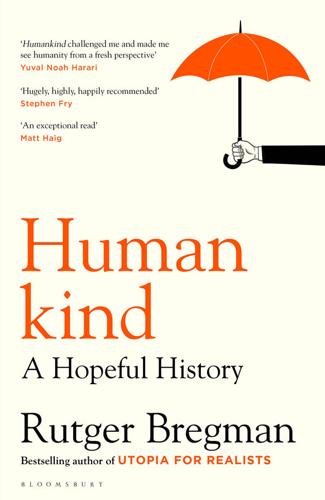
Humankind: A Hopeful History
by
Rutger Bregman
Published 1 Jun 2020
They were in it for the money.5 It’s this cynical view of humankind that laid the foundations for capitalism. ‘What workers want most from their employers, beyond anything else, is high wages,’ asserted one of the world’s first business consultants, Frederick Taylor, some hundred years ago.6 Taylor made his name as the inventor of scientific management, a method premised on the notion that performance must be measured with the greatest possible precision in order to make factories as efficient as possible. Managers had to be stationed at every production line, stopwatch at the ready, to record how long it took to tighten a screw or pack a box.
…
Edwards, William McKinley and Gyewan Moon, ‘The enactment of organizational decline: The self-fulfilling prophecy’, International Journal of Organizational Analysis, Vol. 10, Issue 1 (2002). 9Daisy Yuhas, ‘Mirror Neurons Can Reflect Hatred’, Scientific American (1 March 2013). 10John Maynard Keynes, The General Theory of Employment, Interest, and Money (London, 1936), Chapter 12. 11Dan Ariely, ‘Pluralistic Ignorance’, YouTube (16 February 2011). 12Pinker, The Better Angels of Our Nature (2011), pp. 561–5. 13 The Power of Intrinsic Motivation 1Hedwig Wiebes, ‘Jos de Blok (Buurtzorg): “Ik neem nooit zomaar een dag vrij”,’ Intermediair (21 October 2015). 2Ibid. 3Ibid. 4Haico Meijerink, ‘Buurtzorg: “Wij doen niet aan strategische flauwekul”,’ Management Scope (8 October 2014). 5Gardiner Morse, ‘Why We Misread Motives’, Harvard Business Review (January 2003). 6Quoted in ibid. 7Frederick Taylor, The Principles of Scientific Management (New York, 1911), Chapter 2, p. 59. 8Quoted in Robert Kanigel, The One Best Way. Frederick Winslow Taylor and the Enigma of Efficiency (Cambridge, 2005), p. 499. 9Edward L. Deci, ‘Effects of Externally Mediated Rewards on Intrinsic Motivation’, Journal of Personality and Social Psychology, Vol. 1, Issue 1 (1971), p. 114. 10Quoted in Karen McCally, ‘Self-Determined’, Rochester Review (July–August 2010). 11Uri Gneezy and Aldo Rustichini, ‘A Fine is a Price’, Journal of Legal Studies, Vol. 29, Issue 1 (2000). 12Samuel Bowles and Sandra Polanía Reyes, ‘Economic Incentives and Social Preferences: A Preference-Based Lucas Critique of Public Policy’, University of Massachusetts Amherst Working Papers (2009). 13Amit Katwala, ‘Dan Ariely: Bonuses boost activity, not quality’, Wired ( February 2010). 14Perceptions Matter: The Common Cause UK Values Survey, Common Cause Foundation (2016). 15Milton Friedman, ‘The Methodology of Positive Economics’, in Essays in Positive Economics (Chicago, 1966). 16Sanford E.
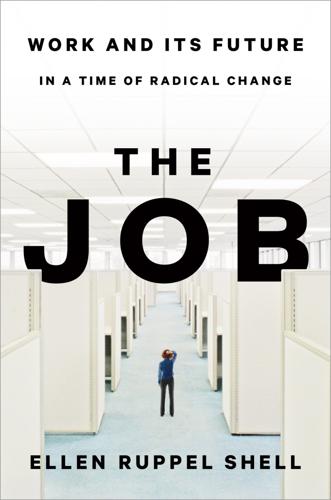
The Job: The Future of Work in the Modern Era
by
Ellen Ruppel Shell
Published 22 Oct 2018
“There’s nothing like the diplomatic world for this stark contrast between what happens on the very formal idealized front stage and what happens backstage,” he said. Collins pointed out that employers have bemoaned the quality of the American worker since the dawn of the industrial age. Indeed, in the late 1800s, Frederick Taylor based his influential theory of “scientific management” on the assumption that some workers were barely human. As Taylor saw it, “One of the very first requirements for a man who is fit to handle pig iron as a regular occupation is that he shall be so stupid and so phlegmatic that he more nearly resembles in his mental make-up the ox than any other type.”
…
For the model to work, it is not even necessary for education to have any intrinsic value if it can convey information about the sender (employee) to the recipient (employer) and if the signal (education) is costly. A. M. Spence, “Job Market Signalling,” Quarterly Journal of Economics 87, no. 3 (1973): 355–74. “he more nearly resembles” Frederick Winslow Taylor, The Principles of Scientific Management (New York: Harper, 1911), 59. “began to stop having as many vocational kinds of skills” Shawn Langlois, “Tim Cook Says This Is the Real Reason Apple Products Are Made in China,” MarketWatch, December 21, 2015, http://www.marketwatch.com/story/tim-cook-apple-doesnt-make-its-products-in-china-because-its-cheaper-2015-12-20.

The End of Jobs: Money, Meaning and Freedom Without the 9-To-5
by
Taylor Pearson
Published 27 Jun 2015
The father of management, Frederick Winslow Taylor, was credited by later famed management consultant Peter Drucker for having created “the tremendous surge of affluence in the last seventy-five years which has lifted the working masses in the developed countries well above any level recorded, even for the well-to-do.”11 Winslow Taylor’s scientific management consisted of replacing rule-of-thumb methods with a scientific method—applying scientific efficiency to tasks, the selection of employees, the supervisions of each worker, and division of work. Reading that now, you’re probably thinking, “Duh.” Anyone that’s read a single book on management, worked in a company, or simply seen how companies work by watching TV shows can tell you it would be a good idea to apply scientific principles to managing people inside of company.
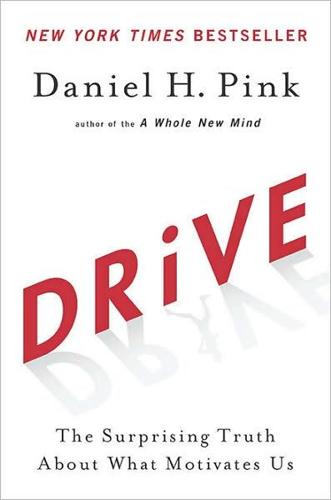
Drive: The Surprising Truth About What Motivates Us
by
Daniel H. Pink
Published 1 Jan 2008
Technological developments steam engines, railroads, widespread electricity played a crucial role in fostering the growth of industry. But so did less tangible innovations in particular, the work of an American engineer named Frederick Winslow Taylor. In the early 1900s, Taylor, who believed businesses were being run in an inefficient, haphazard way, invented what he called scientific management. His invention was a form of software expertly crafted to run atop the Motivation 2.0 platform. And it was widely and quickly adopted. Workers, this approach held, were like parts in a complicated machine. If they did the right work in the right way at the right time, the machine would function smoothly.
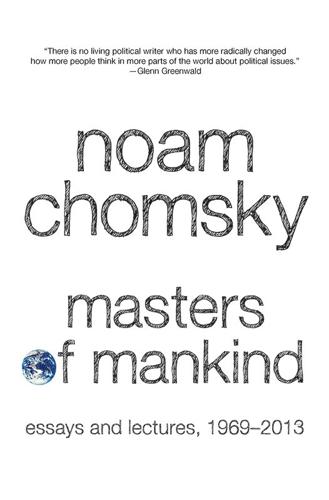
Masters of Mankind
by
Noam Chomsky
Published 1 Sep 2014
In the past ten years the rich have become richer and the poor have become poorer.43 Conceivably new technical advances—for example, “miracle rice”—may help. One certainly hopes so, but the advance euphoria seems questionable: The new high-yielding varieties, developed partly by Ford- and Rockefeller-financed organizations, require scientific management, two to three times the cash inputs previously needed, and extensive water control. . . . [If self-sufficiency is reached], the market price of the commodity will drop considerably in the Philippines. This means that only the most efficient farming units will lie with the large, mechanized, tenantless, agro-business farms.

Slack: Getting Past Burnout, Busywork, and the Myth of Total Efficiency
by
Tom Demarco
Published 15 Nov 2001
So a company that extrudes aluminum moldings, for example, would certainly want to adopt a standard way to run all its extrusion stations, regardless of which of the many different molding patterns is being extruded at each one. This standardization of manufacturing process was the particular interest of an early-twentieth-century mechanical engineer named Frederick Winslow Taylor. His 1911 book, The Principles of Scientific Management, set out to do for the human aspect of factory work what the principle of interchangeable parts had done for rifles half a century earlier. Taylorism called for rigorous standardization of manual factory activity so that the human pieces of the process would be as interchangeable as the parts of the products.

Wealth and Poverty: A New Edition for the Twenty-First Century
by
George Gilder
Published 30 Apr 1981
When wage incentives are combined with measurements, all groups tend to lift their productivity to 125 or 135 percent of the standard. A consultant analyzing the census program concluded thatImprovement in government productivity whether it be federal, state or local . . . can equal or exceed that of industry when the principles of scientific management are applied effectively.... Congress, state assemblies and city councils would do well to spend less time making and remaking laws and devote more attention to determining... that the effectiveness of every unit and employee be measured.... Current budget . . . gyrations are totally inadequate and tend to result in grossly excessive expenditures.
…
Material progress is radically unpredictable (to foresee an innovation is in essence to make it): the most important developments happen on a frontier where things are forever slipping slightly out of control. Material progress is inimical to scientific economics: it cannot be explained or foreseen in mechanistic or mathematical terms. All those who seek a rational and predictable world—a system of scientific management and control—can prevail only by thwarting material and scientific progress. A world without innovation succumbs to the sure laws of deterioration and decay. As resources predictably dwindle, governments will extend their controls. Distribution becomes paramount. Planning works. Even such a somber certitude seems better to many than the notion of a continuing and incalculable struggle to extend the mastery of man over nature and to increase the fund of material wealth.

Algorithms to Live By: The Computer Science of Human Decisions
by
Brian Christian
and
Tom Griffiths
Published 4 Apr 2016
Four years later, he completed his apprenticeship and began working at the Midvale Steel Works, where he rose through the ranks from lathe operator to machine shop foreman and ultimately to chief engineer. In the process, he came to believe that the time of the machines (and people) he oversaw was not being used very well, leading him to develop a discipline he called “Scientific Management.” Taylor created a planning office, at the heart of which was a bulletin board displaying the shop’s schedule for all to see. The board depicted every machine in the shop, showing the task currently being carried out by that machine and all the tasks waiting for it. This practice would be built upon by Taylor’s colleague Henry Gantt, who in the 1910s developed the Gantt charts that would help organize many of the twentieth century’s most ambitious construction projects, from the Hoover Dam to the Interstate Highway System.
…
See also traveling salesman problem; vacation, itinerary of rule bending Rush, Barbara Russell, Bertrand Russian oligarchs Rybka chess program Sagan, Carl sampling. See also randomness San Francisco Sartre, Jean-Paul Saxena, Nitin saying no scale, sorting and scale-free distributions scheduling Schmidt, Eric Schmidt, Peter Schooler, Lael Science Scientific American Scientific Management Scientist in the Crib, The (Gopnik) Seale, Darryl search, gap between verification and search engines search-sort tradeoff self-organizing lists second-chance scenario secretary problem burglar variant full-information variant recall variant rejection variant seeding selfish routing self-organizing lists sequential information processing serendipity Shallit, Jeffrey Shaw, George Bernard Shi, Yong Shoenfield, Joseph shop hours Shortest Processing Time unweighted weighted Shoup, Donald Sibneft oil company Sieve of Erastothenes Silicon Valley Simulated Annealing Sinatra, Frank Single Elimination single-machine scheduling Siroker, Dan size dominance hierarchies and memory hierarchy and sorting and Skype Sleator, Daniel slot machines small data as big data in disguise Smith, Adam Smith, Dan soccer social media Social Network, The (film) social networks social policy socks, sorting software, term coined solid-state drives solitaire sorting Sorting and Searching (Knuth) sort-search tradeoff soy milk space-time tradeoffs SpaceX spinning sports league commissioner overfitting and season scheduling tournament structures Sports Scheduling Group squirrels SRAM standardized tests Statistical Science status pecking order and races vs. fights and Stewart, Martha Steyvers, Mark stock market.

Model Thinker: What You Need to Know to Make Data Work for You
by
Scott E. Page
Published 27 Nov 2018
And once again, we should expect to be able to find the peak, the ideal pan size for our shovel. The idea of plotting the efficiency of shovels as a function of pan size to determine the optimal shovel was developed by Frederick Taylor. In the 1890s, Taylor and others ushered in an era of scientific management in which manufacturing decisions—how fast to move the assembly line, how strong to make the weld, how many breaks to give workers—were modeled as rugged-landscape problems. Many of the great industrialists of the twentieth century including Henry Ford, John D. Rockefeller, and Andrew Carnegie contributed to this movement toward efficiency, or what now is commonly called Taylorism.
…
The move away from artisans making individual and distinct products to large-scale manufacturing, in which processes were broken into parts and each part was optimized and then routinized, led to increases in efficiency but also, in the eyes of many, the dehumanization of labor. Herein lies a welcome reminder about the need for multiple models. Any single model simplifies the world and highlights only some dimensions. Scientific management models focused on process efficiency. This led to criticism. Making decisions based on efficiency of output caused other objectives, such as the happiness and well-being of workers, to fall by the wayside. The landscape model may seem to be a relatively obvious idea: plot the fitness, efficiency, or value of a characteristic as a function of a trait or attribute and then climb up the hill to find the optimal amount of the trait.

Animal Spirits: The American Pursuit of Vitality From Camp Meeting to Wall Street
by
Jackson Lears
He redefined time as “duration,” observing, “Real duration is that duration which gnaws on things, and leaves on them the mark of its tooth … We do not think real time. But we live it, because life transcends intellect.” Such conceptions seemed to set him against the quantitative imperatives of industrial capitalism—the “standard time” introduced by the railroads, the “scientific management” promoted by Frederick Winslow Taylor. Indeed, Bergson’s very definition of “the comic” in his book on laughter was the “idea of regulating life as a matter of business routine … something mechanical encrusted upon the living.” He was, in effect, the anti-Taylor. Bergson’s notion of duration fed into a sense of experience as flow, which in turn informed his fluid vision of creative evolution—a process not governed by mechanical determinism (as Darwin’s popularizers had claimed), but animated from within by an élan vital.
…
Compare this assertion to one of James’s own, that “‘ever not quite’ has to be said of the best attempts made anywhere in the universe at attaining all-inclusiveness.” Two decades later, in 1924, Fisher wrote, in a letter to Margaret, “I’ve been reading a biography of Frederick Taylor and felt throughout as if I were reading my own biography.” His affinity for the father of scientific management came from their shared anxieties and their common obsessive-compulsive tendencies, but also showed up in Fisher’s Progressive prescription for ending the strife between capital and labor. The Industrial Workers of the World member, he wrote, was “the naughty boy of American industry”—healthy outlets should be found for his energies, so as to turn him from a potential hooligan into a model worker.
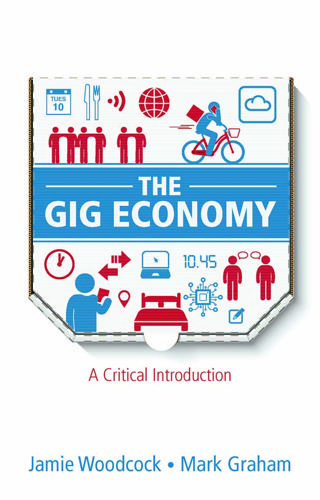
The Gig Economy: A Critical Introduction
by
Jamie Woodcock
and
Mark Graham
Published 17 Jan 2020
British Academy Review, 34: 30–1. SweepSouth (2018) Report on pay and working conditions for domestic work in SA 2018. SweepSouth, 13 May. Available at: https://blog.sweepsouth.com/2018/05/13/report-on-pay-and-working-conditions-for-domestic-work-in-sa-2018/ Taylor, F. (1967) The Principles of Scientific Management. New York: Norton. Taylor, P. and Bain, P. (2005) ‘India calling to the far away towns’: The call centre labour process and globalization. Work, Employment and Society, 19(2): 261–82. Taylor, B. and Li, Q. (2007) Is the ACFTU a union and does it matter? Journal of Industrial Relations, 49(5): 701–15.

Empire of Things: How We Became a World of Consumers, From the Fifteenth Century to the Twenty-First
by
Frank Trentmann
Published 1 Dec 2015
His dreams carried him along with her into their own house, their new house where they would begin their life together.’65 MODERN LIVING Home ownership was part of a larger dream of modern living. Modern homes promised to liberate their inhabitants from tradition, waste and exhaustion. This vision had enormous appeal for progressives, the middle classes and social reformers in Cairo and Tokyo as much as in Chicago and Berlin. It focused on the housewife as a scientific manager, but its ambition was to transform family life more generally. Modern living had three core ideals. One was the glorification of comfort and cleanliness. A second was the emphasis on individual privacy within the family: a home should have one room per person. Finally, there was a belief that, as in a factory, domestic spaces should be separated by function and equipped with machines to maximize efficiency.
…
One wife wrote to the magazine Fujin koron in 1920 that the time had come to overthrow the ‘old-fashioned lifestyle’ and eliminate the ‘tremendous waste around us’. ‘Among the many things we should learn from the American family’s lifestyle, most important, I think, is that the housewife’s duty is to make her home a happy and beautiful place to live.’106 The home was rebranded as a space of scientific management and family-centred happiness (see Plate 37). The push for modern living came from national policy and embourgeoisement as well as women’s groups. Home science was already part of the school curriculum for girls at the end of the Meiji period (1868– 1912), when Japan embraced modernization.
…
Modern things could be a ticket out of the extended family and community into which one was born.116 Men continued to spend less time on housework than women, but they had their domestic revolution, too. It just didn’t happen in the kitchen. It took place in the hobby basement, the garage and the garden. Mrs Clean was joined by Mr Fixit. Men and women came to the modern home from opposite directions. For women, industry came into the home, upgrading their domestic role to that of scientific manager. For men, on the other hand, the home and garden were refuges from the world of industrial labour. Several developments came together. The shift from artisan to factory worker or office clerk raised anxieties about masculinity. What did modern man actually accomplish, now that he was no longer homo faber?

Blockchain Chicken Farm: And Other Stories of Tech in China's Countryside
by
Xiaowei Wang
Published 12 Oct 2020
There is nothing to be said about bare existence that gains power through classification. In 1952, the psychiatrist and philosopher Frantz Fanon advocated for living against the weight of history. He was writing during the beginnings of the Cold War, with World War II still a close memory. The reorganization of world powers started to shape fields of economic development and scientific management, as well as decolonization and postcolonial movements. In that time of tumult, questions of what it meant to live, and what it meant to be human, were at the forefront of many people’s minds, like Fanon’s, as they worked together to build new societies. Living against history can equally be applied to our understanding of data—“I am not a prisoner of history.

The Relentless Revolution: A History of Capitalism
by
Joyce Appleby
Published 22 Dec 2009
More important, most middle-class Americans could afford one, including Ford’s workers, whom he started paying five dollars a day in 1914. His goal was for his men to earn wages high enough for them to buy what they produced. And buy they did. The scientific management of labor had already attracted the attention of Frederick Winslow Taylor, who carefully observed men working in the steel industry in the 1880s and 1890s. Taylor brought to his research the conviction that scientific management could blend the interests of bosses and workers. This was probably too much to be expected, but Taylor did describe how to make time and motion at the work site more precise and management more attuned to workers’ rhythms.

A Clearing in the Distance: Frederick Law Olmsted and America in the 19th Century
by
Witold Rybczynski
Published 1 Jan 1999
Vanderbilt founded a Young Men’s Institute in Asheville and built Biltmore Village for the estate workers, where he would subsidize the schools (one for whites, one for blacks) and the churches. Olmsted described Biltmore as “a private work of very rare public interest in many ways.” He was thinking of the scientifically managed forest. Olmsted brought in Gifford Pinchot to oversee Biltmore’s forest operations. He was a young American graduate of the École Nationale Forestière at Nancy and the first trained forester ever to hold such a position in the United States. Under Pinchot’s direction Vanderbilt bought more than one hundred thousand acres of land to create Biltmore Forest.
…
On the left, behind Olmsted, is the architect, Richard Morris Hunt; on the right, the young client, George W. Vanderbilt. Frederick and Mary Olmsted at Biltmore Estate in the early 1890s, not long before he withdrew from active practice. Olmsted not only designed the gardens and parkland surrounding the house, but also established an extensive, scientifically-managed forest. Fairstead, Olmsted’s home and office in Brookline, Massachusetts. “Less wildness and disorder I object to,” he once said of his garden. It was in McLean Asylum, in Waverly, Massachusetts, whose grounds he had earlier designed, that Olmsted spent his final years. Central Park, New York It takes decades to realize the landscape architect’s vision.
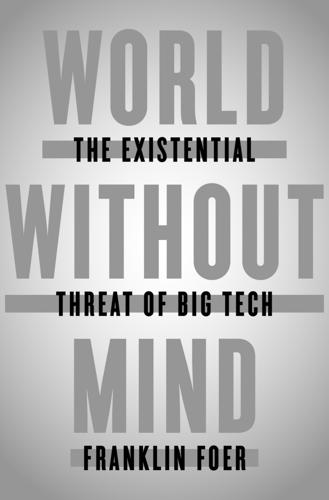
World Without Mind: The Existential Threat of Big Tech
by
Franklin Foer
Published 31 Aug 2017
Brandeis wrote, “The greatest menace to freedom is an inert people.” There were crucial assumptions in Brandeis’s thinking that demand revival. The first was a critique of efficiency. It’s not that Brandeis entirely rejected the idea. He was a devoted student of Frederick Taylor, the apostle of scientific management who used stopwatches and data-driven methods to make factories churn at a faster clip. But Brandeis hated the prospect that society might elevate efficiency to the highest value. Convenience was nice, but we shouldn’t sacrifice ourselves to achieve it. His fear was that the benefits of efficiency might lure us to surrender our liberty.

Brave New World of Work
by
Ulrich Beck
Published 15 Jan 2000
When demand is both quantitatively and qualitatively unpredictable, when markets are globally diversified and therefore impossible to control, when information technologies make possible new modes of decentralized as well as globalized production, the conditions no longer exist for standardized production and work, as this was formulated in Taylor's ‘scientific management’ and taken over by Lenin for the Soviet philosophy and organization of work. For the rigidity of the Fordist regime drives costs up too high. When demand increases, companies have to bring in expensive extra shifts. In slack periods, surplus products – cars, for example – have to be parked in their tens of thousands on company premises and can be sold only at reduced prices; or else output is cut by means of short-time working and lay-offs.

The Self-Made Billionaire Effect: How Extreme Producers Create Massive Value
by
John Sviokla
and
Mitch Cohen
Published 30 Dec 2014
Armed with a chronometer, sea captains could now navigate with more accuracy, avoid dangerous routes, and effectively decrease the length of their journeys. Harrison’s invention changed the business of seafaring—and set the British on a path to extreme value creation in trade. Fast-forward nearly two hundred years and Frederick Winslow Taylor, the father of scientific management, was using time and motion studies to develop ideas to help businesses improve their productivity. Time measurement also made possible the digital computer, which samples itself billions of times a second and records its data through binary impulses—on or off—within a defined window of time.
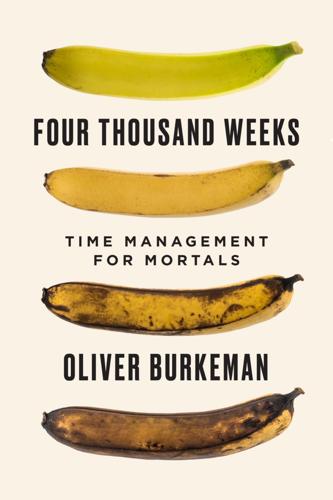
Four Thousand Weeks: Time Management for Mortals
by
Oliver Burkeman
Published 9 Aug 2021
The historian Clive Foss has described the nightmare that transpired when the leadership of the Soviet Union, gripped by the desire to transform the nation into one blazingly efficient machine, set out to reengineer time itself. The Soviets had long been inspired by the work of the efficiency expert Frederick Winslow Taylor, whose philosophy of “scientific management” had aimed to squeeze the maximum possible output from American factory workers. But now Josef Stalin’s chief economist, Yuri Larin, concocted what seems in hindsight like a ludicrously ambitious plan to keep Soviet factories running every day of the year, with no breaks. Henceforth, he announced in August 1929, a week would be not seven but five days long: four days of work, followed by one day’s rest.

Leadership by Algorithm: Who Leads and Who Follows in the AI Era?
by
David de Cremer
Published 25 May 2020
As such, we entered the age where running an organization became an administrative task where the central focus was on controlling and co-ordinating the behaviors of its human employees. This administrative focus set the stage for the scholar Frederick Taylor, who in 1911 published his book on The Principles of Scientific Management. In this work, Taylor emphasized that the priority should be to use systems based on control mechanisms rather than relying on man to make organizations function more effectively. Taylor made these claims based on his productivity experiments, which showed that unobserved workers were inefficient.

McMindfulness: How Mindfulness Became the New Capitalist Spirituality
by
Ronald Purser
Published 8 Jul 2019
Norton, 2011. 15 http://www.academyanalyticarts.org/rose-power-subjectivity 16 Nikolas Rose, Inventing Ourselves: Psychology, Power, and Personhood. Cambridge University Press, 1998. p.114 17 https://rkpayne.wordpress.com/2014/02/18/corporatist-spirituality/ 18 Frederwick Winslow Taylor, Principles of Scientific Management. Harper & Brothers Publishers, 1915. 19 American Psychological Association, 1962. 20 John Micklethwait and Adrian Wooldridge, The Witch Doctors: What the Management Gurus are Saying, Why it Matters and How to Make Sense of It. Mandarin, 1997. 21 https://journals.sagepub.com/doi/abs/10.1177/0038038516655260 22 Richard Gillespie, Manufacturing Knowledge: A History of the Hawthorne Experiments.
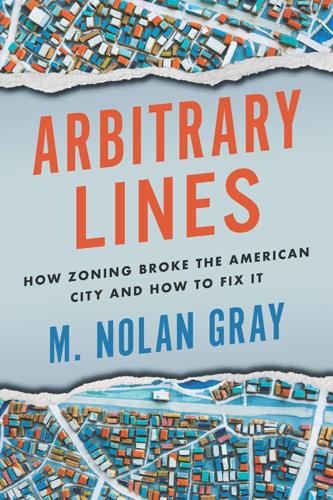
Arbitrary Lines: How Zoning Broke the American City and How to Fix It
by
M. Nolan Gray
Published 20 Jun 2022
Thus, a constituency for comprehensive use segregation that might uphold segregation in the suburbs was born.9 1916 This confluence of factors came together at the crest of the Progressive Era, a wide-ranging movement to reform American society, covering everything from alcohol prohibition to antitrust regulation to eugenics to labor relations. With respect to cities, progressive reformers dreamed of replacing corrupt machine politics with scientific management by bureaucratic experts. Sometimes, it worked; sometimes, it didn’t. The young city planning movement nonetheless latched on to zoning as a way to apply such a rational order to cities, with ambitions of resolving everything from slums to traffic congestion. But in every political coalition, you need both a Baptist and a bootlegger.10 The early zoning movement largely drew from, and found a key base of support among, upper-middle-class, Anglo-American property owners.
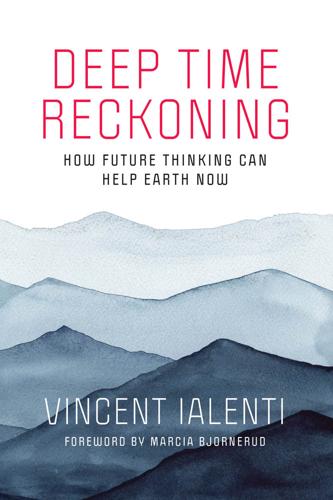
Deep Time Reckoning: How Future Thinking Can Help Earth Now
by
Vincent Ialenti
Published 22 Sep 2020
It became a space devoid of the “tropes of the aesthetic sublime” common in media and scholarly depictions of deep time.6 It became more a site of technical troubleshooting, logistical organizing, and drab reportage than of apocalyptic dread, cosmic loneliness, overwhelming horror, or existential uneasiness. Much like the analogue studies we explored in chapter 1, the Safety Case’s quantitative models distilled deep time into something that felt more amenable to bureaucratic, scientific, management, and regulatory control. The Safety Case modelers used numbers and scientific methods to tame deep time’s power to confuse. Some made computer models that simulated how radionuclides could move through Western Finland’s far future bedrock’s fractures and crevices, plus the water channels found deep underground there.
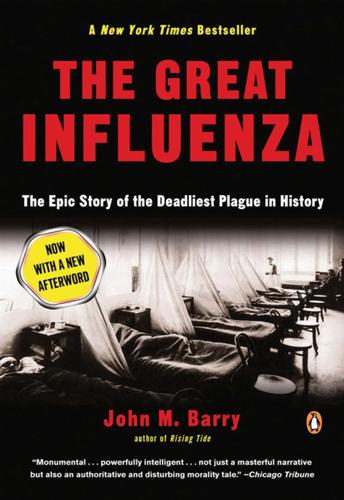
The Great Influenza: The Story of the Deadliest Pandemic in History
by
John M. Barry
Published 9 Feb 2004
It was the Progressive Era. Life was becoming organized, rationalized, specialized. In every field “professionals” were emerging, routing the ideas of the Jacksonian period, when state legislatures deemed that licensing even physicians was antidemocratic. Frederick Taylor was creating the field of “scientific management” to increase efficiencies in factories, and Harvard Business School opened in 1908 to teach it. This rationalization of life included national advertising, which was now appearing, and retail chains, which were stretching across the continent; United Drug Stores the largest, had 6,843 locations.
…
Technology has always mattered in war, but this was the first truly scientific war, the first war that matched engineers and their abilities to build not just artillery but submarines and airplanes and tanks, the first war that matched laboratories of chemists and physiologists devising or trying to counteract the most lethal poison gas. Technology, like nature, always exhibits the ice of neutrality however heated its effect. Some even saw the war itself as a magnificent laboratory in which to test and improve not just the hard sciences but theories of crowd behavior, of scientific management of the means of production, of what was thought of as the new science of public relations. The National Academy had itself been created during the Civil War to advise the government on science, but it did not direct or coordinate scientific research on war technologies. No American institution did.
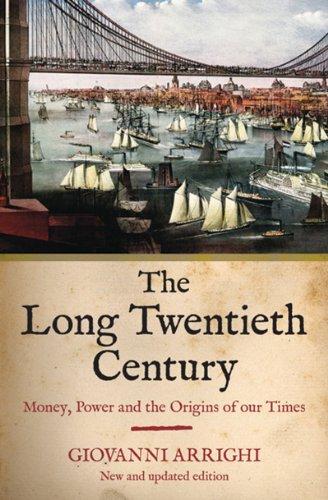
The Long Twentieth Century: Money, Power, and the Origins of Our Times
by
Giovanni Arrighi
Published 15 Mar 2010
As a matter of fact, the Dutch were leaders not just in the accumulation of capital but also in the rationalization of military techniques. By rediscovering and bringing to perfection long-forgotten Roman military techniques, Maurice of Nassau, Prince of Orange, achieved for the Dutch army in the early seventeenth century what scientific management would achieve for US industry two centuries later (cf. McNeill 1984: 127-39; van Doorn 1975: 9H). Siege techniques were transformed (1) to increase the efficiency of military labor-power, (2) to cut costs in terms of casualties, and (3) to facilitate the maintenance of discipline in the army’s ranks.
…
Differences between the two struggles, however, are as important as the analogies. Both France and England were latecomers in the global power struggle. This lent them some advantages. The most important was that by the time France and England entered the business of territorial expansion in the extra-European world, the spread of Maurician “scientific management” to the European armies was beginning to turn their comparative advantage over the armies of extra-European rulers into an unbridgeable gulf. The power of the Ottoman empire had begun to decline irreversibly: Further East, the new style of training soldiers became important when European drill-masters began to create miniature armies by recruiting local manpower for the protection of French, Dutch, and English trading stations on the shores of the Indian Ocean.

Power and Progress: Our Thousand-Year Struggle Over Technology and Prosperity
by
Daron Acemoglu
and
Simon Johnson
Published 15 May 2023
In the Soviet case, coercion was justified as a means of achieving what the leadership regarded as an ideal type of society. Lenin articulated this notion in 1920 when he said, “Communism is Soviet power plus the electrification of the whole country.” Communist leaders discerned early on that there was a great deal to learn from large-scale factory operations, including Frederick Taylor’s “scientific management” methods and the assembly-line production of Henry Ford’s car factories. In the early 1930s, about ten thousand Americans with specific skills, including engineers, teachers, metalworkers, carpenters, and miners, went to the Soviet Union to help install and apply industrial technology. Although building industry was the primary objective, experience during the New Economic Policy of the 1920s indicated that bringing more people to work in factories needed to be supported by a sufficiently high and stable supply of grain.
…
Even before the Depression, some intellectuals and businesspeople were acknowledging that without collective bargaining, productivity gains would not be shared fairly, even if companies such as Ford raised wages to reduce turnover. In 1928 the pioneering American engineer Morris Llewellyn Cooke spoke to the Taylor Society, a group dedicated to “scientific management”: The interests of society, including those of the workers, suggest some measure of collective bargaining in industry to the end that the weaker side may be represented in negotiations as to hours, wages, status and working conditions. Collective bargaining implies the organization of the workers on a basis extensive enough—say nation-wide—as to make this bargaining power effective.
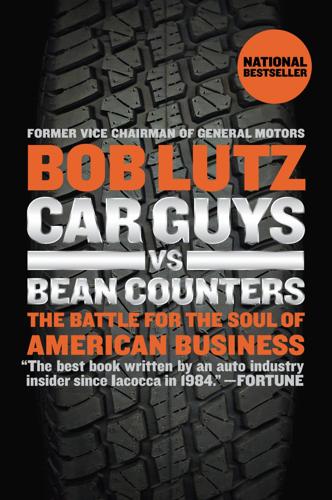
Car Guys vs. Bean Counters: The Battle for the Soul of American Business
by
Bob Lutz
Published 31 May 2011
Rick Wagoner once told me that the decision to redo the Vectra as a plastic-paneled Saturn had been hugely controversial, but that in the end the company had no choice but to go along with Saturn. And that’s where I say, “What? Had to go along? Says who?” This additional billion down the drain would never have happened if there had been a single senior person at the corporation with any sort of instinct for the product. Such a person, long-derided as “unnecessary to the scientific-management structure of GM,” would have said, “Folks, the car is terminally ugly. It will not sell at a hundred thousand units a year. And there is no need for a ‘conversion to plastic.’ Save the money, duplicate the tooling of the Vectra, minimize investment, and accept lower volumes.” Saturn’s need for a small sport-utility vehicle was finally answered with the Vue, a plastic-on-space-frame again, with the attendant ugly body gaps.The usual customer-visible thrifting had taken place as well: there was not a piece of brightwork on the vehicle.
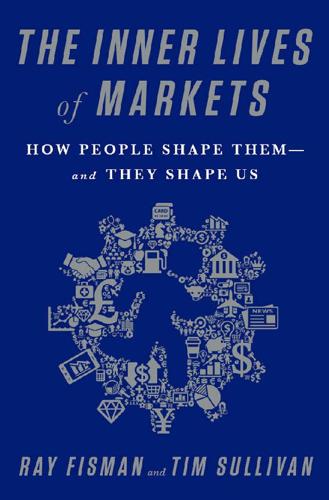
The Inner Lives of Markets: How People Shape Them—And They Shape Us
by
Tim Sullivan
Published 6 Jun 2016
Michael Spence, “Signaling in Retrospect and the Informational Structure of Markets,” Prize Lecture, December 8, 2001, http://www.nobelprize.org/nobel_prizes/economic-sciences/laureates/2001/spence-lecture.html. 4. A pessimistic view is that every worker is either one or the other. As the scientific management pioneer Frederick Taylor once put it: “Hardly a competent workman can be found who does not devote a considerable amount of time to studying just how slowly he can work and still convince his employer that he is going at a good pace.” 5. Eli Berman, “Sect, Subsidy, and Sacrifice: An Economist’s View of Ultra-Orthodox Jews,” Quarterly Journal of Economics 115, no. 3 (2000). 6.

The Great Reset: How the Post-Crash Economy Will Change the Way We Live and Work
by
Richard Florida
Published 22 Apr 2010
Older factories that were based on multistory buildings near the city center were replaced by bigger ones laid out on one floor that were better suited to long assembly lines. Together, these sorts of innovations created the new, ever-more-powerful system of Fordist mass production, named after Henry Ford, who introduced it, which combined Frederick Taylor’s scientific management with assembly-line technology to bring about a quantum leap in economic productivity. Productivity growth during the Depression, Field adds, was “characterized by advances across a broader frontier of the economy,” spurred by technological and organizational improvements in a wide range of manufacturing industries, combined with advances in transportation and communication and gains in utilities and wholesale and retail distribution.
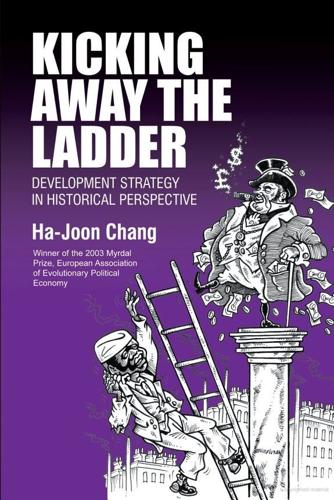
Kicking Awaythe Ladder
by
Ha-Joon Chang
Published 4 Sep 2000
During the 1920s, under strong German influence, Japan began to encourage the rationalization of key industries by sanctioning cartel arrangements and encouraging mergers, which were aimed at restraining 'wasteful competition', achieving scale economies, standardization and the introduction of scientific management.187 These efforts were intensified, and government control over cartels was strengthened, in the 1930s in response to the world economic crisis following the Great Depression and the war efforts, especially with the enactment of the 1931 Important Industries Control Law. Thus the basic pattern of postwar industrial policy was established.188 As in many other NDCs, Japan's military build-up during the 1930s is believed to have contributed to the development of heavy industries (although with an ultimately disastrous political outcome) by stimulating demand and creating technological spillover.189 Despite all these developmental efforts, during the first half of the twentieth century, Japan was not on the whole the economic superstar that it became after the Second World War.
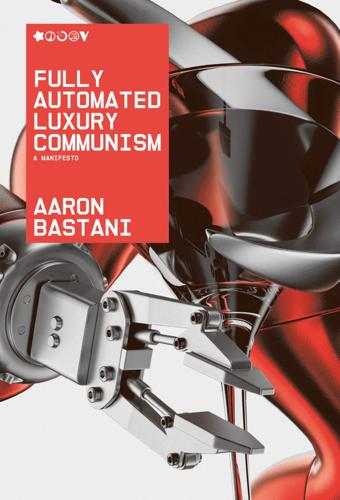
Fully Automated Luxury Communism
by
Aaron Bastani
Published 10 Jun 2019
As it was applied to tools, processes and products, the notion of technology as a distinct field began to emerge. By the 1870s it was this relationship between knowledge and technology which drove what Drucker labelled the ‘Productivity Revolution’. The father of this revolution was Frederick Taylor, an American mechanical engineer and pioneer in scientific management. Until Taylor, whose professional life took off in the 1880s, the scientific method had never been applied to the study of work in order to maximise output. Yet within a few short decades this became a dogma – massively expanding productivity and improving the standard of living for the average worker.
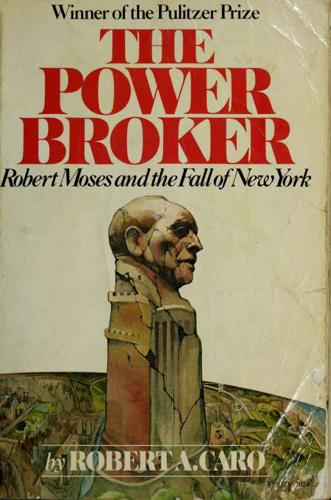
The power broker : Robert Moses and the fall of New York
by
Caro, Robert A
Published 14 Apr 1975
But this trio—known among reformers as "the ABC"— added to the reform ethos new elements derived from two other passions of the era, natural science and scientific management. The emphasis of natural science on empiricism, on firsthand observation, on the obtaining of facts, led them to conclude that it was vain to talk about changing the philosophy of government before learning the facts of government, and they said therefore that the first step toward reform should be analysis of government operations. From scientific management—the age was marveling at the assembly-line techniques introduced by Henry Ford—they concluded that after government operations had been analyzed, the next step should be not a change in philosophy but an improvement in such operations to make them "efficient" and "economic," to insure that the city would get far more for each dollar spent than in the past, and would therefore be financially more able to do what the voters desired.
…
In the field of public administration, the Training School was unique in its down-to-earth practicality. Pupils not only were put through intensive reading courses on the theory of budget making, accountancy, scientific management, chart making and the use of forms, summaries and statements, but also spent long days in city offices watching budgets actually being made up and did their scientific management homework sitting in city offices trying to figure out ways to eliminate unnecessary personnel and analyzing projects the city was undertaking, to see if they were really needed. They did the legwork for the Bureau members who were heading the investigations which would result in exposure of corruption or waste in city government.
…
Such an explanation, however, failed to take into account the full extent of the difference. For one thing, Moses was not only obeying Mrs. Moskowitz but also obviously studying the lessons that she was teaching, and studying them hard. His conversation began to include the phrases of practical politics as well as those of scientific management textbooks. His analysis of a state job began to take into consideration not only whether the position was necessary for the betterment of mankind but also who had appointed the man who now held the position. He learned to weigh the governmental gains that might be achieved by the position's elimination and by the use for worthier purposes of the salary allocated to it against the political losses the elimination might entail—how much it would antagonize the appointer and how great an obstacle such antagonism might be to Smith's over-all program.
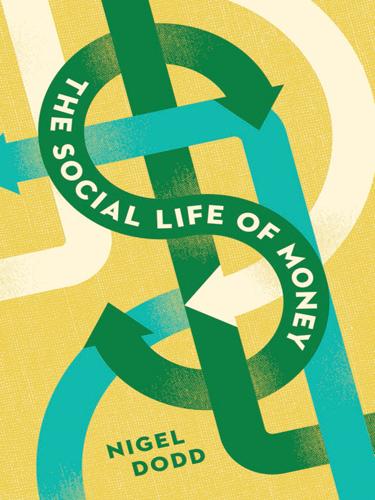
The Social Life of Money
by
Nigel Dodd
Published 14 May 2014
In Economic Democracy (1920) and Social Credit (1924) (Douglas 1974, 1979), Douglas advanced an “engineer’s view of an ideal society” in which money featured centrally as the means by which the flaws of actually existing society could be corrected. Douglas’s proposals correspond to contemporaneous intellectual developments such as scientific management (Martin-Nelson 2007). Douglas likened the relationship between factory cost and money released as a conversion, analogous to the conversion of mechanical energy into electricity or heat. What was left over he described as dispersion, which in the present system was being charged to the consumer rather than set against the value of the product.
…
See also nomos; state of exception Schopenhauer, Arthur, 36n, 140, 157, 327; territorial space, 261 Schuld, 136, 144, 146 Schumpeter, Joseph, 12, 16, 27n17, 50, 111–16, 117, 118, 270, 276n; on Aristotle, 93n11; on banking, 112–13; Capitalism, Socialism and Democracy, 115; on culture, 269, 310; on entrepreneurship, 115, 116; History of Economic Analysis, 112; on Knapp, 103–4; on Marx, 59; on the sociology of money, 112; The Theory of Economic Development, 112–13 science, 7, 170; in Fromm, 341; linguistics, 38; monetary, 269, 310; sociology of, 371; of writing, 41 science and technology studies (STS), 371 scientific management, 355 Seaford, Richard, 25, 223 Second World War, 99, 363 Secure American Gold Exchange, 361 securitization, 120–21, 122, 123–24, 198 security, 36 seigniorage, 378, 380 semiotics, 38, 41, 179, 297 shadow banking, 116, 123, 124 Shakespeare, William, King Lear, 224; The Merchant of Venice, 186; Timon of Athens, 181 Shell, Marc, 35n29 Shiller, Robert, 314 sign, 35, 36, 39n35 signatures, theory of, 42 Silk Road, 366 Simiand, François, 32n Simmel, Georg, 27–30, 271, 276n, 291, 294, 295, 311, 316–30, 333, 382; on absolute and relative equality, 320, 321–22, 346, 356, 375; on adornment and money, 205; on aesthetics, 321–22; on alienation, 33, 273, 274–75, 324; on calculation, 295, 324; on colorless money, 30–31, 32; on culture, 138, 273; on the dyad, 28; on fictions, 317, 320, 329; on historical materialism, 276; “How is society possible?
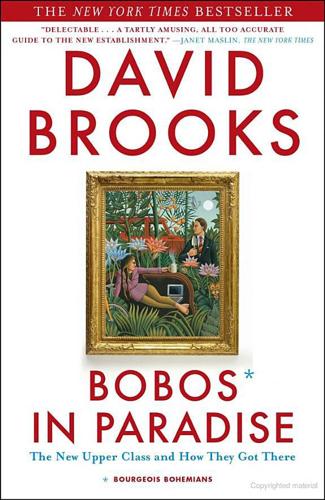
Bobos in Paradise: The New Upper Class and How They Got There
by
David Brooks
Published 1 Jan 2000
Thoreau bought and sold provisions but believed in living “simply and wisely” because “I wanted to live deep and suck out all the marrow of life, and to live so sturdily and Spartan-like as to put to rout all that was not life.” The transcendentalists lived in a bourgeois culture that was intoxicated by the possibilities of technology and by the “improvements,” to use a popular word of the era, that would come with progress. The steam engine, the railway, the factory, scientific management—all of these things would eliminate distance, facilitate trade, and generate wealth. Man was on the verge of conquering nature, of redeeming the howling wilderness by making it productive. In his 1964 book, The Machine in the Garden, literary critic Leo Marx cites this quotation from an 1840s journalist named George Ripley as an example of what he calls the technological sublime: The age that is to witness a rail road between the Atlantic and the Pacific, as a grand material type of unity of nations, will also behold a social organization, productive of moral and spiritual results, whose sublime and beneficial character will eclipse even the glory of those colossal achievements which send messengers of fire over the mountain tops, and connect ocean with ocean by iron and granite bands.

How Capitalism Saved America: The Untold History of Our Country, From the Pilgrims to the Present
by
Thomas J. Dilorenzo
Published 9 Aug 2004
The Railway Labor Act, like New Deal labor legislation, artificially empowered labor unions at the expense of employers and, ultimately, of consumers. In addition, Hoover advocated “easy credit,” mistakenly believing that if the Federal Reserve Board created money it would lead to prosperity. He espoused what he termed the “scientific management of the money supply.”15 As we shall shortly see, however, the Fed’s easy money policy of the late 1920s was a major cause of the Great Depression. To try to eliminate “destructive competition,” as commerce secretary he advocated “associationalism” or “cooperative competition”—that is, government-supervised competition that would allow social engineers such as himself to ensure that there was not “too much” wasteful competition.
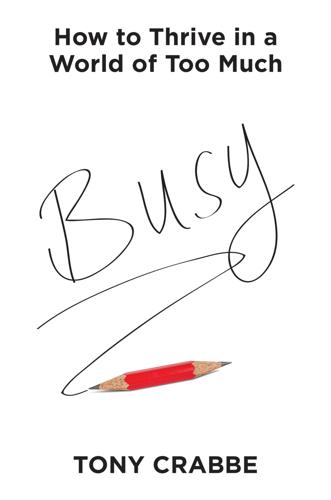
Busy
by
Tony Crabbe
Published 7 Jul 2015
The “More” Game In the Industrial Age, the primary goal was production: given a set level of quality, the more you could produce, the better. As time passed and production processes improved, managers started to realize the thing that was slowing output the most was the human factor. They needed their people to work harder and more efficiently. Enter Frederick Winslow Taylor and his approach called scientific management. Taylor analyzed employee activity with time and motion studies to find out where efficiencies could be made. Ever since then, the core focus of most management teams has been to get their people to produce more. In a curious parallel to the Industrial Age, a recent study has looked at what is holding back the effectiveness of computer systems today.

Hard Landing
by
Thomas Petzinger
and
Thomas Petzinger Jr.
Published 1 Jan 1995
He had been a pilot over at TWA—a captain, ultimately—who had earned an M.B.A. in his free time. An intensely intellectual man with a dashing thin mustache, he arrived at Eastern at the apogee of the postwar obsession with industrialism, committed as no airline chief executive before him to the principles of what was then called “scientific management.” Hall crowded Eastern’s offices at Rockefeller Center with a small army of whiz kid executives. Within a few years Eastern’s executive ranks swelled to include 43 officers at the vice presidential level alone. Nervously watching passenger defections to Delta, Hall with abandon ordered the jets that Rickenbacker had eschewed.
…
Martin, Dun’s, Nov. 1973; Borman, Countdown, page 270. 12. W.H.E.A.L.: Serling, From the Captain, page 277. 13. “The Great Stingy Fleet”: “Floyd Hall’s Problems at Eastern,” BW, Aug. 18, 1973. 14. drowning himself in martinis: Serling, From the Captain, page 331. 15. nipping quite a bit: Ibid., pages 383-84. 16. “scientific management”: BW, Aug. 18, 1973. 17. Rosenthal china: Serling, From the Captain, page 406. 18. born in Gary: The facts of Borman’s early life and military career are based principally on his memoir, Countdown. Borman is also profiled in “Lost in Space,” by Rowland Stiteler, Florida, Nov. 1, 1987, and “Frank Borman: Is He Really Captain America?’

Racing With Death
by
Beau Riffenburgh
Published 25 Jul 2008
The industry’s continuing expansion made it evident that whaling might soon extend for the full distance between the Weddell and Ross seas, and Mawson, amongst other Australians, advocated the assertion of British sovereignty over the parts of this region that he had long called the Australian Quadrant (90° to 160°E). Having witnessed the unrestrained slaughter on Macquarie Island, he believed that the living resources of the sub-Antarctic islands and Antarctic seas required controlled and scientific management – penguins, seals, and flying birds as well as whales. Without a British claim, there could be no proper regulation and no long-term financial benefits. There were other reasons why Mawson pushed for official British action regarding these southern regions. First, he believed that officially bringing the Australian Quadrant into the British sphere would be the initial step in continuing the scientific work of the AAE.
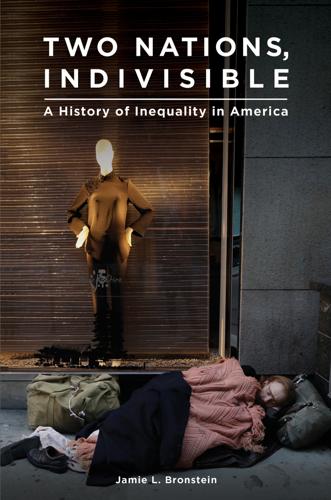
Two Nations, Indivisible: A History of Inequality in America: A History of Inequality in America
by
Jamie Bronstein
Published 29 Oct 2016
Workers encountered dangerous and unfenced machinery; even when safety measures were available, employers could claim that installing them was too expensive. Employers claimed that workplace injuries were due to worker negligence or failure to master the English language. Workers labored long hours, in uncomfortable postures, without sufficient meal breaks or bathroom breaks. Mechanical engineer Frederick Winslow Taylor’s innovation of “scientific management” introduced time–motion studies intended to find the “one best way” of performing every factory task; Taylorism made production efficient but deprived the worker of all autonomy of movement on pain of fines or dismissal.35 And most depressingly, the cost of adapting physically to the workplace was shifted onto the worker; there was no regulation to compel most workplaces to restrict work hours, provide rest and meal breaks, or install safety devices.36 By 1920, more than 5 million Americans belonged to labor unions, as contrasted with fewer than 500,000 only 20 years previously.37 Even during this moment of relative labor unrest, however, the workforce remained divided between men and women, between native-born and immigrant workers, and between the white workers and the black workers who were often used to break strikes.38 The American Federation of Labor emerged as the major overarching entity organizing male skilled workers.
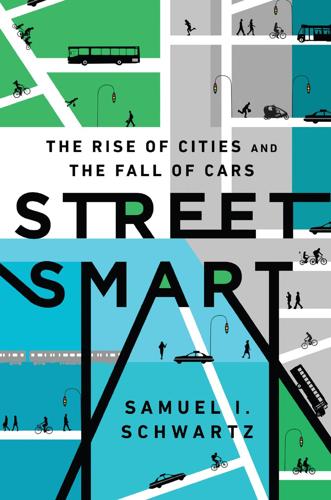
Street Smart: The Rise of Cities and the Fall of Cars
by
Samuel I. Schwartz
Published 17 Aug 2015
There’s a lot of empirical research on walking, and not just the way in which the thighbone is connected to the knee bone, a subject that was on my mind a lot after I had arthroscopic knee surgery in the summer of 2014. People have been measuring, analyzing, and modeling the way people walk ever since the original gurus of scientific management, Frederick Winslow Taylor and the husband-and-wife team of Frank and Lillian Gilbreth,k performed the first time-motion studies to see how best to organize assembly-line work at the end of the nineteenth century. Decades later, William H. Whyte—“Holly” to everyone who knew him—graduated from reporting on business organizations for Fortune and writing business bestsellers like The Organization Man (this million seller from 1956 is where the term groupthink was coined) to discover his true calling: describing the way people behaved and moved in public places.

Frugal Innovation: How to Do Better With Less
by
Jaideep Prabhu Navi Radjou
Published 15 Feb 2015
According to Elie Ohayon, former CEO of Saatchi & Saatchi + Duke, advertising agencies are unprepared for these technological and socio-economic changes. They continue to work according to 1950s structures and methods – that is, highly specialised functions that fail to communicate with one another, with sequential and time-consuming development processes. This Taylorist model (named after a system of scientific management advocated by Frederick Taylor) worked well in the past when promoting, say, a detergent through just four channels: TV, radio, press and display. In today’s more complex and dynamic world, a brand touches dozens of different markets and promotional messages are sent through hundreds of channels, many of which are enabled by social media.

Lift: Fitness Culture, From Naked Greeks and Acrobats to Jazzercise and Ninja Warriors
by
Daniel Kunitz
Published 4 Jul 2016
Sargent himself never expressed any such racial notions, though his project seems to be consonant with the ideas in vogue at the time that imposed a directional end point—a teleology—onto the recent theory of evolution, so that the fittest was seen as the most perfect (rather than adapted to a particular biological niche or most likely to produce offspring). Sargent’s enumeration of body-part sizes and strength results situates his studies within the turn-of-the-century trend toward greater industrial or workplace efficiency through “scientific” means. As Carolyn Thomas has pointed out, Sargent’s project shares much with Taylorism, or scientific management, which “sought to measure the exact movements of industrial workers to determine the path of least resistance in manufacturing.” It must be understood, too, as part of a broader cultural interest in “breaking down bodily processes, internal and external, into their constituent elements,” one exemplified by the English photographer Eadweard Muybridge’s studies of human and animal locomotion.
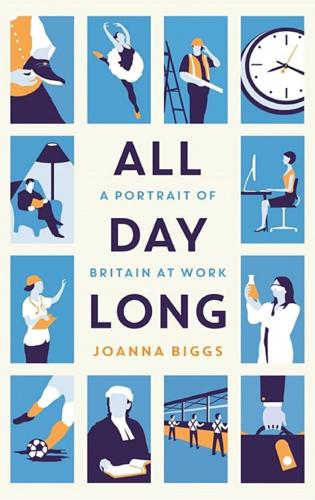
All Day Long: A Portrait of Britain at Work
by
Joanna Biggs
Published 8 Apr 2015
At Etruria, Josiah Wedgwood’s factory, fines were given for lateness – thought to be the first instance of a clocking-in system – and bells were rung when work began and ended. Time became currency, ‘not passed but spent’. Time thrift was reinforced in the eighteenth century by the school and the Church; would continue in the nineteenth century through the theories of scientific management of Frederick Taylor; and persists today in Amazon’s warehouses, where a time limit for each task is calculated and transmitted to workers’ handheld scanners. ‘In mature capitalist society,’ Thompson wrote, ‘all time must be consumed and marketed, put to use.’ The move from preindustrial or agricultural task-oriented work to urban, industrial timed labour made it possible to think of leisure time as a problem, or as just another sort of work.

The Empathic Civilization: The Race to Global Consciousness in a World in Crisis
by
Jeremy Rifkin
Published 31 Dec 2009
The more efficient one becomes, the more productive one is, the more wealth one amasses, and the less time one loses, the closer one gets to a state that transcends the laws of thermodynamics and the dreaded entropy state. Efficiency has come to mean “buying time.” Efficiency was quickly taken up in industry and popularized in the factories and front offices by Frederick Taylor, who propounded his principles of scientific management. From there, it slipped into the schools, public life, and even family relations. To be efficient became the supreme virtue of modern man. Underneath the freneticism was the unconscious or at least unstated feeling that by being more efficient, one could somehow save time and cheat death. Restructuring economic and social relations around the temporal value of efficiency has the effect of making all relations instrumental to productive outputs.
…
Sargant, William Sartre, Jean-Paul Satan Scheerbart, Paul Schiller, Friedrich Scholastics school-age child school curriculum collaborative learning empathic science empathy MBA Schopenhauer, Arthur Schor, Juliet Schrödinger, Erwin science Enlightenment old versus new Science scientific management scientific method Scott, Cynthia script cultures Search for Extra-Terrestrial Intelligence (SETI) Sears Tower. See Willis Tower Second Industrial Revolution Second Law of Thermodynamics secular societies self-analysis self-consciousness self-esteem movement self-expression self-help groups selfhood personal histories and in Romantic era in Sumerian Empire self-interest Sempra Energy Sennett, Richard Sense and Sensibility (Austen) sensitivity training separateness serfs service learning sexual union Shakespeare, William shame shaming culture shared identity Sheldon, Ken Shelley, Percy Bysshe Sheridan, Thomas Siberian sub-Arctic region Sickels, Eleanor Siegel, Daniel J., Dr.
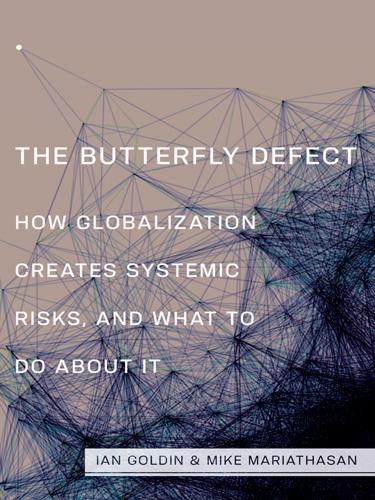
The Butterfly Defect: How Globalization Creates Systemic Risks, and What to Do About It
by
Ian Goldin
and
Mike Mariathasan
Published 15 Mar 2014
This is no substitute for judgement, intuition, and experience or for the challenge that comes from having a diverse set of individuals who see risk as their concern rather than relying on a separate “risk manager” who applies rigid rules. The upward trend in figure 3.4 is analogous to a volumetric increase in the management literature.31 This increase in scholarship on management science is a symptom of the growing role of management education and has its origins in the “emergence of scientific management” that accompanied the Industrial Revolution.32 Much of the standardization of management science has to do with the dissemination of the master’s in business administration (MBA) degree, which has become the “standard credential for managerial ability” and has contributed to a “convergence of management thought.”33 It should be recognized that this convergence is not a phenomenon exclusive to the United States and that the creation of joint degrees by leading universities worldwide contributes further to the global adoption of common best practices.34 This is now so common place that it occurs across continents; the University of Hong Kong offers a joint MBA with Hautes Études Commerciales (Higher Commercial Studies) Paris, while the Anderson School of Management of the University of California, Los Angeles, runs a program with the National University of Singapore.
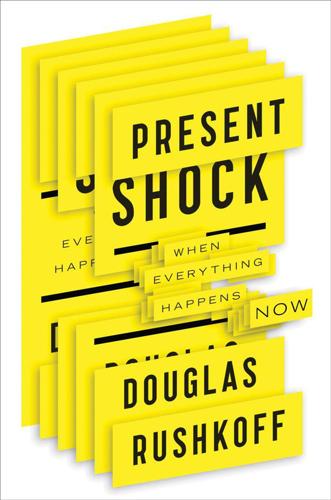
Present Shock: When Everything Happens Now
by
Douglas Rushkoff
Published 21 Mar 2013
People were to perform with the precision and regularity of the machines they drove—and, in some senses, were becoming. By the 1800s, workers punched clocks to register their hours. A mechanical engineer named Frederick Taylor applied his skill with machines to human beings, inventing a new field called scientific management. He and his assistants would spread out through a company armed with stopwatches and clipboards to measure and maximize the efficiency of every aspect of the work cycle. The time it took to open a file drawer was recorded down to the hundredth of a second, in order to determine the standard time required to complete any job.
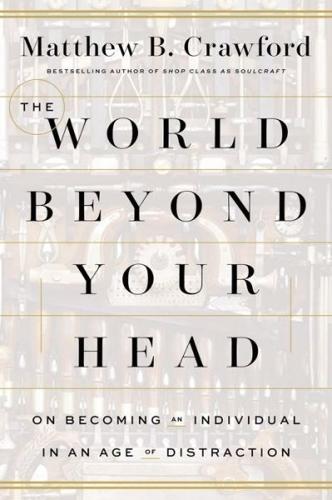
The World Beyond Your Head: On Becoming an Individual in an Age of Distraction
by
Matthew B. Crawford
Published 29 Mar 2015
As Schüll notes, the gaming industry has embarked on a program that resembles the Taylorist time-and-motion analyses of the early twentieth century, whereby the productivity of factory workers was maximized. The goal was to discover the fastest possible rate at which the assembly line conveyors could move, given the limitations of the human body. Of course, in Las Vegas the object of this kind of scientific management is not a producer, but rather a consumer of the manufactured “zone” experience. Still, productivity must be maximized. Schüll quotes industry insiders who forthrightly articulate the design goal of the machines and of the broader casino environment as one that leads players to play “to extinction.”
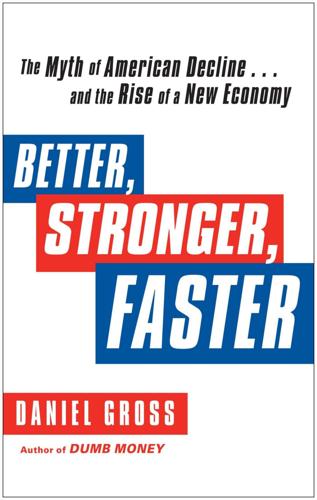
Better, Stronger, Faster: The Myth of American Decline . . . And the Rise of a New Economy
by
Daniel Gross
Published 7 May 2012
The pursuit of efficiency has long been a hallmark of American economic success. Management consulting, it should be recalled, is an American invention and a field in which U.S. firms dominate. It started with Frederick Winslow Taylor, who may have been America’s first management consultant. Starting in the 1890s the inventor of “scientific management” walked around factories with a stopwatch, timing the activities of workers and suggesting ways they could speed up their processes. The efficiency revolution continued with Henry Ford, whose perfection of the assembly line at the vast River Rouge plant enabled him to transform the automobile from a custom-built toy for the 1 percent to a highly practical tool for the 99 percent.

100 Years of Identity Crisis: Culture War Over Socialisation
by
Frank Furedi
Published 6 Sep 2021
As the author of Machine Age Ideology: Social Engineering and American Liberalism, 1911−1939, explained, the ‘theory behind social engineering’ argued that the world had become a very different place from the past and that ‘politics as a governing device had become outdated’. It insisted that, instead of the wrangling and demagogic appeals to the masses, what was required was scientific management and administration oriented towards ‘troubleshooting and problem solving’.342 Social engineering provided ideological support for the rule of expertise. This ideology contained an imperative to bring all dimensions of human experience − including personal and family life − under its spell.

The Stack: On Software and Sovereignty
by
Benjamin H. Bratton
Published 19 Feb 2016
Foucault's genealogies of modernity painstakingly recount how typical and normative human bodies were served and served up by the design of disciplinary institutions of knowledge. By observing machine shops and workers and replanning how their bodily movements could be abstracted and optimized so as to be better incorporated with their laboring habitats, Frederick Winslow Taylor pioneered scientific management theory and the efficiency movement as the nineteenth century became the twentieth. Concurrently, Max Weber would identify a tendency toward depersonalized rationalization through the formulation of people into interchangeable bureaucratic components as a key sociological feature of industrial capitalism.
…
See also cars: driverless robotic terraforming, 181 robot operating system (ROS), 139 robots, 275, 279, 307 robustness principle, 319 romanticism, 324–325 Romer, Paul, 310 Rosenzweig, Paul, 441n8 Rubin, Andy, 138–139 Rubin, Ben, 265 rule of law, 103, 111, 173 Rwanda, 82 Saarinen, Eero, 186 Sagan, Carl, 75 Sakamura, Ken, 59–61 San Salvador, 311 Sassen, Saskia, 416n28 satellite observation technology, 90–92 satellites, hacking, 401n45 Saverin, Eduardo, 126 scarcity addressable, 336 artificial, 208 automation and the end of, 328 bandwidth, 117 bitcoin and, 336–337 economy of, 208 energy, 93 exchange value and, 51 information, 353, 372 Schmidt, Eric, 113, 134–136 Schmitt, Carl, 19, 24–27, 29–32, 34, 84, 99, 113, 150, 175, 324, 368–369, 371, 379n10, 379n12, 397n19 Schmitt, Harrison, 442n11 “Schmitt App,” 241 Schrödinger's pedestrian, 359 scientific management theory, 254, 285 Scott, James, 8 Scott, Ridley, 128 Scotus, Duns, 417n39 Sea. See also land versus sea beyond the line, 30 French versus English concepts of, 380n15 search, 112, 118, 136–138, 202–203, 332, 342 “Search for Artificial Stellar Sources of Infra-Red Radiation” (Dyson), 106 Seasteading Institute, 180 secession, 177, 306–307, 309–314, 336, 447n43 second planetary computer, 300–301 secular disenchantment, 426n46 Securities and Exchange Commission, Regulation National Market System, 451n63 securitized entertainment, 156 security imagine no lines/imagine nothing but lines, 324, 355 interfacial security regimes, 345 post-Oklahoma City Bombing architecture, 322–323 trading for, 445n37 utopia of, 311, 321–325 security Apps, 241 seeing like a state, 8, 106, 120, 333 self, the care of, 126, 261 dissolution of, 263 fabrication of, 126 mirror reflection of, 253, 264 quantification of, 258–263 self-knowledge through numbers, 261 technologies of, 348 self-identity of the User, 258, 261, 263, 274, 345, 362 self-image geographic, 144 human, 71, 253 of the User, 253, 261 self-knowledge through numbers, 261 self-mapping swarms, 265 self-realization, 129 self-reflection of the User, 252–253 semantics of the address, 193 semantic web, 202–203 “sensing like a state,” 340 sensing networks, 303 sensors blanketing Earth, 97, 180, 192, 198, 295 design questions, 342 forming a Cloud of machine sensation, 340 future of, 342 mobile phones as, 342 as User/User as, 340 September 11, 2001, terrorist attacks, 321, 363 Serres, Michel, 1, 19, 75, 210, 222–223, 238 Shanghai World Expo (2010), 257–258, 285, 289 Shannon information, 205, 296–297 Shannon's law (Shannon-Hartley Theorem), 92, 393n52 Shaping Things (Sterling), 201 signaling, 148 “Silicon Valley's Ultimate Exit” (Srinivasan), 312–314 Simondon, Gilbert, 272, 405n26 Singleton, Benedict, 43–44, 288 singularity, 401n51 Siri for iOS, 277, 286 skeuomorphic interface designs, 139, 224, 339 skin.
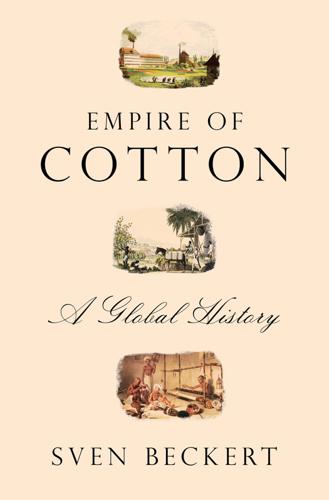
Empire of Cotton: A Global History
by
Sven Beckert
Published 2 Dec 2014
Anthony Howe, The Cotton Masters, 1830–1860 (Oxford: Clarendon Press, 1984), 41; Michael James, From Smuggling to Cotton Kings: The Greg Story (Cirencester, UK: Memoirs, 2010), 4, 8–9, 37–40; Mary B. Rose, The Gregs of Quarry Bank Mill: The Rise and Decline of a Family Firm, 1750–1914 (Cambridge: Cambridge University Press, 1986), 5. 2. Caitlin C. Rosenthal, “Slavery’s Scientific Management: Accounting for Mastery,” in Sven Beckert and Seth Rockman, eds., Slavery’s Capitalism: A New History of American Economic Development (Philadelphia: University of Pennsylvania Press, forthcoming, 2015). A good discussion of the importance of slavery to industrialization can also be found in Robin Blackburn, The American Crucible: Slavery, Emancipation and Human Rights (London: Verso, 2011), 104–7. 3.
…
Thompson (Durham, NC: Duke University Press, 1975), 217; Alan L. Olmstead and Paul W. Rhode, “Slave Productivity on Cotton Production by Gender, Age, Season, and Scale,” accessed June 11, 2012, www.iga.ucdavis.edu/Research/all-uc/conferences/spring-2010; Bailey, “The Other Side of Slavery,” 36. 34. Caitlin C. Rosenthal, “Slavery’s Scientific Management: Accounting for Mastery,” in Sven Beckert and Seth Rockman, eds., Slavery’s Capitalism: A New History of American Economic Development (Philadelphia: University of Pennsylvania Press, forthcoming, 2015); Frederick Law Olmstead, A Journey in the Back Country (Williamstown, MA: Corner House, 1972), 153–54, originally published in 1860; Bill Cooke, “The Denial of Slavery in Management Studies,” Journal of Management Studies 40 (December 2003): 1913.

Cheap: The High Cost of Discount Culture
by
Ellen Ruppel Shell
Published 2 Jul 2009
Even efficiency guru Frederick Winslow Taylor seemed to think things had gone too far when he scoffed at the mass-produced Model T Ford as “very cheaply and roughly made.” Henry Ford, who famously pioneered the moving assembly line in 1914, could only marvel at this criticism. His assembly plant in Highland Park, Michigan, dubbed the “Crystal Palace” for its abundant windows, was a model of scientific management. As did North before him, Ford broke each step of his production process into individual tasks and assigned workers to perform just one. Where before a skilled mechanic and a couple of helpers would build an automobile engine, now the engine block was pulled down the line past a hundred workers, each contributing his own little bit.

Consider the Fork: A History of How We Cook and Eat
by
Bee Wilson
Published 14 Sep 2012
A succession of architects and home economics experts tried to devise a kitchen that would reduce the strain on women’s bodies. In 1912, Christine Frederick, a writer for the Ladies’ Home Journal, laid out plans through which the kitchen itself could become a labor- and time-saving device. Frederick became interested in the ideas of “scientific management” then in vogue in business. Efficiency engineers went into factories and advised on ways the workers could do the same work in less time. Why couldn’t the same principles be applied in the kitchen? Frederick asked in her book, The New Housekeeping. After a series of “home motion” studies made using real women of different heights, Frederick came up with an ideal kitchen design, arranged such that the worker using it performed the minimal number of steps, without ever stooping.

This Will Make You Smarter: 150 New Scientific Concepts to Improve Your Thinking
by
John Brockman
Published 14 Feb 2012
In business planning and financial analysis, for example, the use of ratios and benchmarks is a first step toward scale analysis. It is certainly not a coincidence that they became common management tools at the height of Taylorism—a different Taylor, F. W. Taylor, the father of modern management theory—when “scientific management” and its derivatives made their first mark. The analogy is not without problems and would require further detailing than we have time for here—for example, on the use of dimensions to infer relations between quantities. But inventory turnover, profit margin, debt and equity ratios, labor and capital productivity, are dimensional parameters that could tell us a great deal about the basic dynamics of business economics, even without detailed market knowledge and day-to-day dynamics of individual transactions.

A Pelican Introduction Economics: A User's Guide
by
Ha-Joon Chang
Published 26 May 2014
The most important in this regard was Taylorism, named after Frederick Winslow Taylor (1856–1915), the American engineer and later management guru. Taylor argued that the production process should be divided up into the simplest possible tasks and that workers should be taught the most effective ways to perform them, established through scientific analyses of the work process. It is also known as scientific management for this reason. Combining the moving assembly line with the Taylorist principle, the mass production system was born in the early years of the twentieth century. It is often called Fordism because it was first perfected – but not ‘invented’, as the folklore goes – by Henry Ford in his Model-T car factory in 1908.
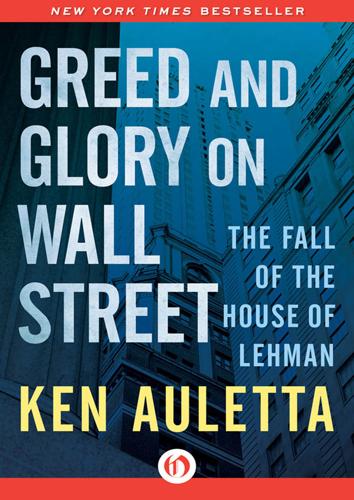
Greed and Glory on Wall Street: The Fall of the House of Lehman
by
Ken Auletta
Published 28 Sep 2015
It is a story about the life and the death of Lehman Brothers, and one of irreconcilable conflict between two men. It is a story of a poisoned partnership; of cowardice, intrigue and deceit. It is a story of greed for money, power and glory. It is a reminder that human folly and foibles—not the bottom line of profits, not business acumen, not “scientific” management or the perfect marketing plans or execution—often determine the success or failure of an organization. In its broader implications, the fall of the House of Lehman opens a window onto the forces that are reshaping Wall Street and the American economic system. *Capital is a larger number because it includes the firm’s subordinated debts, including debts to departed partners, who will be paid over a period of time.

Making It in America: The Almost Impossible Quest to Manufacture in the U.S.A. (And How It Got That Way)
by
Rachel Slade
Published 9 Jan 2024
Taylorism was first proposed by Frederick Winslow Taylor, an upper-middle-class, well-connected Philadelphian who was one of the first nineteenth-century industrialists to analyze how actual humans were working from an efficiency standpoint. He’s probably best remembered for hovering over workers with a stopwatch, timing their movements to the hundredth of a minute to determine the ideal time for any operation. His first paper, presented in June 1895, was titled “A Piece Rate System.” Taylor’s “scientific management” system codified how workers should do their jobs. He reduced complex tasks to a series of simple operations that could be assigned to individuals on an assembly line. One person, one task. Taylor wasn’t concerned about the dehumanization of factory workers; he regarded people who worked with their hands—laborers—as machines.

Palo Alto: A History of California, Capitalism, and the World
by
Malcolm Harris
Published 14 Feb 2023
The Footes also served as the models for the noble Susan and Oliver Ward in Wallace Stegner’s 1971 historical novel Angle of Repose, which turned the Mexican and Chinese workers at New Almaden into background scenery for a rugged settler romance based on Mary’s real-life letters, winning Stegner the Pulitzer Prize and delivering Foote’s settler colonialist perspective to new generations of readers. At New Almaden we can see the steps in the proletarianization dance: the alienation of indigenous and peasant populations from the land, the formal establishment of white racial rule, scientific management continually optimizing for maximum profits, looming soldiers. It all adds up to a laboring class with no legal way to reproduce their lives except to sell themselves hour by hour to an employer, on the employer’s terms.ii Anglo-American settlers found themselves correspondingly enfranchised, whether squatting on land until the government recognized their claims or getting grants legitimately by joining a militia gang and murdering Indians on the state’s behalf.
…
“When I suggested to the union officials that a union program offer the women workers free martial arts training,” she writes, “they laughed.” Roxanne Dunbar-Ortiz, Outlaw Woman: A Memoir of the War Years, 1960–1975 (City Lights, 2001), 388. v Frederick Winslow Taylor is credited with bringing scientific management to the organization of industrial production, around the turn of the twentieth century. Adler, “Time-and-Motion Regained.” vi Bob Herbert, “Workers Crushed by Toyota,” New York Times, March 15, 2010. The next year, Herbert, his attention on U.S. inequality and the plight of the working class out of step with the prevailing mood of liberal elites during the Obama years, was also out at the Times.
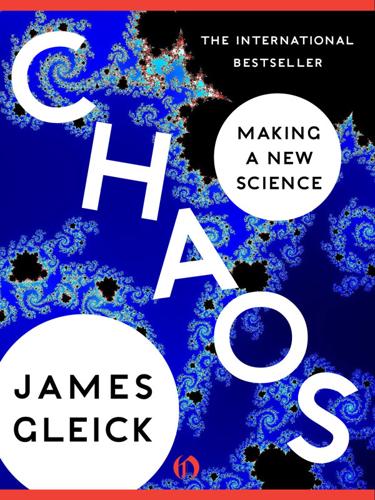
Chaos: Making a New Science
by
James Gleick
Published 18 Oct 2011
Feigenbaum was hired by Peter Carruthers, a calm, deceptively genial physicist who came from Cornell in 1973 to take over the Theoretical Division. His first act was to dismiss a half-dozen senior scientists—Los Alamos provides its staff with no equivalent of university tenure—and to replace them with some bright young researchers of his own choosing. As a scientific manager, he had strong ambition, but he knew from experience that good science cannot always be planned. “If you had set up a committee in the laboratory or in Washington and said, ‘Turbulence is really in our way, we’ve got to understand it, the lack of understanding really destroys our chance of making progress in a lot of fields,’ then, of course, you would hire a team.

Seventeen Contradictions and the End of Capitalism
by
David Harvey
Published 3 Apr 2014
There had been a long history of struggle over this. In the nineteenth century the ideologists of capital – Charles Babbage and Andrew Ure in particular – were much cited by Marx as evidence of capital’s penchant for deskilling. Braverman likewise made much of Frederick Taylor’s efforts at scientific management to disaggregate production processes to the point where a ‘trained gorilla’ would be able to undertake production tasks. The ‘science’ involved here was one in which time and motion studies were brought together with techniques of specialisation to simplify all the tasks, to maximise the efficiency and minimise the costs of production in any given sector or individual firm.
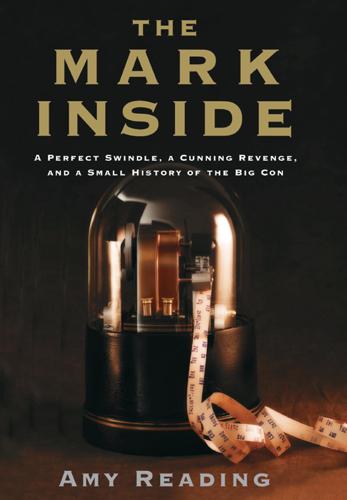
The Mark Inside: A Perfect Swindle, a Cunning Revenge, and a Small History of the Big Con
by
Amy Reading
Published 6 Mar 2012
Small, traditional family firms had merged and grown into large, articulated corporations that were distinguished by two deceptively simple innovations: they were made up of many different operating units, and they were managed by a hierarchy of salaried executives. What resulted was managerial capitalism, which prized efficiency above all else. Frederick Winslow Taylor pioneered the study and merciless exploitation of time as a managerial tool in his book The Principles of Scientific Management. By measuring the time it took to perform a given manufacturing task, a manager would set a standard for production that would then determine workers’ rates of pay, thus vastly increasing the output of each employee. Henry Ford pioneered the assembly line, vertical integration, and the $5 day, which effectively doubled the rate of pay for wage workers in 1914 and also spurred production.

What’s Your Type?
by
Merve Emre
Published 16 Aug 2018
Salespeople, branch directors, vice presidents, even clerks like his younger self—they were responsible not for making things but for managing the various, sometimes idiosyncratic demands of customers and colleagues. There was no easy or reliable way to quantify how good they were at their jobs. The man who could master the messy intimacies of workplace human relations would emerge as the next Frederick Winslow Taylor: the man revered as the father of “scientific management,” a pioneer in the study of industrial efficiency, and one of Hay’s personal heroes. Only this time, the workplace revolution he would usher in would take place not on the dusty factory floors, amidst loud, hot machines and sweating workers, but in the tidy offices that looked down on them from above.

The Theory of the Leisure Class
by
Thorstein Veblen
Published 10 Oct 2007
Edith Wharton, The House of Mirth 1906–9 Teaches at Stanford University; divorced by Ellen Rolfe in 1906; dismissed from Stanford for ‘personal affairs’. 1906 Turned down for position as head librarian at the Library of Congress; rejected by Harvard University for a faculty post; dismissed by the University of Chicago over scandals involving relations with various women. 1911–18 Teaches at the University of Missouri. 1911 Frederick Winslow Taylor, The Principles of Scientific Management 1914 Marries Anne Fessenden Bradley, divorcee with two daughters; increasing problems with ill health; publication of The Instinct of Workmanship and the State of the Industrial Arts. Start of First World War between Germany and the Allies (France and Great Britain). 1915 Publication of Imperial Germany and the Industrial Revolution.
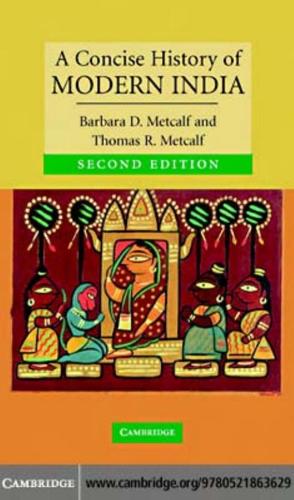
A Concise History of Modern India (Cambridge Concise Histories)
by
Barbara D. Metcalf
and
Thomas R. Metcalf
Published 27 Sep 2006
Bhil raids, as the historian Ajay Skaria has written, ‘were treated by British officials not as occasions for negotiations but rather as acts of aggression on territory on which they had exclusive sovereignty’. The tribal peoples were subsequently either confined to the forest, but deprived of control of its resources, which were now to be ‘scientifically’ managed, or encouraged to abandon their ‘wild and wandering ways’ for cultivation. One of the tasks of the Khandesh Bhil Agency was to extend loans to tribes in order to make them take up settled agriculture. In similar fashion, groups such as the Banjara carriers, whose pack animals had accompanied eighteenth-century armies, together with herders such as Gujars and Bhattis, found their grazing grounds restricted by assessment of waste lands and the creation of private property rights, while their employment opportunities declined with the disbandment of armies.
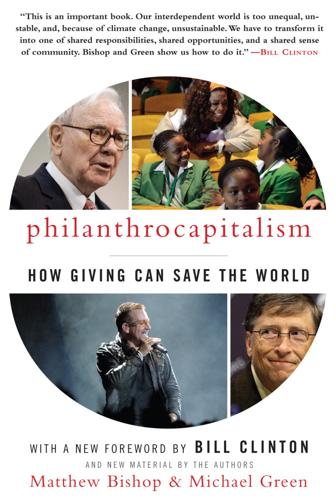
Philanthrocapitalism
by
Matthew Bishop
,
Michael Green
and
Bill Clinton
Published 29 Sep 2008
THE HIGH PRIEST OF PHILANTHROCAPITALISM Peter Drucker, who died in 2005 at the age of ninety-five, is generally acknowledged to be one of the greatest ever writers and thinkers about management; indeed, he is often credited with inventing the very discipline of management. He also deserves to be remembered as the original guru of philanthrocapitalism. Drucker wrote thirty-nine books, among them The Concept of the Corporation, The Practice of Management, The Future of Industrial Man, and Post-Capitalist Society. An advocate of “scientific management” and “management by objective,” he made famous the term “knowledge worker,” reflecting his fascination with the growing importance in the modern “knowledge economy” of people who work with their minds, rather than their hands. In his later years, the Austrian-born Drucker became increasingly focused on the nonprofit sector, which he saw as having a crucial role in building community and gluing society together, yet needing better management.
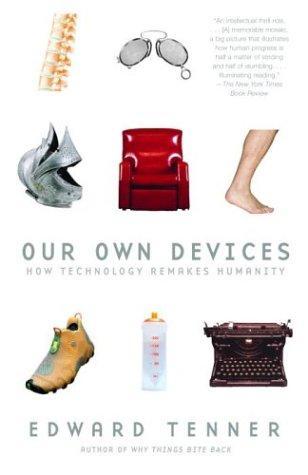
Our Own Devices: How Technology Remakes Humanity
by
Edward Tenner
Published 8 Jun 2004
Critics of the formula industry argue that even the best-managed programs did not contribute to the decline of infant mortality that commenced around 1905, but they did establish a disturbing and continuing link between medical clinics and artificial milk distribution.18 The complexity of Rotch’s “percentage method,” which turned the household into a small-scale chemical laboratory, led to its abandonment after 1915. (It had been influential mainly in the northeastern United States.) In its place, a new pattern of infant nutrition appeared: the marketing of infant formula to be administered under pediatricians’ supervision. For these rising specialists, and for family practitioners, scientifically managed feeding was a medical crusade. While some authors present the medicalization of life as the imposition of professional judgment on an intimidated laity, the reality was more complex. Many doctors as well as mothers affirmed the superiority of breast milk. But older networks of support for nursing mothers encountering difficulties were declining in the early twentieth century.

Dreaming in Code: Two Dozen Programmers, Three Years, 4,732 Bugs, and One Quest for Transcendent Software
by
Scott Rosenberg
Published 2 Jan 2006
In practice, Brooks found, nearly all software projects require only one-sixth of their time for the writing of code and fully half their schedule for testing and fixing bugs. But it was a rare project manager who actually planned to allocate developers’ time according to such a breakdown. Next, Brooks argued, the “very unit of effort used in estimating and scheduling” was “a dangerous and deceptive myth.” The “man-month” was a concept of scientific management that assumed productivity could be broken down into discrete, identical, fungible units. So if one hundred men (in those days the gender assumption simply came with the territory) could produce fifty widgets in one month, then a single widget required two man-months—and you ought to be able to produce the same number of widgets sooner by throwing more workers at the project.
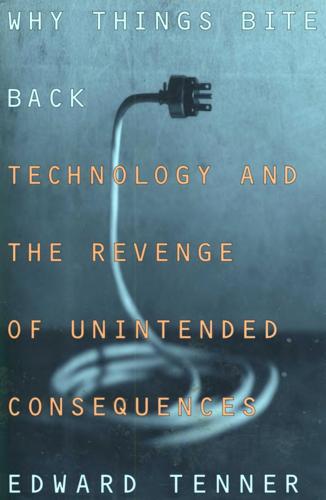
Why Things Bite Back: Technology and the Revenge of Unintended Consequences
by
Edward Tenner
Published 1 Sep 1997
The era's most celebrated social critics faulted not technology but entrenched finance and management; Thorstein Veblen urged a national industrial "network" of mechanical processes, overseen not by industrialists and bankers but by councils of engineers.26 The Apex of Optimism Americans from 188o to 1929 were probably more optimistic about the electrical, mechanical, and chemical transformation of society than any other people has ever been. Neither the sinking of the Titanic in 1912 nor the devastation of the First World War could destroy their confidence. Just as Veblen advocated rule by "soviets" of technical experts, Lenin and Stalin extolled American scientific management, industrial complexes, and electric grids. And there was reason for this prestige. Even the pioneer of artificial intelligence John McCarthy, a firm believer in the transforming power of the computer, pointed out in 1983 that television and computers had until then prompted only modest changes in people's lives compared with the lighting, transportation, and communications revolutions of the 1890-1920 era.27 Even the era's satires of technology were affectionate.

The Long History of the Future: Why Tomorrow's Technology Still Isn't Here
by
Nicole Kobie
Published 3 Jul 2024
Such traffic systems were largely deployed the same way regardless of the country or city. This wasn’t for regulatory reasons or anything to do with the technology itself, but because of the sort of people setting up the systems. Hire a professional traffic engineer to fix your congestion, and they do the same thing over and over, often with the aim of applying ideas like scientific management to bring order to chaos. And before such consistency, there was chaos: in New York, Fifth Avenue used orange to indicate ‘go’, causing confusion, as green was the default on all other roads; Philadelphia tried to use a single white light to manage one busy road and all its crossings; and Paris used only red lights.

Dark Laboratory: On Columbus, the Caribbean, and the Origins of the Climate Crisis
by
Tao Leigh. Goffe
Published 14 Mar 2025
BACK TO NOTE REFERENCE 10 See Amrita Pande, Wombs in Labor: Transnational Commercial Surrogacy in India (Columbia University Press, 2014). BACK TO NOTE REFERENCE 11 Espeut, “Timbers of Jamaica,” 15. BACK TO NOTE REFERENCE 12 Caitlin Rosenthal, “Slavery’s Scientific Management: Masters and Managers,” in Slavery’s Capitalism: A New History of American Economic Development, eds. Sven Bekert and Seth Rockman (University of Pennsylvania Press, 2016). BACK TO NOTE REFERENCE 13 Paul H. Baldwin, Charles W. Schwartz, and Elizabeth Reeder Schwartz, “Life History and Economic Status of the Mongoose in Hawaii,” Journal of Mammology 33, no. 3 (August 1952): 335–56.

Life Inc.: How the World Became a Corporation and How to Take It Back
by
Douglas Rushkoff
Published 1 Jun 2009
Putting profits over patriotism, GM resisted requests from FDR to step up military production and preparedness in their plants at home. American corporatists also saw in fascism a counterbalance to FDR’s strong-handed tactics and aggressive social-welfare programs. Henry Ford and other corporate chiefs preferred the top-down, “scientific management” of labor echoed by at least some of the fascist policies of Benito Mussolini. Henry Luce, a cofounder of Time magazine, became something of a spokesperson for fascism. He put Mussolini on the cover five times, and traveled the country arguing that corporations, not government, were really in charge of America.
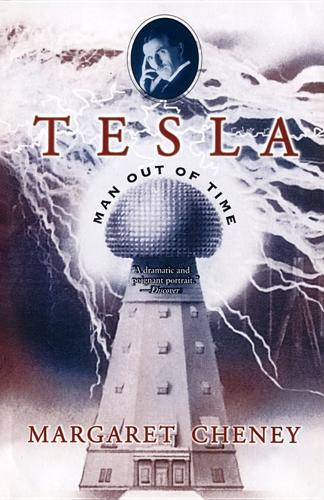
Tesla: Man Out of Time
by
Margaret Cheney
Published 1 Jan 1981
Sounding rather more like the real Tesla, the putative Tesla goes on to foresee a world in which water pollution would be unthinkable, in which the production of wheat products would be adequate to feed the starving millions of India and China, in which there would be systematic reforestation and the scientific management of natural resources, in which there would at last be an end to devastating droughts, forest fires, and floods. And of course, the long-distance wireless transmission of electricity from water power would end the need to burn other fuels. In the twenty-first century civilized nations would spend the greater part of their budgets on education, the least on war.

Smart Cities: Big Data, Civic Hackers, and the Quest for a New Utopia
by
Anthony M. Townsend
Published 29 Sep 2013
Data Junkies Mayor Rudolph “Rudy” Giuliani tamed New York City, a metropolis once thought all but ungovernable, through the blunt force of law. His successor, Michael Bloomberg, whose business empire was built on the delivery of financial data to traders around the world, was a technocrat who rules through scientific management. “If you can’t measure it, you can’t manage it,” he was known to say. In the spring of 2010, soon after beginning his third term in office, Bloomberg enlisted the help of Stephen Goldsmith to ensure this bean-counting legacy. The former mayor of Indianapolis, Goldsmith took over as deputy mayor for operations, a position with broad authority over the city’s police, fire, sanitation, and buildings departments.

Year 501
by
Noam Chomsky
Published 19 Jan 2016
“The lockout crushed the largest trade union in America, the AAISW, and it wrecked the lives of its most devoted members,” Paul Krause writes in his comprehensive history. Unionism was not revived in Homestead for 45 years. The impact was far broader. Destruction of unions was only one aspect of the general project of disciplining labor. Workers were to be deskilled, turned into pliable tools under the control of “scientific management.” Management was particularly incensed that “the men ran the mill and the foreman had little authority” in Homestead, one official later said. As discussed earlier, it has been plausibly argued that the current malaise of US industry can be traced in part to the success of the project of making working people “as stupid and ignorant as it is possible for a human creature to be,” in defiance of Adam Smith’s warning that government must “take pains to prevent” this fate for the “labouring poor” as the “invisible hand” does its grim work (see pp. 25, 145).

Water: A Biography
by
Giulio Boccaletti
Published 13 Sep 2021
The German war effort, in particular, fascinated Lenin. It had shown how free-market capitalism could evolve into a capitalistic state monopoly to overcome bourgeois administration. Wartime Germany was the archetype of the socialized economy he had in mind, a command economy combined with extreme Taylorism, a theory of scientific management focused on economic efficiency. Lenin believed a break with history could only be delivered through centralized scientific and technical planning. Those who did not, or could not, understand should be educated to accept it. It was the birth of revolutionary vanguardism and of the single-party state.

Construction Project Management
by
S. Keoki Sears
Published 7 Feb 2015
Standard costs, time‐and‐motion studies, process flowcharts, and line‐of‐balance techniques—all traditional management devices used by the manufacturing industries—have limited applicability to general construction. Historically, construction project management has been a rudimentary and largely intuitive process, aided by useful but inadequate adaptations from manufacturing, the bar chart being a prime example (see Section 5.29). Over the years, however, new scientific management concepts have been developed and applied. Application of these concepts to construction has resulted in the development of techniques for the control of construction cost, time, resources, and project finance, which recognize construction as a series of repetitive processes that can be managed and improved.
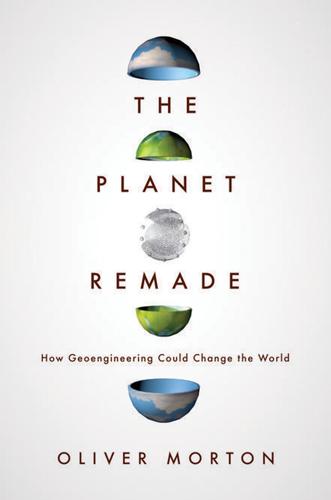
The Planet Remade: How Geoengineering Could Change the World
by
Oliver Morton
Published 26 Sep 2015
In many of those applications it has proved, as a goal, to be flawed, unattainable or both. In some it has been very damaging. Leaving aside attempts to control the genetic endowment of individuals or the racial purity of nations, talk of ‘human engineering’ of the sort that was heard among scientific managers and biologists alike in the early twentieth century is hard to square with respect for human autonomy. There are better things to take than control. Foremost among those, to me, is care. In an essay on Mary Shelley’s Frankenstein – a novel written in the darkling shadow of Tambora and subtitled, we should remember, ‘The Modern Prometheus’ – the French thinker Bruno Latour argues that Victor Frankenstein’s crime is not that he brought forth a strange ungodly creature, but that he abandoned it when he should have cared for it; that he should have loved his monster.

The Great Transformation: The Political and Economic Origins of Our Time
by
Karl Polanyi
Published 27 Mar 2001
.‡ Bentham was strongly opposed to Pitt’s Poor Law Bill, which would have amounted to an enactment of Speenhamland, as it permitted both outdoor relief and aid-in-wages. Yet Bentham, unlike his pupils, was at this time no rigid economic liberal, nor was he a democrat. His Industry-Houses were a nightmare of minute utilitarian administration enforced by all the chicanery of scientific management. He maintained that there always would be a need for them as the community could not quite disinterest itself in the fate of the indigent. Bentham believed that poverty was part of plenty. “In the highest stage of social prosperity,” he said, “the great mass of the citizens will most probably possess few other resources than their daily labour, and consequently will always be near to indigence.…” Hence he recommended that “a regular contribution should be established for the wants of indigence,” though thereby “in theory want is decreased and thus industry hit,” as he regretfully added, since from the utilitarian point of view the task of the government was to increase want in order to make the physical sanction of hunger effective.* The acceptance of near-indigency of the mass of the citizens as the price to be paid for the highest stage of prosperity was accompanied by very different human attitudes.
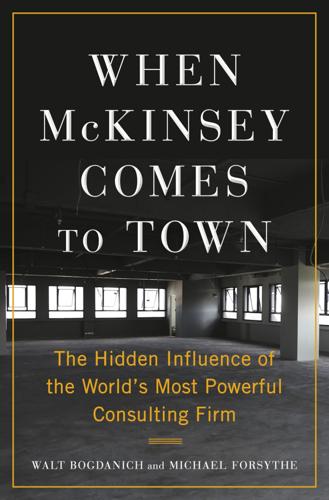
When McKinsey Comes to Town: The Hidden Influence of the World's Most Powerful Consulting Firm
by
Walt Bogdanich
and
Michael Forsythe
Published 3 Oct 2022
By portraying itself as a company with a heart, not just a lust for profits, McKinsey appeals to younger, idealistic students concerned about issues like global warming, inequality, and racial justice. It is a potent sales pitch and a strong message to the future wolves of Wall Street that they need not apply. But the firm also offers something just as intoxicating: influence. For the past century, McKinsey has methodically built its marquee consultancy by selling its philosophy of scientific management to the world’s best-known blue-chip companies. At one time or another most Fortune 500 companies have paid McKinsey for advice. So have more than a hundred government agencies around the world. Because the firm won’t identify clients or disclose the advice it gives, Americans and, increasingly, people the world over are largely unaware of the profound influence McKinsey exerts over their lives, from the cost and quality of their medical care to the jobs that pay for their children’s education.
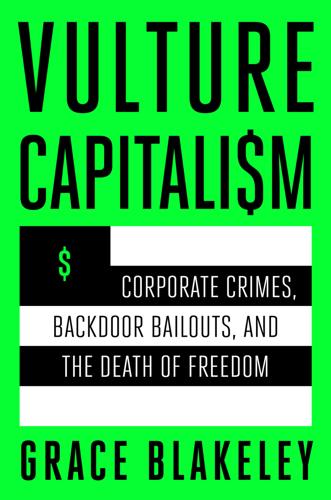
Vulture Capitalism: Corporate Crimes, Backdoor Bailouts, and the Death of Freedom
by
Grace Blakeley
Published 11 Mar 2024
He was an active member of various socialist groups during this time and was eventually fired from one of his jobs “at the instigation of the FBI.”136 Over the course of the 1950s, Braverman began working on what would eventually become Labor and Monopoly Capital, his seminal study of work under monopoly capitalism. He argued that Taylorism—a theory of scientific management that laid out the most effective ways to transform the worker into an “appendage of the machine”—was alive and well in modern American capitalism, and that the workforce was, if anything, more alienated than ever. Braverman observed that with the growth of megacorporations, workers had become tiny cogs in a giant machine.137 The labor process has become so specialized that the worker no longer has any control over their own labor.

The People: The Rise and Fall of the Working Class, 1910-2010
by
Selina Todd
Published 9 Apr 2014
The new liberties to which MacNeice pointed – the money and time to spend on films and chocolates – were hard-won by the workers themselves. Among them were the young textile workers at Leicester’s Wolsey plant, the factory that Priestley visited. In 1931, two years before his visit, they had walked out en masse. The reason they gave was their firm’s proposed introduction of ‘scientific management’ – the Bedaux system. In 1931 the Wolsey workers were engaged in one of those industries that economic recovery relied upon – the production of hosiery. Most of those who deserted their benches were young women, many of them paid by the piece. They walked out, so they told the local press, because they feared that the introduction of the Bedaux system would reduce their earnings.

The Zero Marginal Cost Society: The Internet of Things, the Collaborative Commons, and the Eclipse of Capitalism
by
Jeremy Rifkin
Published 31 Mar 2014
New York: Anchor Books, 1964. Greco Jr., Thomas H. Money: Understanding and Creating Alternatives to Legal Tender. White River Junction, VT: Chelsea Green, 2001. Gupta, Shanti. The Economic Philosophy of Mahatma Gandhi. New Delhi: Concept Publishing Company, 1994. Haber, Samuel. Efficiency and Uplift: Scientific Management in the Progressive Era 1890–1920. Chicago: University of Chicago Press, 1964. Habermas, Jurgen. The Structural Transformation of the Public Sphere. Cambridge, MA: MIT Press, 1991. Haidt, Jonathan. The Happiness Hypothesis. New York: Basic Books, 2006. Hannesson, Rognvaldur. The Privatization of the Oceans.

Global Spin: The Corporate Assault on Environmentalism
by
Sharon Beder
Published 1 Jan 1997
And one day it hit me. . .92 On that day Arnold noticed a saying on a calendar which said: “Conservation is the wise use of resources.” The saying came from Gifford Pinchot, an early twentieth century conservationist and head of the US Forest Service. Gifford argued for the ‘wise use’ of natural resources and promoted principles of multiple use, scientific management and sustained yield. For him natural resources, like time and money, were limited and therefore should be used wisely. This was in contrast to his friend the preservationist John Muir, who founded the Sierra Club. Muir didn’t view nature as something to be used, rather held nature as sacred, having inherent value outside of its commercial potential.

More: The 10,000-Year Rise of the World Economy
by
Philip Coggan
Published 6 Feb 2020
The raw material had to be brought in at one end (or on one floor) of the factory and the finished product taken out at another. The workers had to be trained and divided according to their specialised tasks. As industry developed, these tasks became too complex for the original founders (or their families) to oversee. Frederick Winslow Taylor was a consultant who pioneered “scientific” management. He spent 26 years watching people at work, particularly in the steel industry, armed with a stopwatch and a notepad, and observing what they did. That led him to break down tasks into a number of specific actions, train workers to take such actions, and reward them for meeting their targets.

The Cigarette: A Political History
by
Sarah Milov
Published 1 Oct 2019
Nonsmoking activists did not so much convince employers to take steps to eliminate smoking in the name of nonsmokers’ rights as they convinced them to eliminate smoking employees, and the liabilities they created, in the name of the corporate ledger. Shimp’s efforts were part of a swelling wave of management consulting that analyzed work life and work efficiency from an expanding range of perspectives.51 “The world’s youngest profession,” consulting had its roots in Frederick Taylor’s studies of scientific management. But during the 1980s, consulting took up more space in the business ecology—so much space, in fact, that Forbes condemned the growth of the consulting profession as a symptom of national malaise.52 In an influential 1983 Harvard Business Review article, sociologist Robert Jackall observed that for all the corporatespeak about “quality of work life” and “feedback sessions,” “the productive return is the only rationale that carries weight within the corporate hierarchy.”53 Donna Shimp grasped this intuitively, writing to Luther Terry in 1981, “is there any better way to interest management in restricting smoking than through the bottom line?”
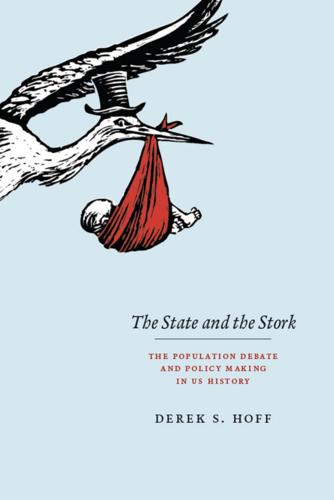
The State and the Stork: The Population Debate and Policy Making in US History
by
Derek S. Hoff
Published 30 May 2012
Progressive intellectuals such as Walter Weyl, one of the founders of the New Republic, were captivated by the metaphor of the closing of the frontier and utilized Malthusian arguments to call for new frontiers of social democracy.80 Further, postfrontier concerns with the possible exhaustion of America’s natural resources animated the turn-of-the-century conservation movement. Yet, progressive conservation was driven not by Malthusianism but by a desire to scientifically manage natural resources in the name of economic efficiency.81 Samuel Hays notes in his classic study of the progressives that although conservationists “expressed some fear that diminishing resources would create critical shortages in the future . . . they were not Malthusian prophets of despair and gloom.”82 the birth of the modern population debate 57 In addition, even though poverty had been linked to demography since Malthus, progressives did not assume that overpopulation played much of a role in the ills of the city.
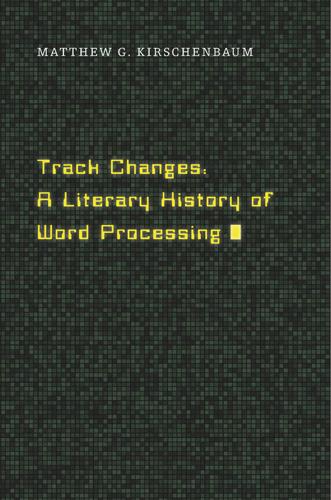
Track Changes
by
Matthew G. Kirschenbaum
Published 1 May 2016
The unnamed office that Ackerman worked in when the poem was written was, we may surmise, a product of what was once widely known as the “office of the future”—the name the business administration literature of the late 1970s and early 1980s had given to the nexus of information technology, scientific management theory, and labor practices that was supposed to maximize workplace productivity in the face of the ever-increasing amounts of data, text, and information swirling through a modern organization. And word processing was envisioned as its cornerstone. “The electronic text exists independently of space and time,” wrote Shoshana Zuboff of just such an office as Ackerman’s (and at about the same time).

Coders: The Making of a New Tribe and the Remaking of the World
by
Clive Thompson
Published 26 Mar 2019
“simultaneously wholesome and insane”: Jennifer Brostrom, “The Time-management Gospel,” in Commodify Your Dissent: Salvos from the Baffler, eds. Thomas Frank and Matt Weiland (New York: W. W. Norton, 2011), 116. Charles Hermany from 1904: “Address of President Charles Hermany,” Transactions of the American Society of Civil Engineers 53 (1904): 464. to ensure maximum output: Frederick Winslow Taylor, The Principles of Scientific Management (New York: Harper & Brothers, 1919), 5; David A. Hounshell, “The Same Old Principles in the New Manufacturing,” Harvard Business Review (November 1988), accessed online August 18, 2018, https://hbr.org/1988/11/the-same-old-principles-in-the-new-manufacturing. bricklaying to vest buttoning: Jill Lepore, “Not So Fast,” New Yorker, October 12, 2009, accessed August 18, 2018, https://www.newyorker.com/magazine/2009/10/12/not-so-fast; Dennis McLellan, “Ernestine Carey, 98; Wrote a Comical Look at Her Big Family in ‘Cheaper by the Dozen,’” Los Angeles Times, November 7, 2006, accessed August 18, 2018, http://articles.latimes.com/2006/nov/07/local/me-carey7.

Blood in the Machine: The Origins of the Rebellion Against Big Tech
by
Brian Merchant
Published 25 Sep 2023
Like Jeff Bezos A line can be drawn back from Jeff Bezos and Amazon, whose warehouses are laboratories for advancing new technologies to discipline workers for maximum productivity; through the big auto manufacturers’ automated car plants of the 1960s, which demanded workers become freshly subservient to heavy machinery; to the scientific management theories of Frederick Winslow Taylor in the 1910s, when he timed workers with a stopwatch to ensure they were meeting productivity standards; to the textile factories of the Industrial Revolution in the 1800s, and to Arkwright, where the model saw its most successful case study. 11. compared to the previous engine The Newcomen was the previously dominant steam engine, but was too inefficient to be widely affordable. 12.

The Rise and Fall of the Neoliberal Order: America and the World in the Free Market Era
by
Gary Gerstle
Published 14 Oct 2022
The American capitalist machine seemed to be whirring to perfection, without a breakdown or flaw. The United States supplanted Great Britain as the international engine of manufacturing and finance. The industrial world was awed by American production techniques developed by the likes of Henry Ford and by the disciples of Frederick Winslow Taylor and the principles of scientific management they were deploying. America was turning out cars and consumer durables at an astonishing rate. The abundance of goods and their falling prices appeared so great that Americans, led by Hoover, began dreaming about lifting every American out of poverty. Then the terrible Great Depression struck.29 As production plummeted in the United States and the rest of the western capitalist world, it soared in the Soviet Union.
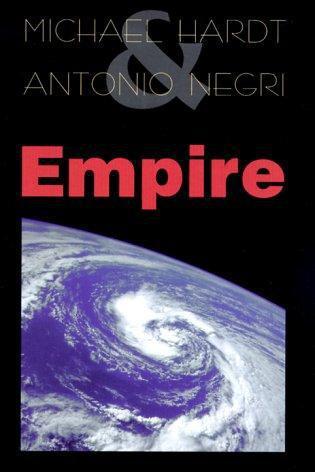
Empire
by
Michael Hardt
and
Antonio Negri
Published 9 Mar 2000
Consider, for example, a field that might at first sight seem an unlikely candidate for such an operation: public administration, that is, the study ofbureaucracies. The modernist paradigm ofresearch that dominates the field is defined by a ‘‘prescription ofneutral public administration ascribed to Wilson (separation ofpolitics from administration), Taylor (scientific management), and Weber (hierarchical command).’’ Charles Fox and Hugh Miller, Postmodern Public Administration: Toward Discourse (Thousand Oaks, Calif.: Sage, 1995), p. 3. Scholars who are convinced that this paradigm is outdated and leads to undemocratic governmental practice can use postmodernist thinking as a weapon to transform the field.
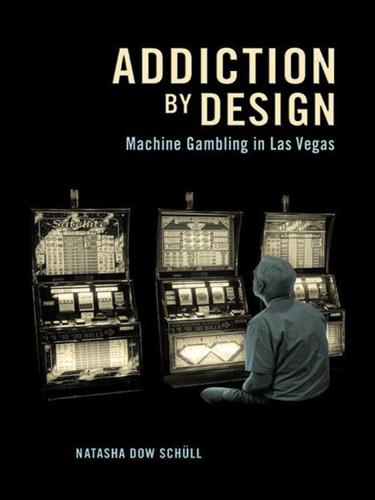
Addiction by Design: Machine Gambling in Las Vegas
by
Natasha Dow Schüll
Published 15 Jan 2012
Human-Machine Reconfigurations: Plans and Situated Actions, 2nd exp. ed. New York: Cambridge University Press. “Suicide Rates by State.” 1997. Associated Press, August 28. Taber, Julian I. 2001. In the Shadow of Chance: The Pathological Gambler. Reno: University of Nevada Press. Taylor, Frederick W. 1967 [1911]. The Principles of Scientific Management. New York: W. W. Norton. Taylor, T. L. 2006. Play Between Worlds: Exploring Online Game Culture. Cambridge, MA: MIT Press. Terranova, Tiziana. 2000. “Free Labor: Producing Culture for the Digital Economy.” Social Text 18 (8): 33–58. Thomas, Anna C., G. B. Sullivan, and F.C.L. Allen. 2009.
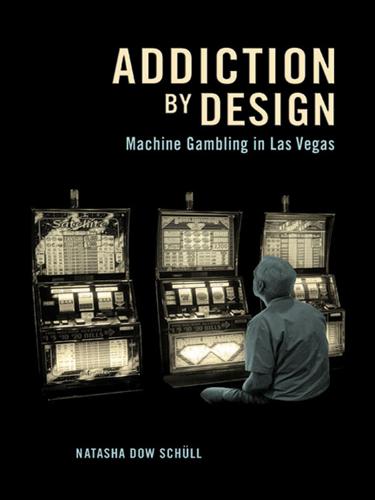
Addiction by Design: Machine Gambling in Las Vegas
by
Natasha Dow Schüll
Published 19 Aug 2012
Human-Machine Reconfigurations: Plans and Situated Actions, 2nd exp. ed. New York: Cambridge University Press. “Suicide Rates by State.” 1997. Associated Press, August 28. Taber, Julian I. 2001. In the Shadow of Chance: The Pathological Gambler. Reno: University of Nevada Press. Taylor, Frederick W. 1967 [1911]. The Principles of Scientific Management. New York: W. W. Norton. Taylor, T. L. 2006. Play Between Worlds: Exploring Online Game Culture. Cambridge, MA: MIT Press. Terranova, Tiziana. 2000. “Free Labor: Producing Culture for the Digital Economy.” Social Text 18 (8): 33–58. Thomas, Anna C., G. B. Sullivan, and F.C.L. Allen. 2009.

The Practice of Cloud System Administration: DevOps and SRE Practices for Web Services, Volume 2
by
Thomas A. Limoncelli
,
Strata R. Chalup
and
Christina J. Hogan
Published 27 Aug 2014
High-ranking teams should be encouraged to share their best practices so others may adopt them. The goal is to make improvements and measure their effectiveness by seeing if the assessment changes. The goal should not be to improve the assessment or to achieve an average assessment across a set of services. Using assessments to drive decisions in IT brings us closer to a system of scientific management for system administration and moves us away from “gut feelings” and intuition. The importance of the first three levels of the CMM is that they take us away from ad hoc processes and individual heroics and create repeatable processes that are more efficient and of higher quality. Exercises 1.

This Is Service Design Doing: Applying Service Design Thinking in the Real World: A Practitioners' Handbook
by
Marc Stickdorn
,
Markus Edgar Hormess
,
Adam Lawrence
and
Jakob Schneider
Published 12 Jan 2018
In their book Marketing 3.0, Philip Kotler et al. describe the development of marketing from being product-driven (1.0) to customer-centric (2.0) to human-centric (3.0, and later also 4.0 to include every aspect of the customer’s journey). This includes a shift in product management from “The Four Ps (product, price, place, promotion)” to “Cocreation.” (source Kotler, P., Kartajaya, H., & Setiawan, I. (2010). Marketing 3.0: From Products to Customers to the Human Spirit. John Wiley & Sons, p. 31). 16 Taylorism, or scientific management, is a production efficiency methodology from the early 20th century. It was based on dividing work into the smallest meaningful subdivisions, each of which could be measured and optimized to ensure the perfect flow of actions by the worker. 17 Total quality management is a business methodology most famous in the 1980s and 1990s that attempted to continuously improve the quality of products and services using feedback loops and the systematic analysis of work processes. 18 Carroll, D. (2012).
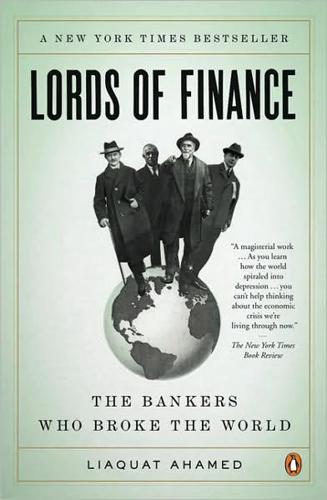
Lords of Finance: The Bankers Who Broke the World
by
Liaquat Ahamed
Published 22 Jan 2009
On Tuesday, October 15, economist and market pundit Irving Fisher, in a speech that would go down in history for its spectacularly bad timing, threw his normal caution to the winds, with the declaration, “Stocks have reached what looks like a permanently high plateau.” Among the reasons he would later cite for this optimistic forecast were the “increased prosperity from less unstable money, new mergers, new scientific management, new inventions” and finally, Fisher being Fisher, he could not resist adding, on account of the benefits of “prohibition.” The market began to sag once again—dropping 20 points the next week and another 18 points in the first three days of the week after. It was by now back to 305, having lost about 20 percent of its value since the September peak.
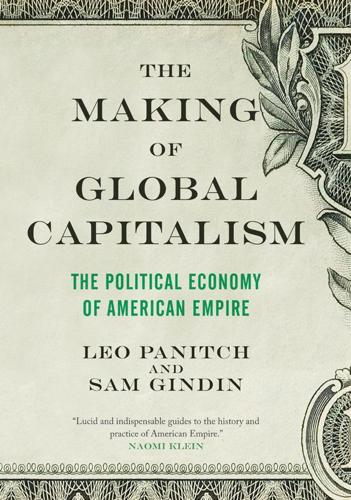
The Making of Global Capitalism
by
Leo Panitch
and
Sam Gindin
Published 8 Oct 2012
As Perry Anderson goes on to say, the “unencumbered property rights, untrammeled litigation, the invention of the corporation” that distinguished the US in the nineteenth century was part and parcel of the US’s remarkable economic dynamism in the twentieth, leading to “what Polanyi most feared, a juridical system disembedding the market as far as possible from ties of custom, tradition or solidarity, whose very abstraction from them later proved—American firms like American films—exportable and reproducible across the world, in a way that no other competitor could quite match.” Combined here were, on the one hand, the invention in the US of the modern corporate form, “scientific management” of the labor process, and assembly-line mass production; and on the other, Hollywood-style “narrative and visual schemas stripped to their most abstract,” thereby not only appealing to and aggregating successive waves of immigrants, but ensuring that US consumption patterns were widely emulated abroad.
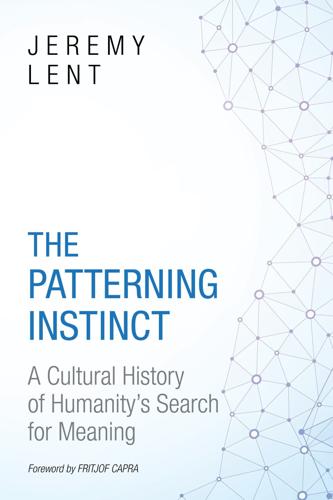
The Patterning Instinct: A Cultural History of Humanity's Search for Meaning
by
Jeremy Lent
Published 22 May 2017
One enormously popular expression of mind-cure values was The Wonderful Wizard of Oz, published in 1900, which implicitly affirmed that, through an effort of will, people could change their lives to experience joy, abundance, and happiness.8 Another pervasive effect of nineteenth-century industrialization was the systematic measurement and processing of human activity. This reached a new level of efficiency with the “scientific management” of Frederick Taylor, who introduced “time studies” in factories, in which consultants would follow workers around with stopwatches, timing every activity, and suggest improvements to every aspect of workflow down to such details as how coal or iron ore should be shoveled. Taylor's vision reached its apogee in the factories of Henry Ford, who introduced automated assembly-line production of his vehicles in 1912, leading to enormous productivity gains across the entire industrial landscape.
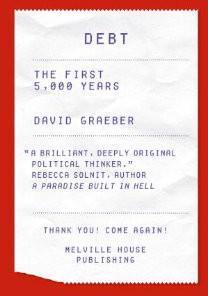
Debt: The First 5,000 Years
by
David Graeber
Published 1 Jan 2010
Eventually, many began to give up and marry early—to the great scandal of the moralists, who insisted that the new proletariat were starting families they could not possibly support.100 There is, and has always been, a curious affinity between wage labor and slavery. This is not just because it was slaves on Caribbean sugar plantations who supplied the quick-energy products that powered much of early wage laborers’ work; not just because most of the scientific management techniques applied in factories in the industrial revolution can be traced back to those sugar plantations; but also because both the relation between master and slave, and between employer and employee, are in principle impersonal: whether you’ve been sold or you’re simply rented yourself out, the moment money changes hands, who you are is supposed to be unimportant; all that’s important is that you are capable of understanding orders and doing what you’re told.101 This is one reason, perhaps, that in principle, there was always a feeling that both the buying of slaves and the hiring of laborers should really not be on credit, but should employ cash.

The Wealth of Networks: How Social Production Transforms Markets and Freedom
by
Yochai Benkler
Published 14 May 2006
No cultural image better captures the way that mass industrial production reduced workers to cogs and consumers to receptacles than the one-dimensional curves typical of welfare economics--those that render human beings as mere production and demand functions. Their cultural, if [pg 138] not intellectual, roots are in Fredrick Taylor's Theory of Scientific Management: the idea of abstracting and defining all motions and actions of employees in the production process so that all the knowledge was in the system, while the employees were barely more than its replaceable parts. Taylorism, ironically, was a vast improvement over the depredations of the first industrial age, with its sweatshops and child labor.

The Marshall Plan: Dawn of the Cold War
by
Benn Steil
Published 13 Feb 2018
British tonnage had topped out at 1,463 in August, and would fall to 1,259 in September and 1,030 in October as mechanical and logistical problems emerged.102 But on the American side, even Marshall could not yet see that the Allies were on the verge of a breakthrough. It began quietly in late July, with the appointment of a new airlift commander in the Wiesbaden headquarters. MAJOR GENERAL WILLIAM TUNNER WAS not your typical air commander. He did not share his colleagues’ fixation on bombing. A devotee of Frederick Taylor’s theories of scientific management, Tunner took an odd interest in the ability of planes to move people and equipment long distances at great speed. He brought in motion-study engineers to analyze the airlift in theory and practice, and ordered what seemed to all involved baffling changes in practice and procedure. They paid off: average daily deliveries rose from 2,226 tons in July to just over 3,800 in August, within reach of Clay’s target of 4,500.103 That month the French also added a new airport in their zone, at Tegel.

Seeking SRE: Conversations About Running Production Systems at Scale
by
David N. Blank-Edelman
Published 16 Sep 2018
Those are different statements, and I expect that canarying could solve a very wide array of problems that it doesn’t solve today, mostly because we put people on call rather than go to the time and expense of setting up a canarying infrastructure. 18 In this context, “ground” often equals POSIX libc, although it shouldn’t. 19 See, for example, this devopsdays talk by Hannah Foxwell. 20 Poorly in comparison to what, is a valid question: here, I mean compared with a notional resolution that involves no mistakes or blind alleys, but does involve the usual delays in detection, starting analysis, and so on. 21 See, for example, Ray Panko’s site for a comparison table. 22 More shocking and yet also completely believable is a line item stating that failing to act correctly within 1 minute of an emergency situation developing has a probability of 90%; see this article for more. 23 Ashton Anderson, Jon Kleinberg, Sendhil Mullainathan, “Assessing Human Error Against a Benchmark of Perfection”. 24 See this paper on on-call fatigue. 25 Mark O’Connell, “Why We Sleep by Matthew Walker review – how more sleep can save your life”. 26 See, for example, Emily Gorcenski’s talk at SRECon Europe 2017. 27 In contrast with medicine, as discussed earlier. 28 Cindy Sridharan, “On-call doesn’t have to suck”, Medium.com. 29 Frederick Taylor was a scientific management theorist who introduced the all-too-successful idea of dehumanizing people in work situations by closely managing metrics. 30 So they keep saying, anyway. 31 This is not as ridiculous as you might think; for example, AWS uses formal methods. Chapter 31. Elegy for Complex Systems Mikey Dickerson, Layer Aleph (formerly United States Digital Service) March 19, 2018: Farmhouse Motel, Paso Robles, California.

The Half Has Never Been Told: Slavery and the Making of American Capitalism
by
Edward E. Baptist
Published 24 Oct 2016
Forced labor that is slavery in everything but name remained tremendously important to the world economy well into the twenty-first century. And the lessons that enslavers learned about turning the left hand to the service of the right, forcing ordinary people to reveal their secrets so that those secrets could be commodified, played out in unsteady echoes that we have called by many names (scientific management, the stretch-out, management studies) and heard in many places. Though these were not slavery, they are one more way in which the human world still suffers without knowing it from the crimes done to Rachel and William and Charles Ball and Lucy Thurston; mourns for them unknowing, even as we also live on the gains that were stolen from them.13 Nor is it obvious that slavery’s expanders would have been politically defeated, outnumbered, or boxed in.
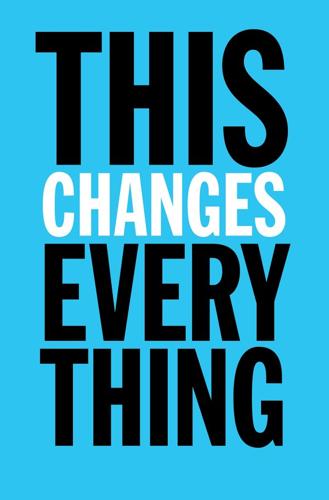
This Changes Everything: Capitalism vs. The Climate
by
Naomi Klein
Published 15 Sep 2014
The reliance was certainly not limited to the Southern states: cutting-edge historical research has been exploding long-held perceptions that the North and South of the United States had distinct and irreconcilable economies in this period. In fact, Northern industrialists and Wall Street were far more dependent on and connected to slavery than has often been assumed, and even some crucial innovations in scientific management and accounting can be traced to the American plantation economy. ACKNOWLEDGMENTS * * * One of the best decisions of my professional life was hiring Rajiv Sicora as lead researcher on this project in early 2010. Far more than a top-notch researcher, Rajiv has been a true intellectual companion on the long journey that produced this book.

Green Mars
by
Kim Stanley Robinson
Published 23 Oct 1993
Human affairs”— Sax paused to eat one of the rolls just brought to their table; he was famished—”you know, they ought to be run according to principles of systems ecology.” Desmond laughed out loud, hastily grabbing up a napkin to clean off his chin. He laughed so hard that people at other tables looked over at them, worrying Sax somewhat. “What a concept!” he cried, and started to laugh again. “Ah ha ha! Oh, my Saxifrage! Scientific management, eh?” “Well, why not?” Sax said mulishly. “I mean, the principles governing the behavior of the dominant species in a stable ecosystem are fairly straightforward, as I recall. I’ll bet a council of ecologists could construct a program that would result in a stable benign society!” “If only you ran the world!”
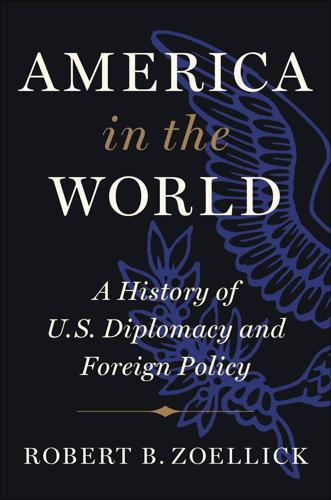
America in the World: A History of U.S. Diplomacy and Foreign Policy
by
Robert B. Zoellick
Published 3 Aug 2020
The second oversight was of Major General William Tunner, who became the commander of the airlift in late July. He was an unusual airman. In an era of bomber and fighter pilots, Tunner was devoted to mastering transport and logistics. He was the epitome of the pragmatic American problem solver. Based on time-and-motion studies of scientific management, the general changed procedures. He boosted daily deliveries from 2,226 tons in July to more than 3,800 tons in August and almost 4,600 tons in September. Planes were landing every four minutes and averaged three flights a day. Ground crews serviced the planes around the clock. The French added a new Berlin airport at Tegel to expand landing capacity.146 Truman had to decide whether to double down his bet on Tunner, Clay, and the Berliners.

The Atlantic and Its Enemies: A History of the Cold War
by
Norman Stone
Published 15 Feb 2010
Taylor’s claim was to ‘mathematize’ everything, and though himself a failure as a manager of men, he was the ancestor of the management consultant, and even the originator of a notion that management could be learned from books as distinct from experience. He and later followers referred to their creed as ‘Scientific Management’, and this suited some modern production methods, by ‘flow’, i.e. of workers each, on a slowly moving belt, assembling one part and moving it on to another worker who would add something to it. To manage men doing this mechanical stuff was not at all easy: in fact Taylor himself once remarked that he preferred a ‘little Dutchman’ for a pig-iron job because what it needed was ‘the mental make-up’ of an ‘ox’.
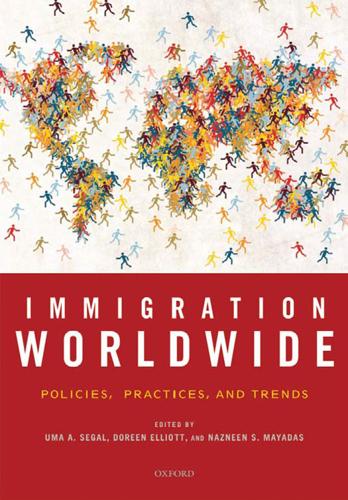
Immigration worldwide: policies, practices, and trends
by
Uma Anand Segal
,
Doreen Elliott
and
Nazneen S. Mayadas
Published 19 Jan 2010
Labor Force and Poverty Rates—Native & Foreign Born (2007) Subject Total Native Foreign Born Total population Population 16 years and over In labor force Not in labor force 301,621,159 236,416,572 64.8% 35.2% 263,561,465 200,722,532 64.4% 35.6% 38,059,694 35,694,040 66.9% 33.1% Civilian employed population 16 years and over CLASS OF WORKER Private wage & salary workers Government workers Self-employed workers in own business Unpaid family workers 142,588,118 120,050,146 22,537,972 78.6% 14.5% 6.7% 0.2% 77.6% 15.6% 6.6% 0.2% 84.0% 8.3% 7.5% 0.3% 34.6% 16.7% 25.6% 0.7% 9.7% 12.7% 36.0% 15.6% 27.0% 0.5% 9.0% 12.0% 27.2% 23.1% 18.0% 2.0% 13.4% 16.4% 1.8% 1.7% 2.4% 7.7% 11.3% 3.2% 11.4% 5.2% 2.5% 7.2% 10.3% 21.2% 8.8% 4.8% 4.7% 7.1% 10.9% 3.2% 11.8% 5.3% 2.6% 7.5% 10.1% 22.0% 8.2% 4.5% 5.2% 11.5% 13.1% 3.2% 9.5% 4.7% 1.8% 5.7% 11.5% 16.6% 11.7% 6.3% 2.1% 94,817,488 2.0% 4.8% 16.7% 18.5% 21.0% 19.6% 17.3% 44,255 34,278 293,744,043 13.0% 17.7% 69.3% 9.5% 14.9% 16.0% 4.5% 6.4% 79,186,476 1.9% 4.1% 15.0% 18.4% 21.8% 20.7% 18.0% 46,695 35,138 256,229,568 12.6% 16.8% 70.6% 8.6% 13.9% 15.8% 3.4% 4.6% 15,631,012 2.4% 8.6% 25.4% 18.8% 16.5% 14.0% 14.2% 32,451 29,365 37,514,475 15.6% 24.1% 60.4% 14.4% 18.8% 17.0% 10.7% 13.3% OCCUPATION Management, professional, and related occupations Service occupations Sales and office occupations Farming, fishing, and forestry occupations Construction, extraction, maintenance, & repair Production, transportation, & material moving INDUSTRY Agriculture, forestry, fishing and hunting, and mining Construction Manufacturing Wholesale trade Retail trade Transportation and warehousing, and utilities Information Finance and insurance, and real estate Professional, scientific, management/administrative Educational services, health care, social assistance Arts, entertainment, recreation, & hospitality Other services (except public administration) Public administration Population 16 years and over with earnings (12-month) $1 to $9,999 or loss $10,000 to $14,999 $15,000 to $24,999 $25,000 to $34,999 $35,000 to $49,999 $50,000 to $74,999 $75,000 or more Male (median earnings) Female (median earnings) Population for whom poverty status is determined Below 100 percent of the poverty level 100 to 199 percent of the poverty level At or above 200 percent of the poverty level All families With related children under 18 years With related children under 5 years only Married-couple family With related children under 18 years 38 United States 39 Table 3-7.
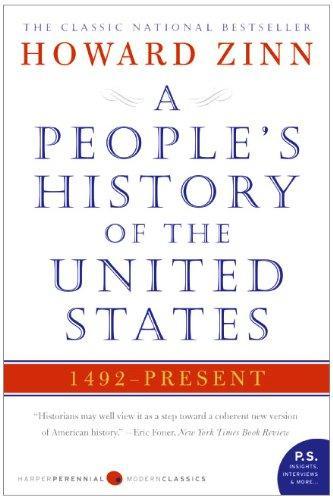
A People's History of the United States
by
Howard Zinn
Published 2 Jan 1977
One way was Taylorism. Frederick W. Taylor had been a steel company foreman who closely analyzed every job in the mill, and worked out a system of finely detailed division of labor, increased mechanization, and piecework wage systems, to increase production and profits. In 1911, he published a book on “scientific management” that became powerfully influential in the business world. Now management could control every detail of the worker’s energy and time in the factory. As Harry Braverman said (Labor and Monopoly Capital), the purpose of Taylorism was to make workers interchangeable, able to do the simple tasks that the new division of labor required—like standard parts divested of individuality and humanity, bought and sold as commodities.
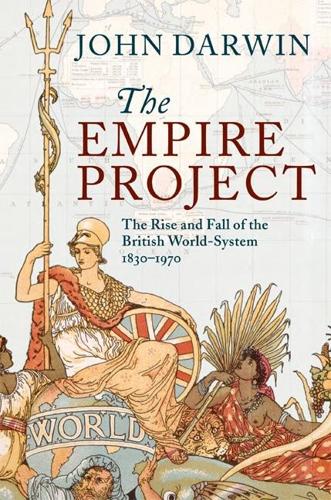
The Empire Project: The Rise and Fall of the British World-System, 1830–1970
by
John Darwin
Published 23 Sep 2009
And, while Germany and the United States moved rapidly into the second generation of industrial products – electrical goods, chemicals, motor vehicles – Britain seemed to lag behind. Technological conservatism and excessive dependence upon ‘old-fashioned’ industries like cotton textiles, signalled an apparent loss of managerial dynamism, the onset of commercial sclerosis, and the triumph of a complacent upper-class amateurism over the scientific management demanded by the scale and scope of modern industry. The implications of failure to compete with the most advanced and successful industrial economies were dire. If the British economy grew less swiftly than its main competitors, British consumers would become (relatively) poorer, and their demand for the commodities of Britain's trading partners in the extra-European world would slacken.
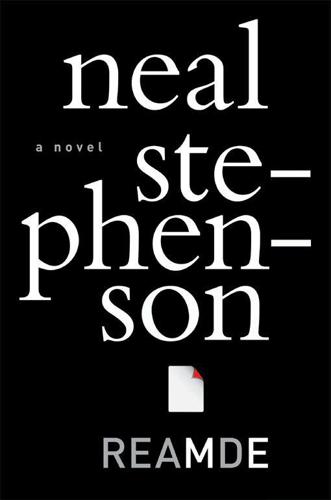
Reamde
by
Neal Stephenson
Published 19 Sep 2011
A chest harness tracked his pulse and sent immediate notification of any flipped T-waves to an on-call cardiologist sitting in an office suite two miles down the road. A defibrillator hung on the wall, blinking green. You laugh, Richard had once said to a colleague, after they’d visited the place, but all he’s doing is applying scientific management principles to a hundred-million-dollar production facility (i.e., Devin) with an astronomical profit margin. “Hello, Dodge!” he called out, only a little short of breath. The system was programmed to keep his pulse between 75 percent and 80 percent of its recommended maximum, so he was working hard but not gasping for air.
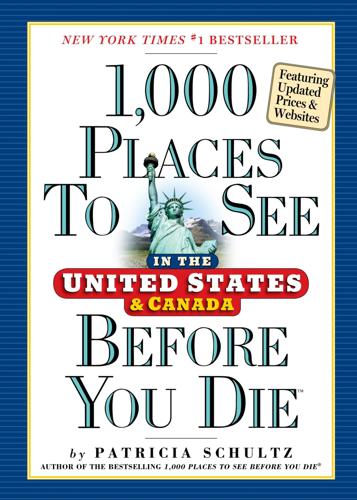
1,000 Places to See in the United States and Canada Before You Die, Updated Ed.
by
Patricia Schultz
Published 13 May 2007
Billings Farm & Museum was established in 1871. The two married in 1934 and spent the next 60 years lavishing money and attention on the town, even burying the utility lines to maintain its pristine 19th-century feel. They donated 550 acres to create Vermont’s only national park, significant for being the first scientifically managed forest, with a 19th-century mansion sitting in its midst. They were also the force behind the Billings Farm & Museum, known for its blue-ribbon Jersey cows. In 1969 Laurance and Mary built the town’s centerpiece, the rustic but genteel Woodstock Inn and Resort, on the village green. This 142-room Colonial Revival resort features top-drawer amenities like a 41,000-square-foot health and fitness center, horseback riding, and golf.